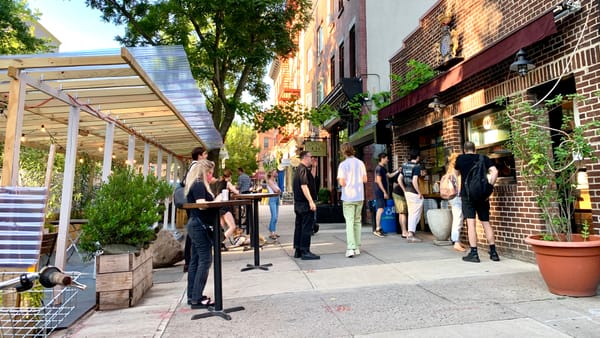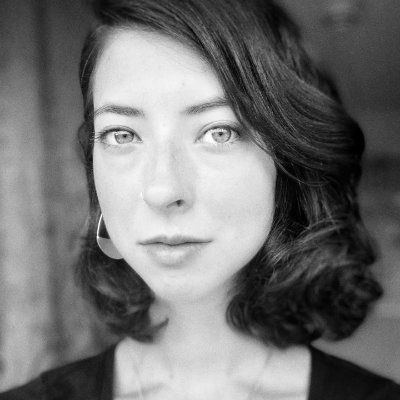A bench is not just a bench. The impact of something as simple as a bench can be powerful and catalytic.
Its presence can stimulate the livelihood of an entire corner, expand its influence to the whole intersection, and encapsulate a full block by triggering changes further down the sidewalk. In this way, one bench can change a whole community.
Placing a public bench/seat on a corner begins to establish a basic, unequivocal statement that the street belongs to the community — a street then transcends its role as a through-way and becomes something for people to sit in and enjoy. This stands in direct contrast to the norm, in which street corners are often designed as places void of anything that might invite someone to stick around.
In most cities, the places where we cross paths are rarely the places where we connect. Think about it – an intersection is not often a pleasant place to stop and catch up. That's because in our car-centric world, these places are designed to maximize the throughput of cars rather than the social lives of people. However, by shifting our focus from the intersection to the corner, creating a destination serving people from all directions, we can connect neighborhoods and entire communities.
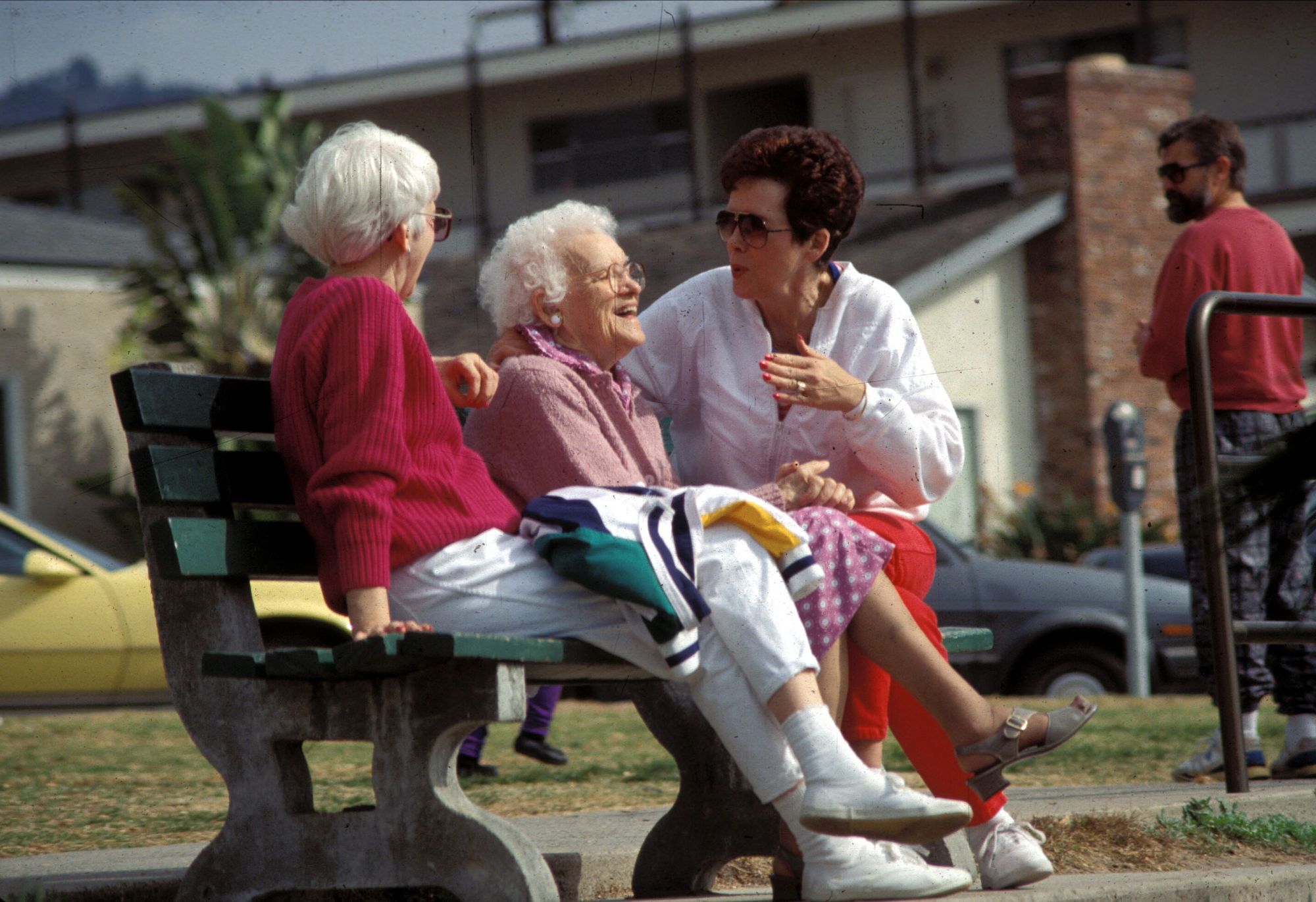

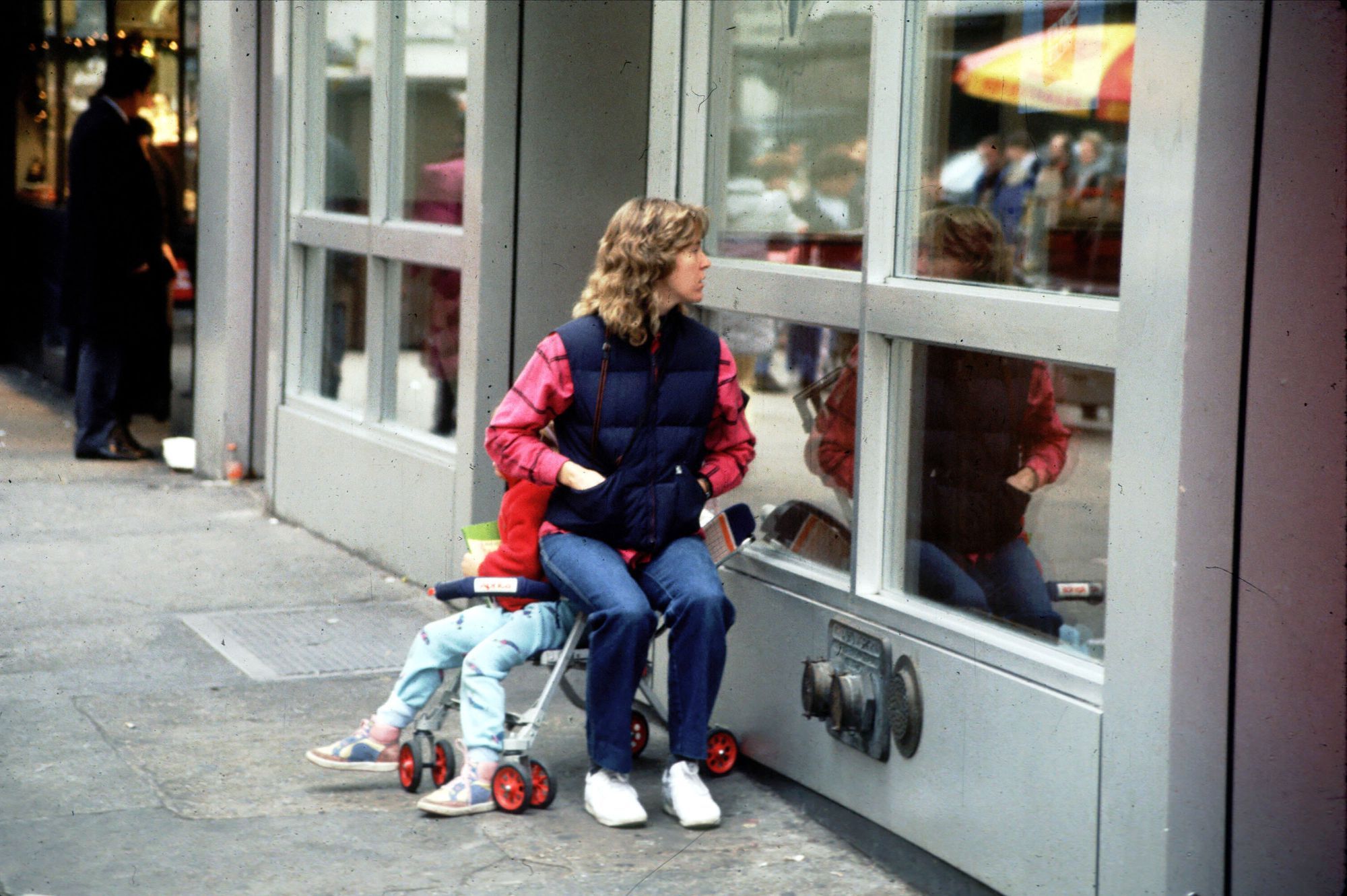
The Impact of a Single Bench
In an era where social isolation underlies so many of our society's challenges, creating places that invite lingering and encourage interaction at the street level is crucial. This means rethinking our streets as places that draw us outside while also enabling us to interact, socialize and feel like part of a community.
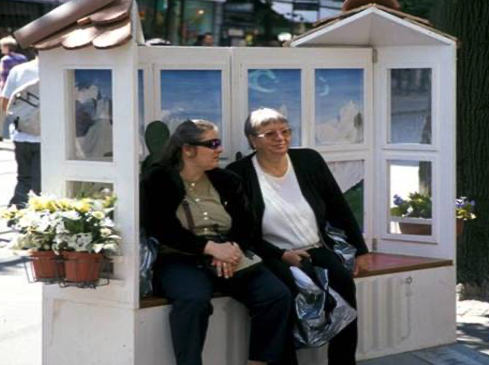
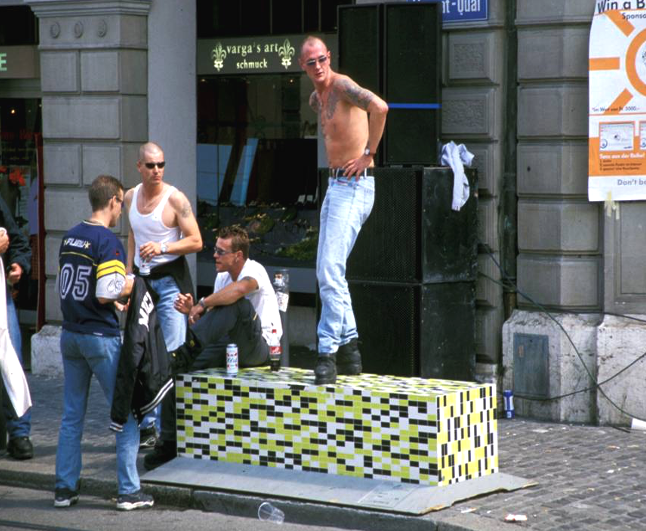
Zurich, Switzerland
A bench on the corner can be just the catalyst that inspires and leads the systemic change we need. In order to restore life to communities everywhere, our mantra is that "we need to turn everything upside down to get it right side up; to get from inadequate to extraordinary." While most intersections ask us to keep moving, putting a bench on the corner invites us to stop and connect more with the place and those in it.
If we can get a bench on every corner, we can shape our communities around safe, social places to gather. We can bring people to the forefront as a city's most important residents again, instead of giving that role to cars. By starting with a bench, we can trigger a much bigger transformation that would shape neighborhoods and entire communities.
In most communities, there are far too few examples of good public seating, especially on the key location of corners. Making sure that we have enough places to sit conveys a powerful message of welcome, of comfort, and of basic respect for the people who spend time in a particular place.
Not Just Any Bench
We need more seating everywhere, but any old chair or bench won't do; public seating must be ample, comfortable, inviting, flexible, and accessible. There are all kinds of different bench designs and each one encourages different kinds of behaviors and activities. Therefore, the specific type of bench we put in a particular place matters.
Benches are like people. They come in all different shapes, sizes, and personalities. Seating looks simple but upon closer inspection it can be beautifully complex... every detail, from arm rests to seating width, impacts what kind of behaviors will occur there. It's important which way the bench faces and what happens behind it, how many sides it has and how comfortable its materials. Other details in its vicinity are also key – bollards, trash cans, shade, amenities like corner cafes, food carts/kiosks, and assets like lighting, art, etc.
The Different Kinds of Benches
1) Standard Benches
The standard bench is particularly good for people watching. This bench is usually fixed to the ground, meaning it can't be moved or adjusted, and one-directional, meaning that people who sit on it all face forward, especially because the back and side bars force them to. It doesn't encourage us to face each other, but it does encourage watching the people passing by.
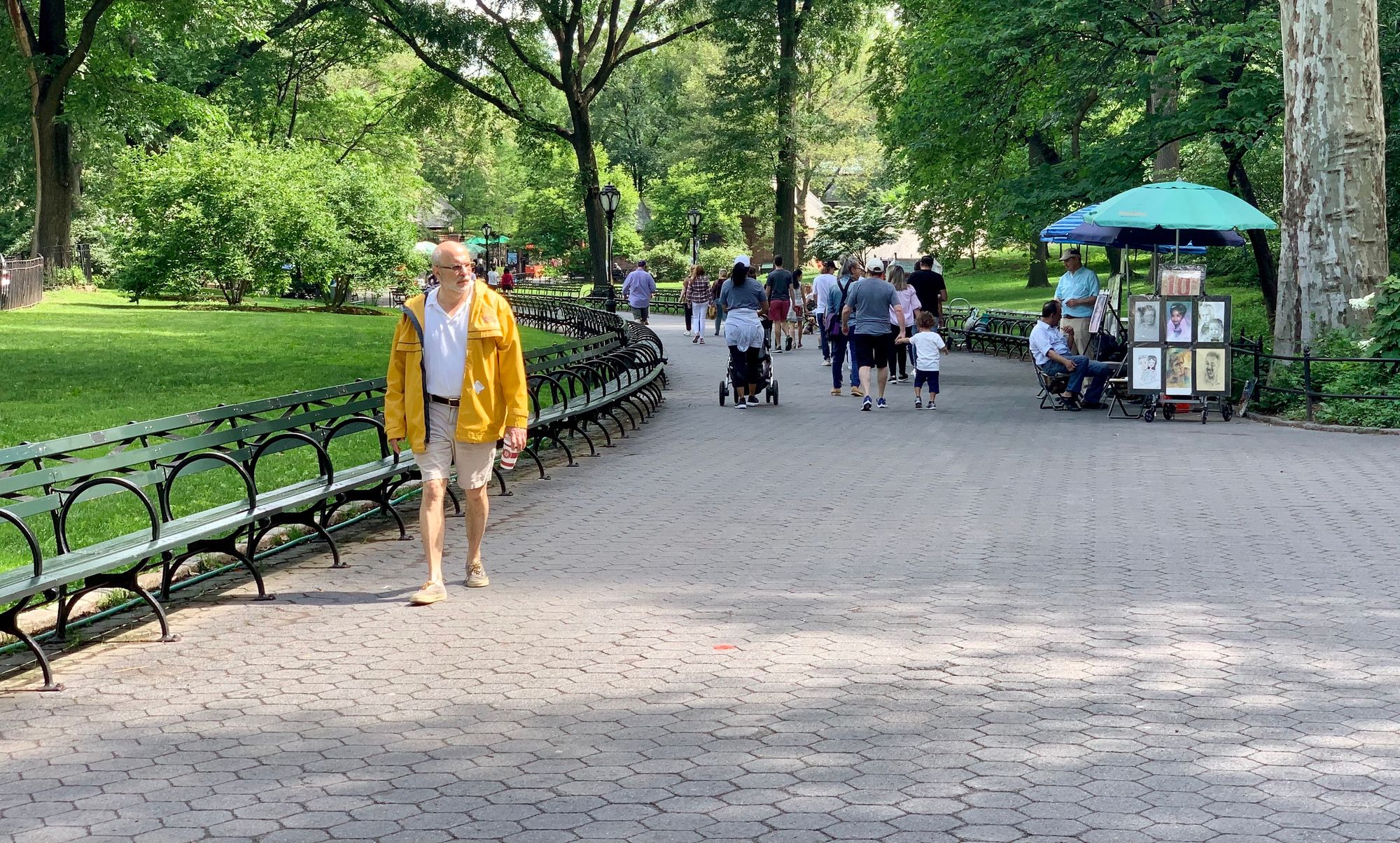
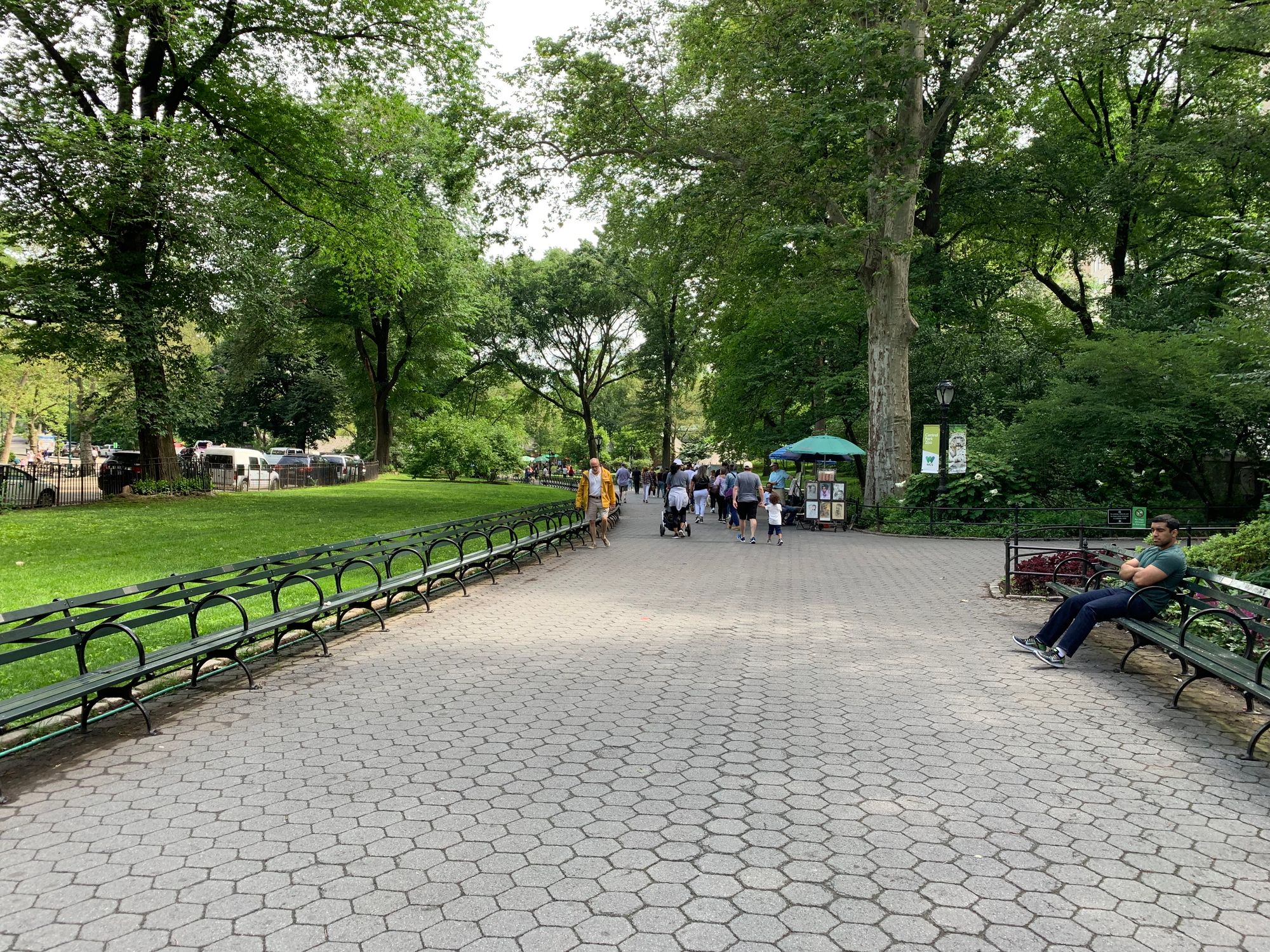
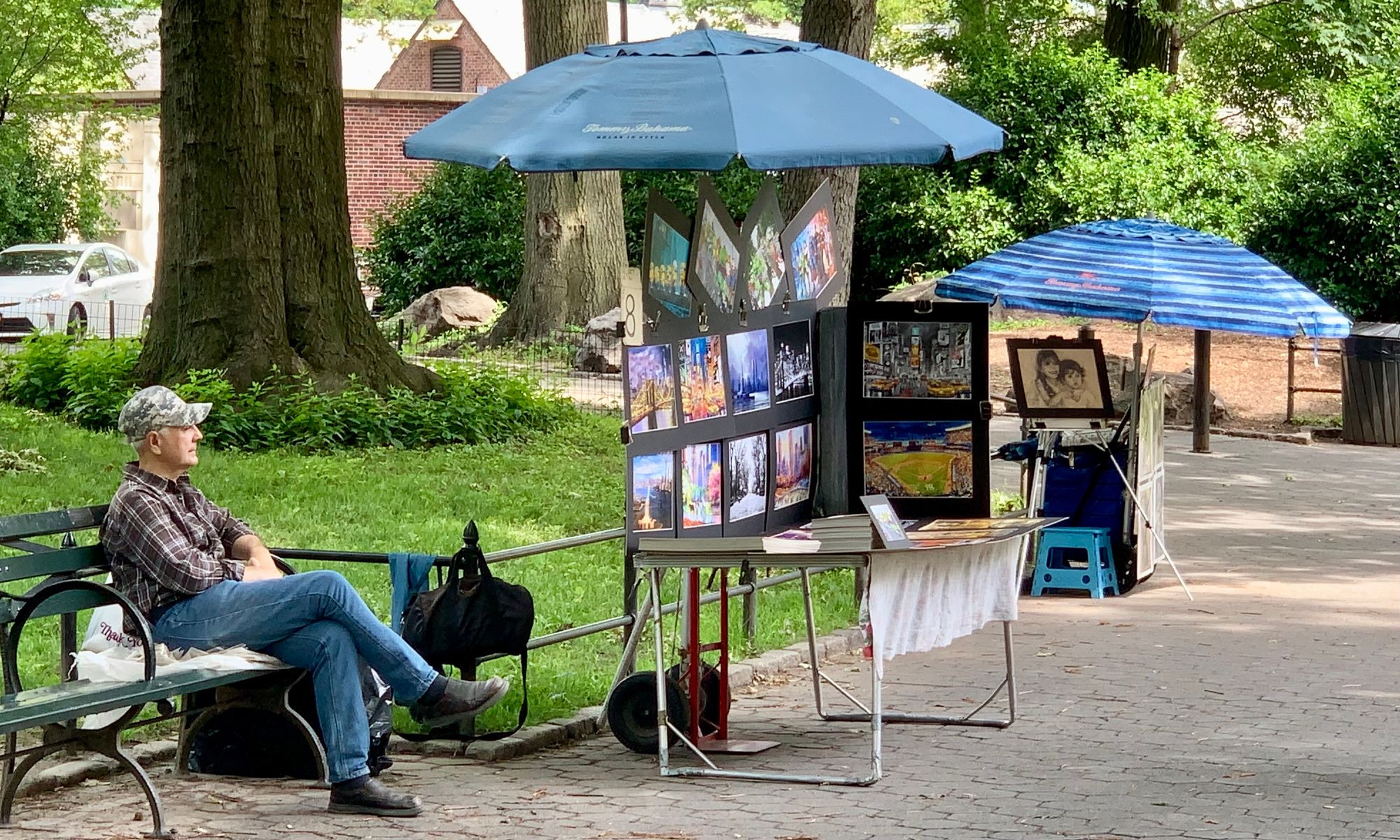
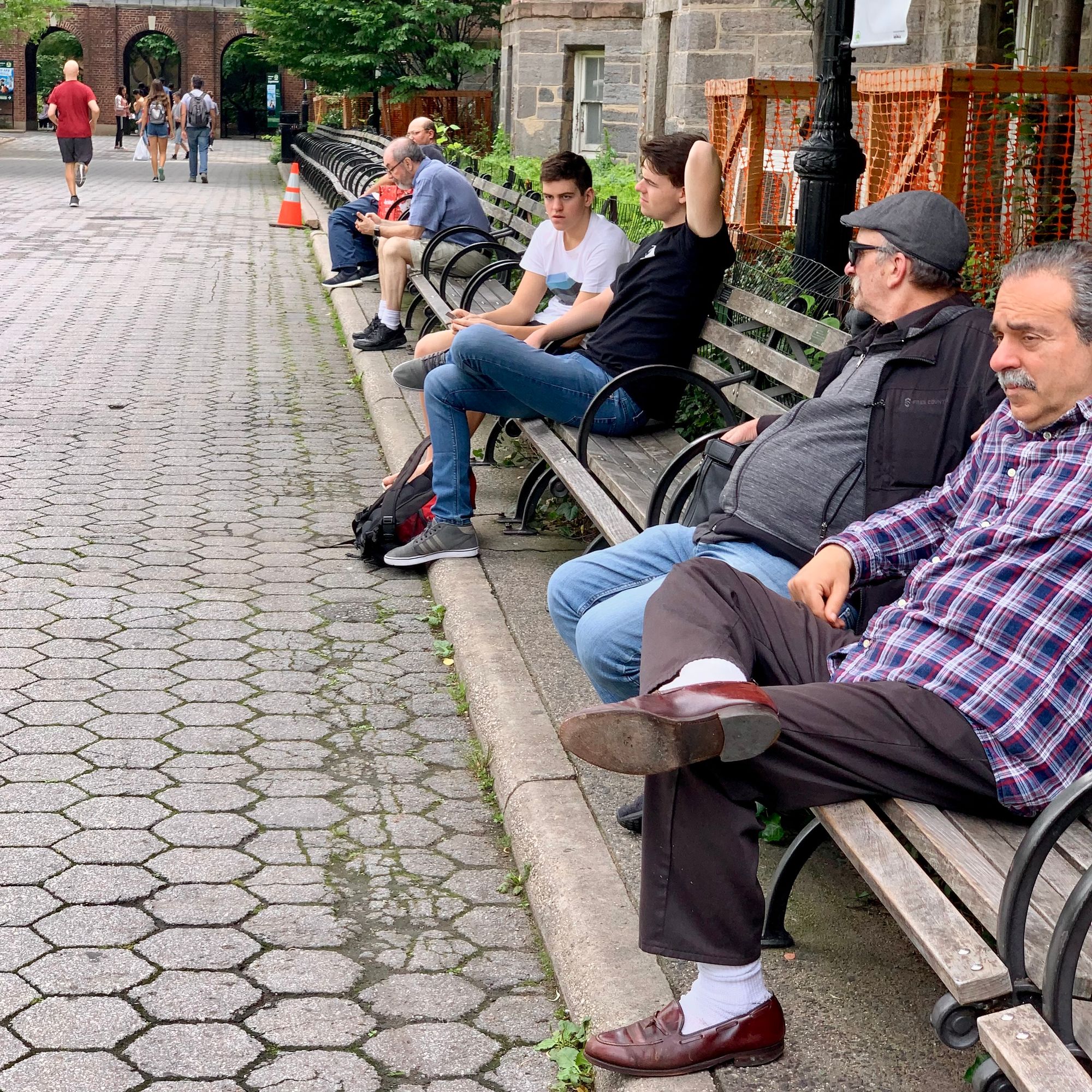
The standard bench often lines walkways...here are some in Central Park in New York City
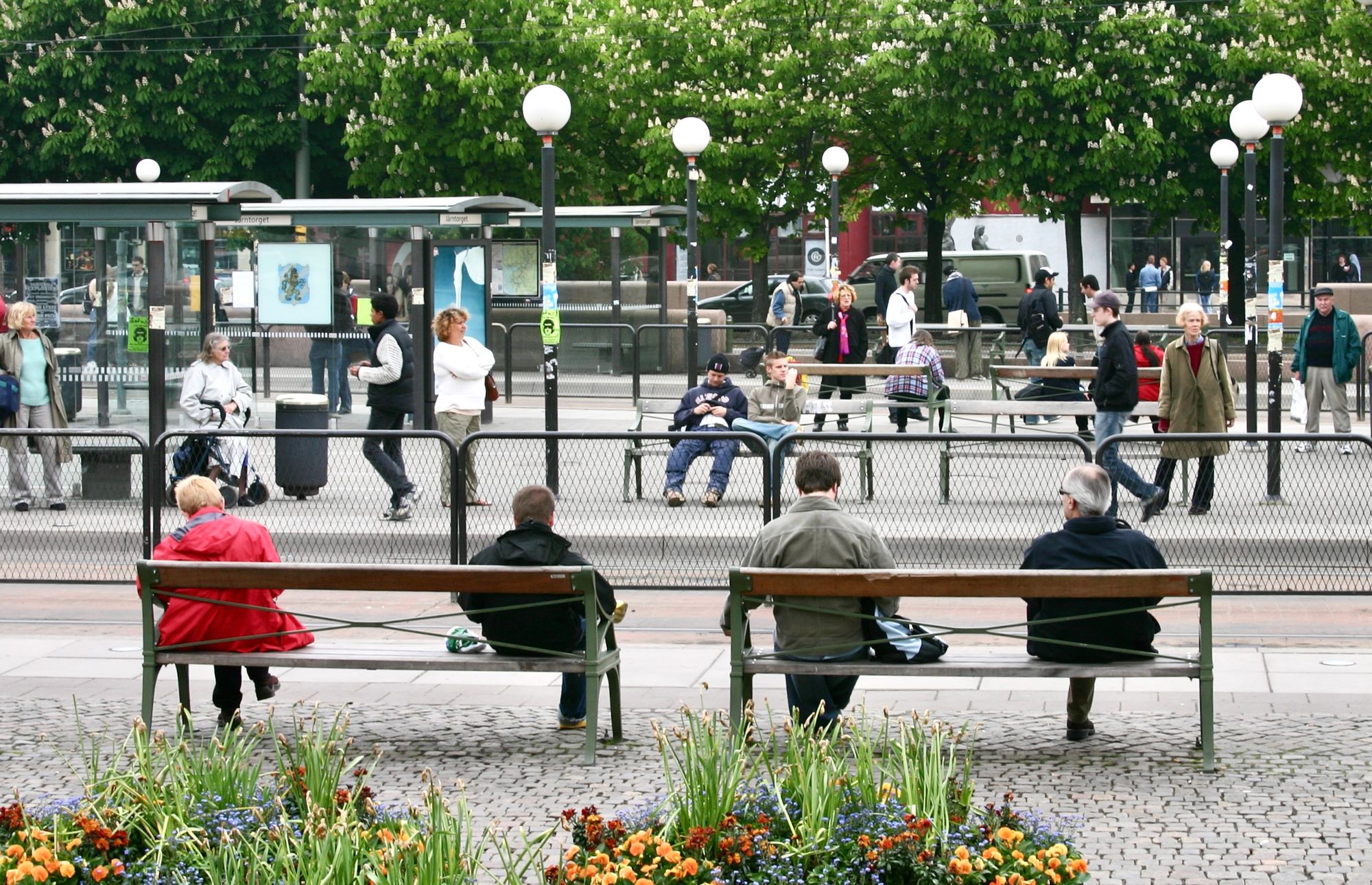
Benches facing a tram line in Copenhagen
The standard bench is not the most conducive to social life. With its one-directional fixed design, it has only one configuration. It provides spaces for multiple people but it forces them to sit side by side, both looking forward, which is especially awkward if the people do not know each other.
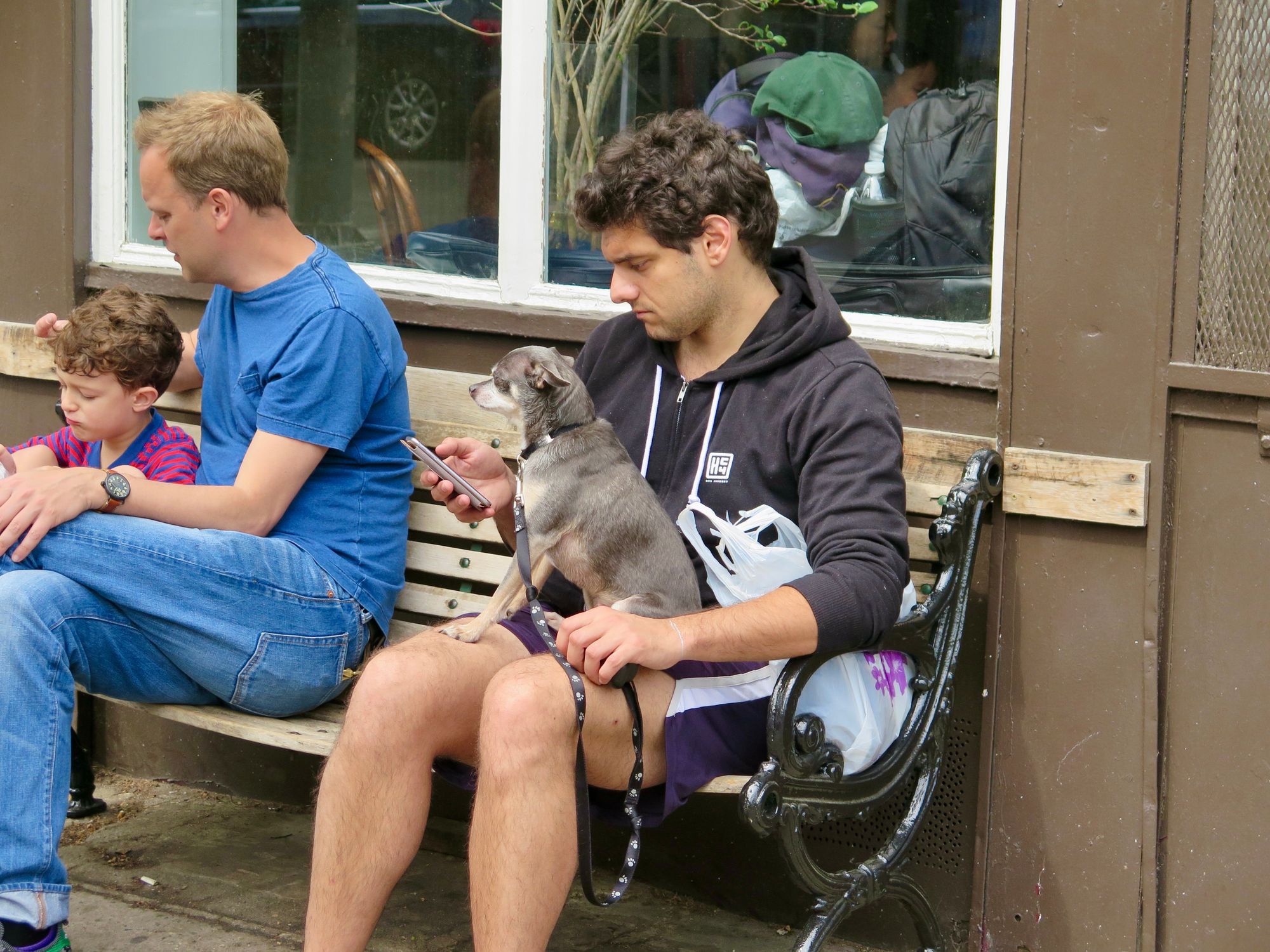
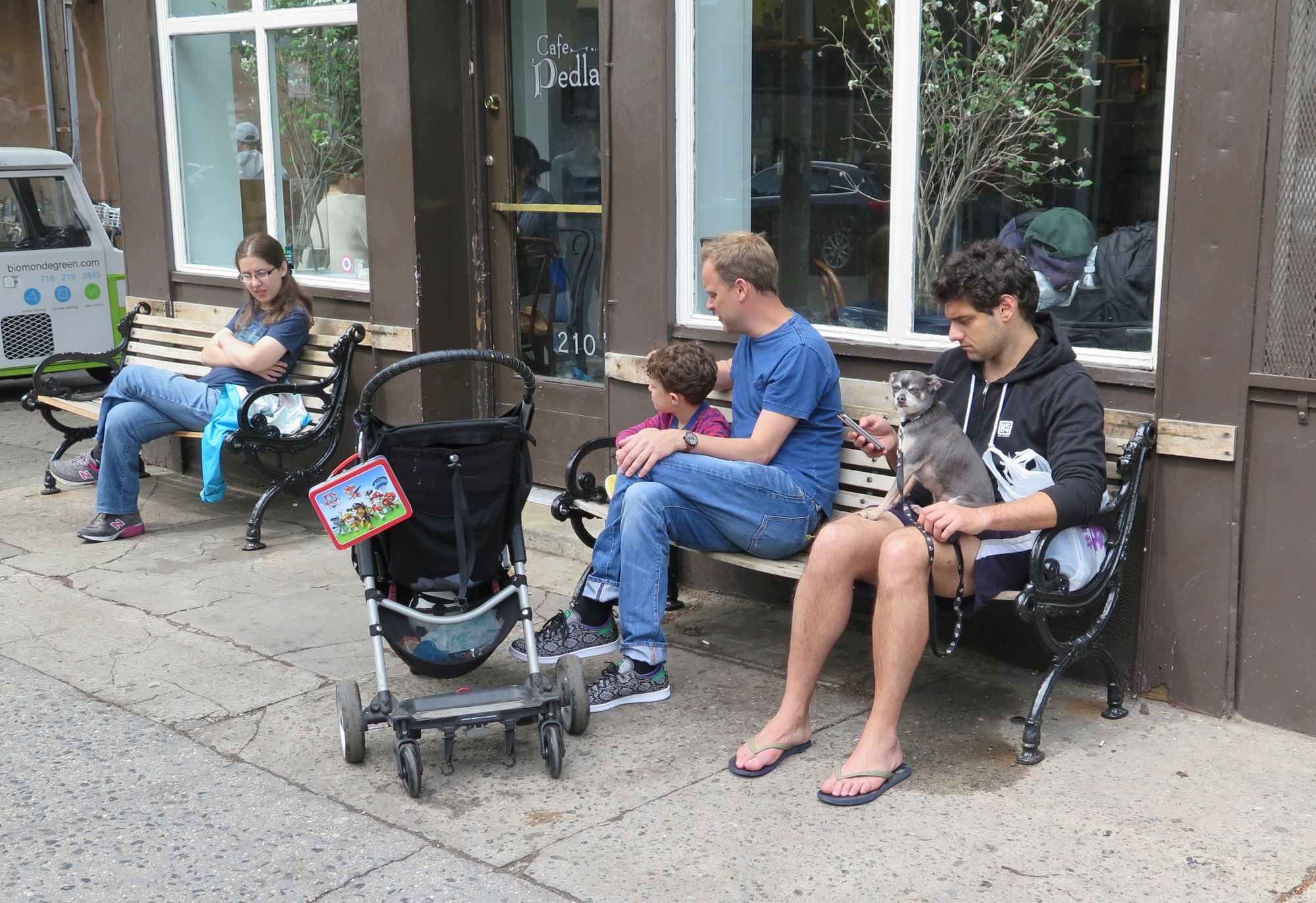
The standard bench is generally used to watch the action on the sidewalk
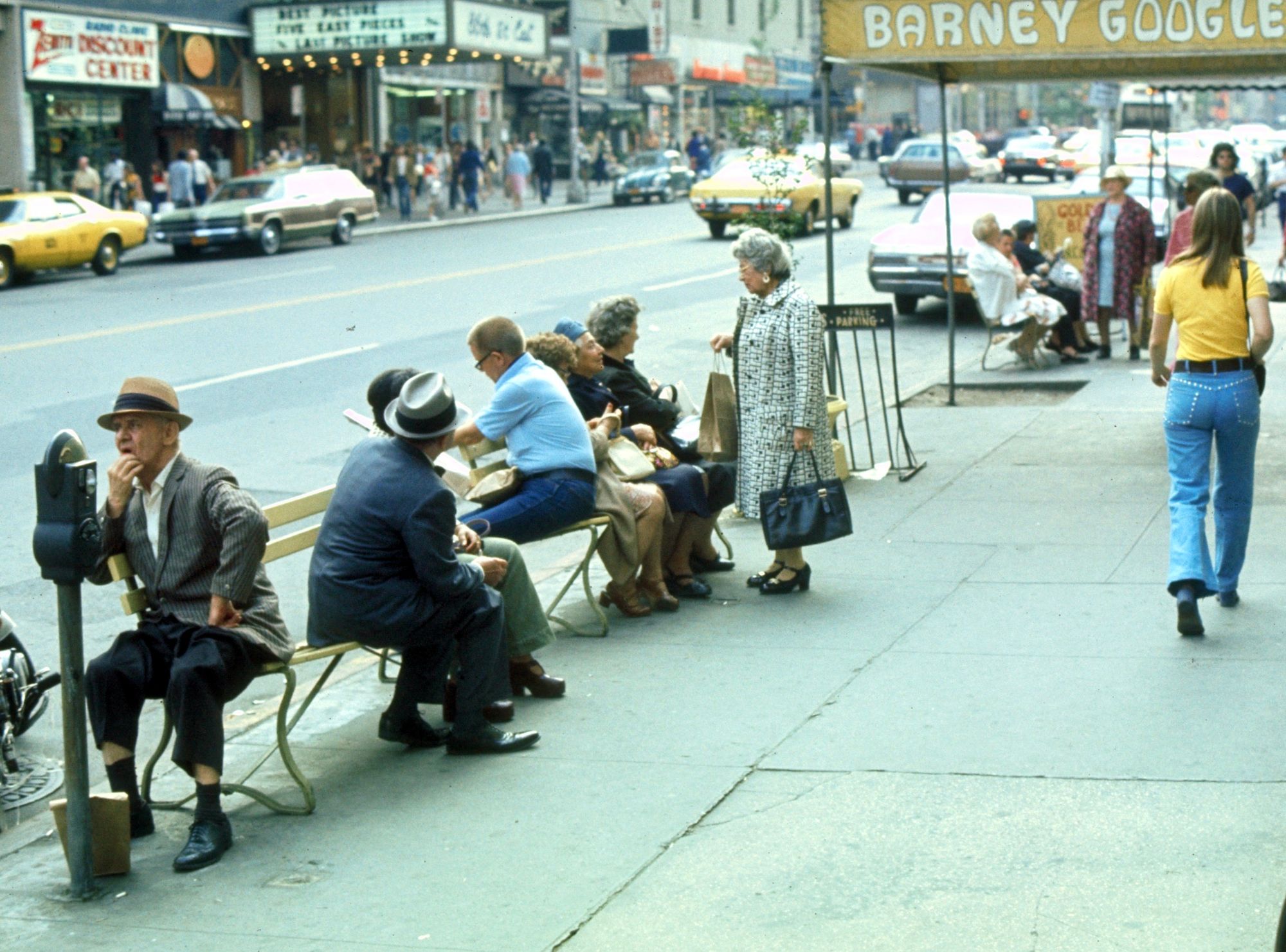
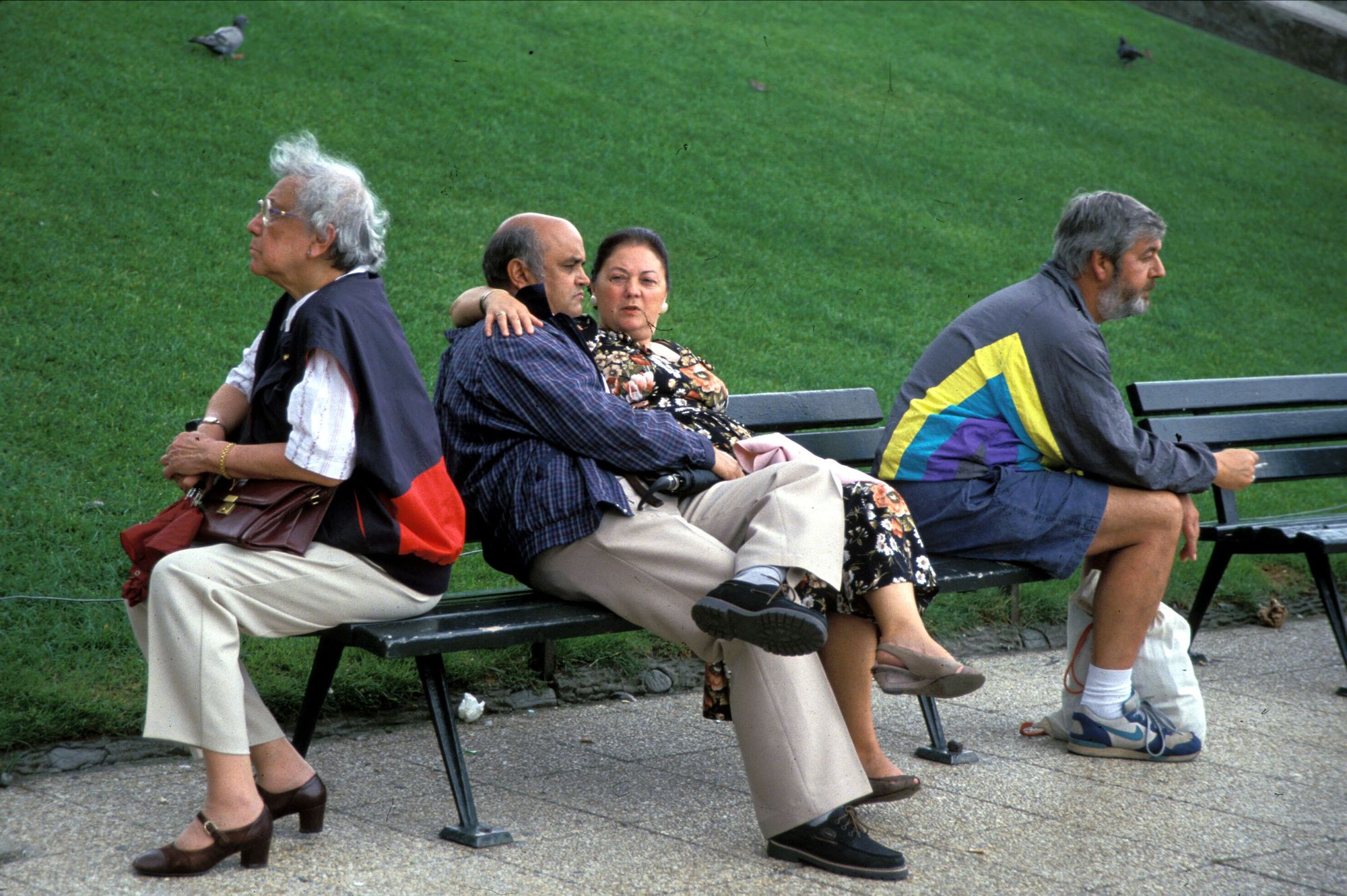
The standard bench can be especially awkward when users want privacy
Connecting and affection
Nonetheless, the standard bench happens to be a perfect spot for affection. While its short length forces people together (which may be uncomfortable for strangers), it is perfectly cozy for lovers.
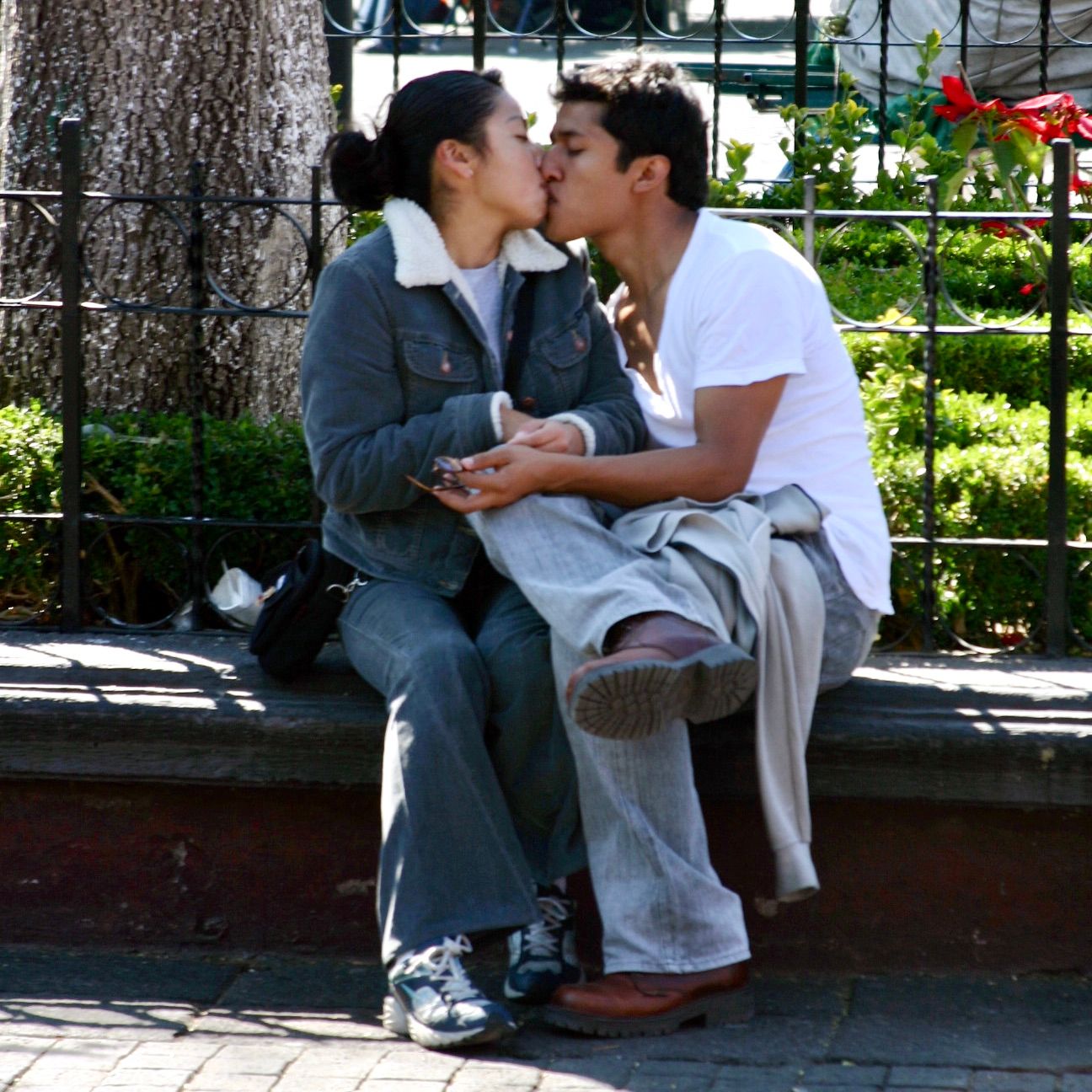
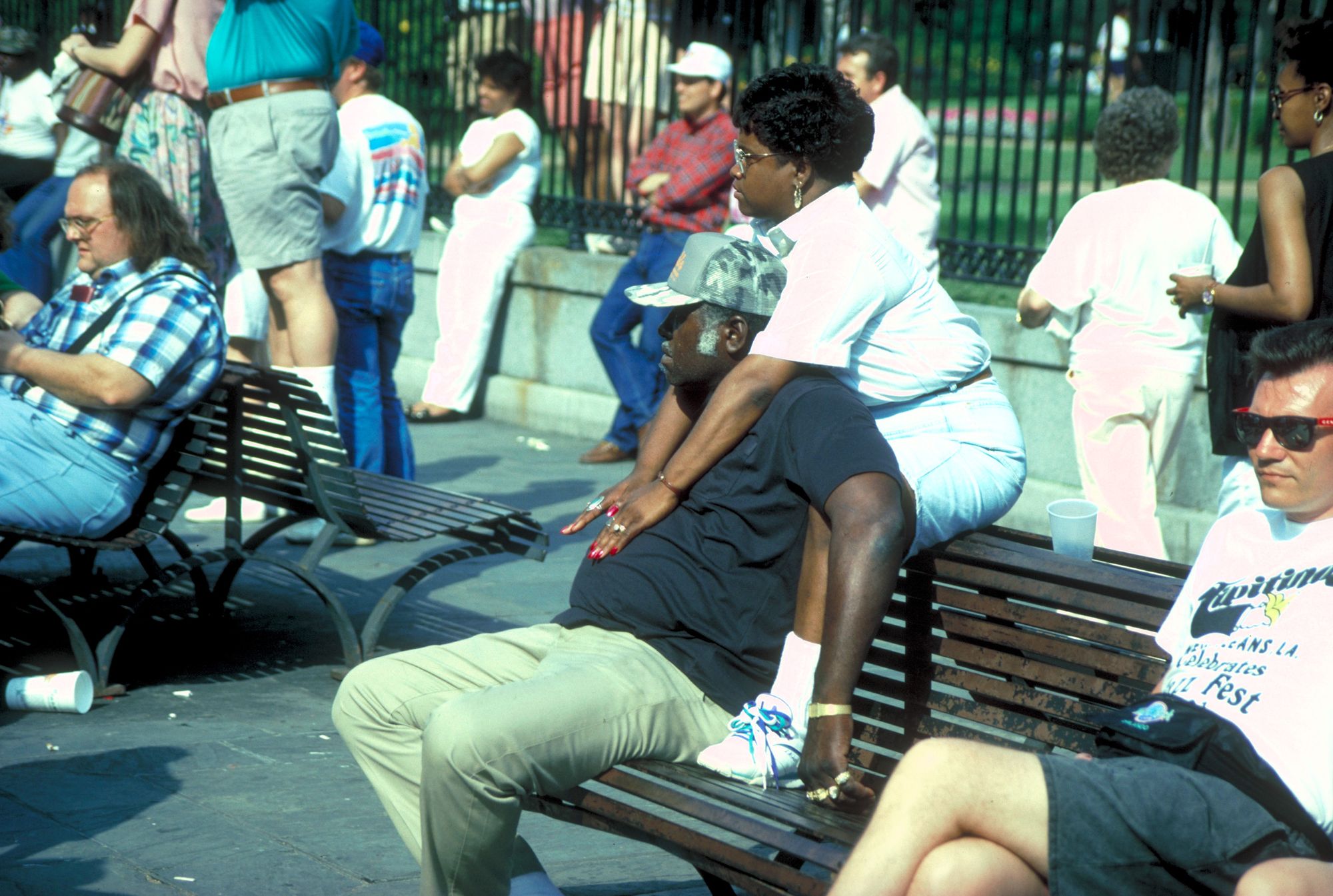
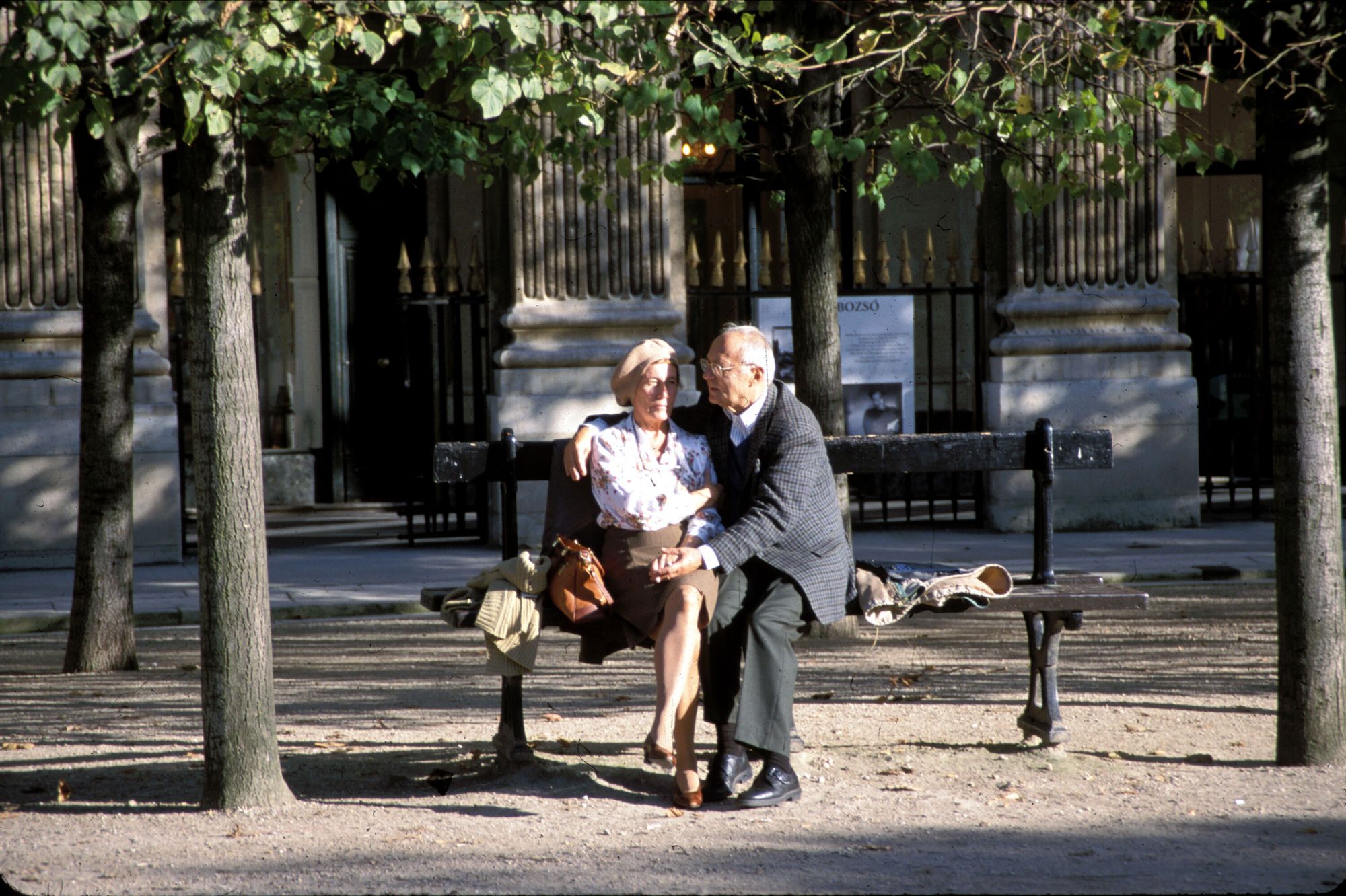
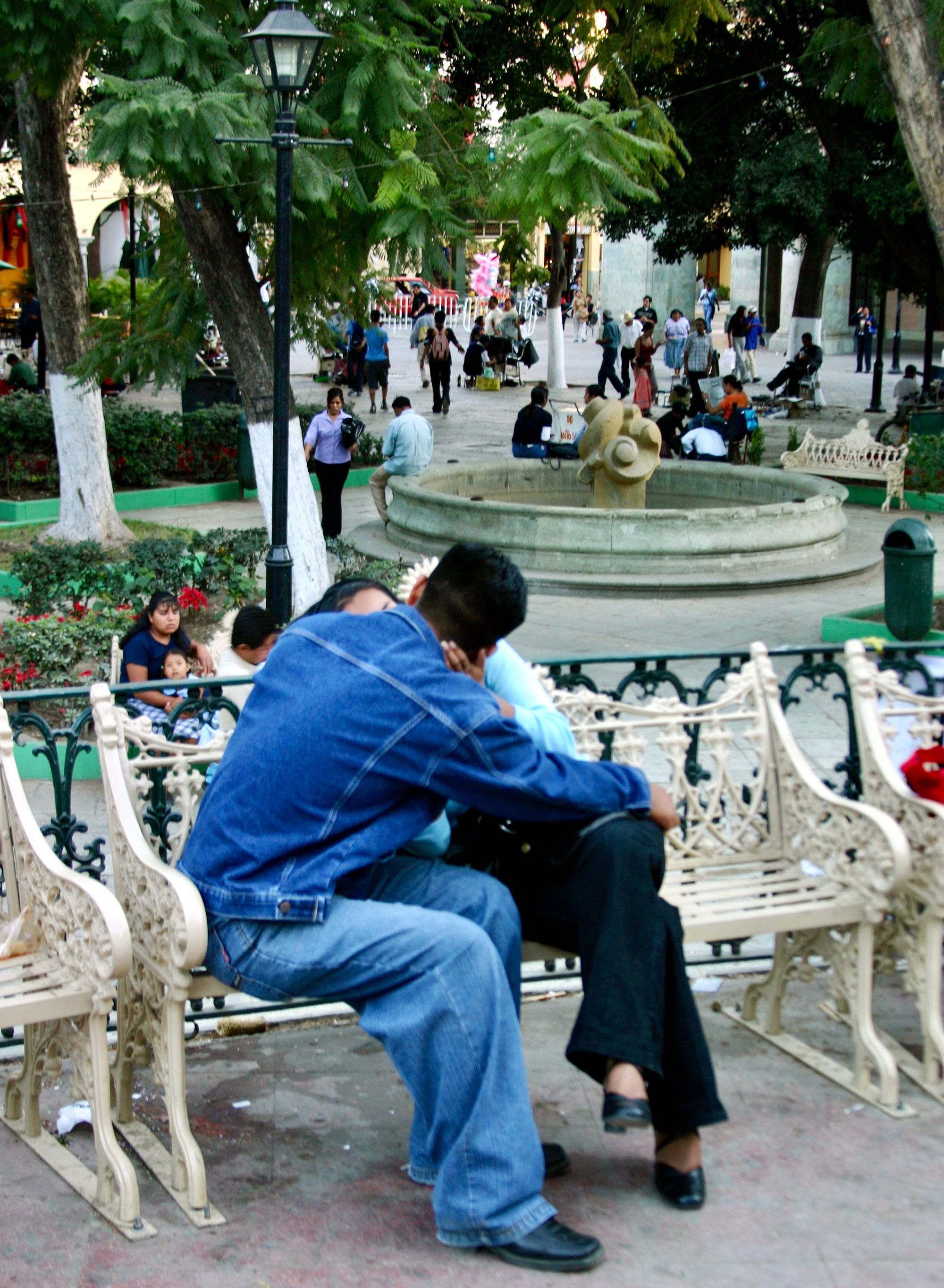
How wide should the standard bench be?
Different widths invite different configurations of people. Short benches invite people who know each other to come sit together. Longer benches are welcoming for people who don't know each other to share the seat because they don't have to intrude on each other's space.
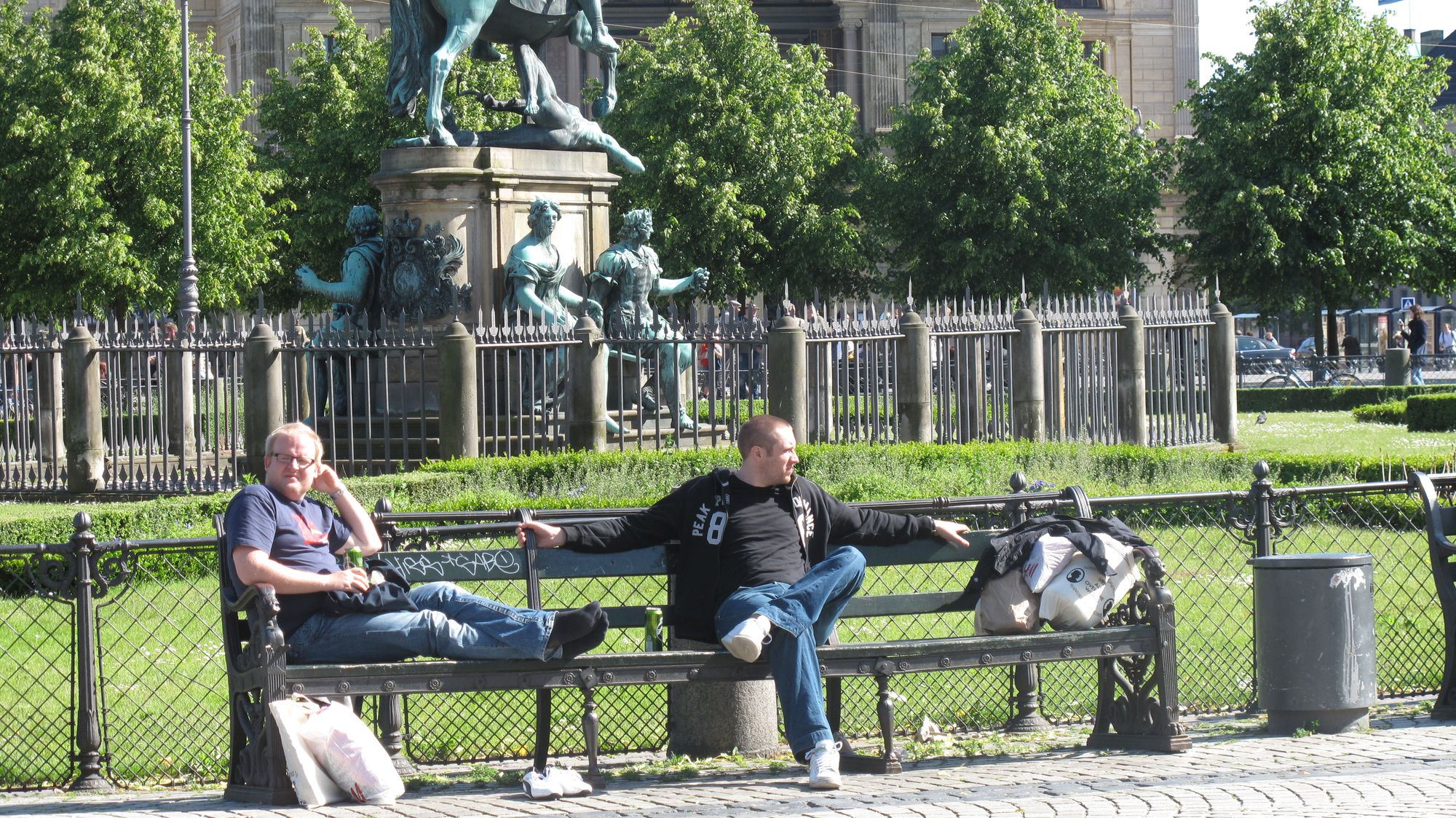
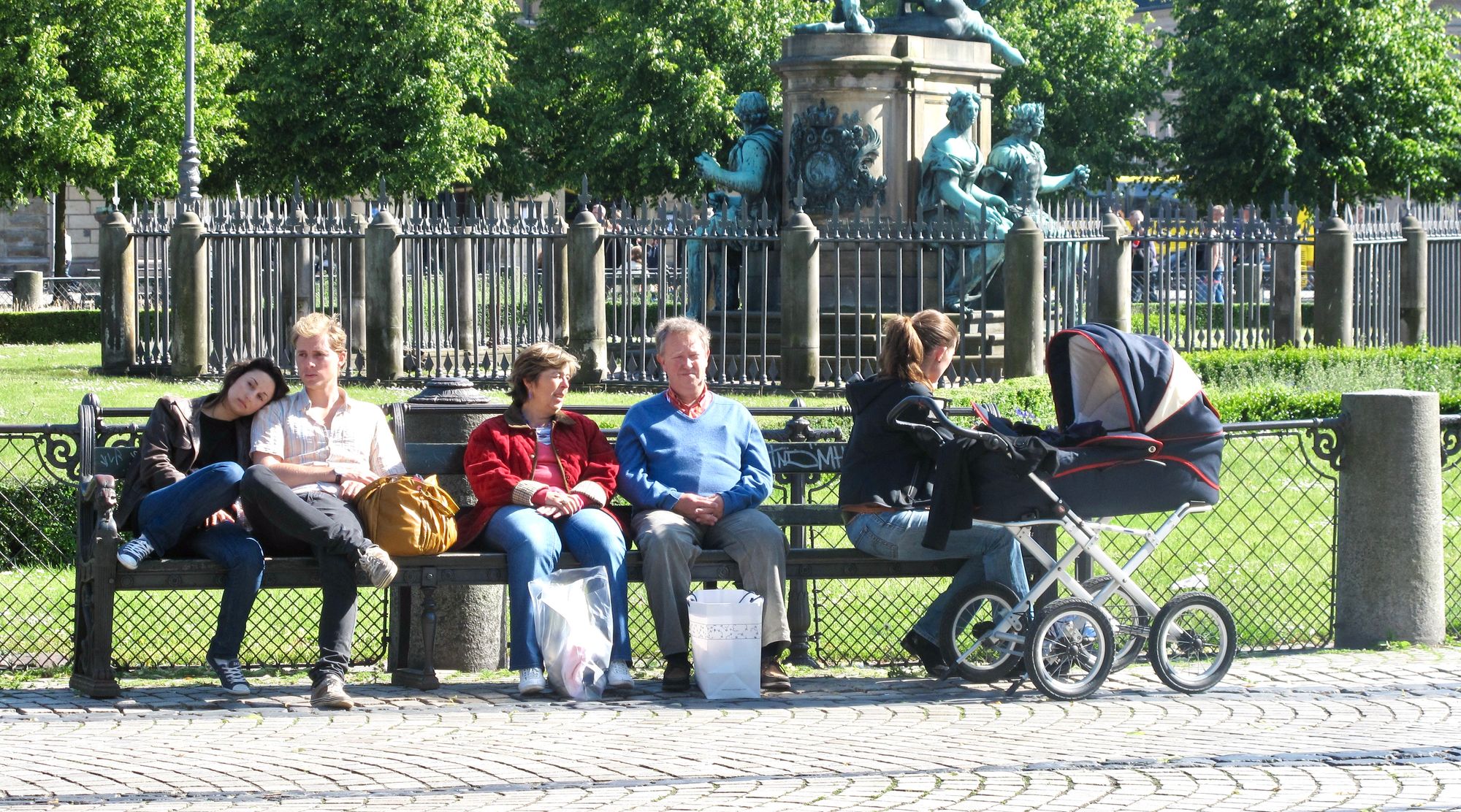
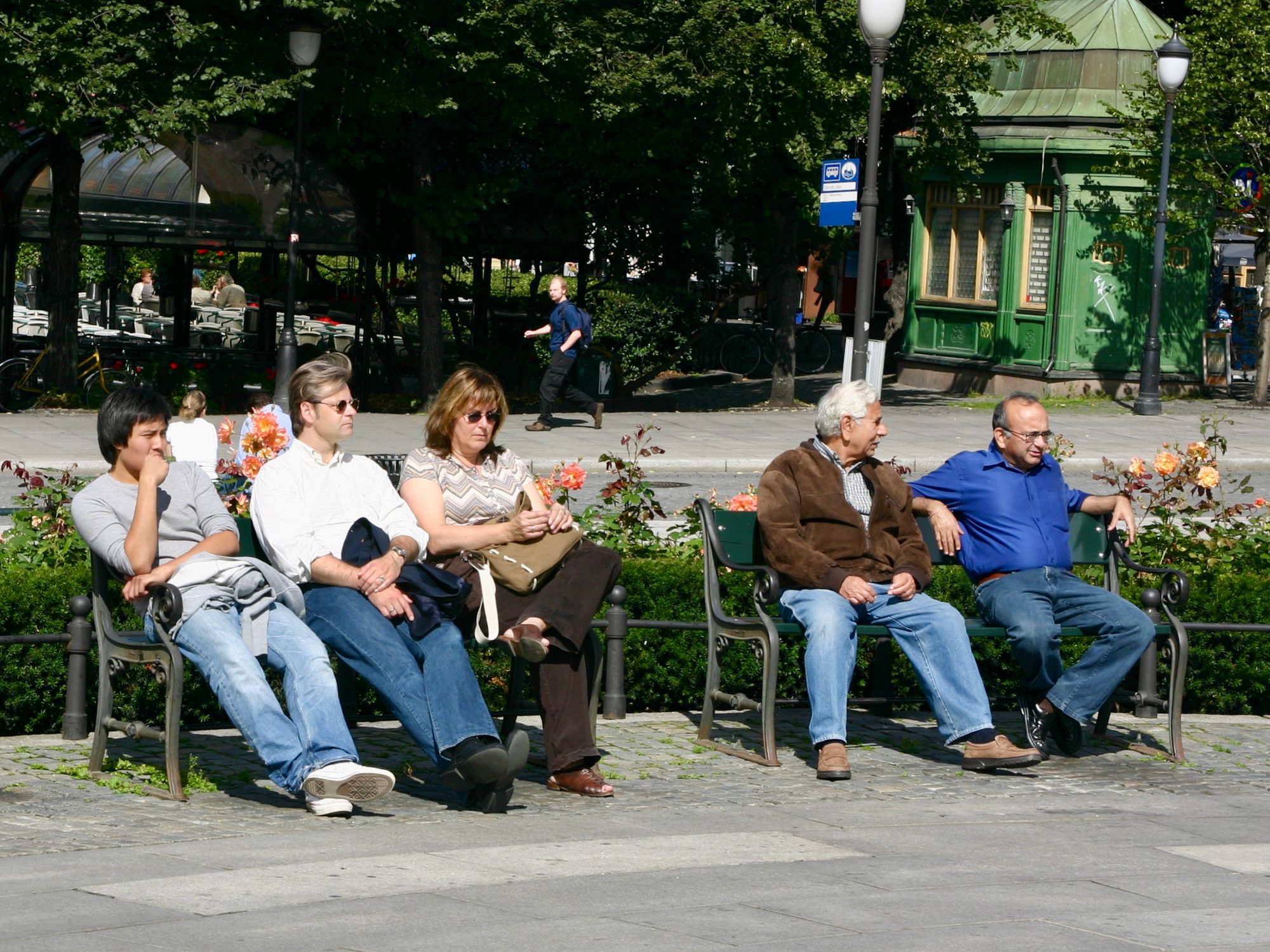
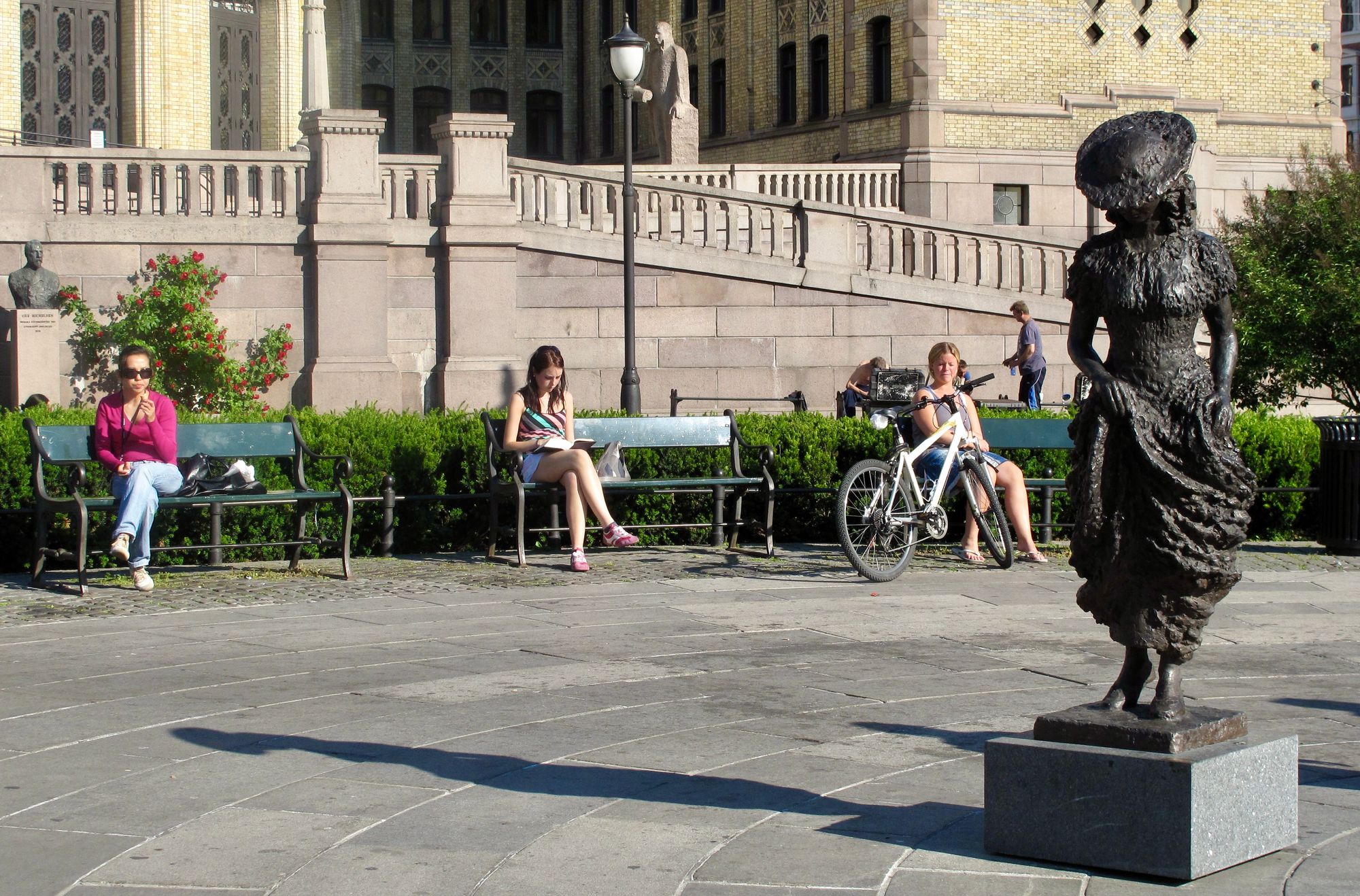
The long bench on the upper left is "full" with only two people because they are claiming a wide bubble of personal space with their body language...however, this length of bench can support as many as 6 people as seen on the upper right corner, as long as they're willing to sit a bit snugly. Similarly, the shorter bench on the lower row can technically support three people, but it feels like it's overflowing and crowded. In the right image we can see how with just one person, shorter benches already feel fully occupied.
2) Segmented Benches
By creating the feeling of separation through the use of an arm rest, the segmented bench can be the same length as the standard bench but feel more comfortable for strangers to sit side by side. Two groups can have their own space on a single one of these benches, even though they are technically as close to each other as they would be on a standard bench.
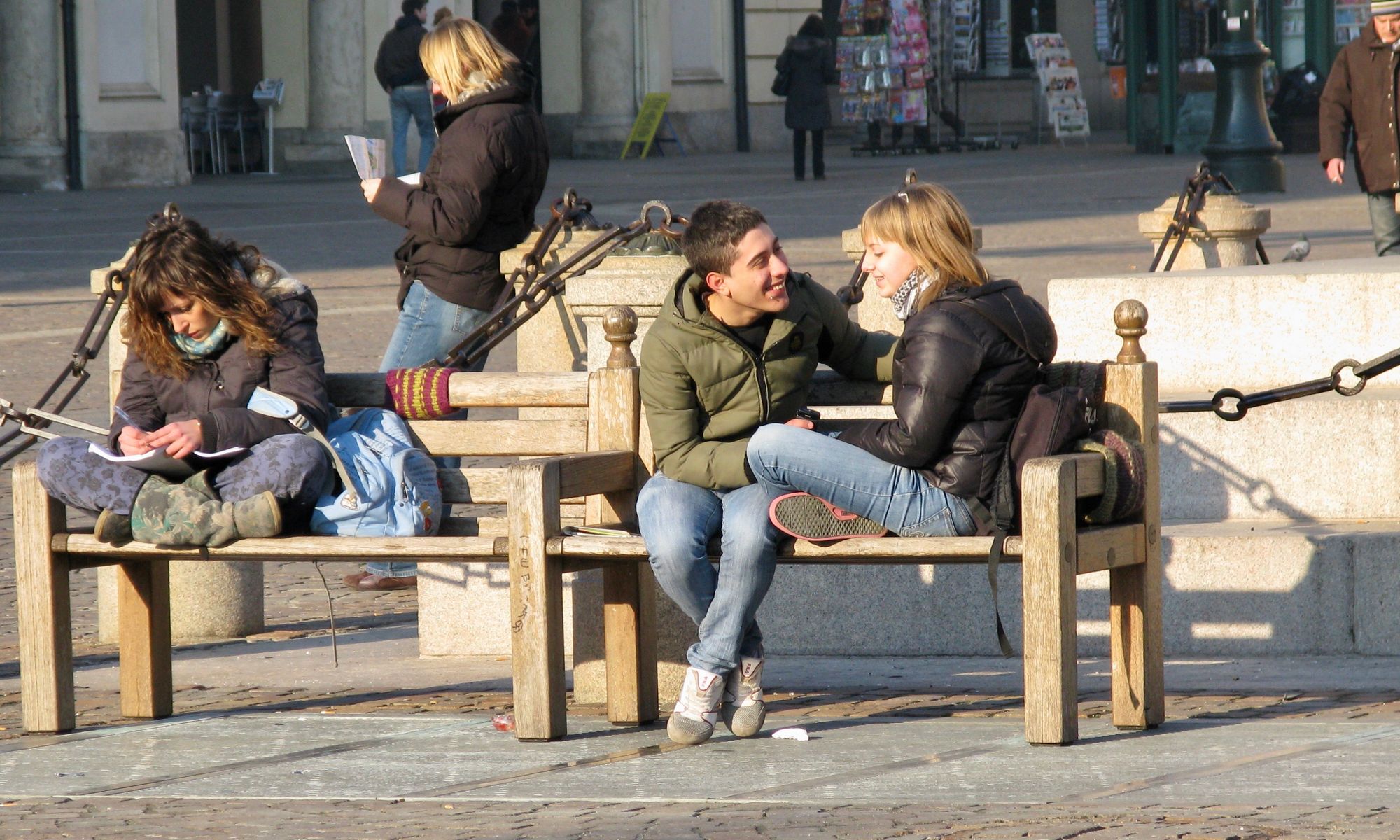
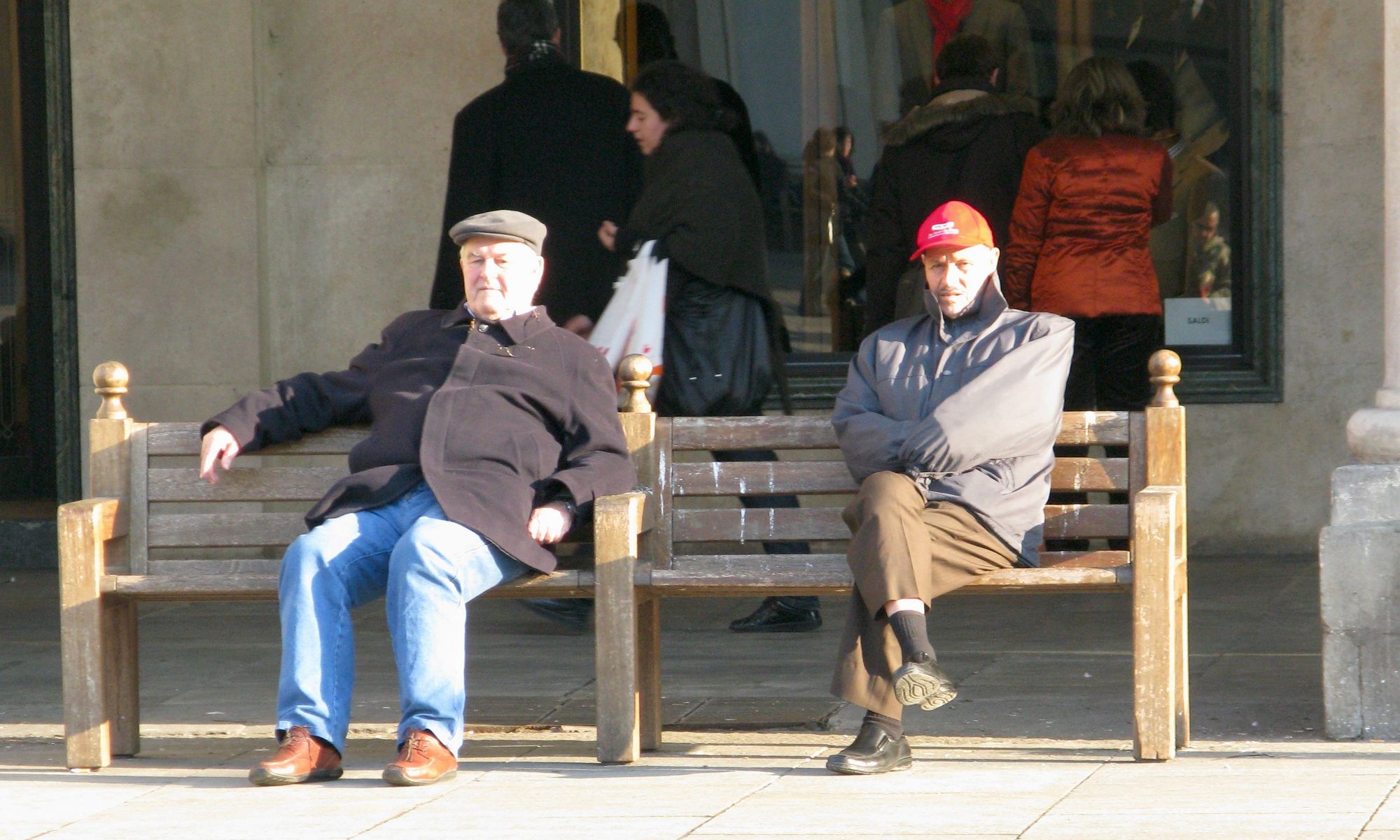
3) Movable Seating
Long, continuous bench vs. movable seating
The image below on the right clearly demonstrates how people separate themselves and space themselves out on a standard bench. It's human nature to want some personal space. When seating is inflexible, like with a standard bench, people create their personal space through distance. But with movable seating, they can create the space in other ways – through changing the angle of the chair or by clustering with friends' seats, positioning and moving their chair however they like.
Movable seating is so popular because it gives people a sense of control over their environment. Ironically, the flexible seating in Luxembourg Gardens often brings people closer together than the standard benches do because it allows people to position their seats however they like – letting them find what's comfortable and not forcing them to be stuck in a position they don't want to be in. Flexibility is important to people.
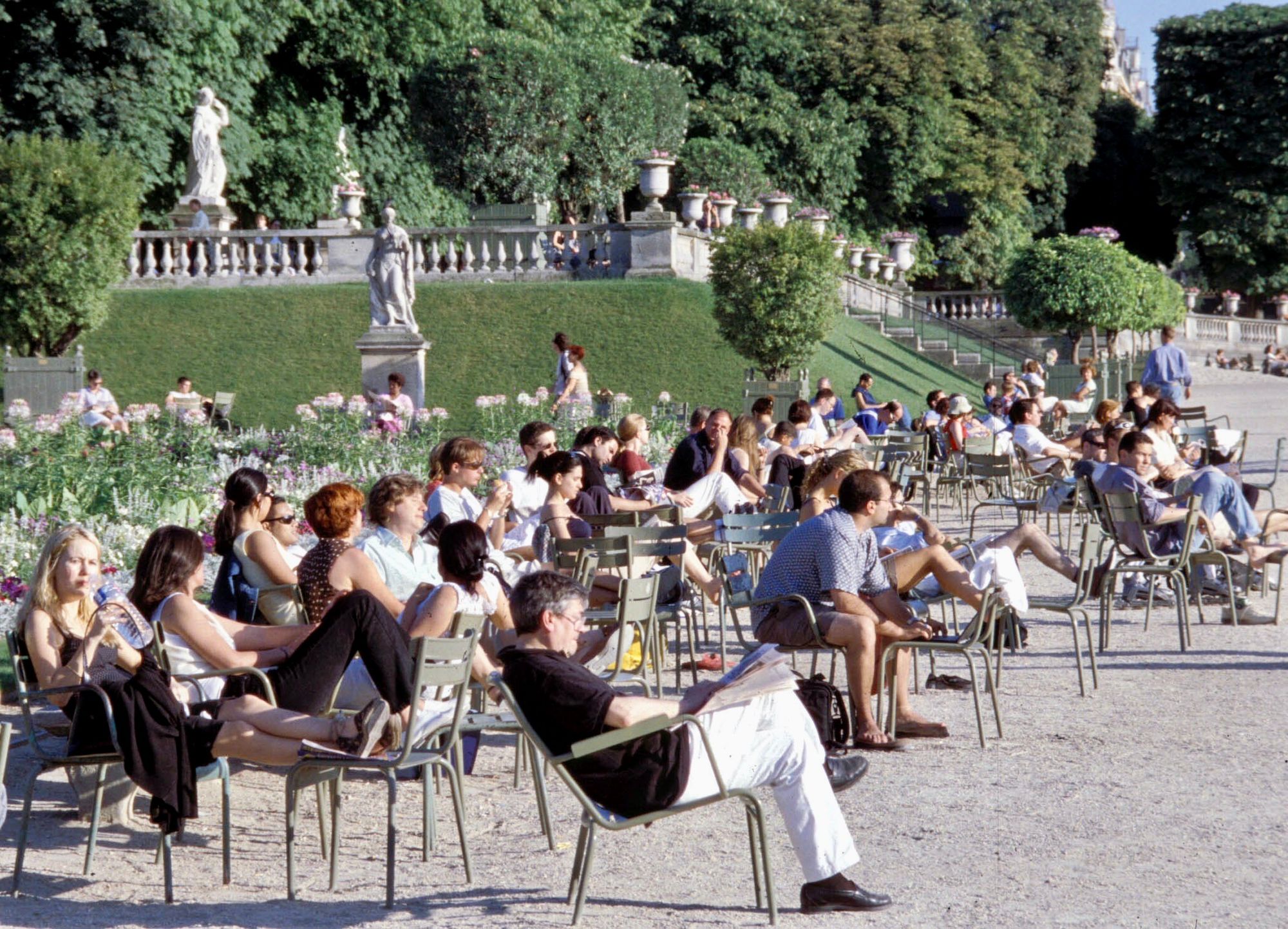
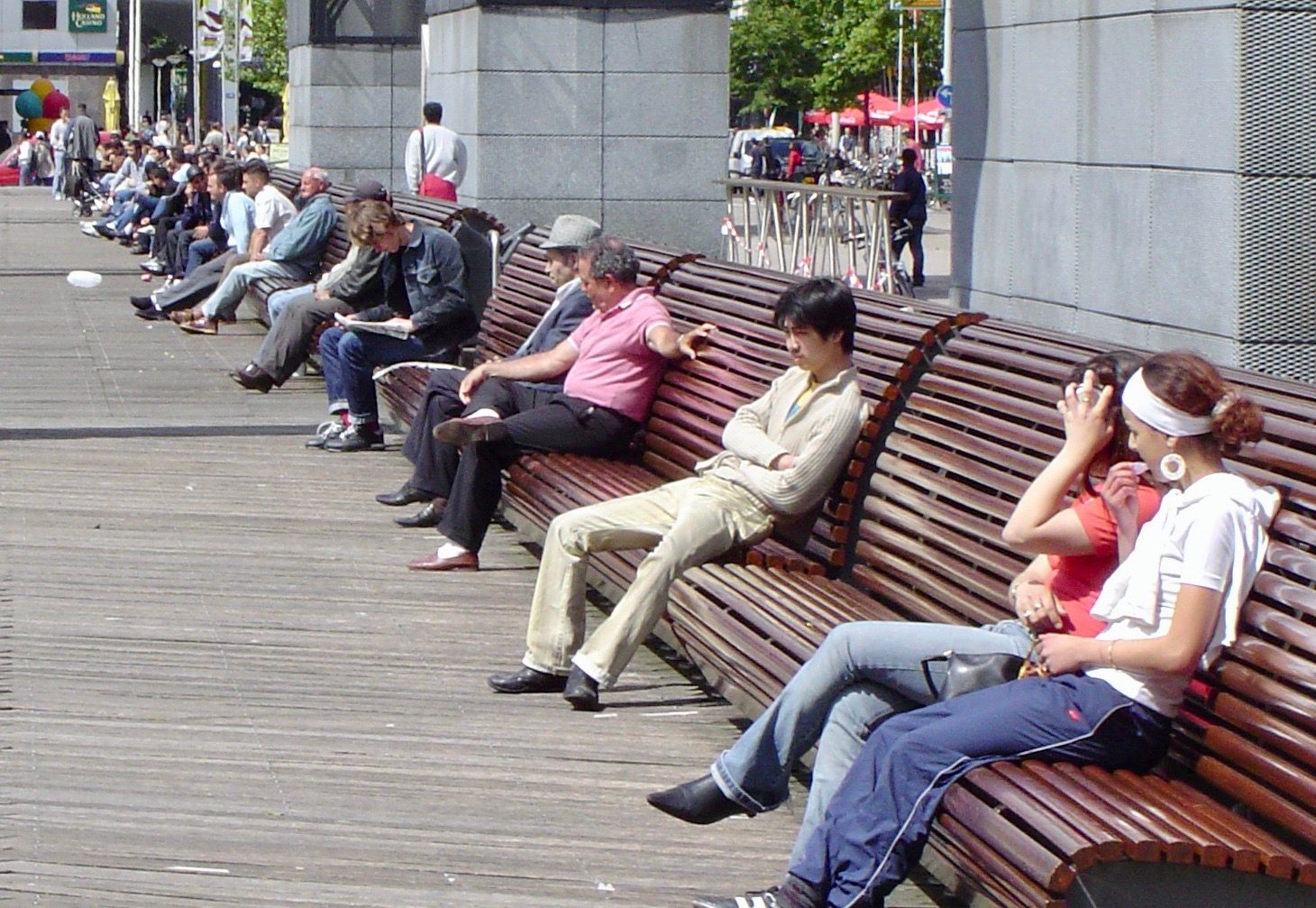
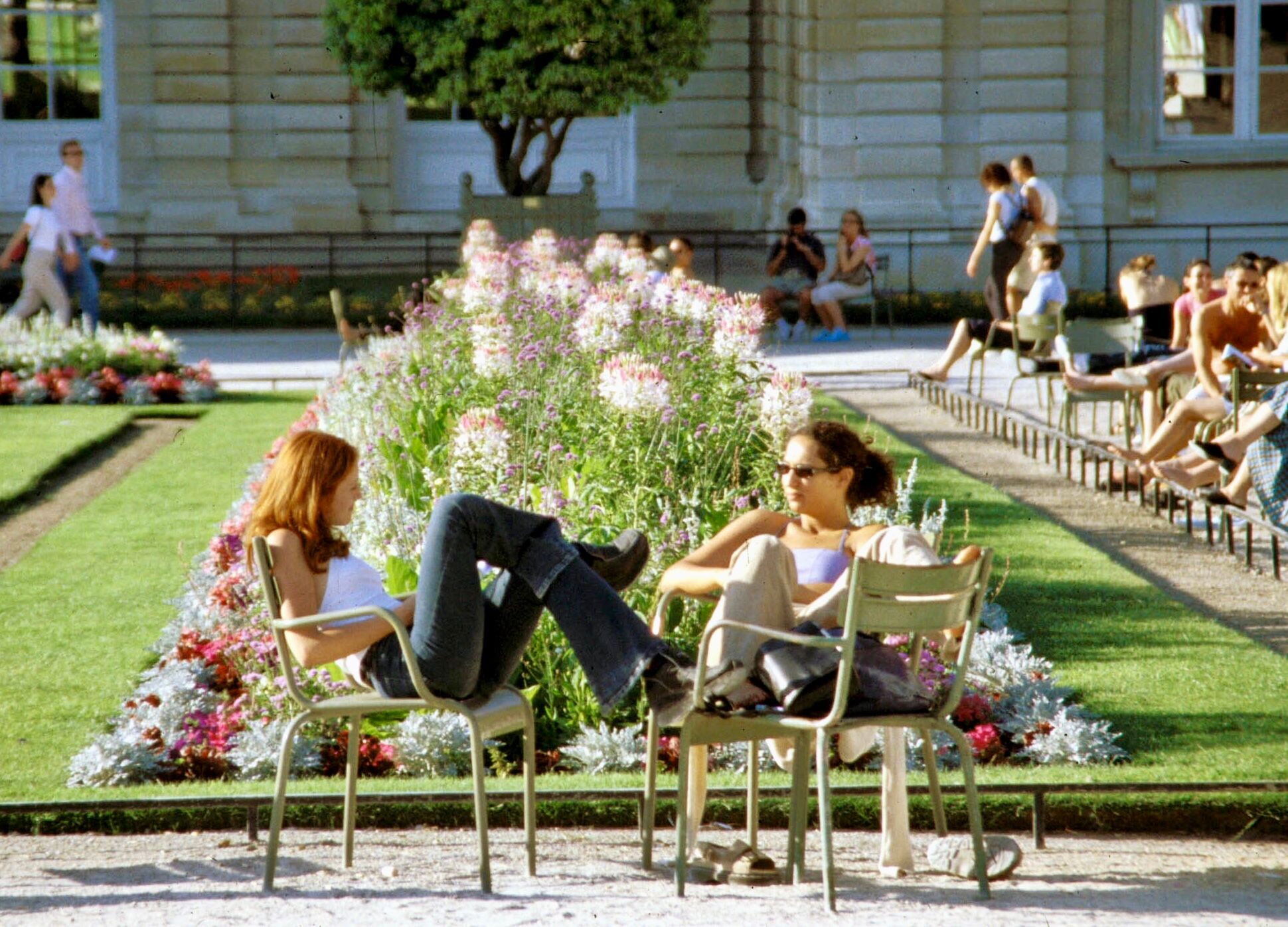
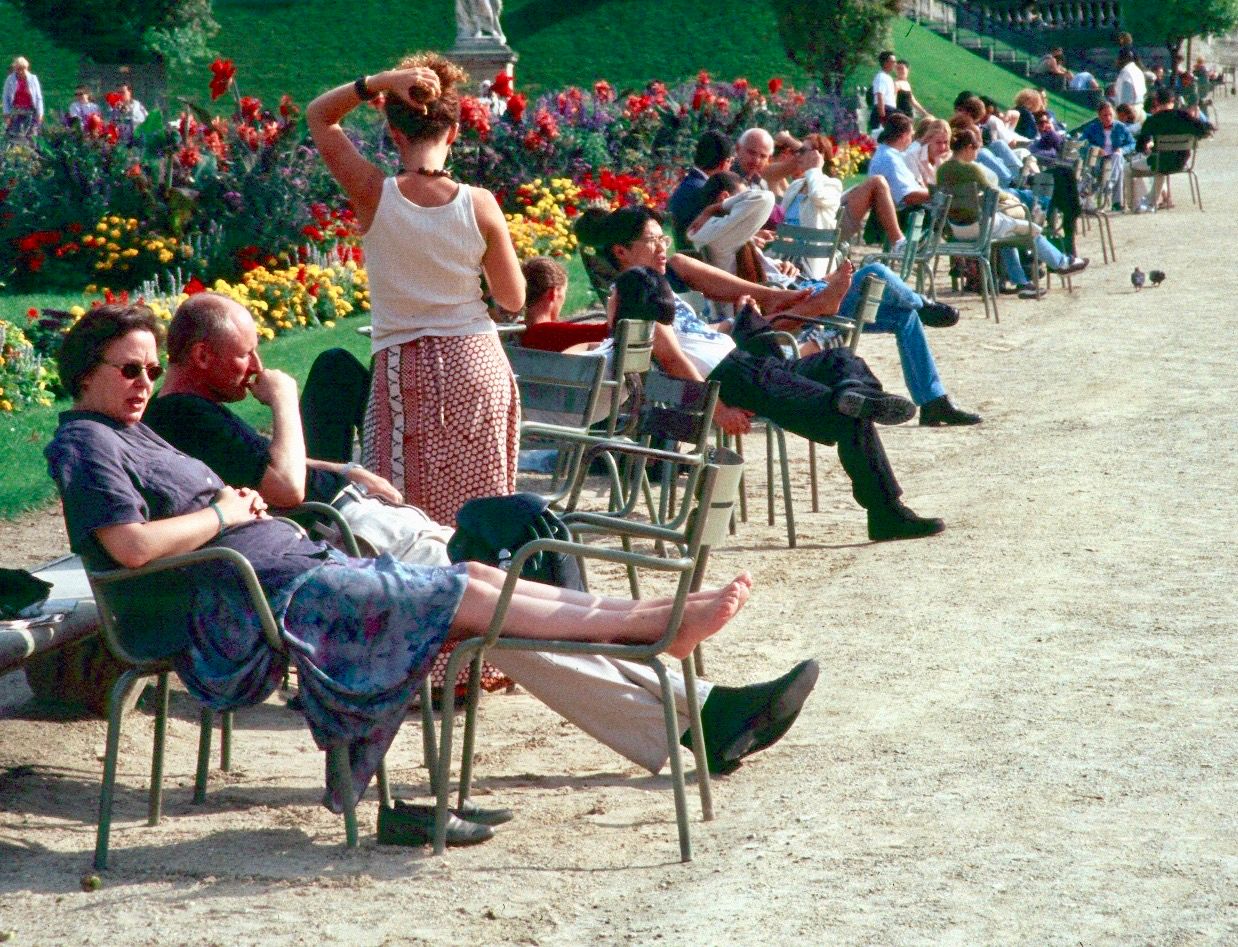
4) The Two-Directional Bench
The standard Paris bench with two sides is a remarkable example of how a simple bench can connect all different kinds of people in a welcoming way. You can sit next to a friend while sharing the same space with a stranger... who can then become a new friend. This bench allows people to be both separate and together, depending on the mood they're in.
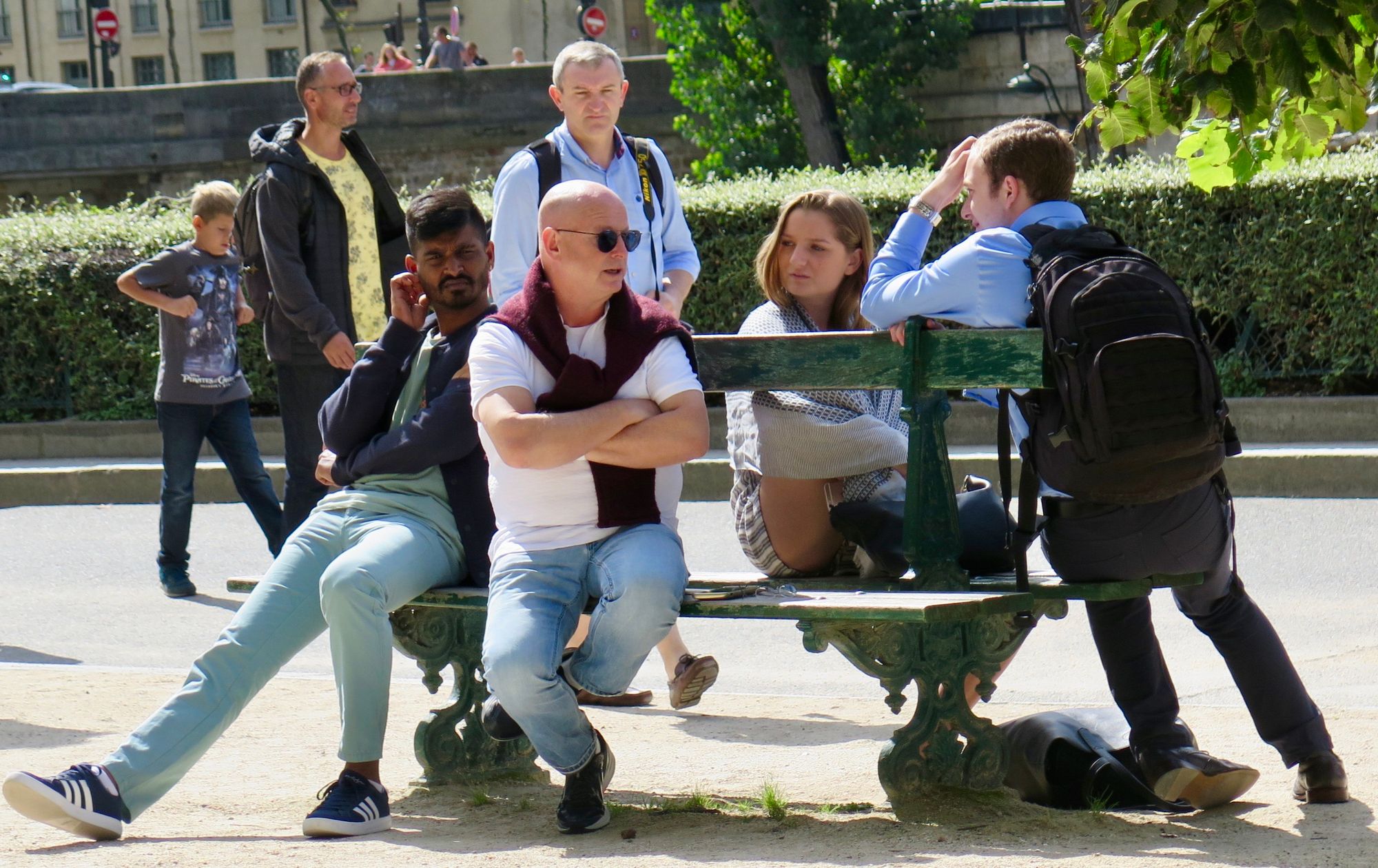
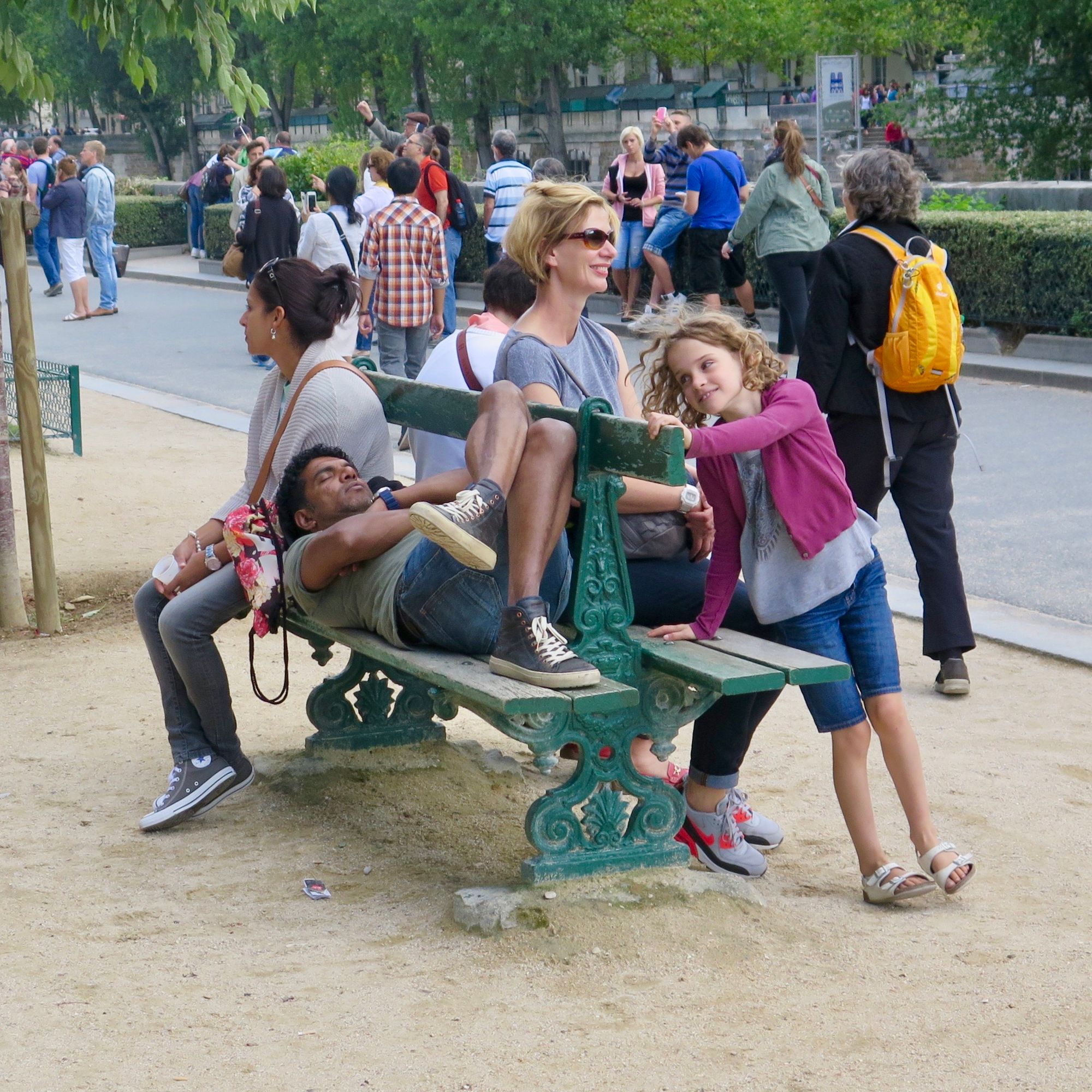
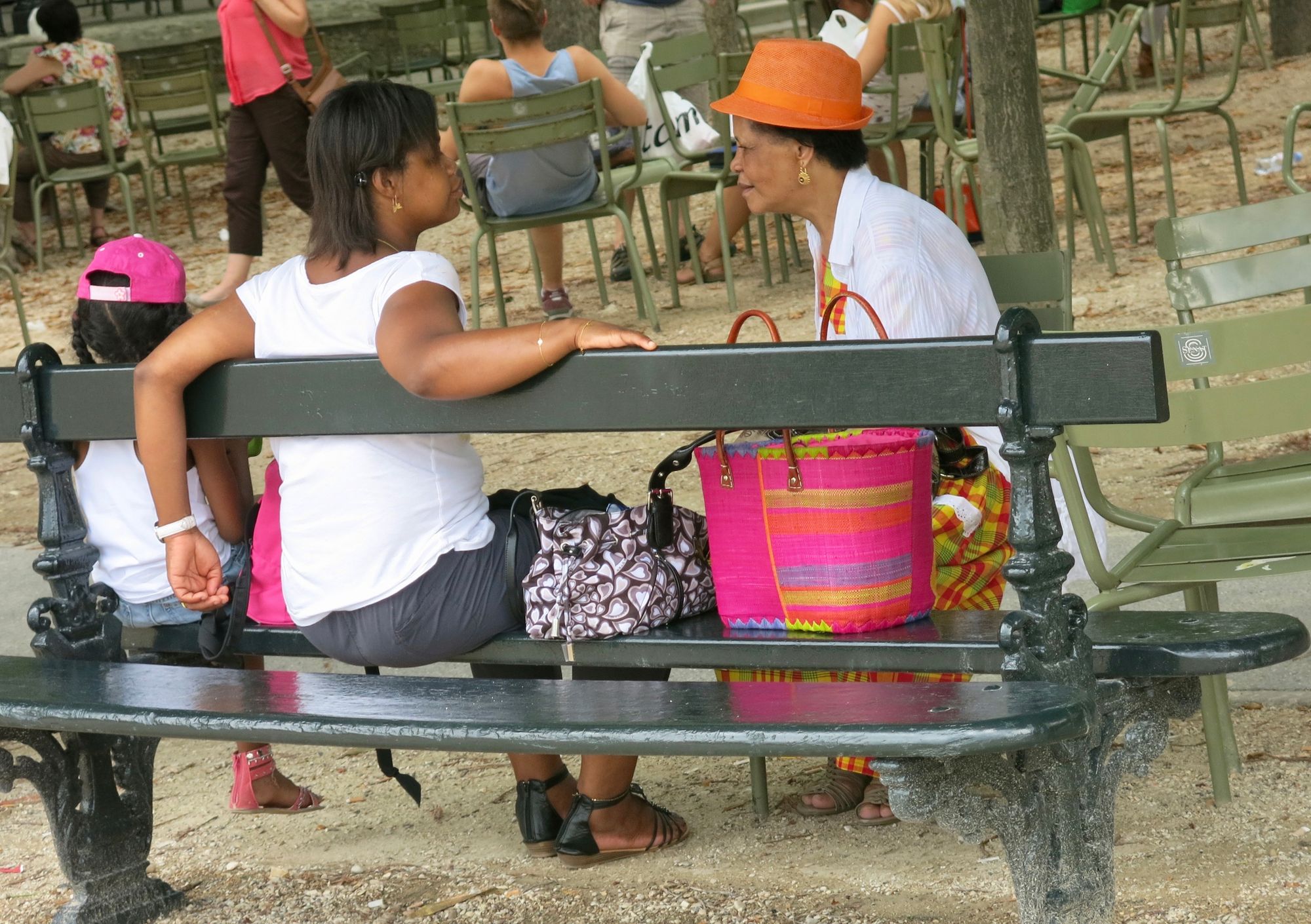
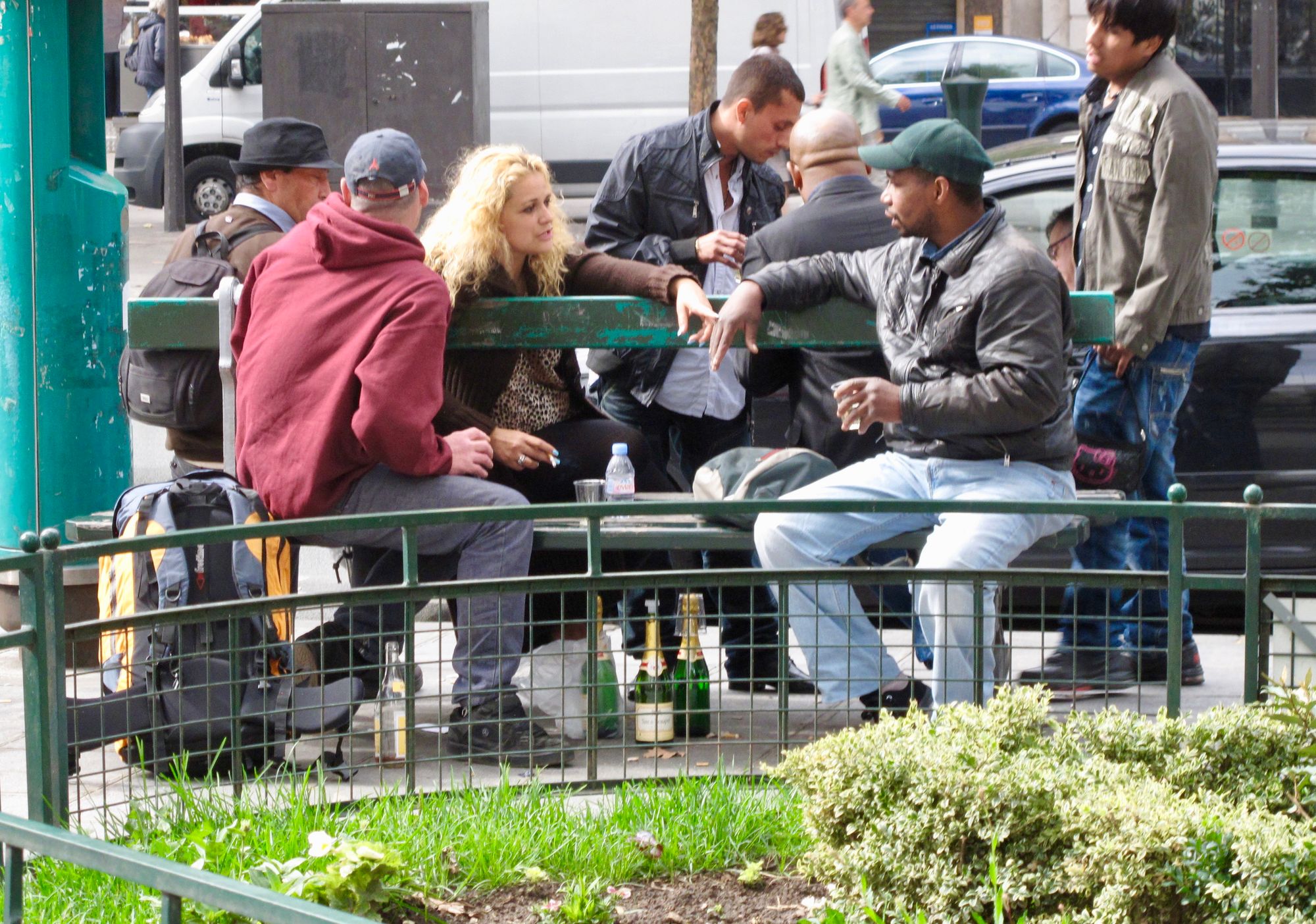
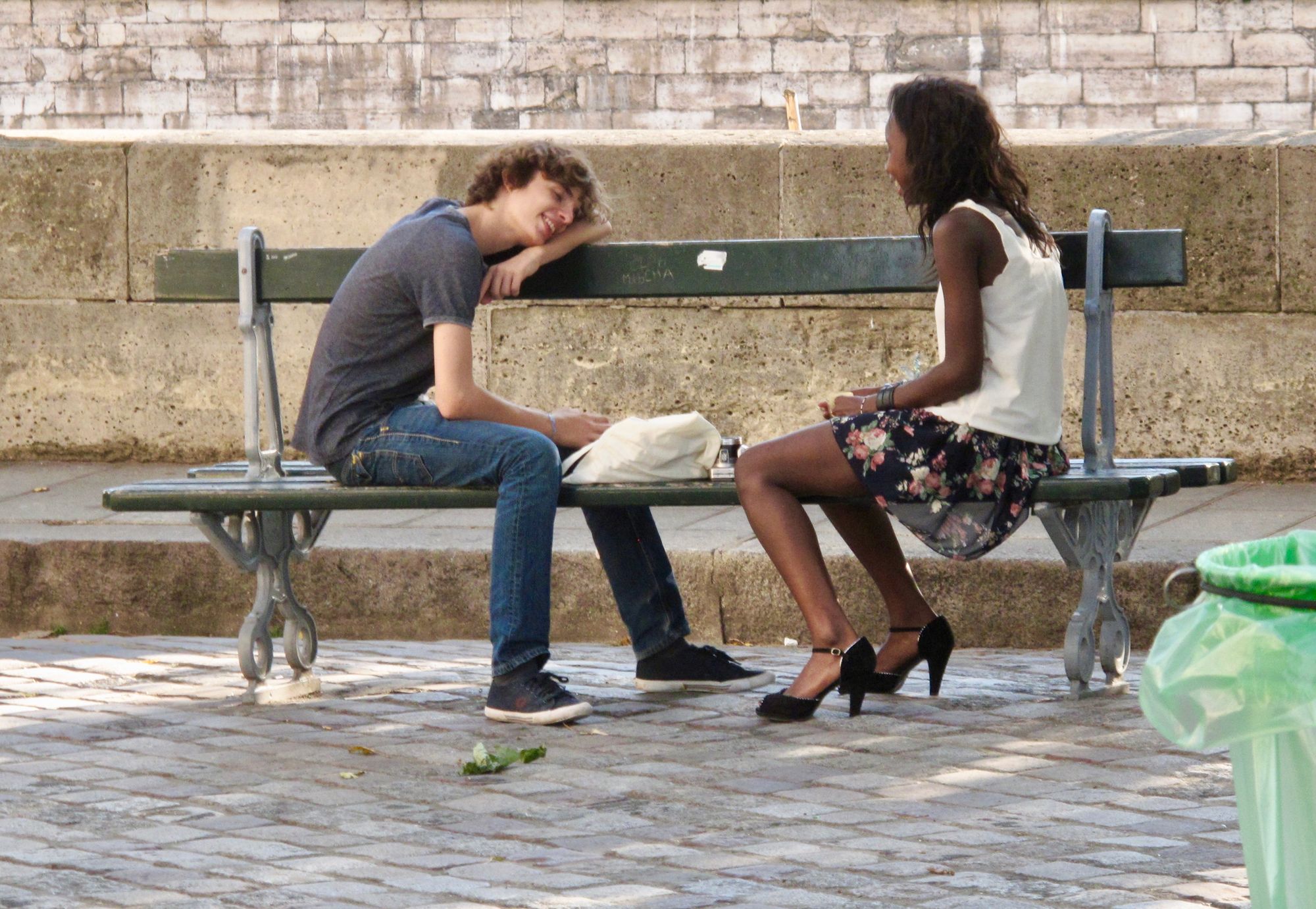
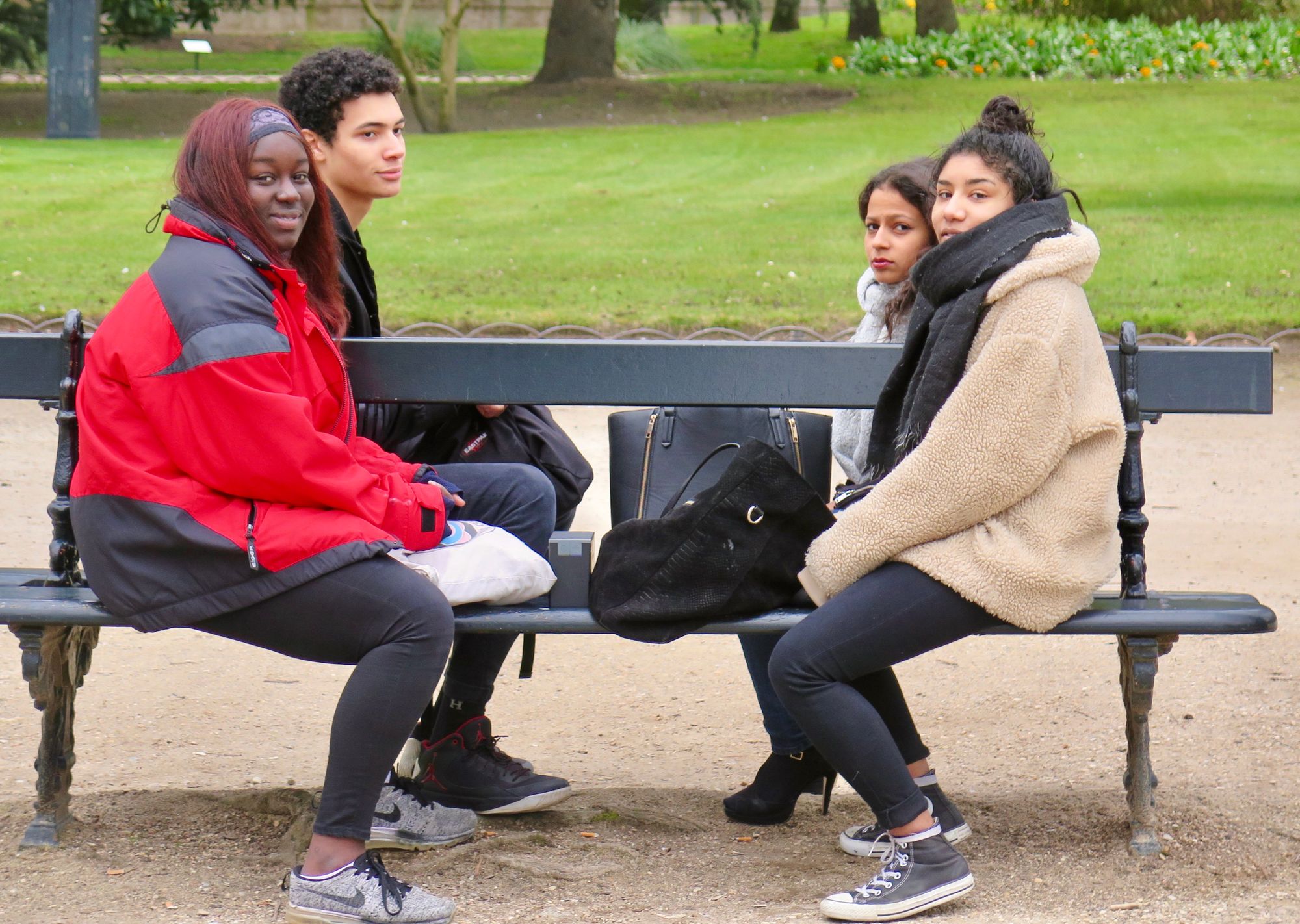
5) The Square Bench with Table
This square bench found along the banks of the Seine at Paris Plage is an amazing design. It supports various groups of people, all doing their own thing, it offers a table for eating at or doing activities, it rests under an umbrella which throws welcome shade, and it has an opening for a person in a wheelchair to be able to comfortably join in.
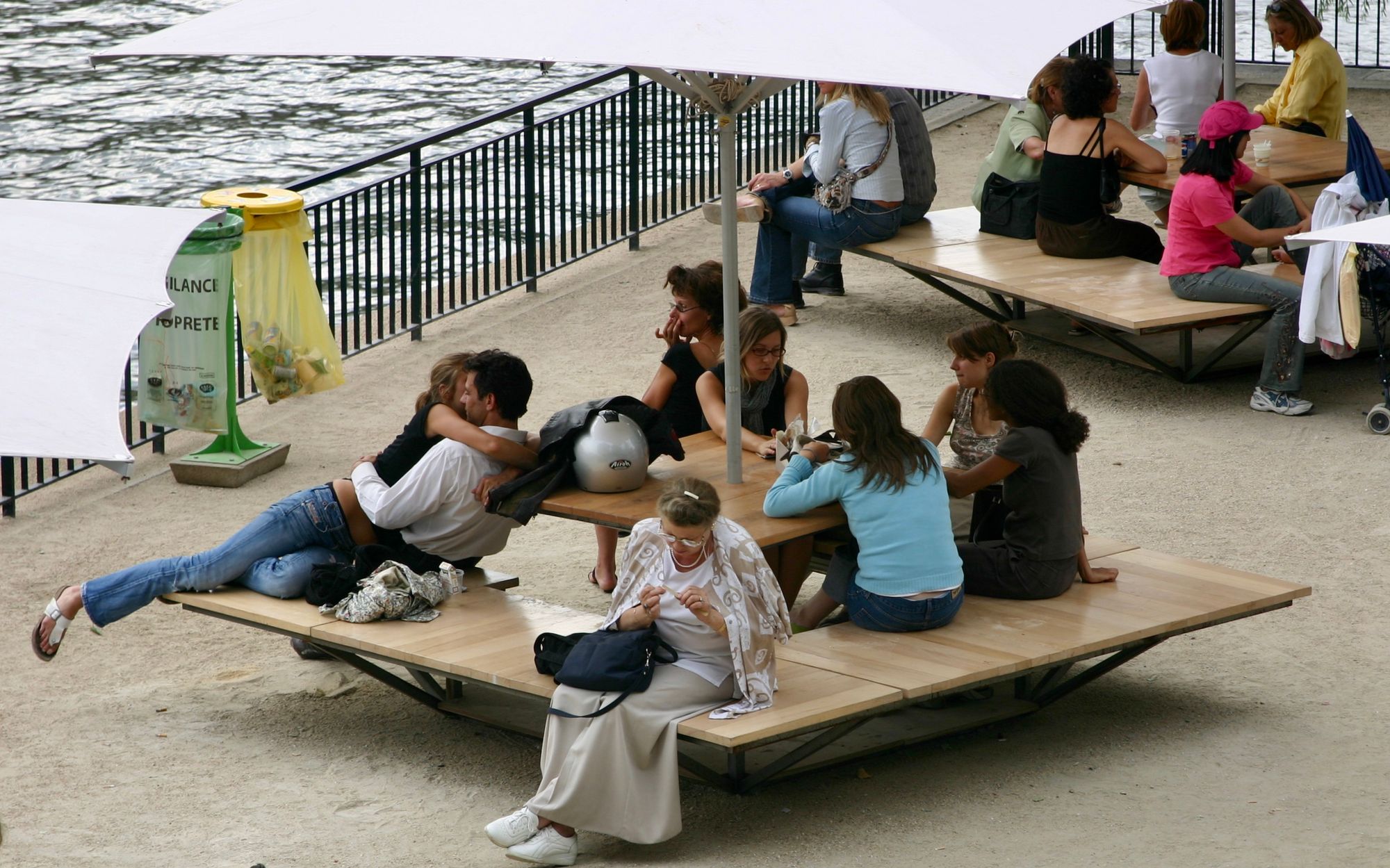
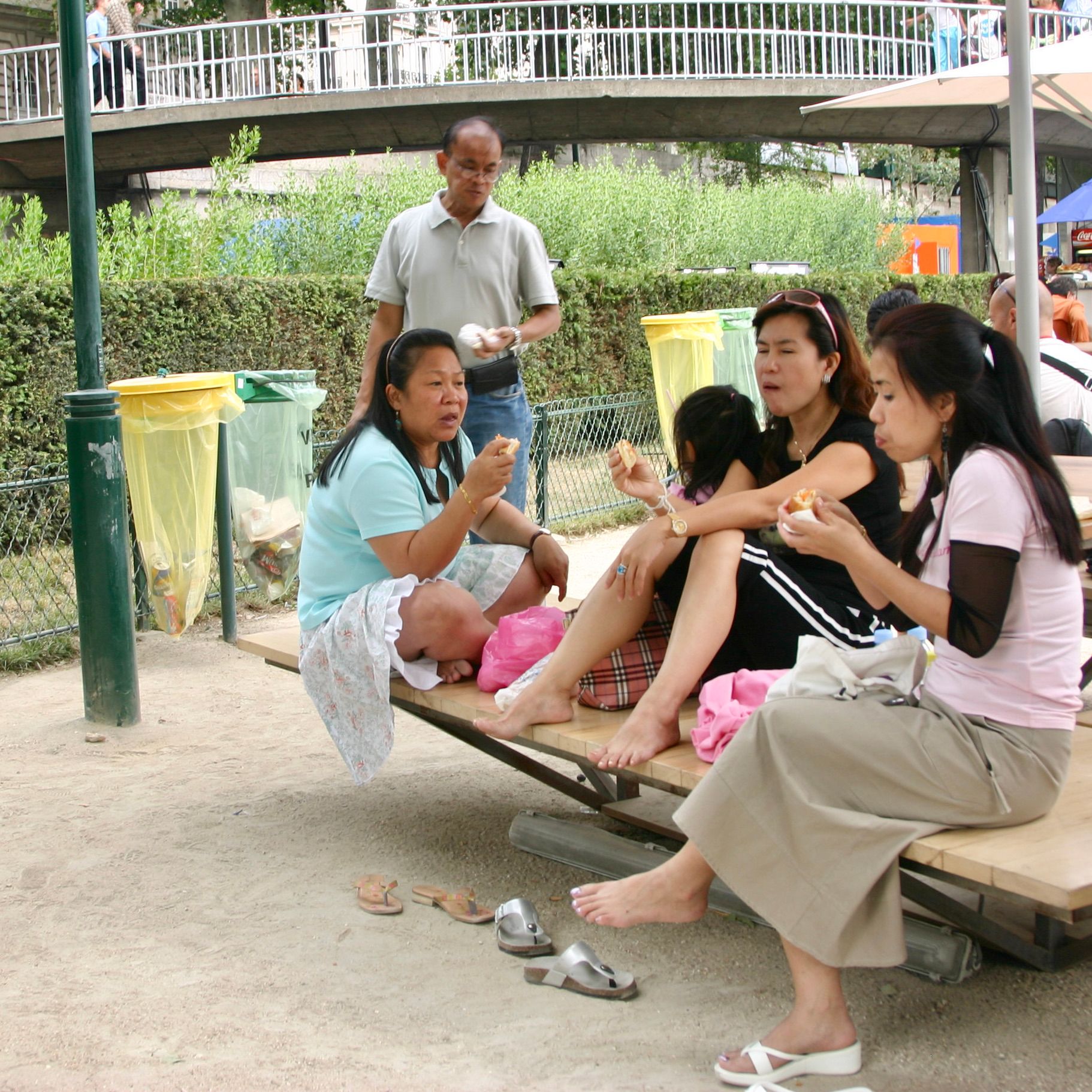
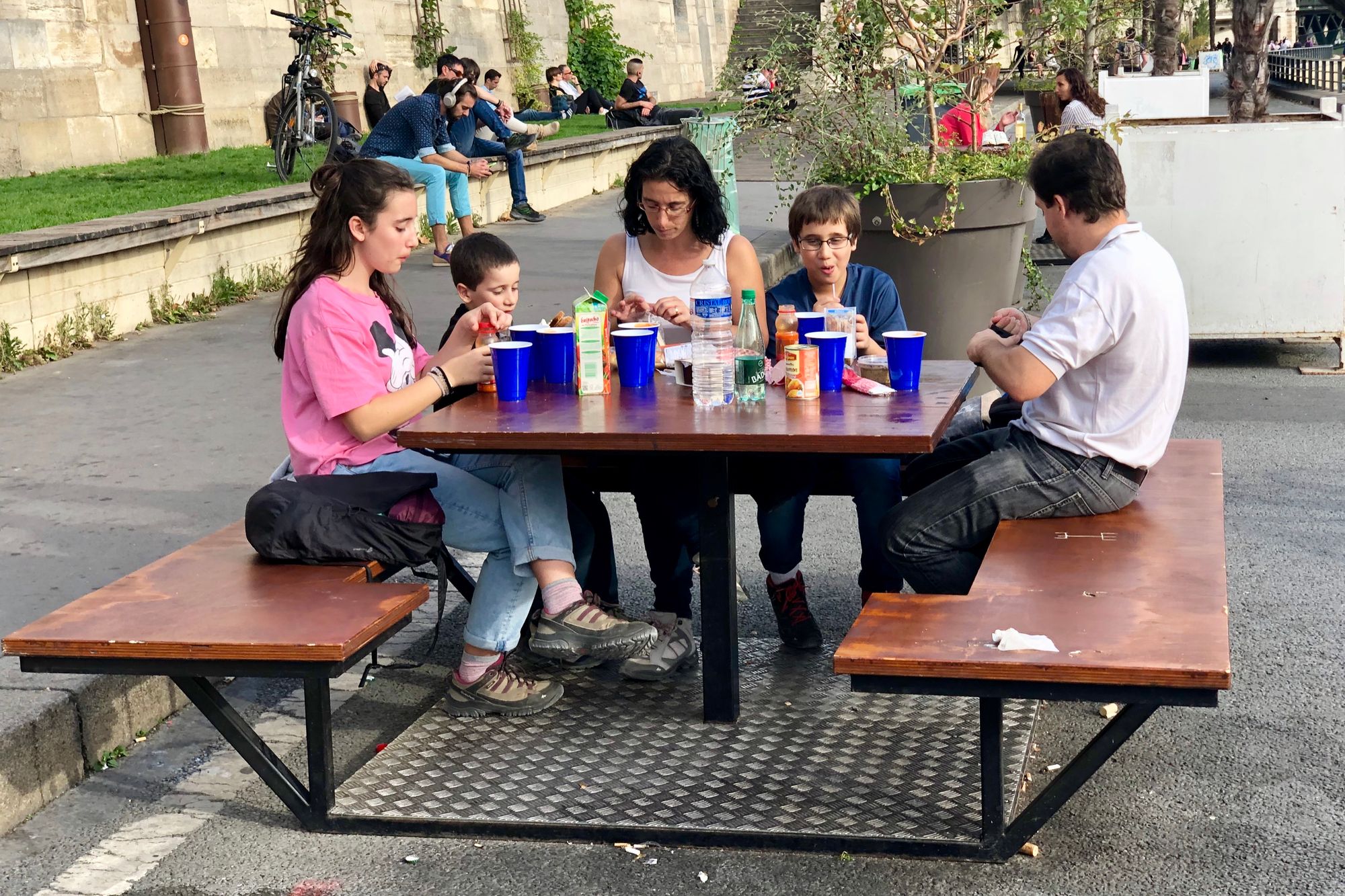
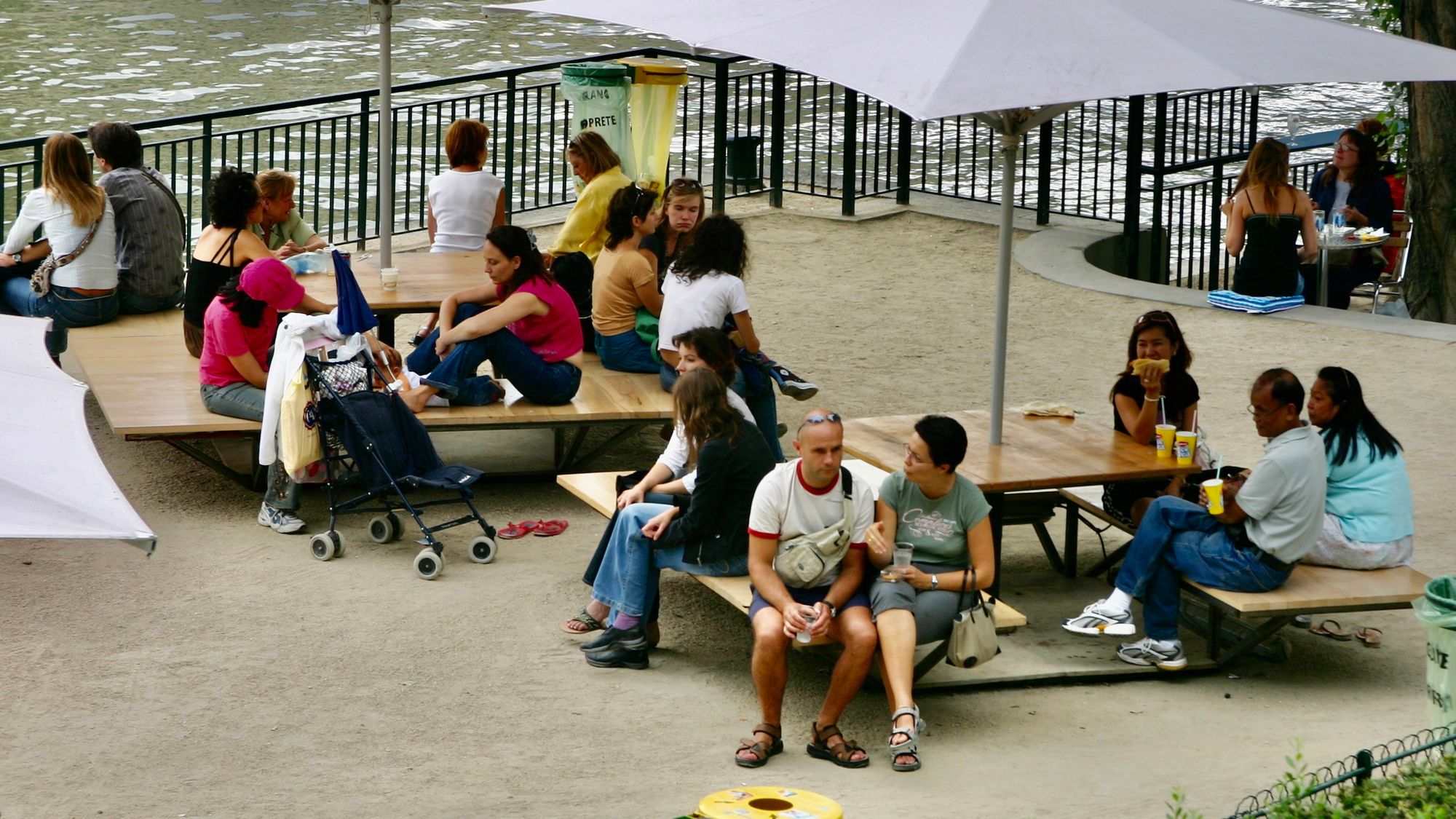
6) The Multi-Layered Bench
This more recent seating along the Left Bank of the Seine, which runs from the Musee d'Orsay to the Eiffel Tower, is very different from the standard bench – modular, block-like, and comprising many levels and layers. Its fun and non-standard design is perfect for encouraging social activity and play.
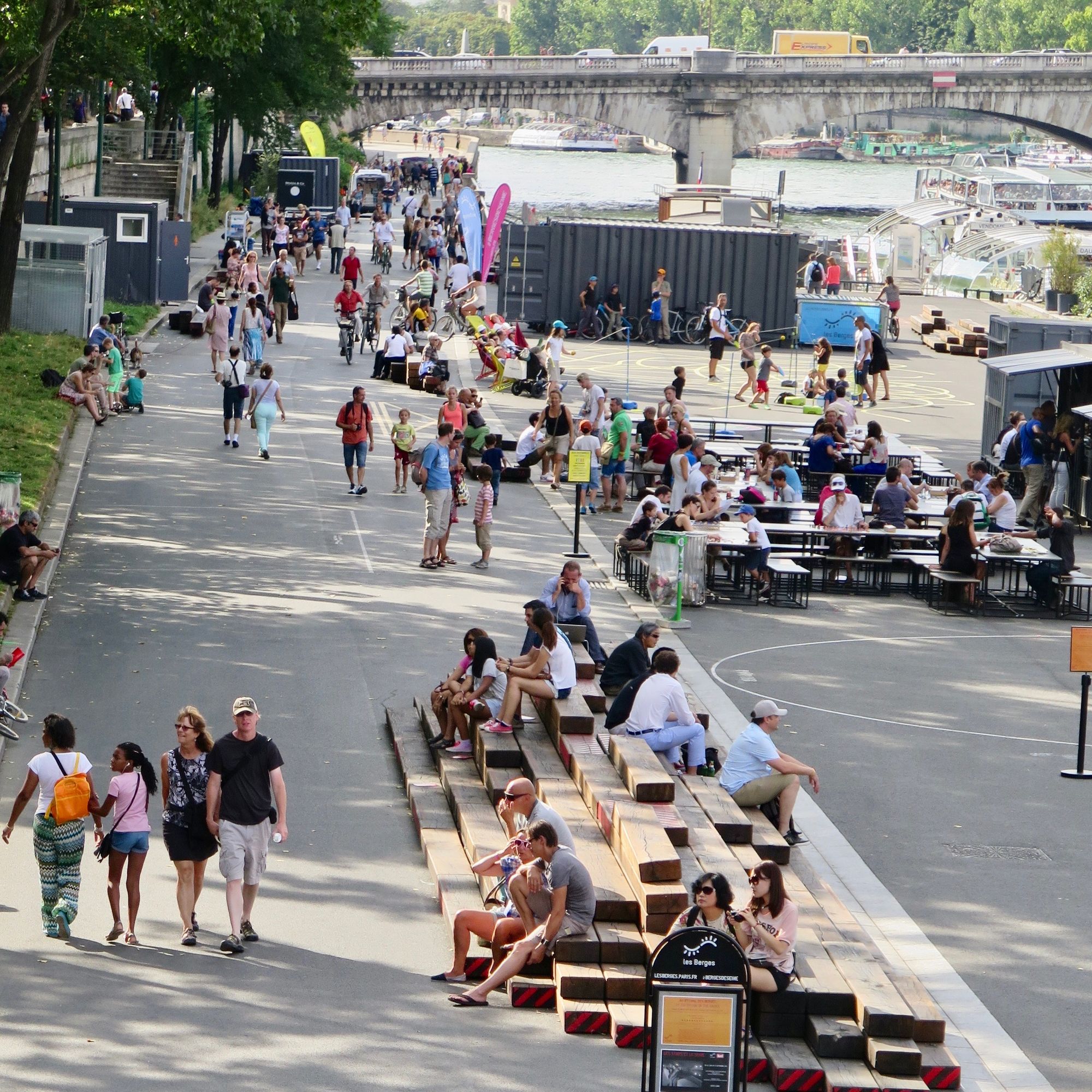

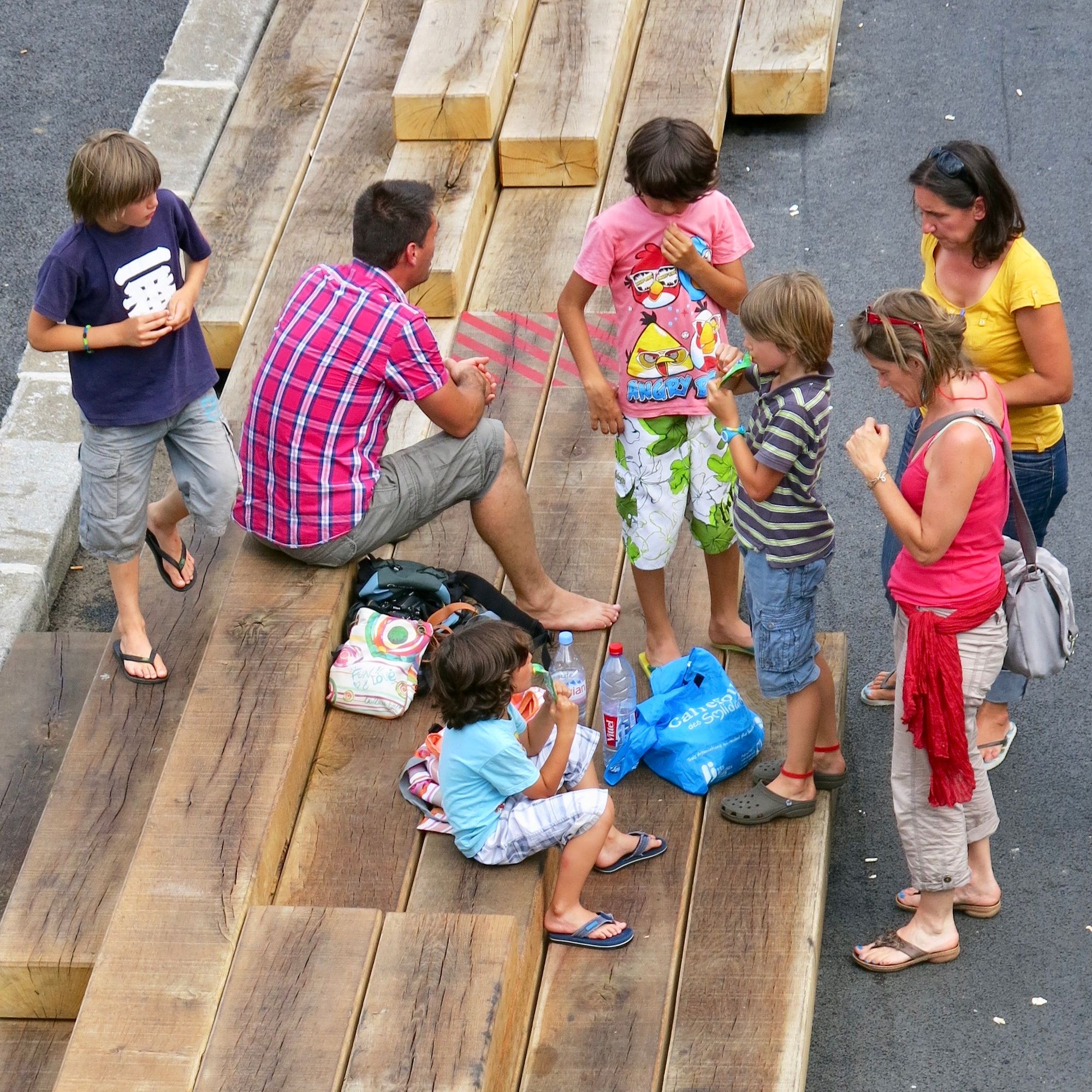
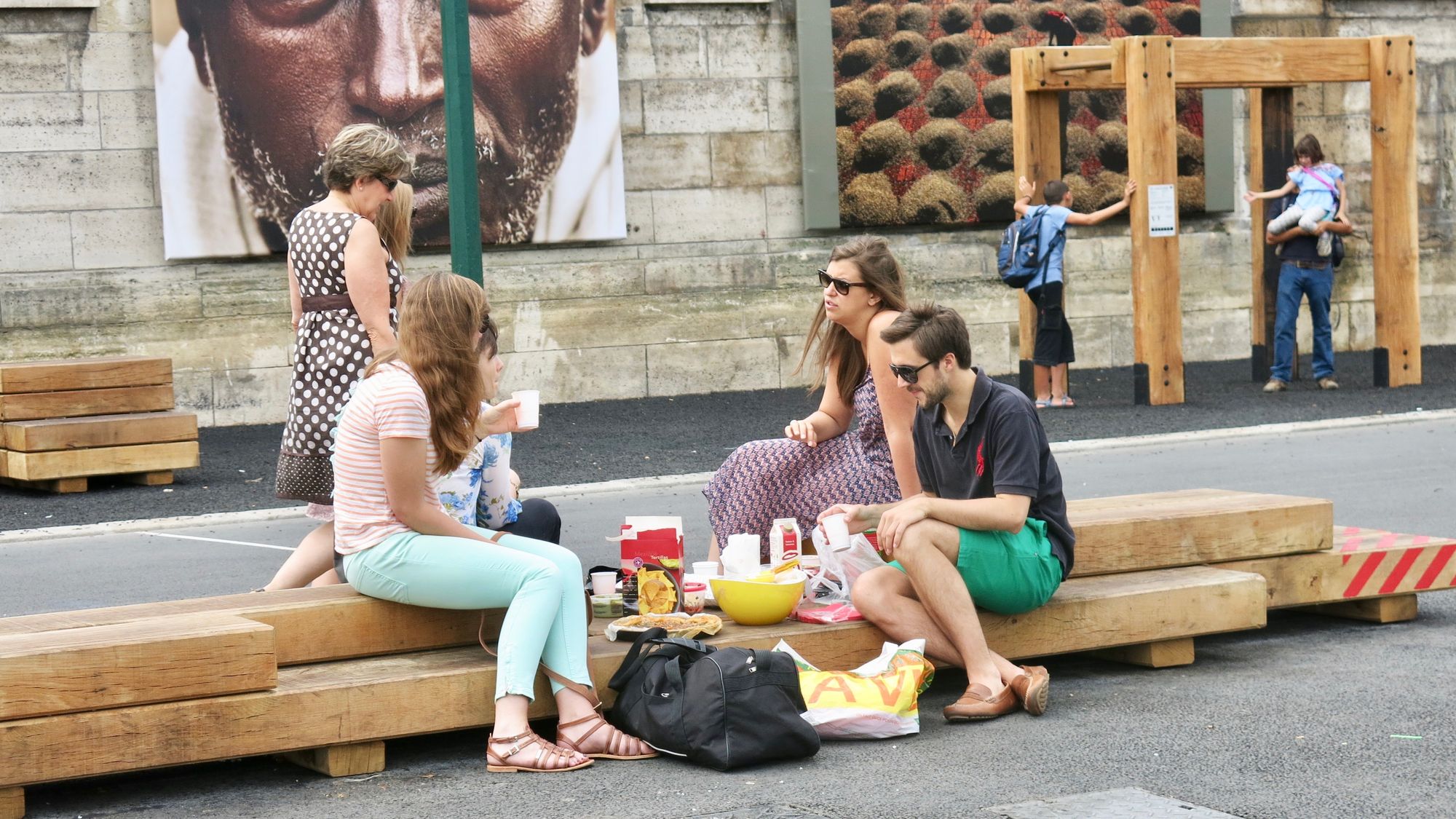
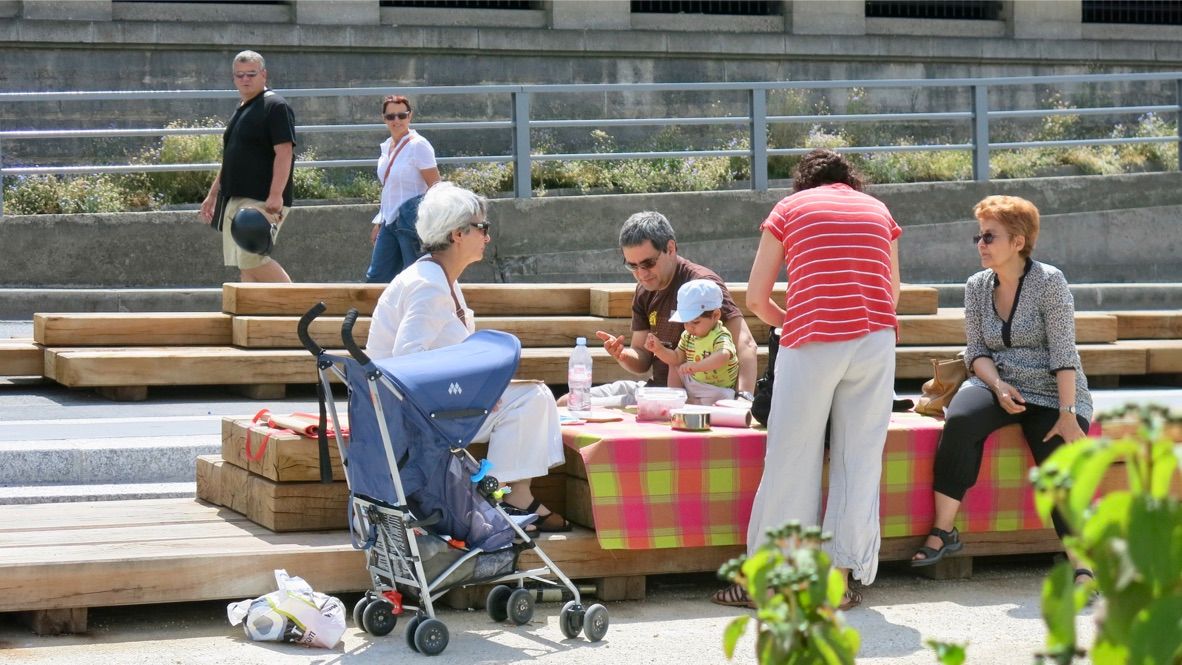
Picnics are a common sight on these new benches
This new type of bench was an immediate success, offering people many creative ways to make themselves comfortable, chat, or set up a shared meal.
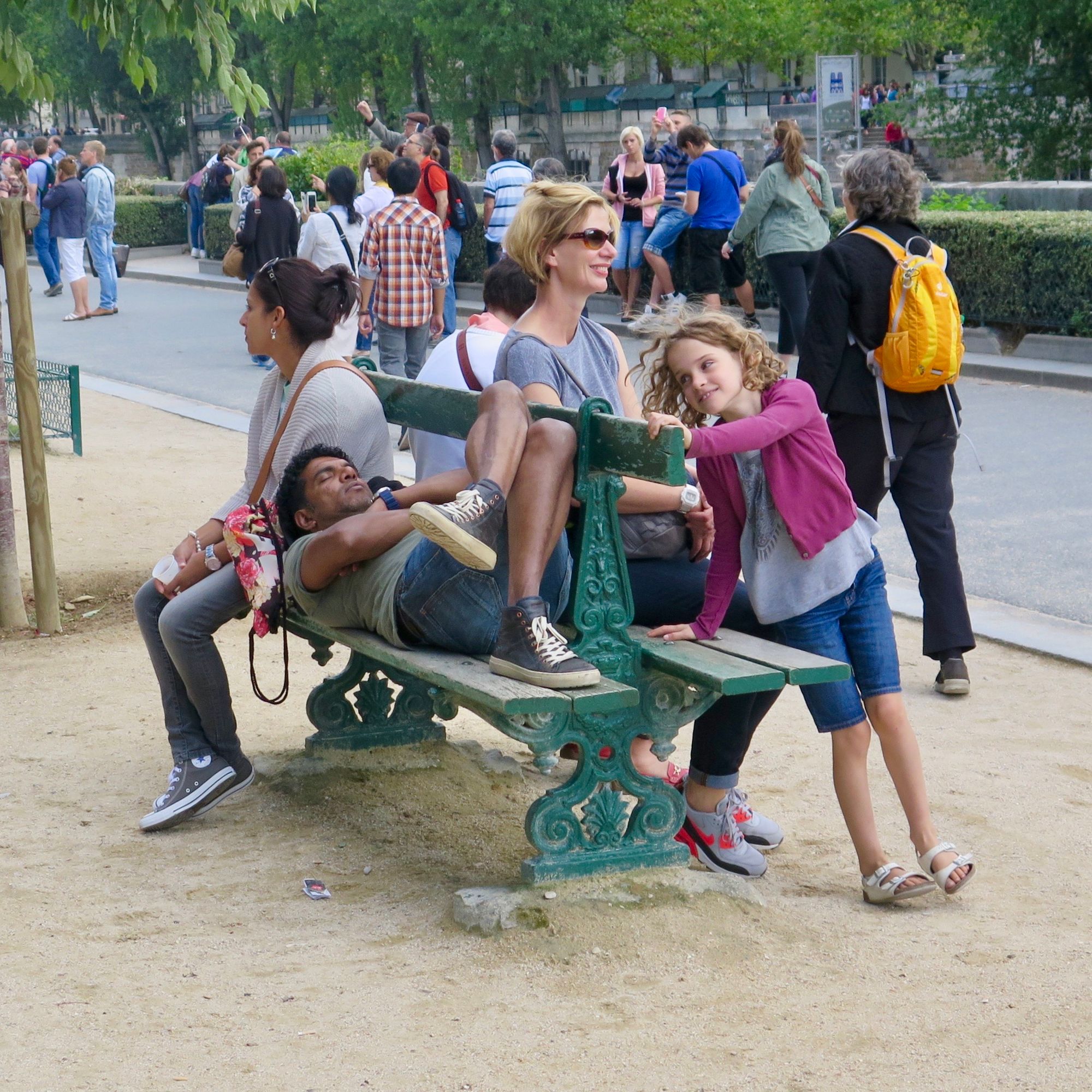
7) The Focal Point "Bench"
Focal points naturally attract people. Therefore, seating at a focal point is usually a hot spot as well! Here you can see a focal point "bench" in the center of a main square in Florence.
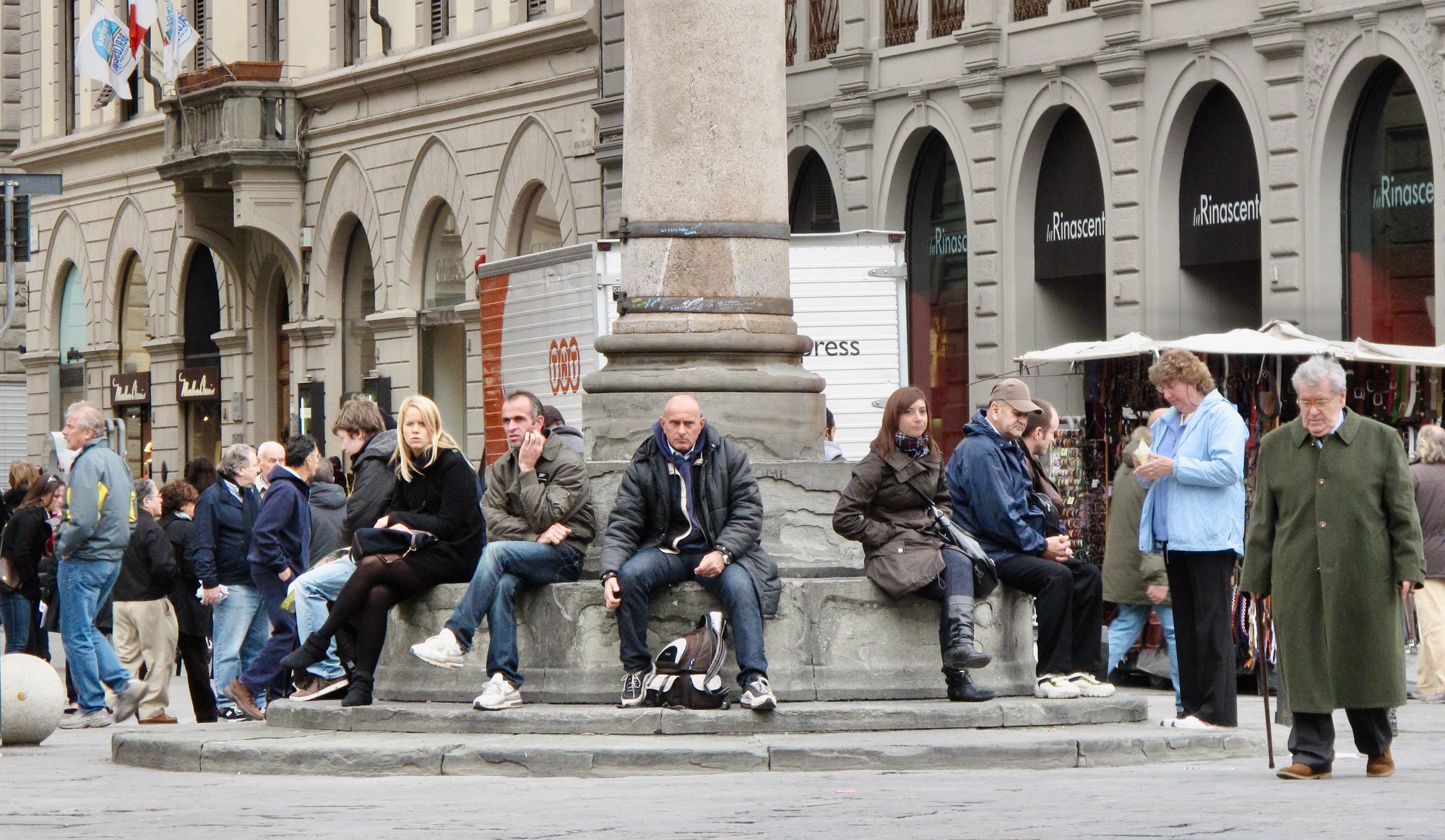
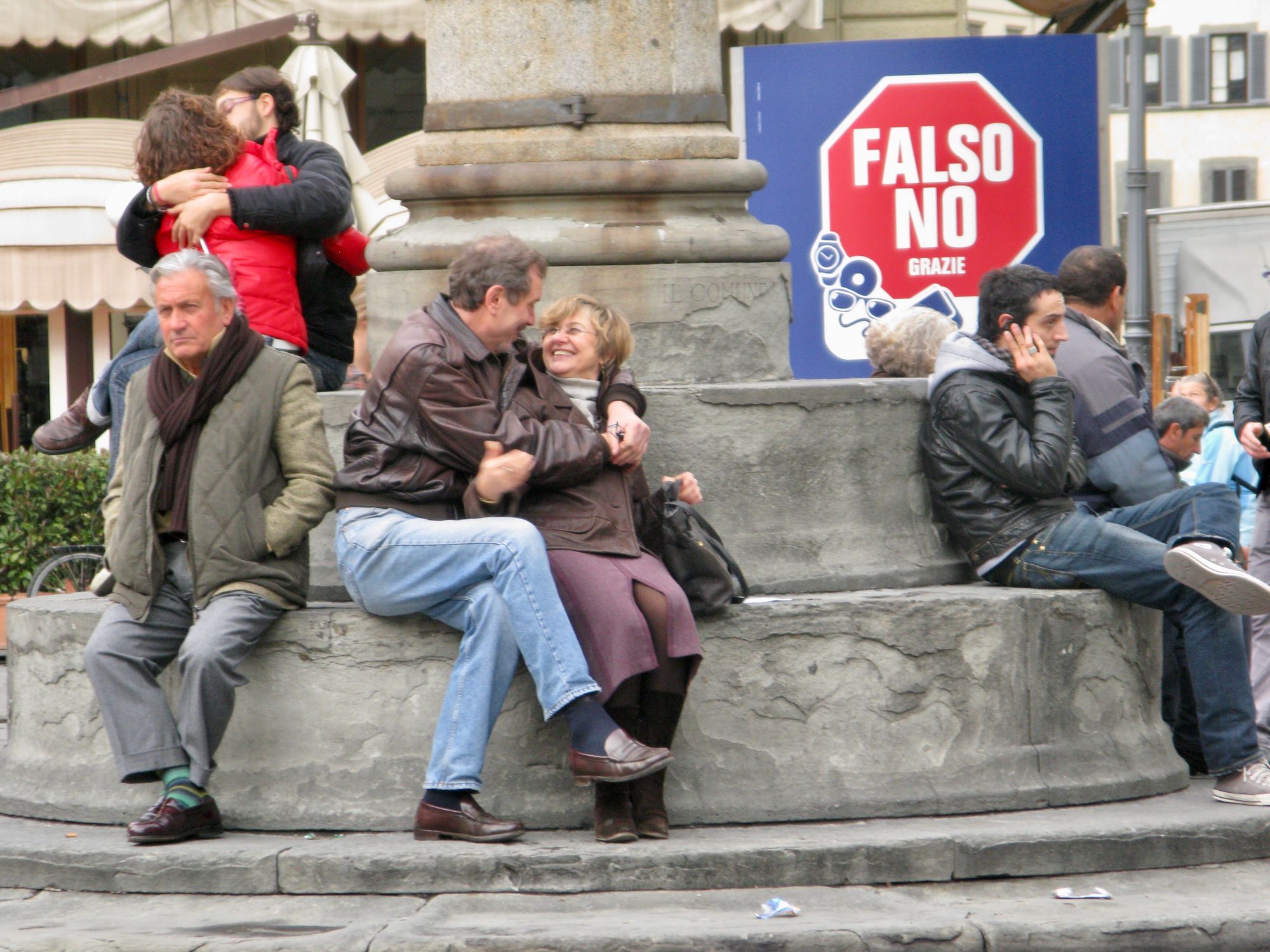
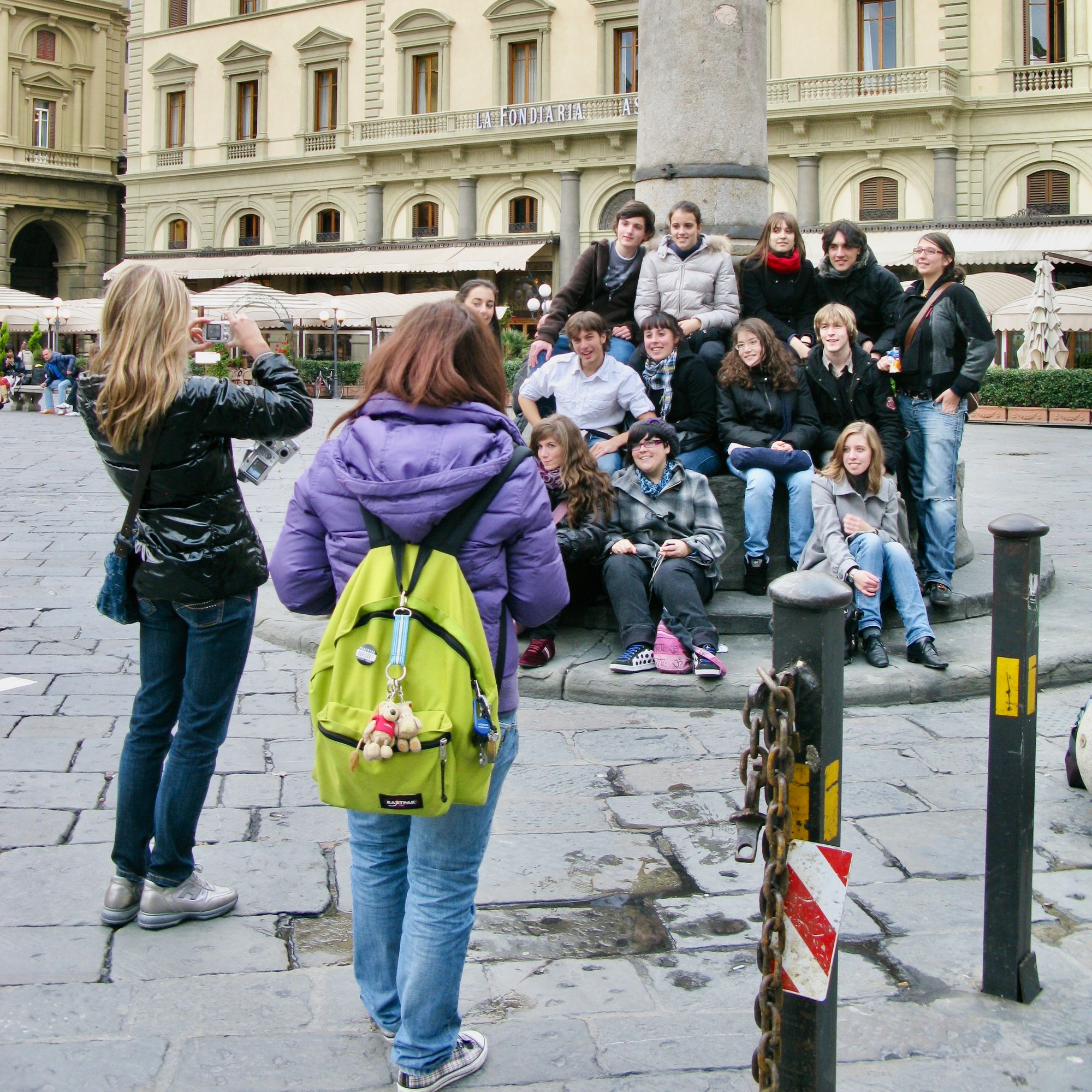
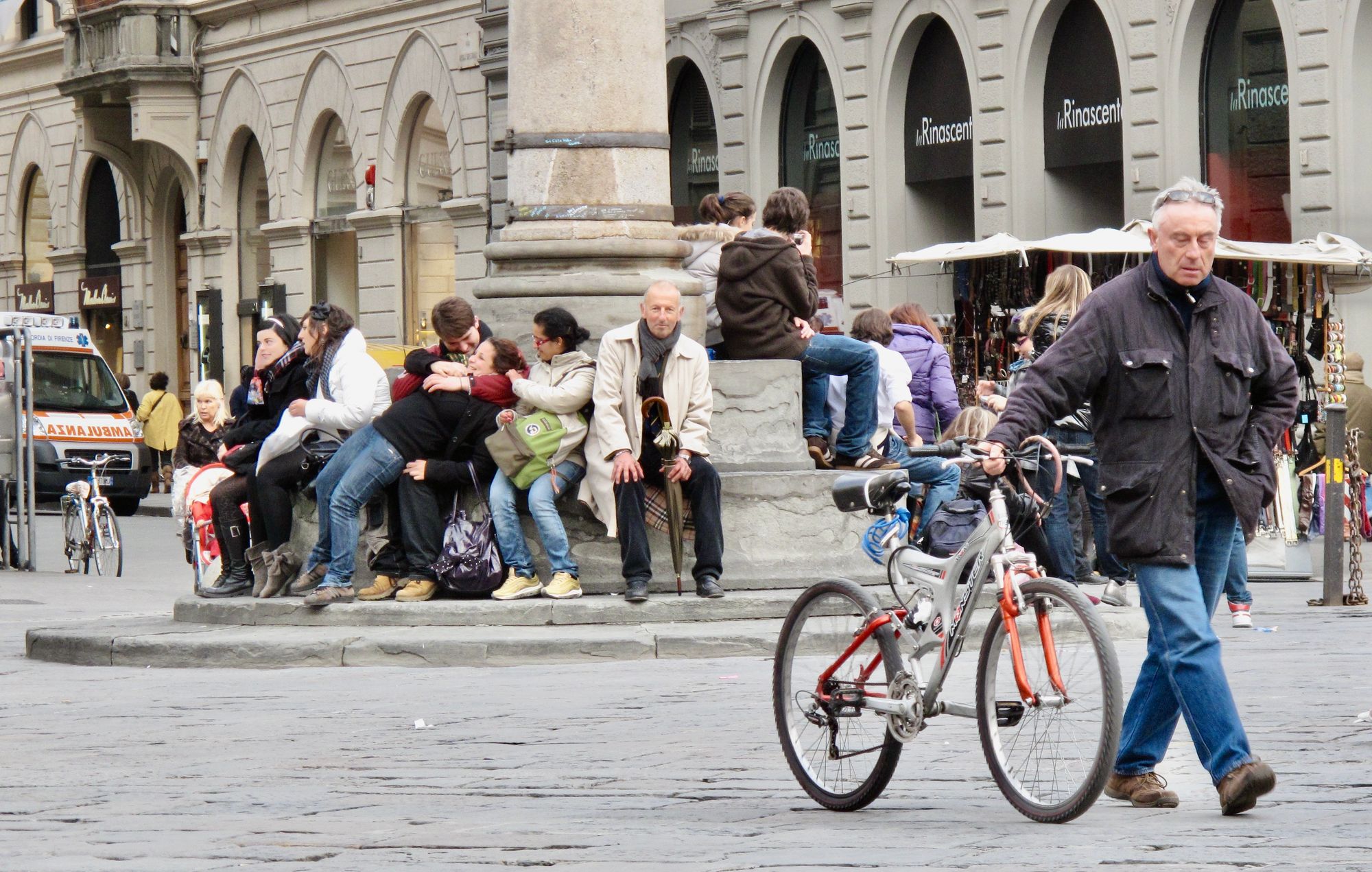
8) The Long Flat Bench
The fact that the flat bench doesn't have a back means people have more freedom to sit in whatever direction and in whatever position they like. It feels like every degree of freedom that a bench design offers is a degree of added popularity. People love options.
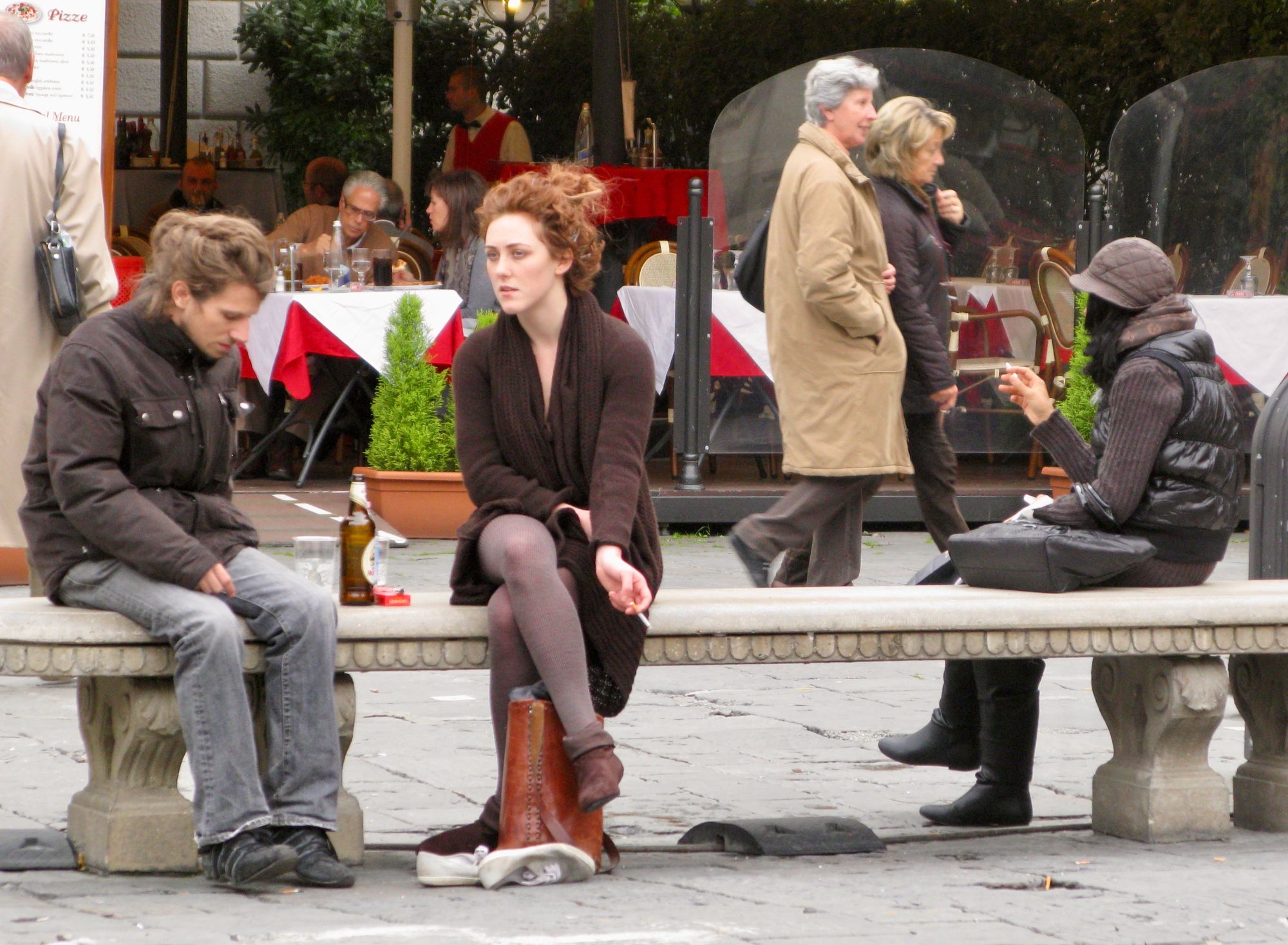
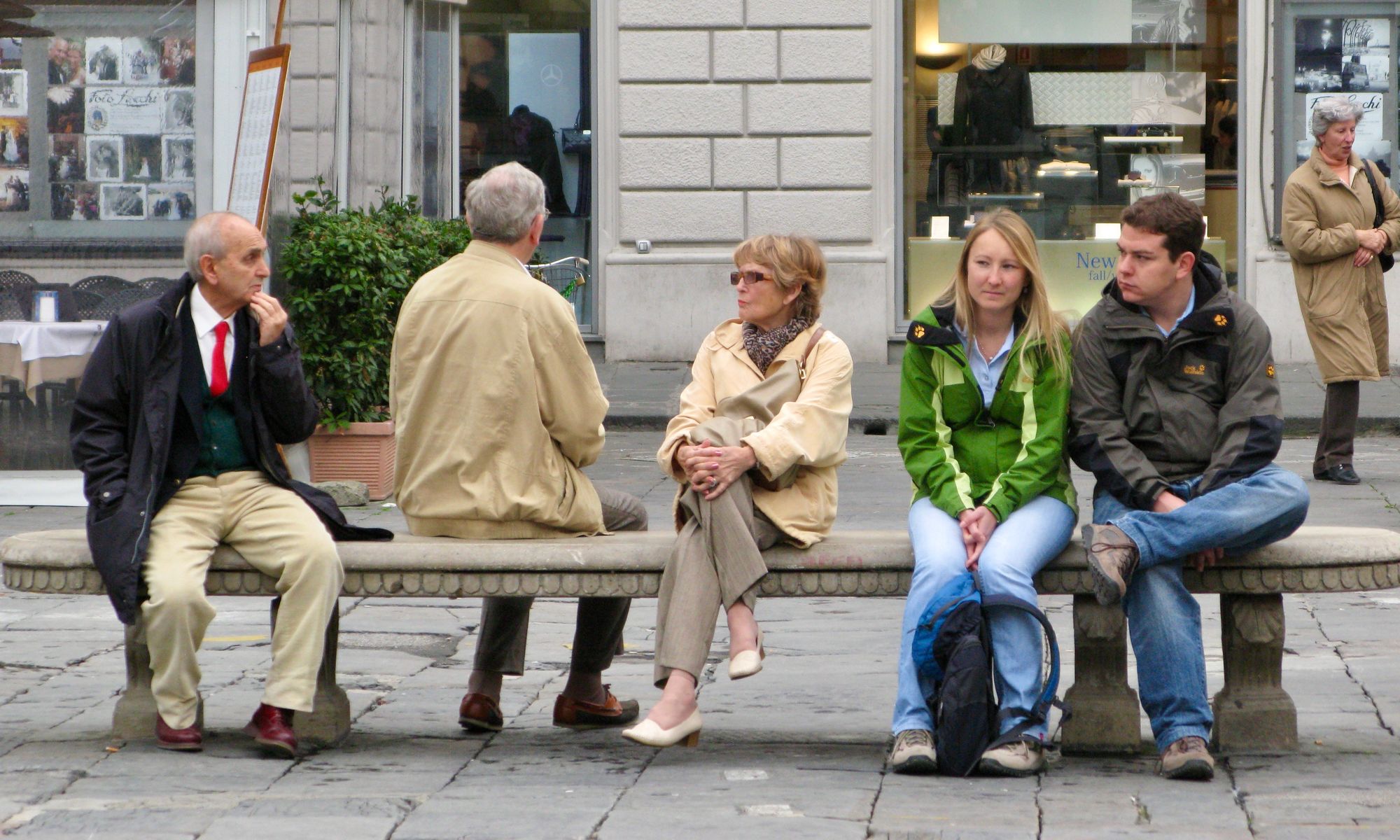
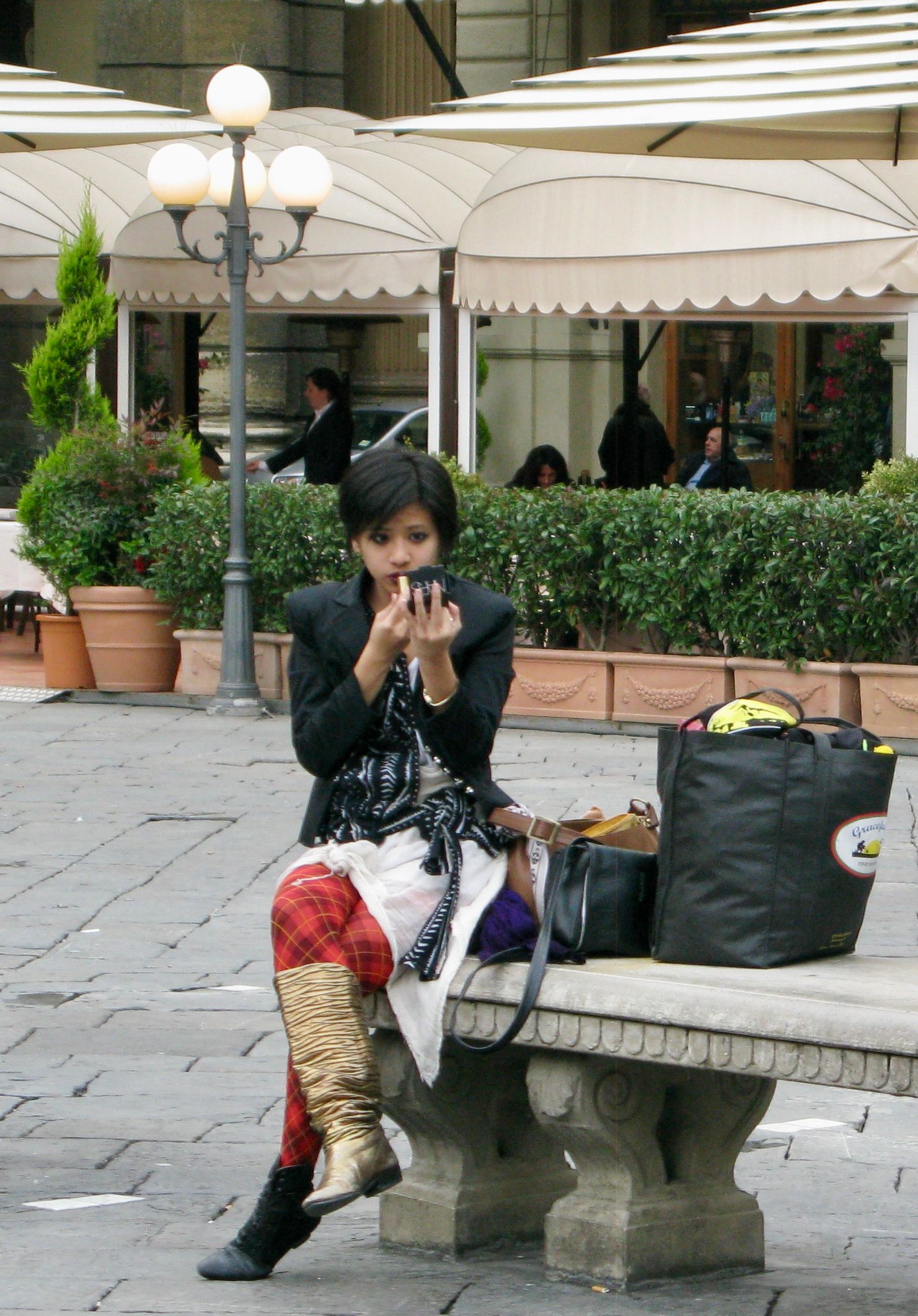
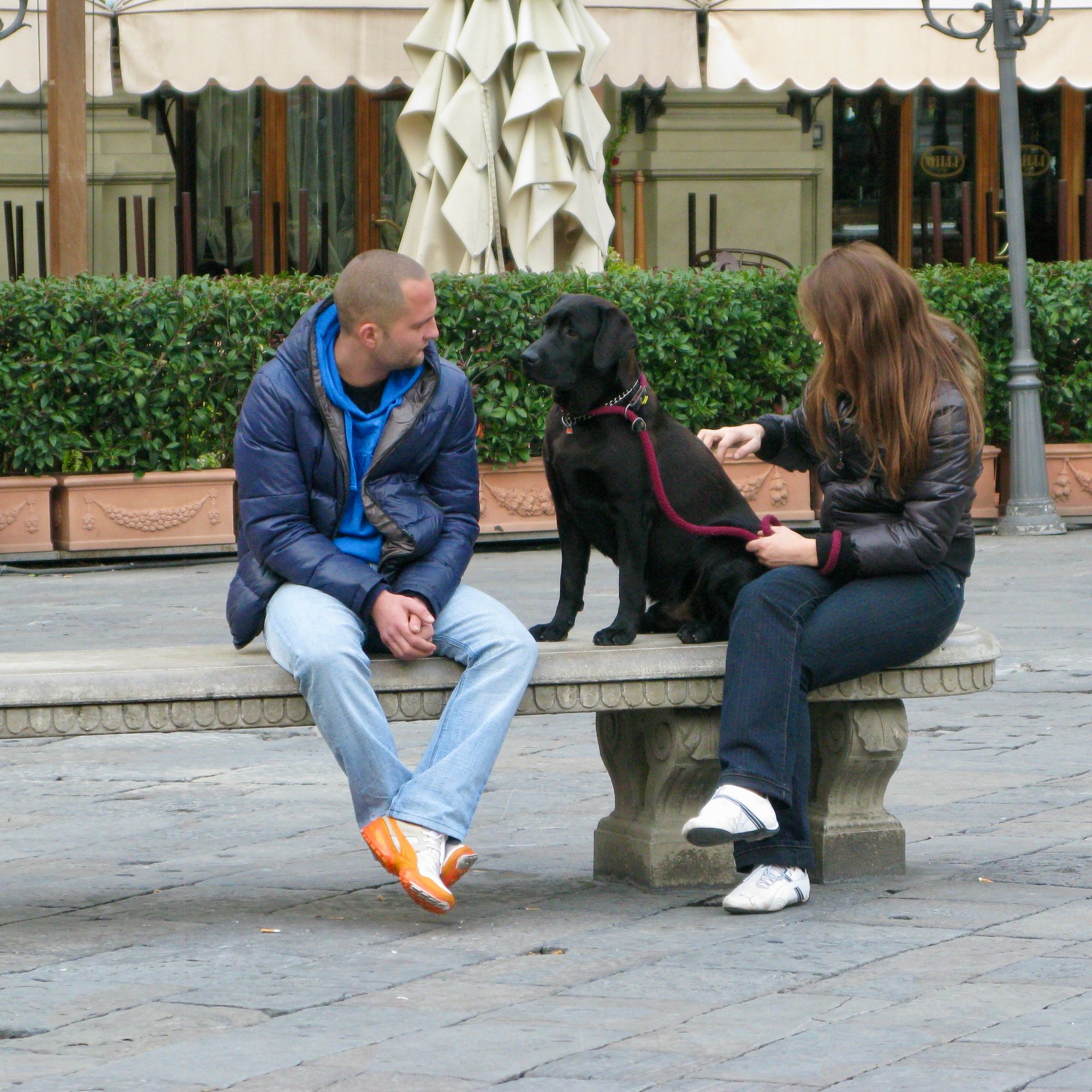
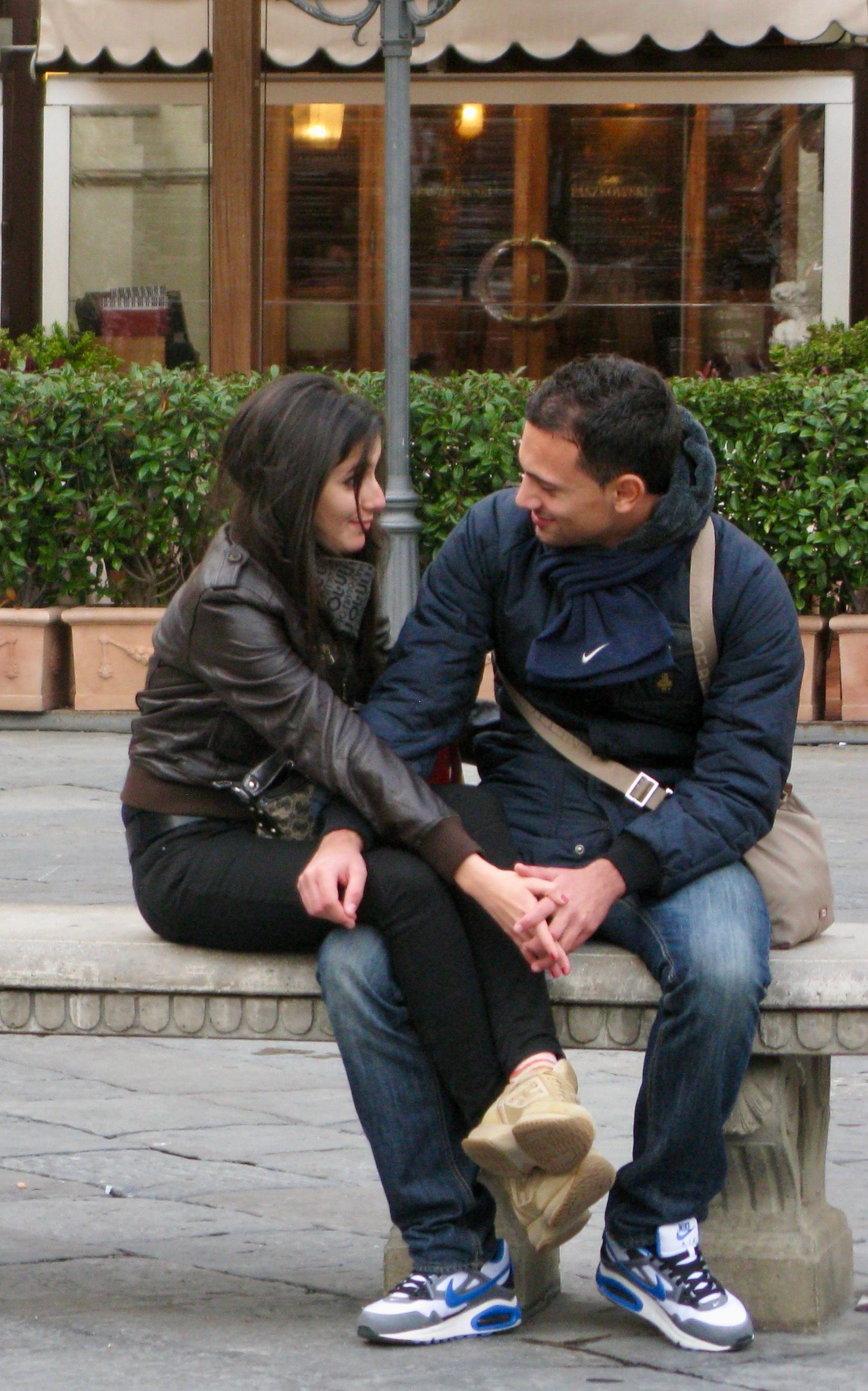
9) The Flat Square Bench
This bench on our Brooklyn neighborhood's main street quickly became a major gathering place when it was first introduced in 2015. It had a profound impact on the activity at the corner, and piqued our curiosity. We were stunned as we witnessed the impact such a simple bench had, transforming the corner into a hub of social life.
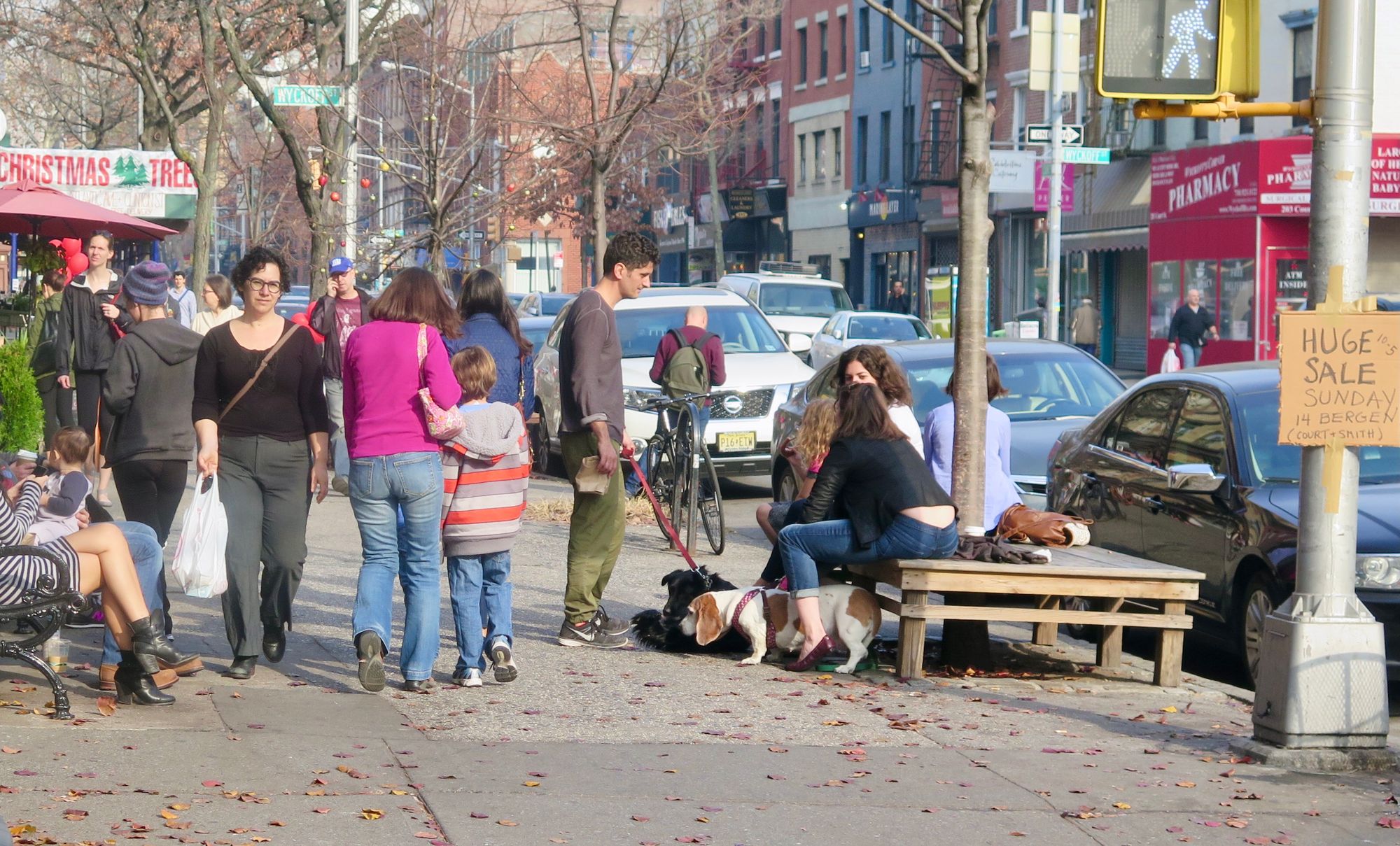
Its sudden appearance got us wondering: How did it get there?
It turns out the folks who installed it did not go through a formal approval process, and it was technically illegal. But people have come to understand that when benches serve as "tree guards," surrounding a trunk with seating around it, they are allowed to stay. The tree guard approach has thus become a unique way to add public seating and enhance social life in neighborhoods, all while keeping trees nice and safe. So guard those trees, everyone!
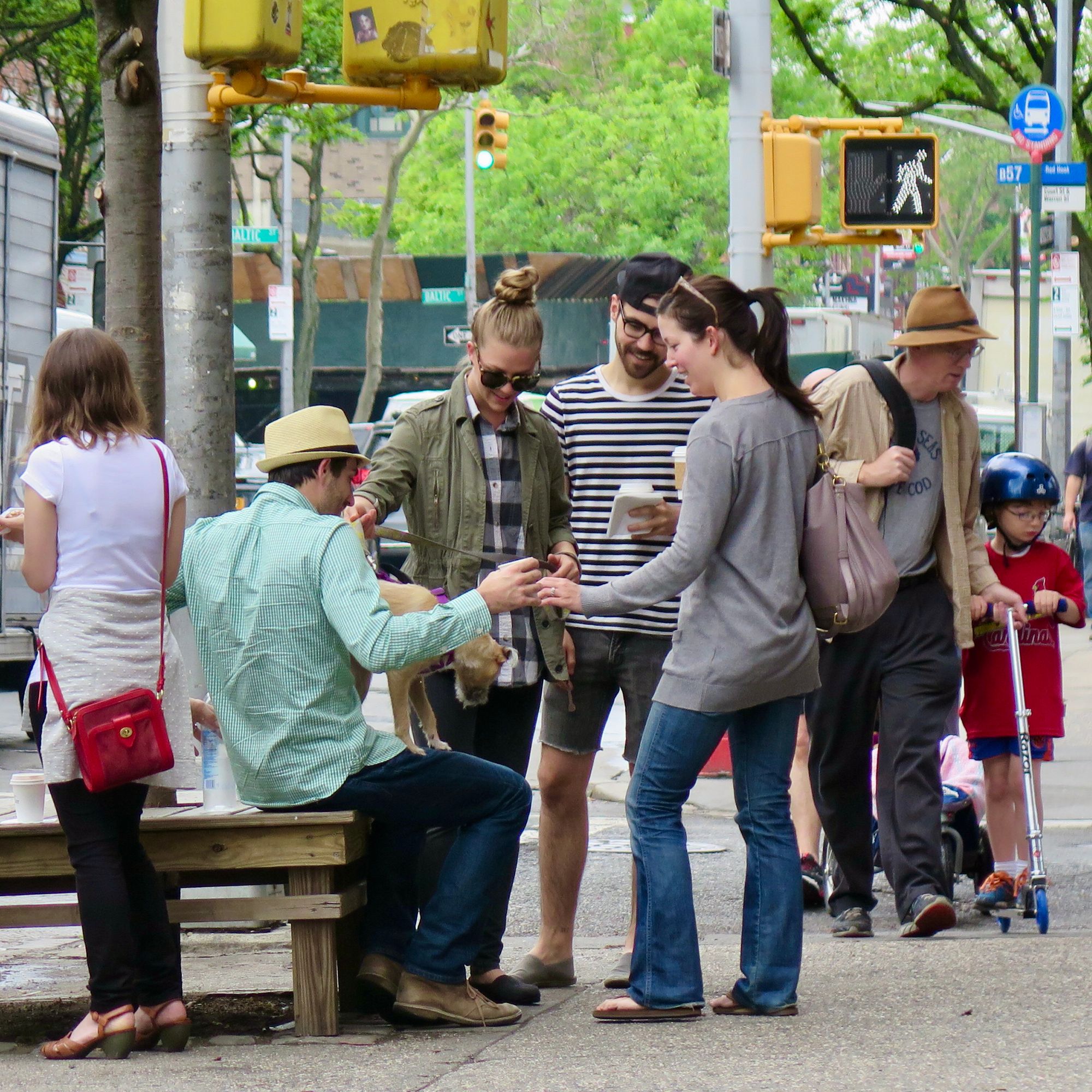
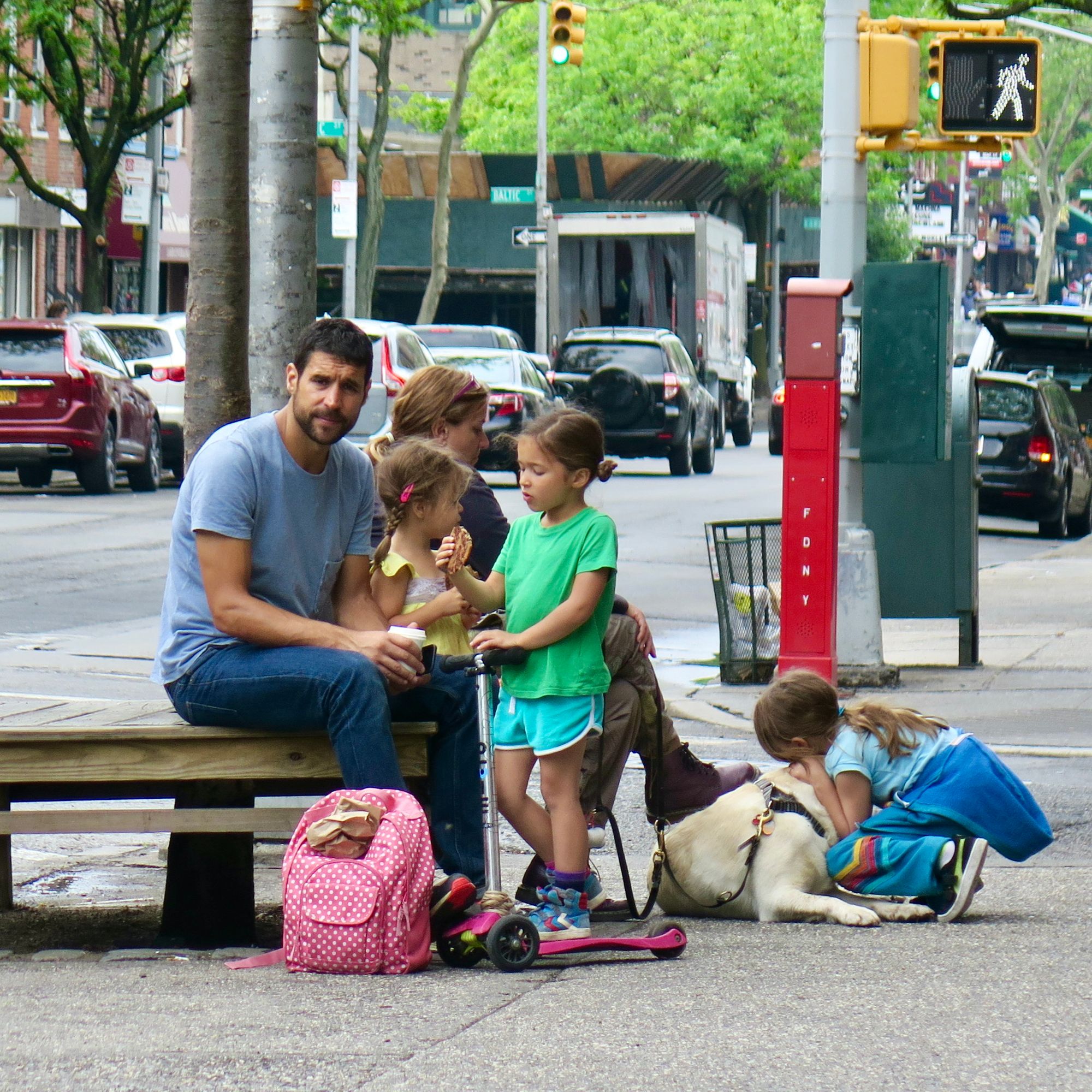
Above, you can see how the square bench with four sides allows for different groups and individuals to interact with each other by providing options for how they can sit and stand around. This flexibility invites people to hang out in different ways. The four different directions means strangers can share the same space without being forced to sit right next to each other like on the standard bench, which makes them feel more relaxed and open to spontaneous interactions.
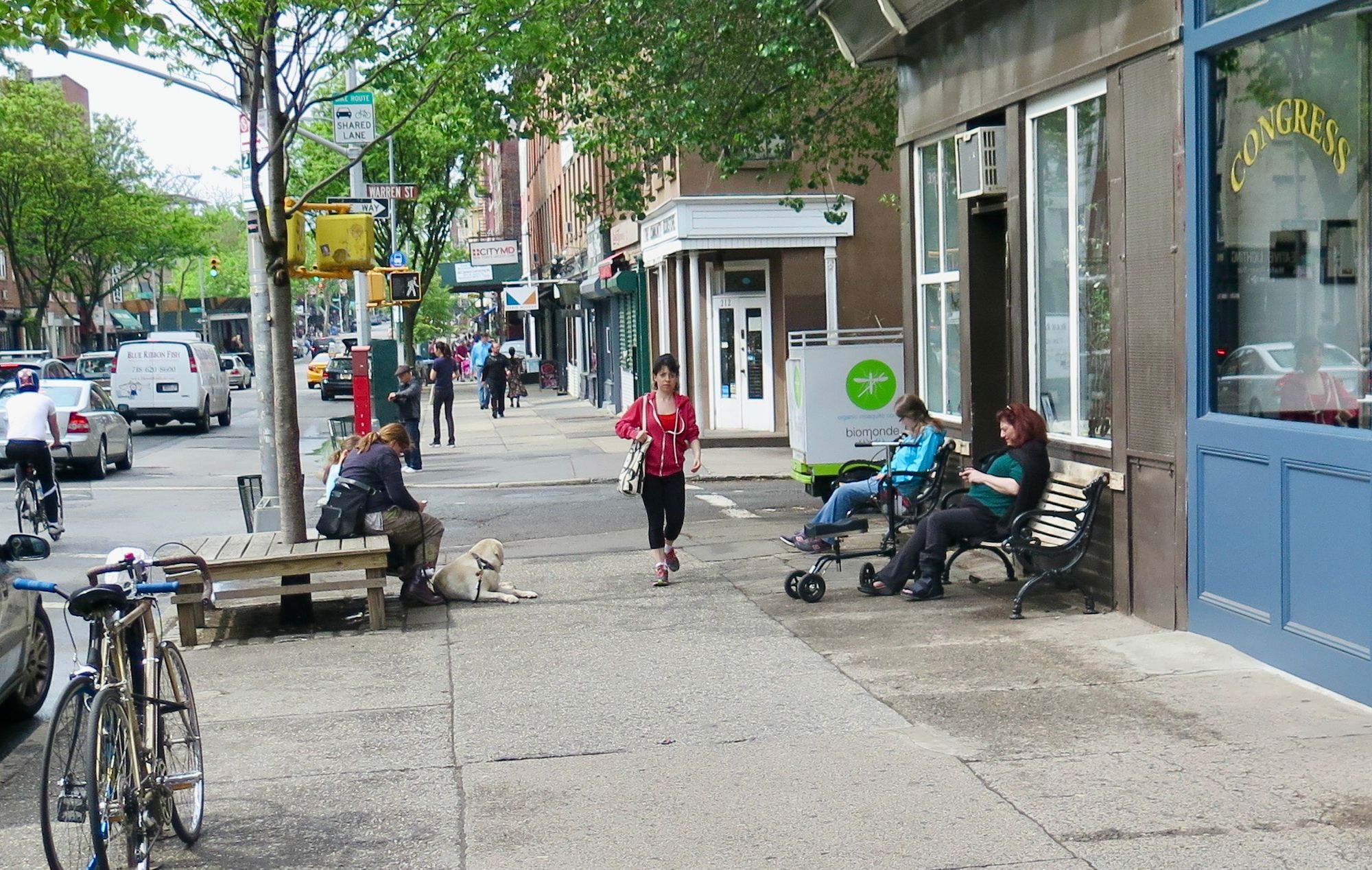
The Tree Guard Bench
The tree guard bench doesn't have to be square. In Munich's famous Victuals Market, this circular bench acts as a tree guard at night and in the morning, when the market opens, the vendors put planks on top of it to serve as seating. It is a simple but smart idea for places where 24/7 benches may not be possible.
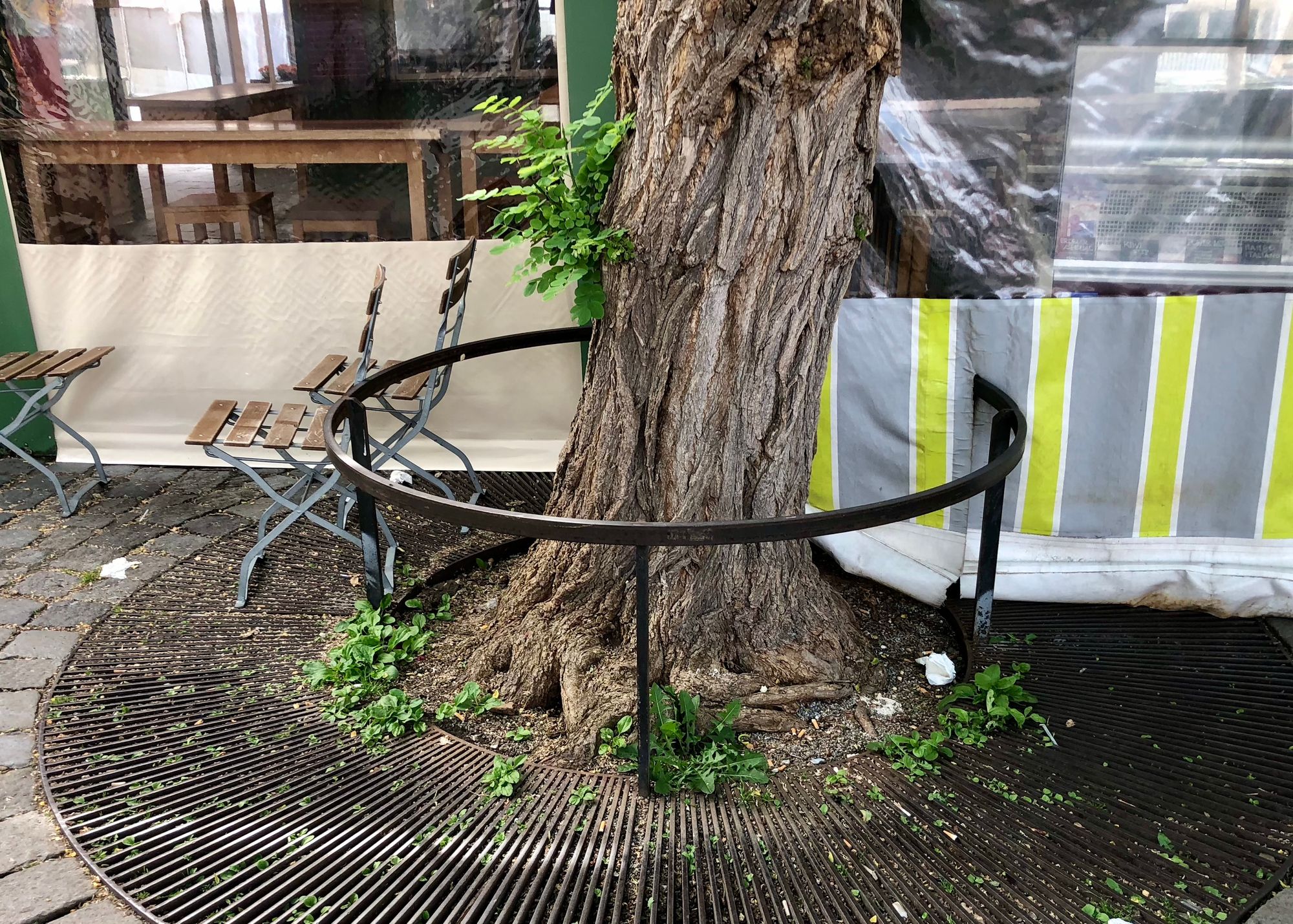
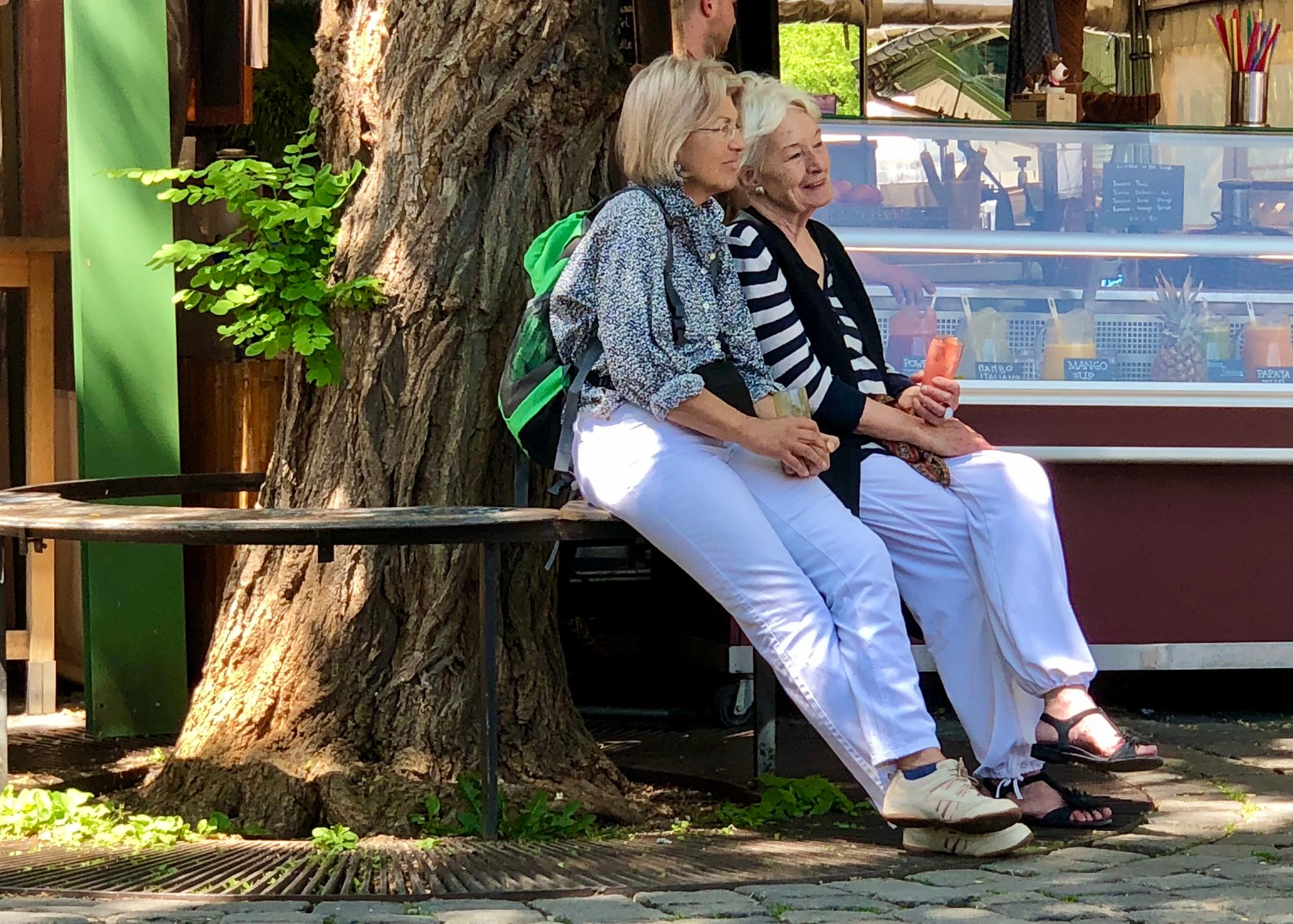

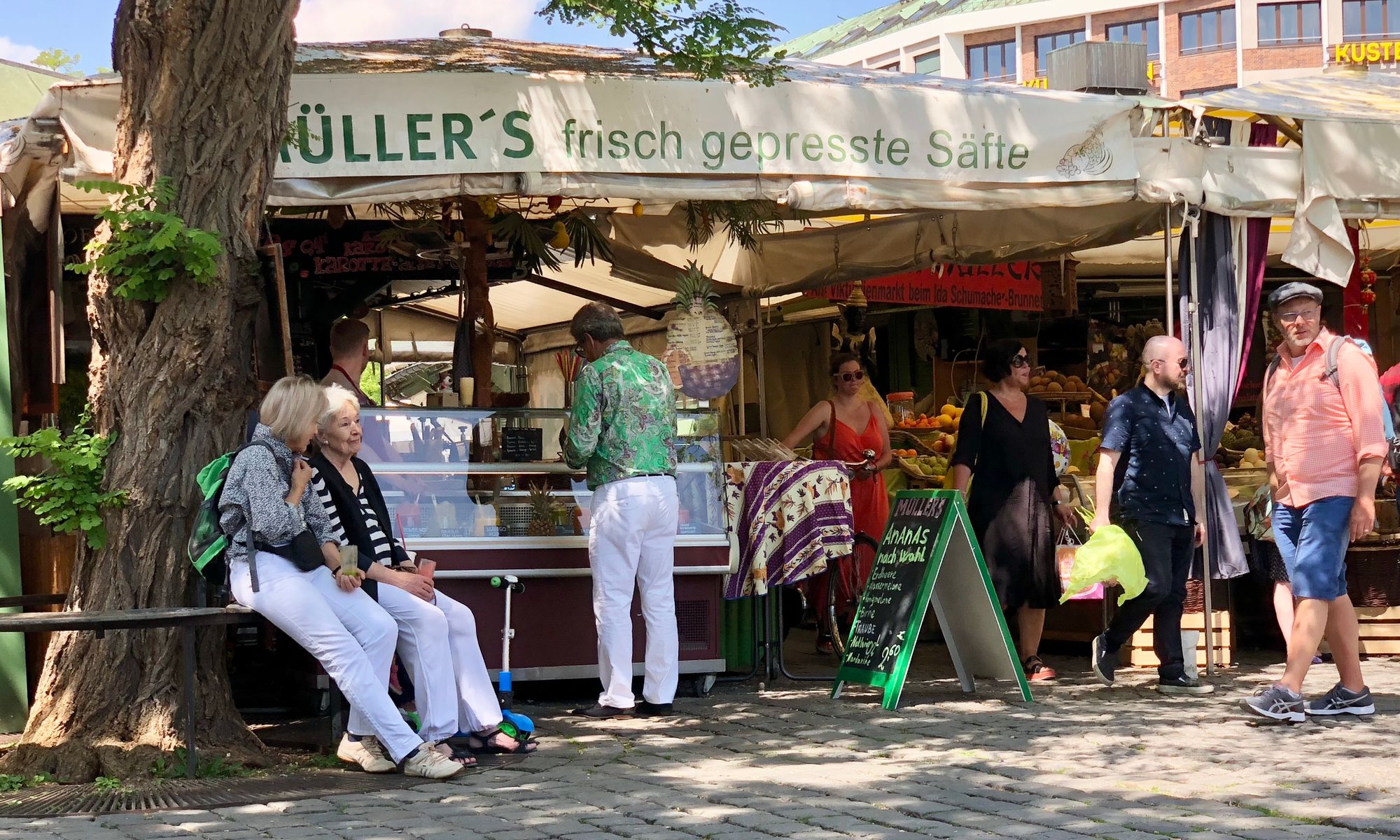
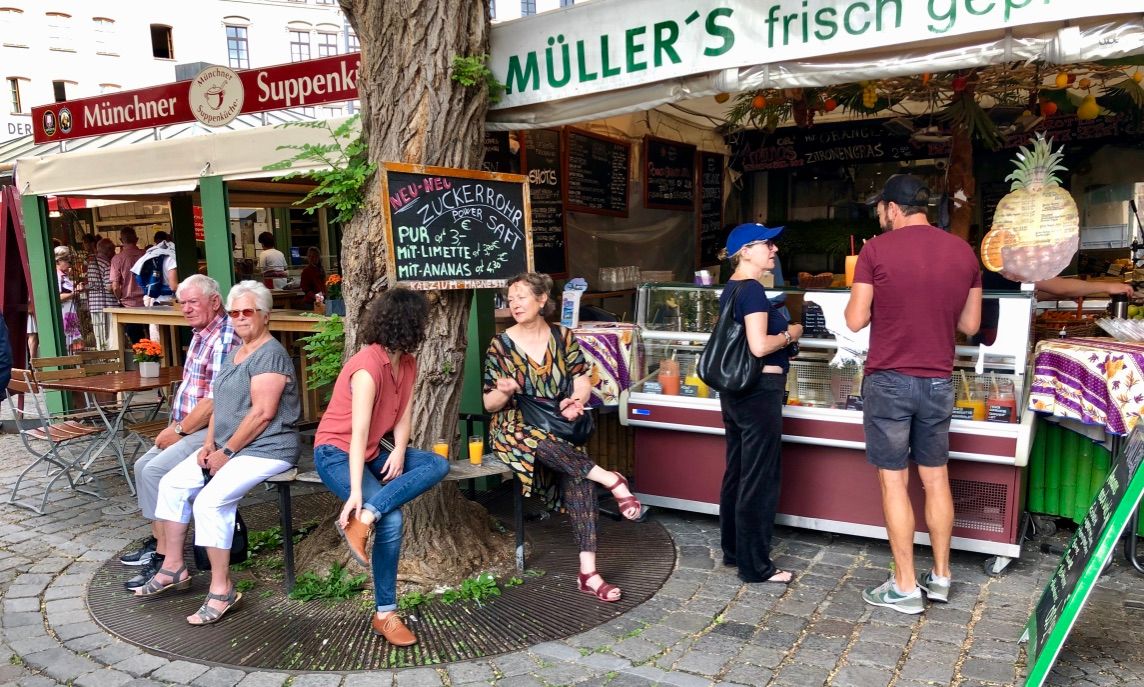
10) The artist-designed bench
Benches are not art pieces that should exist mainly to look interesting and add to an aesthetic. This is something that architects and designers often get wrong – designing benches to look unique or unconventional at the expense of comfort and usability. Benches should be first and foremost welcoming and comfortable. However, if they can be both enjoyable to use and interesting or beautiful to look at, even better.
Barcelona's Iconic Bench
Barcelona's corner seating, designed by famous Catalán architect, Antoni Gaudí, has become a recognizable emblem and key symbol of Barcelona. Barcelona's Passeig de Gracia takes the grand prize for great corners, with its numerous canted corners combined with artful benches and stunning architecture, which together create unique mini "plazas" all along the street.
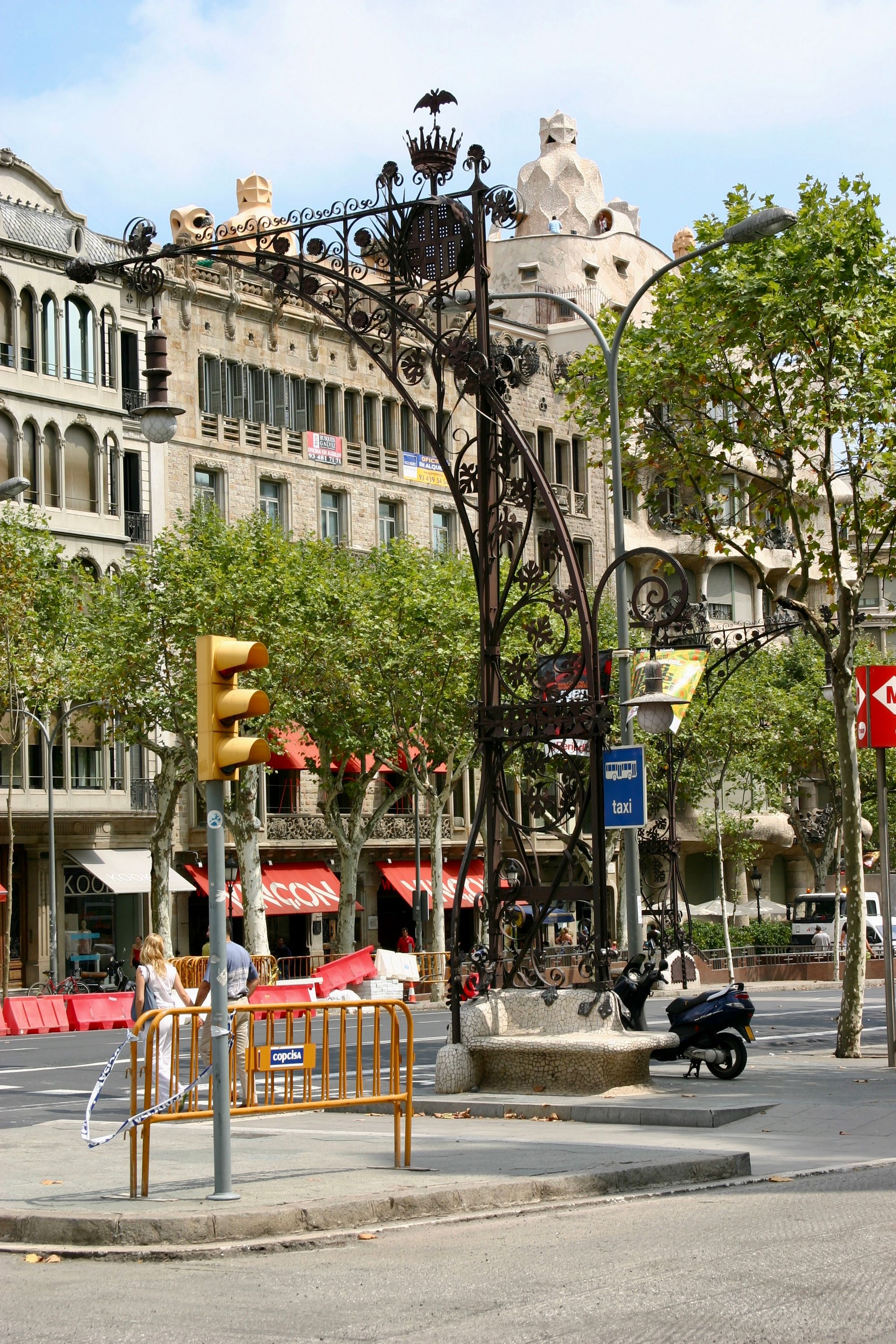
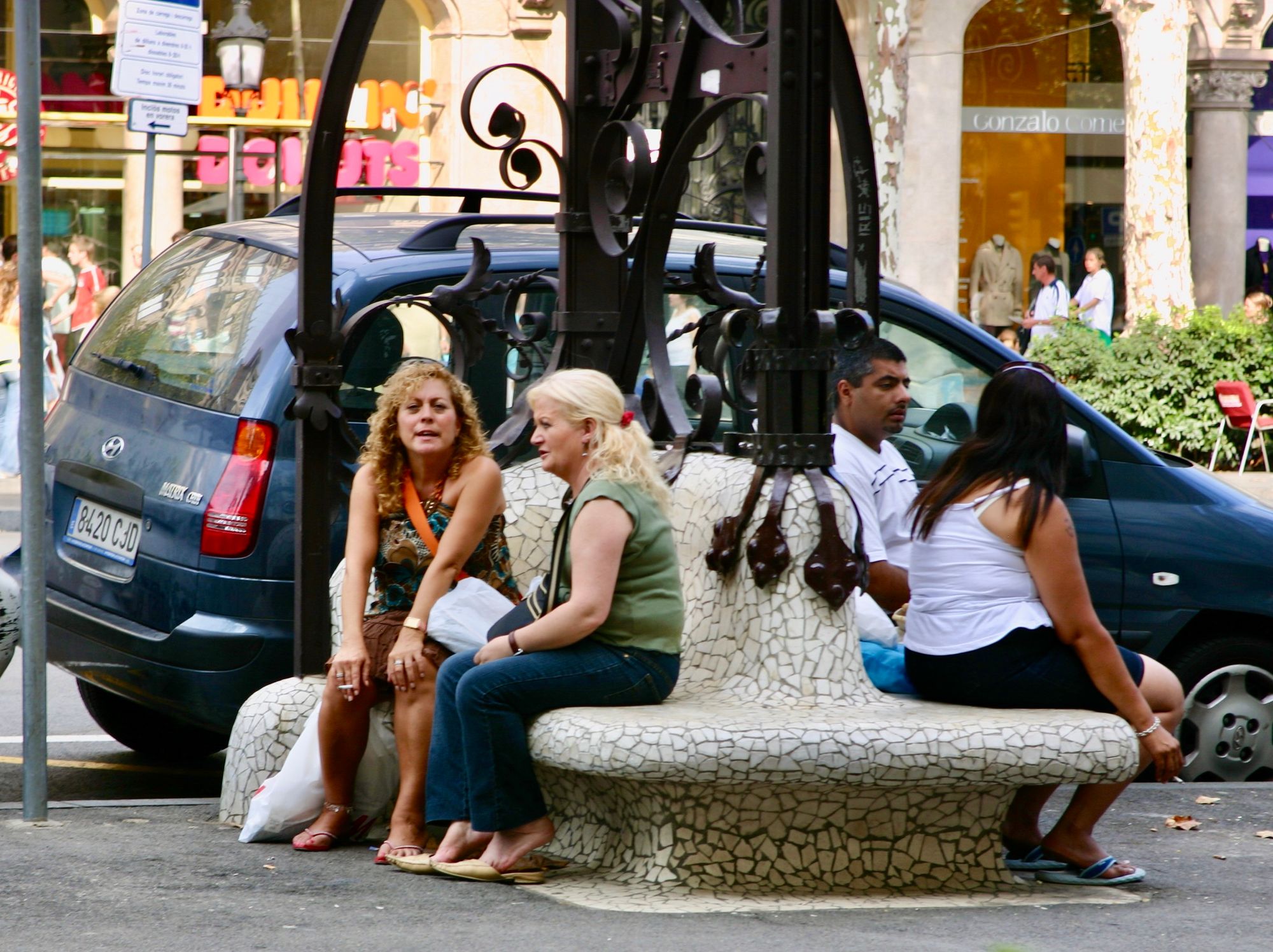
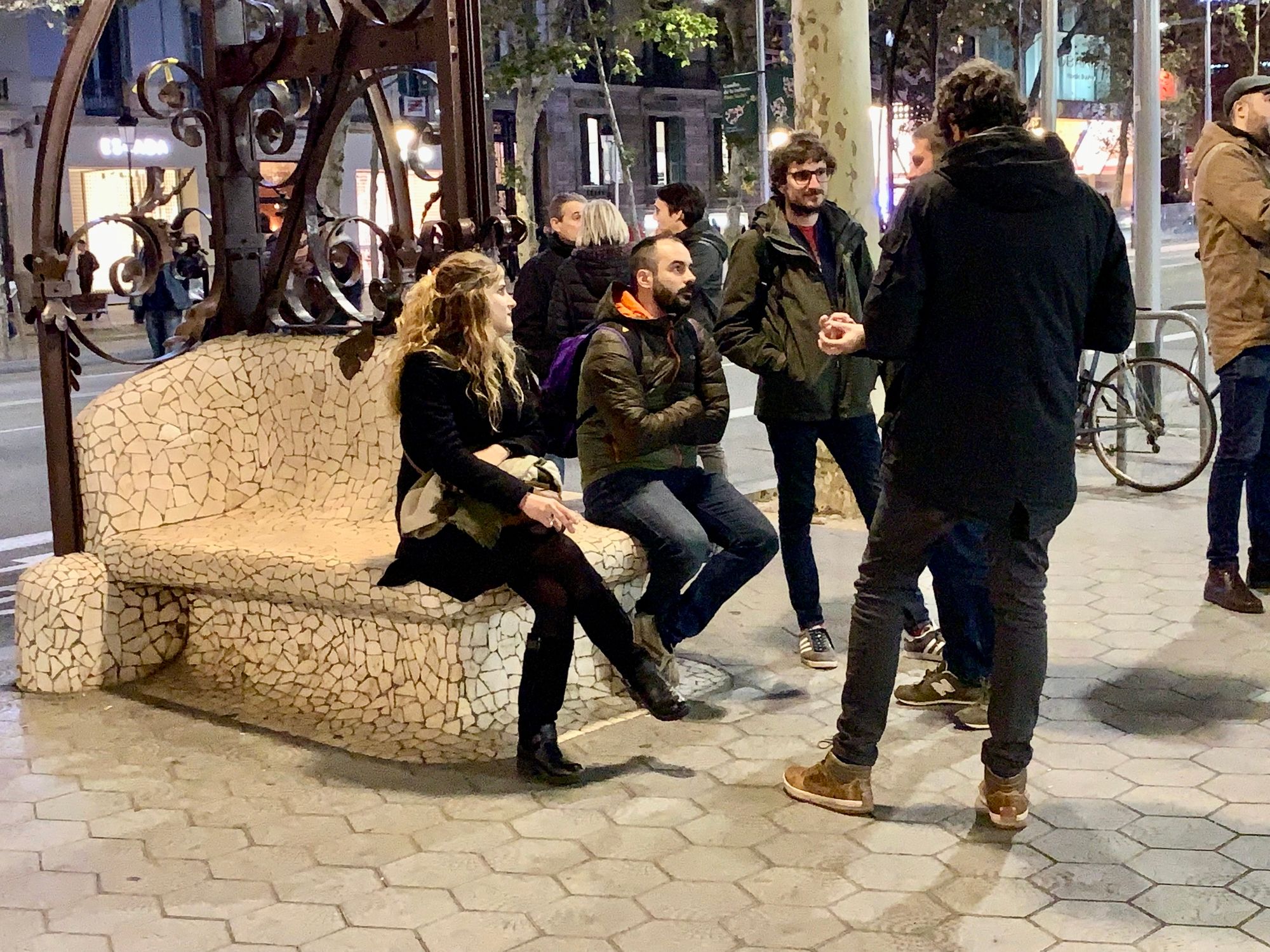
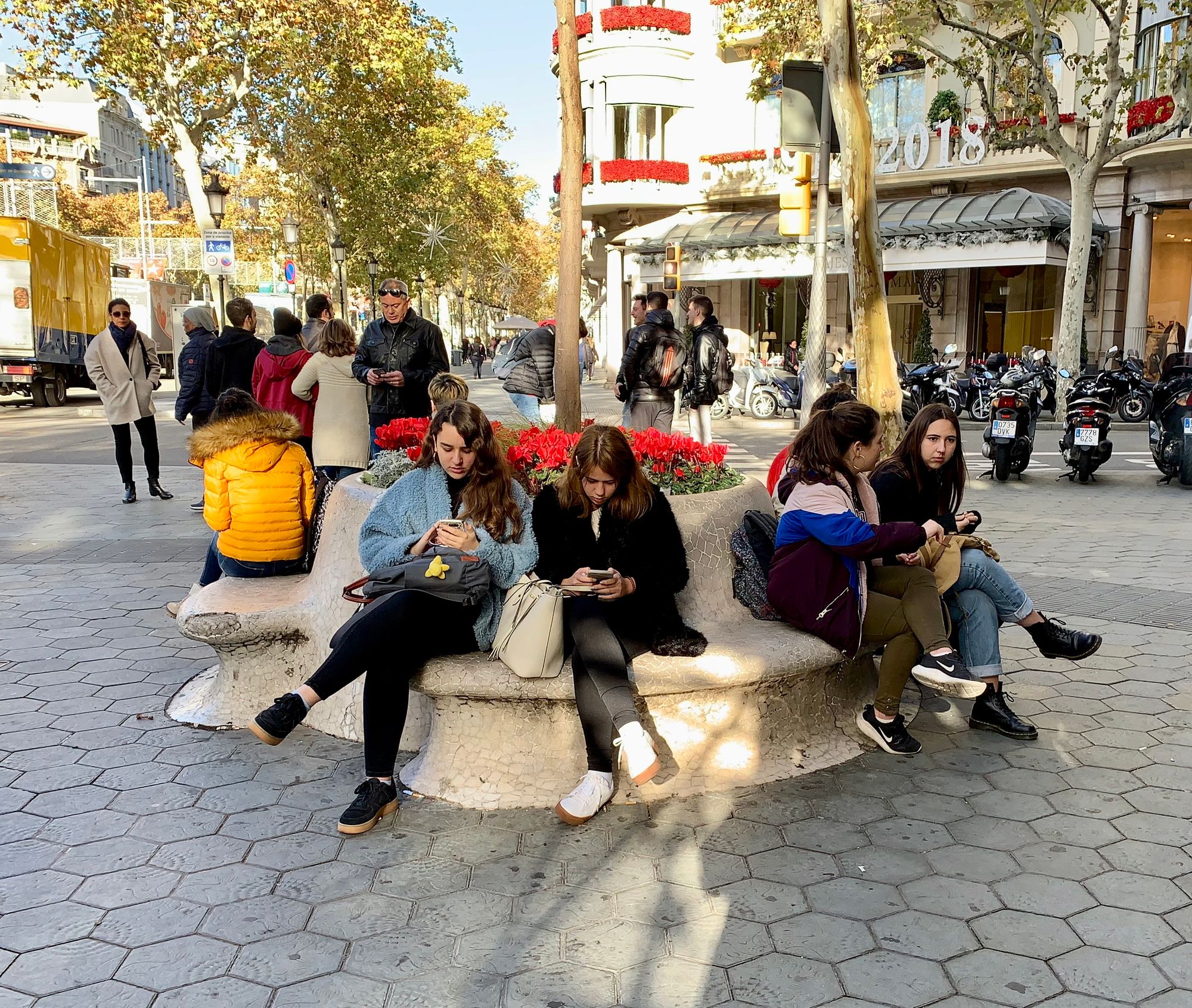
Zurich's Artistic Benches
On the unique benches in Zurich, people are invited to express themselves and feel at home. They seem to be almost performing or acting as though they were sitting on their front porch or in their living room. The benches reflect and respect the different kinds of personalities found in the city, and were likely chosen for exactly this reason. The people here are having fun and at ease since these places to sit communicate an acceptance of uniqueness, joyfulness and character.
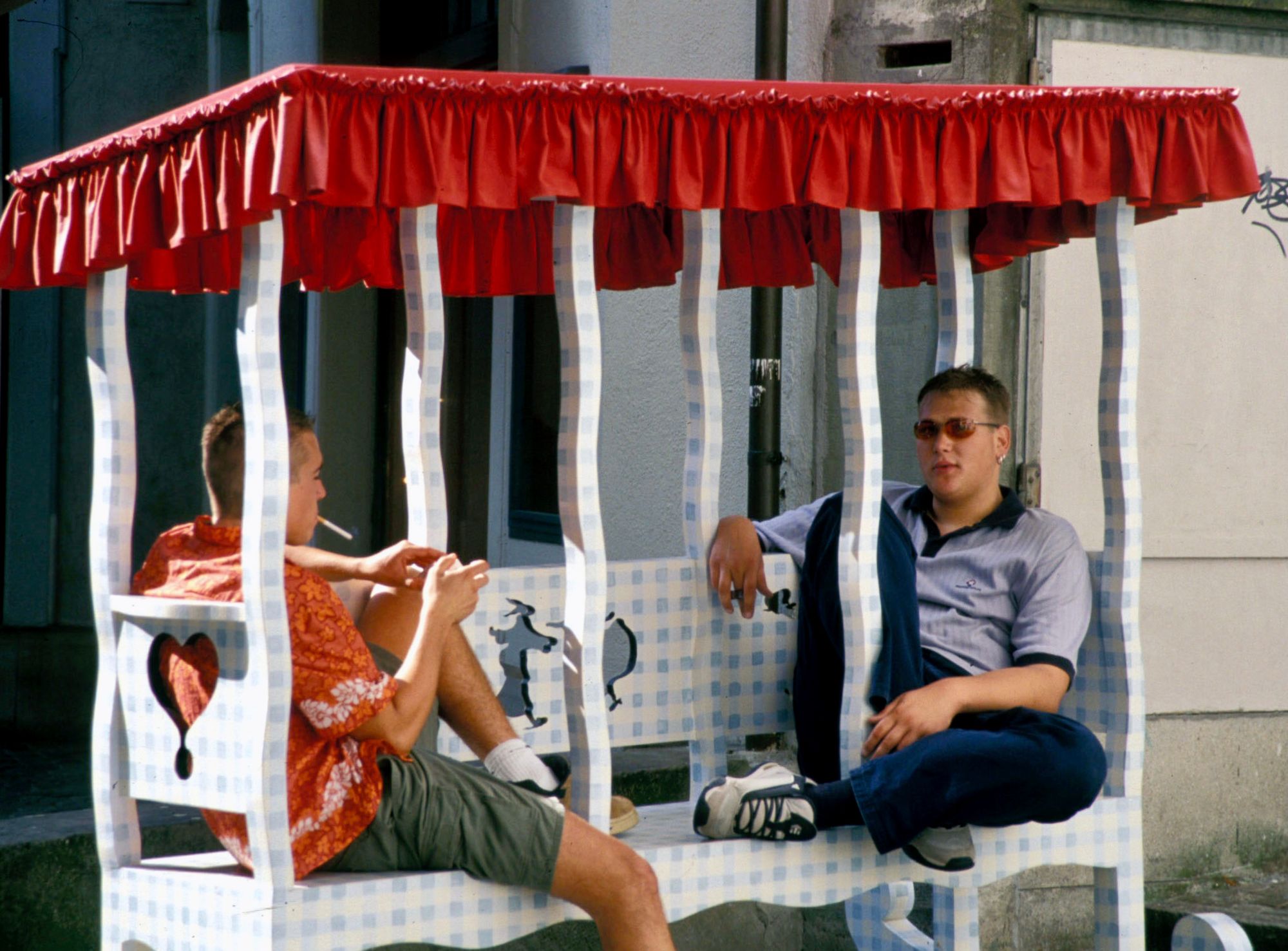
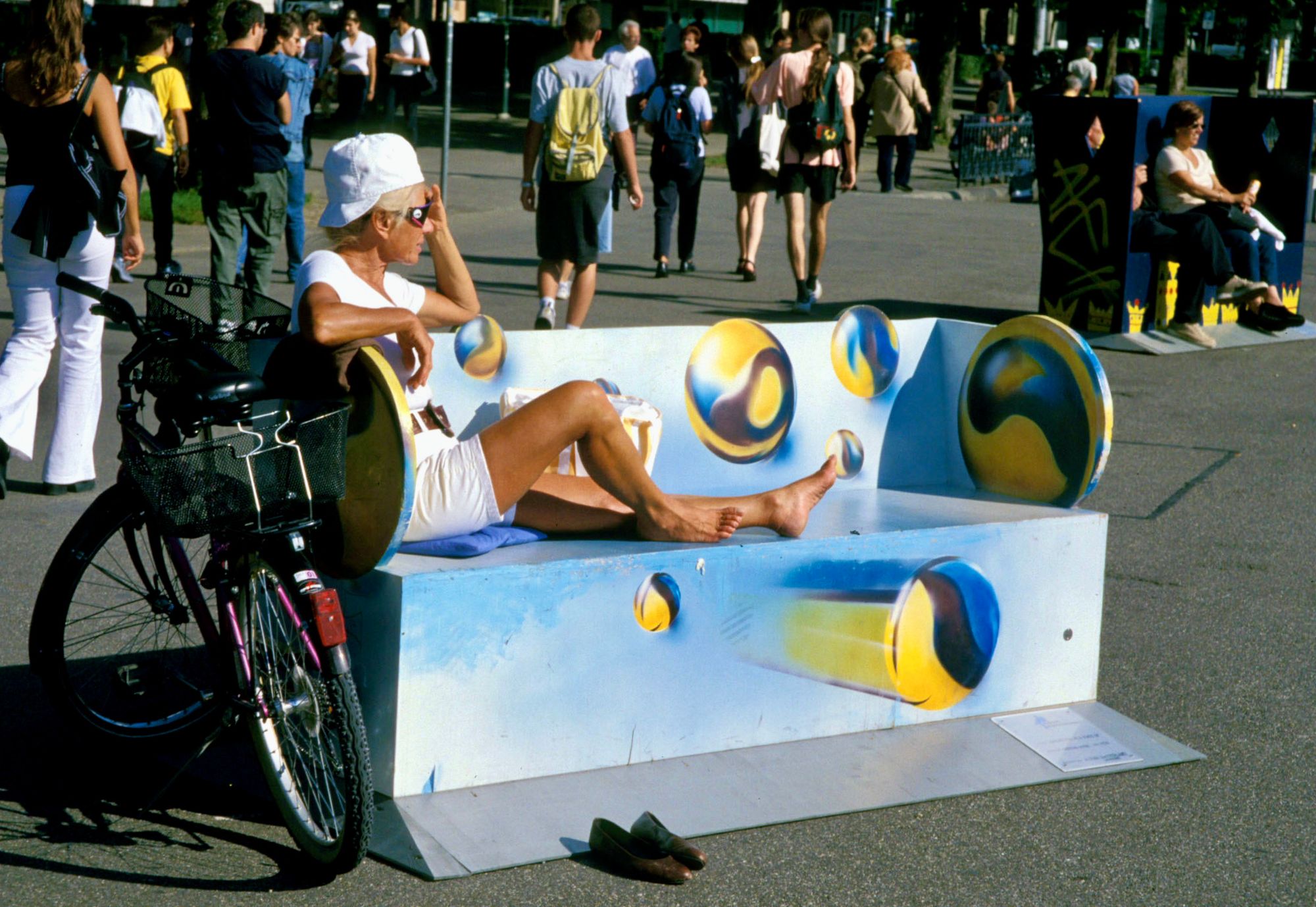
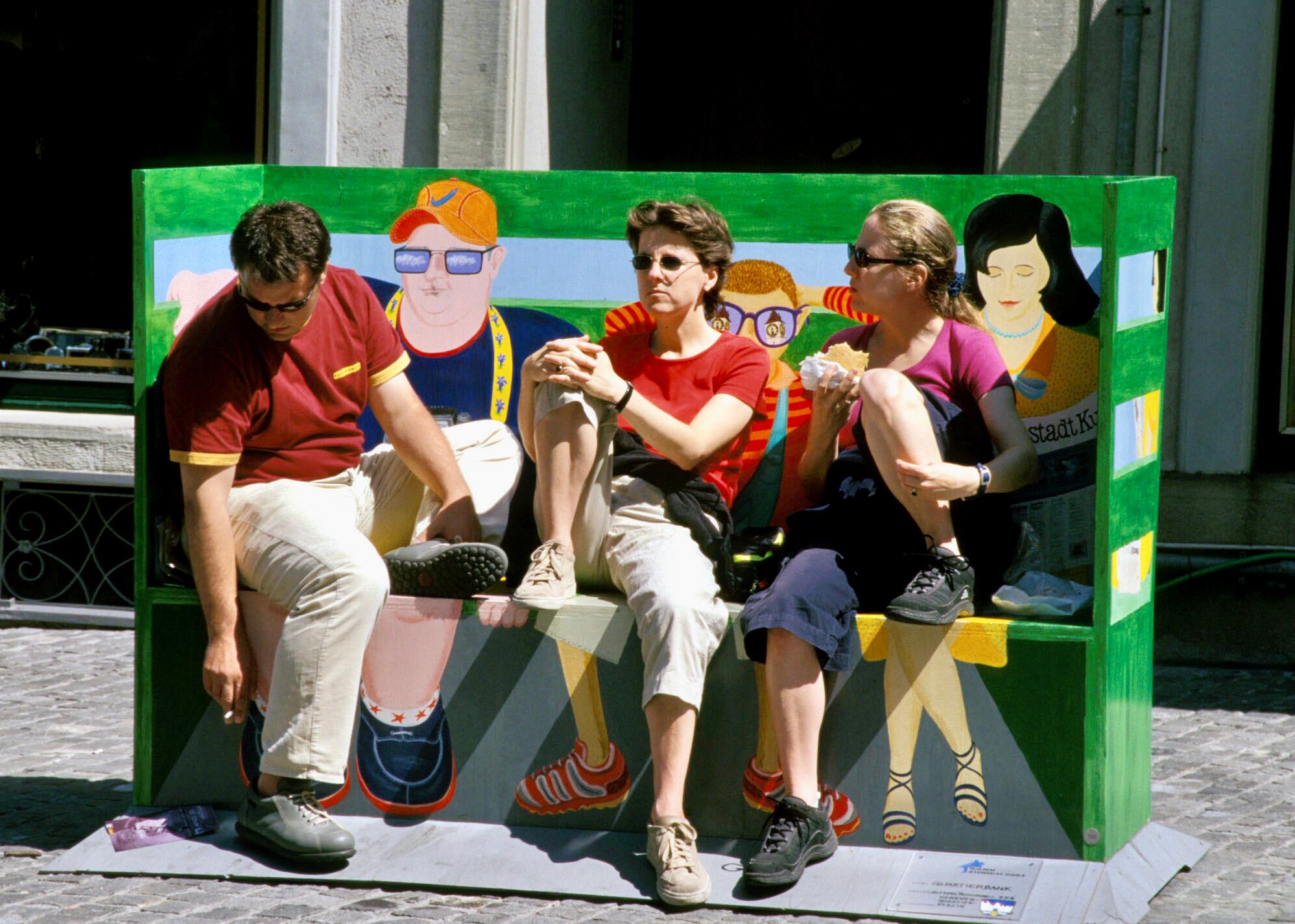
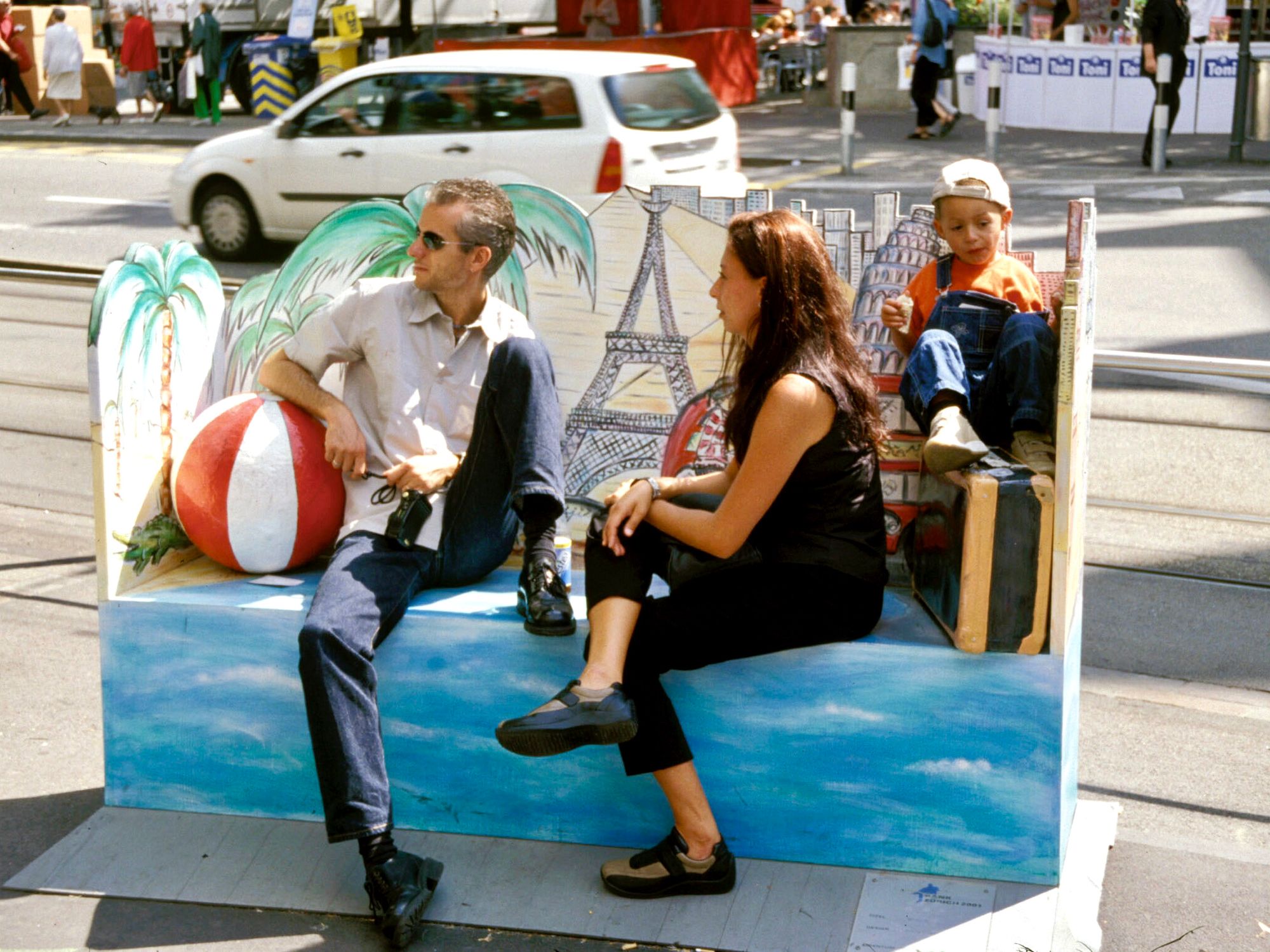
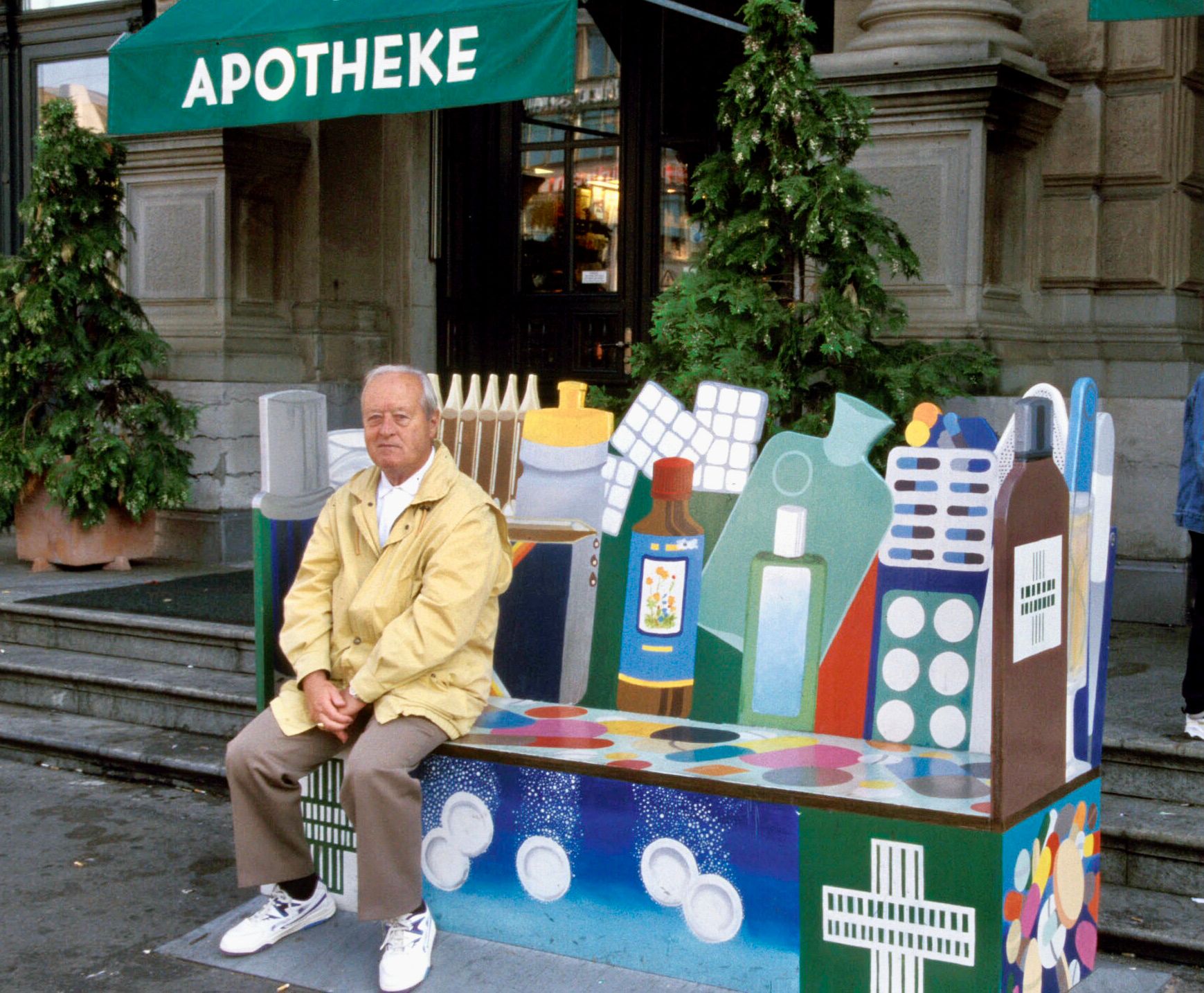
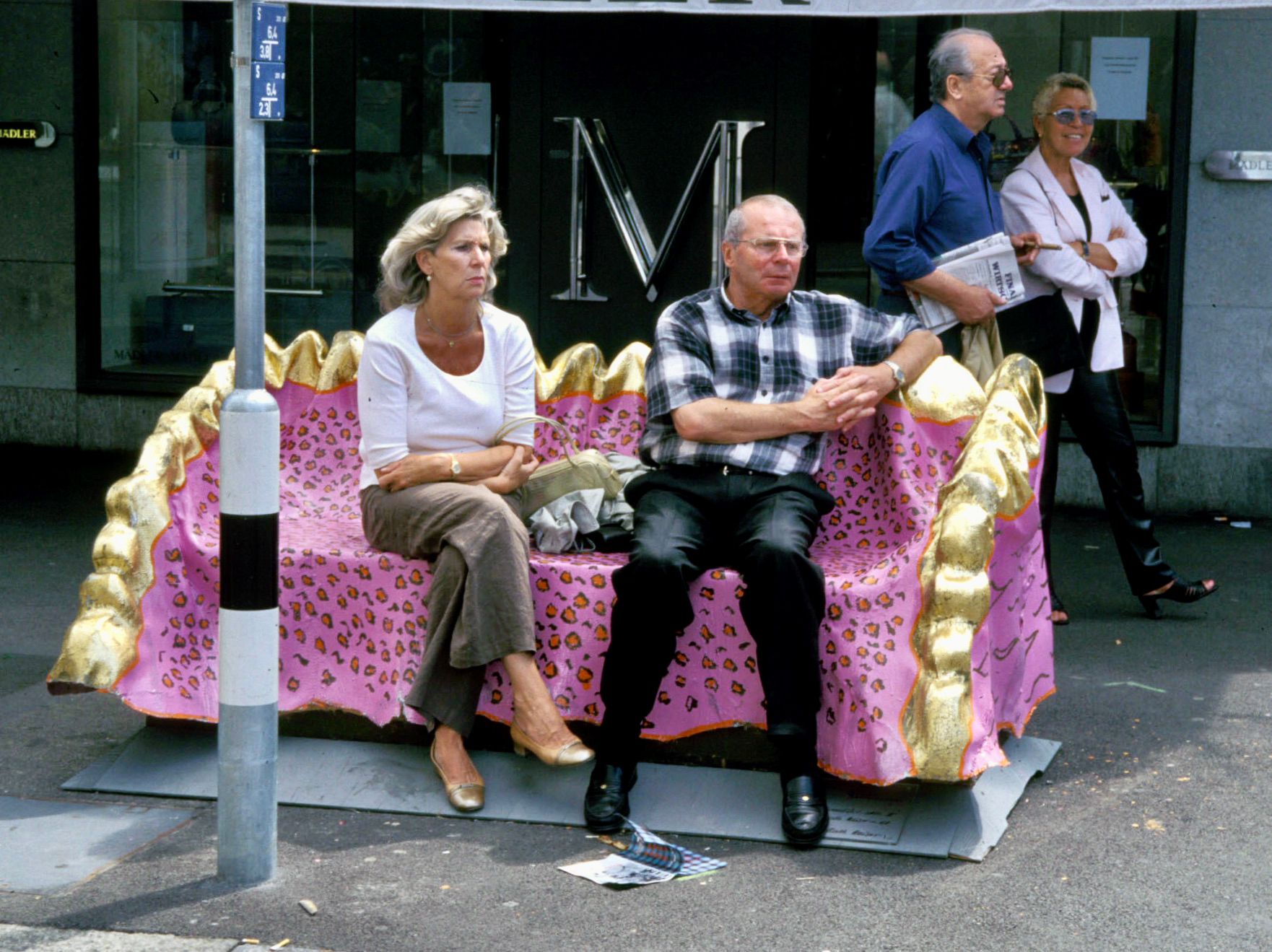
Benches that reflect personality, where people thrive
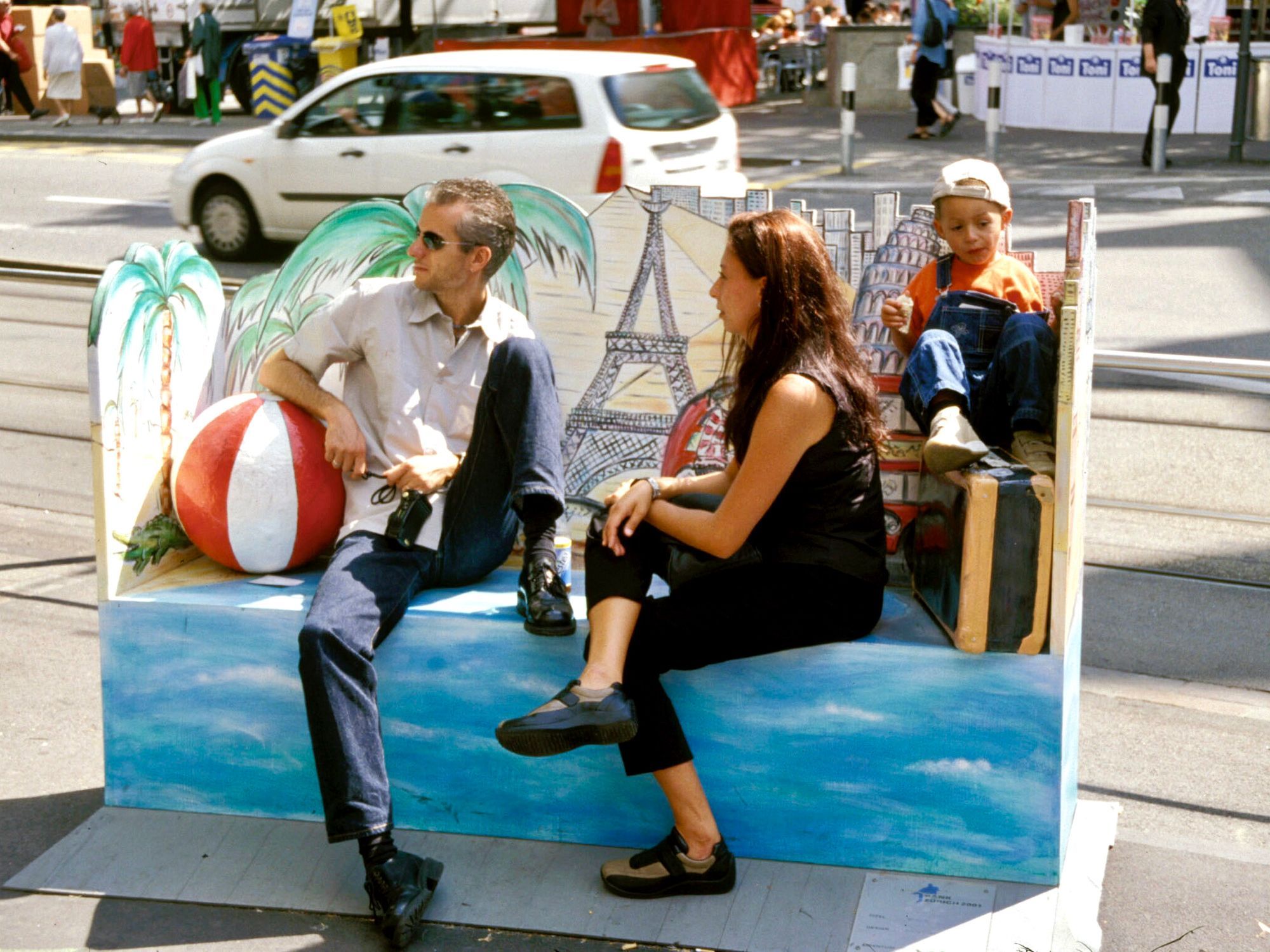
Adding art and statues to benches is an effective way to invite people to sit, interact and have a fun experience.
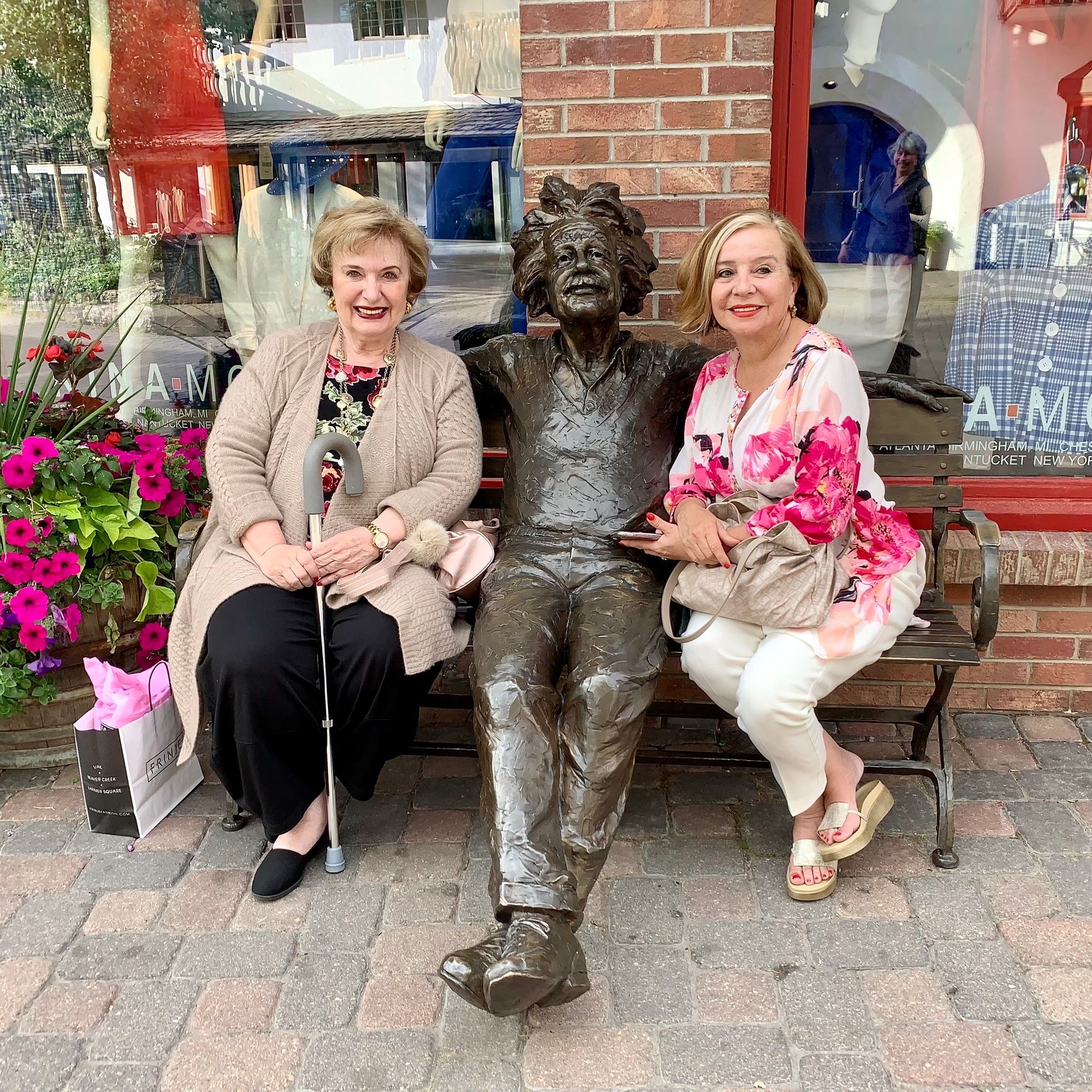
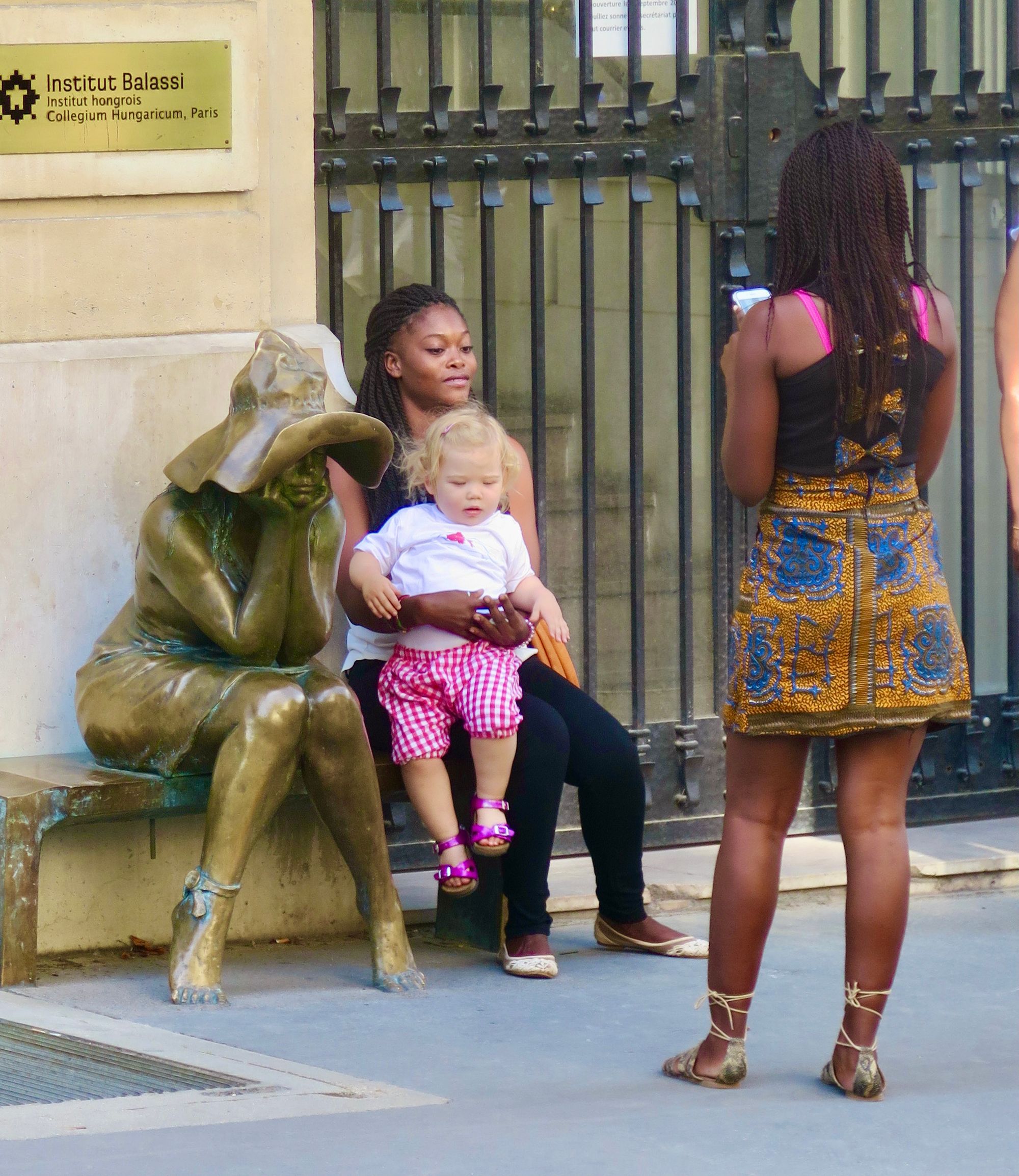
Vail, Colorado and Paris, France
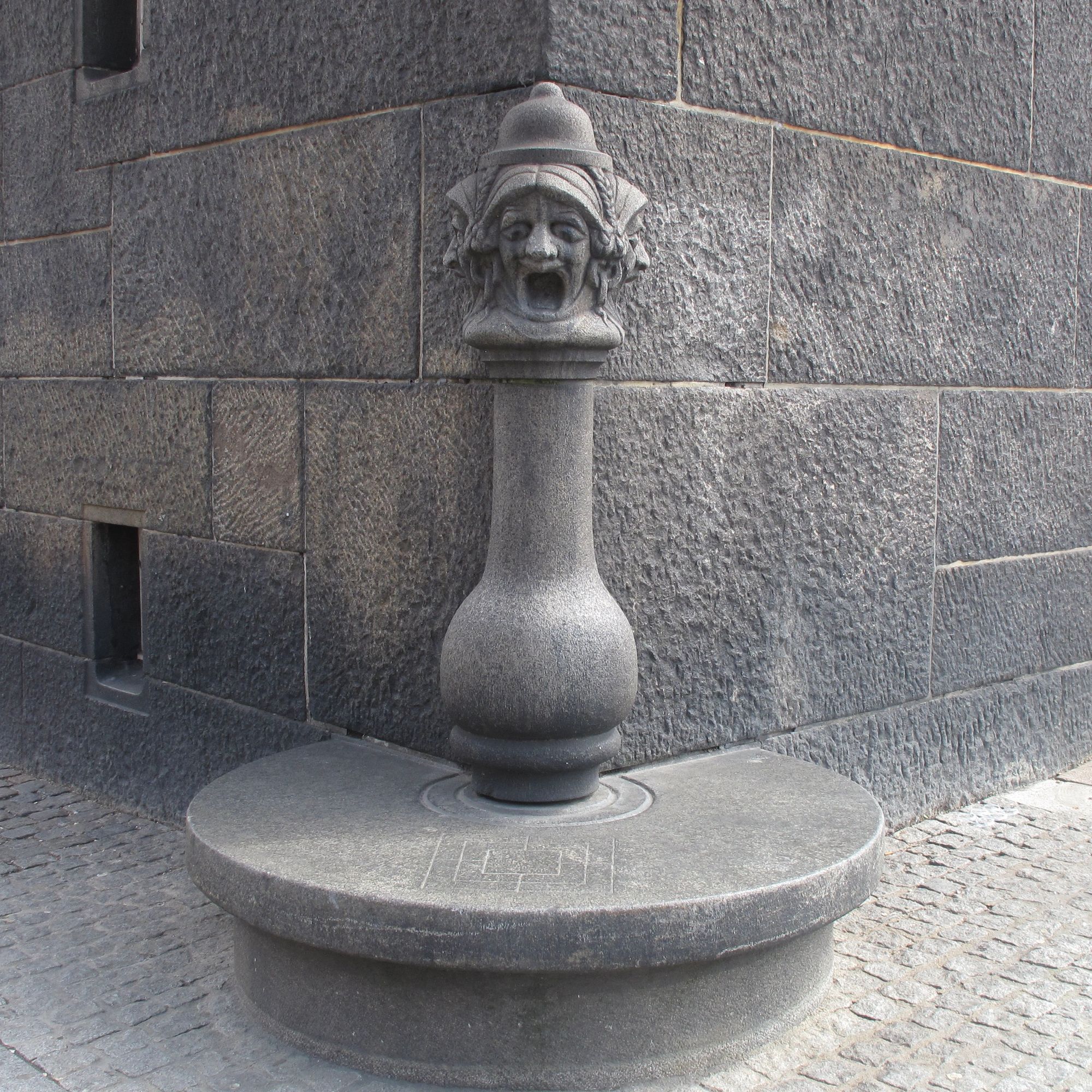
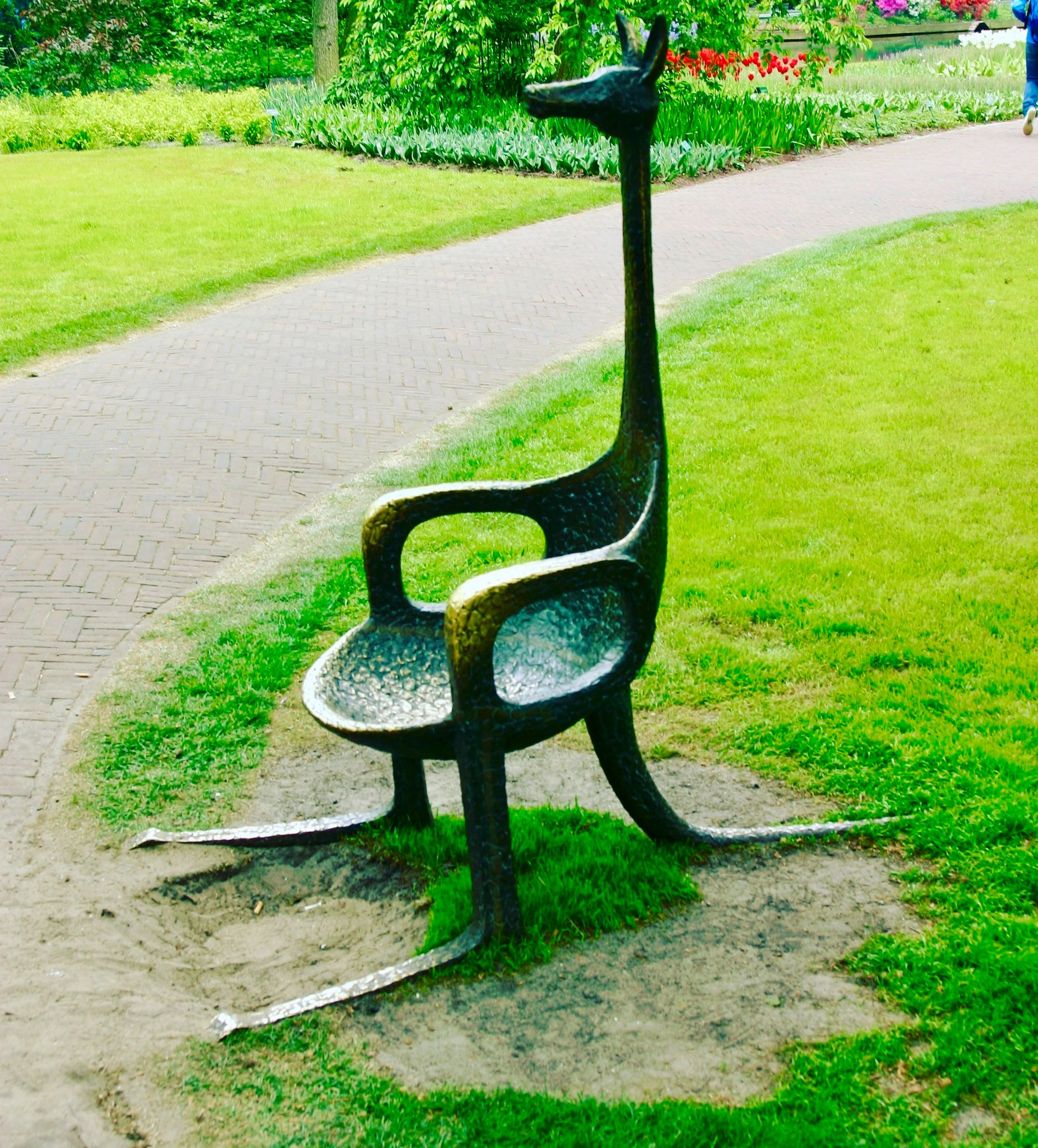
Plaza de España, Seville
Seville's historic benches are some of the best examples of benches that are both beautiful and functional.
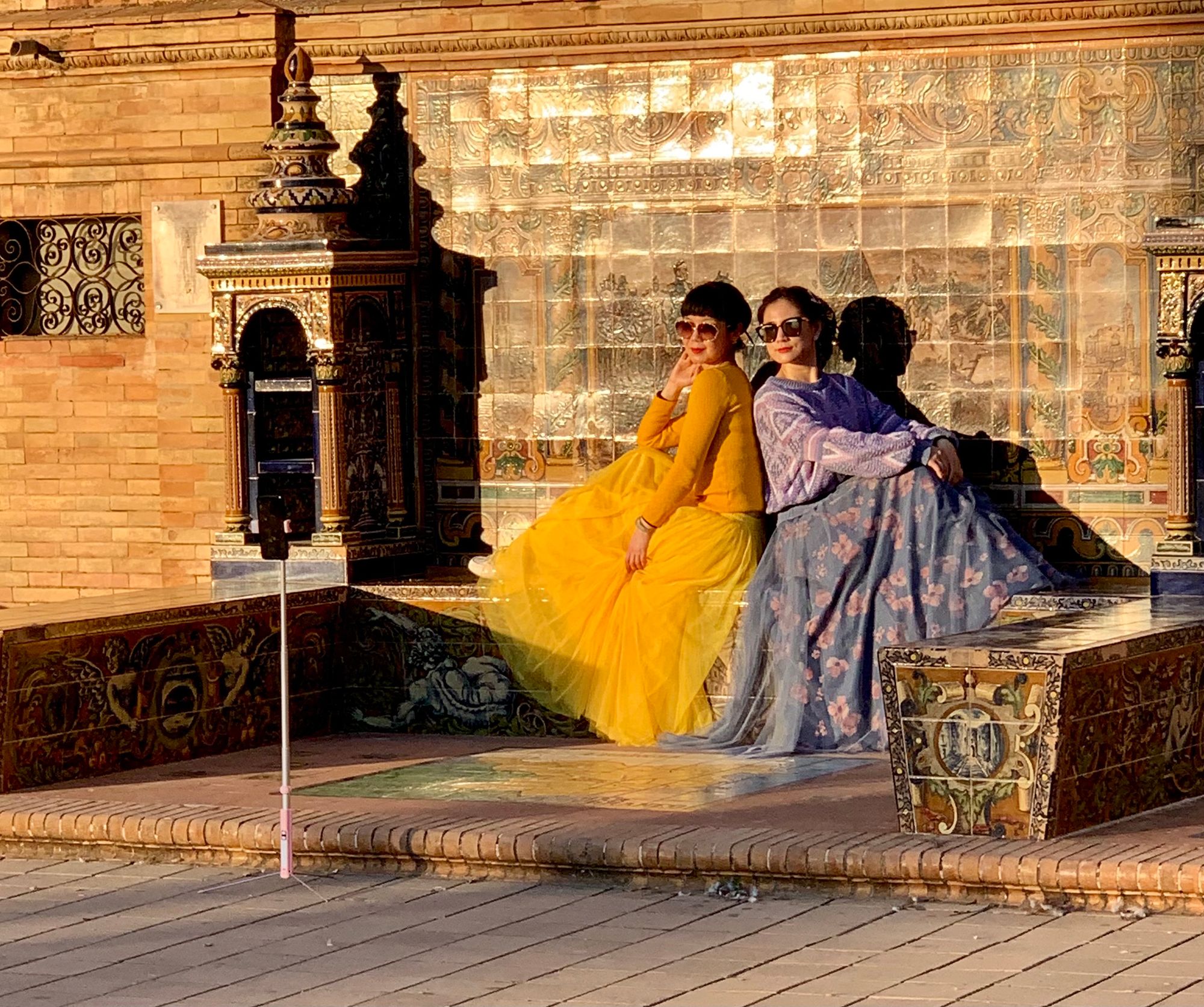
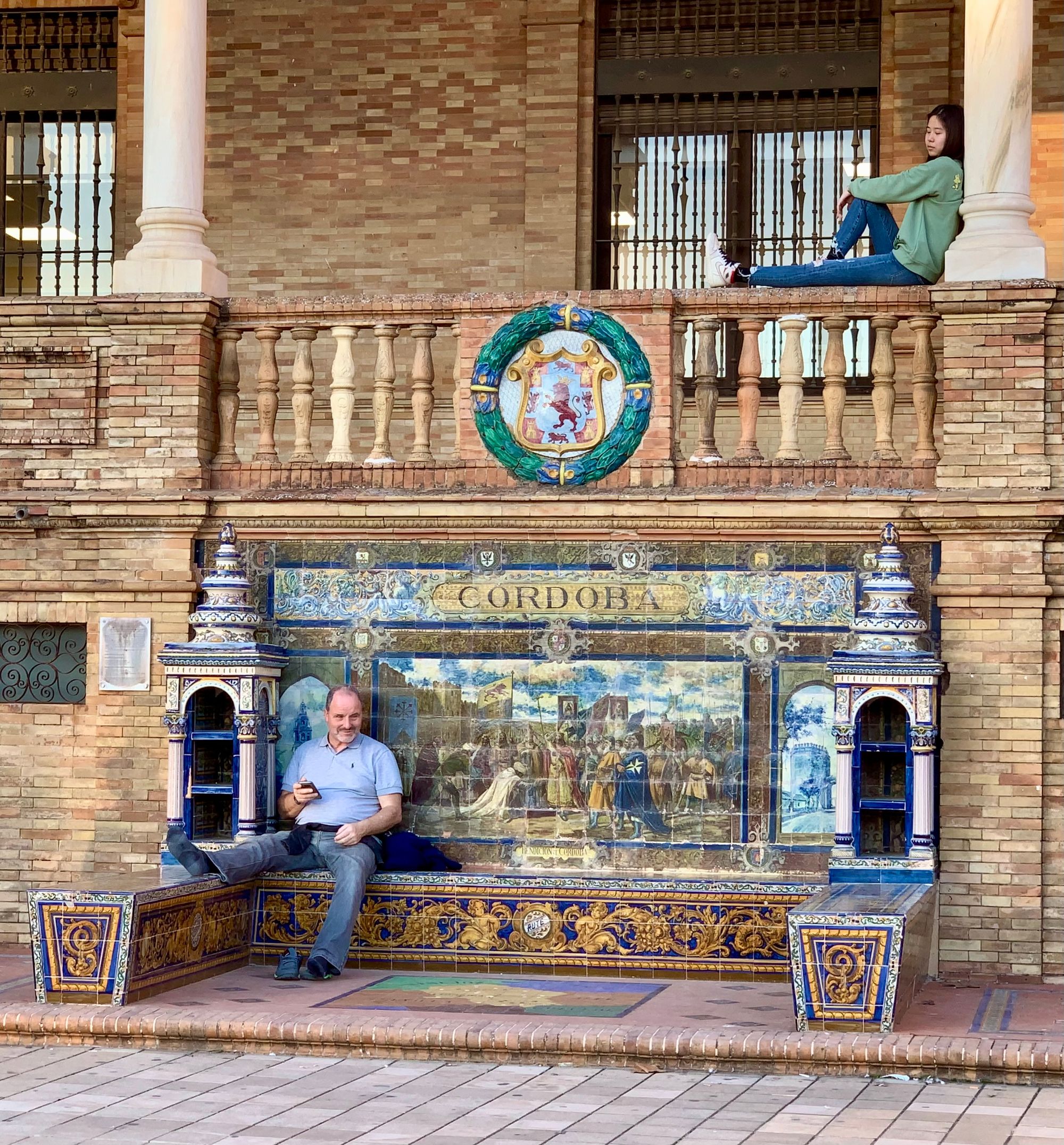
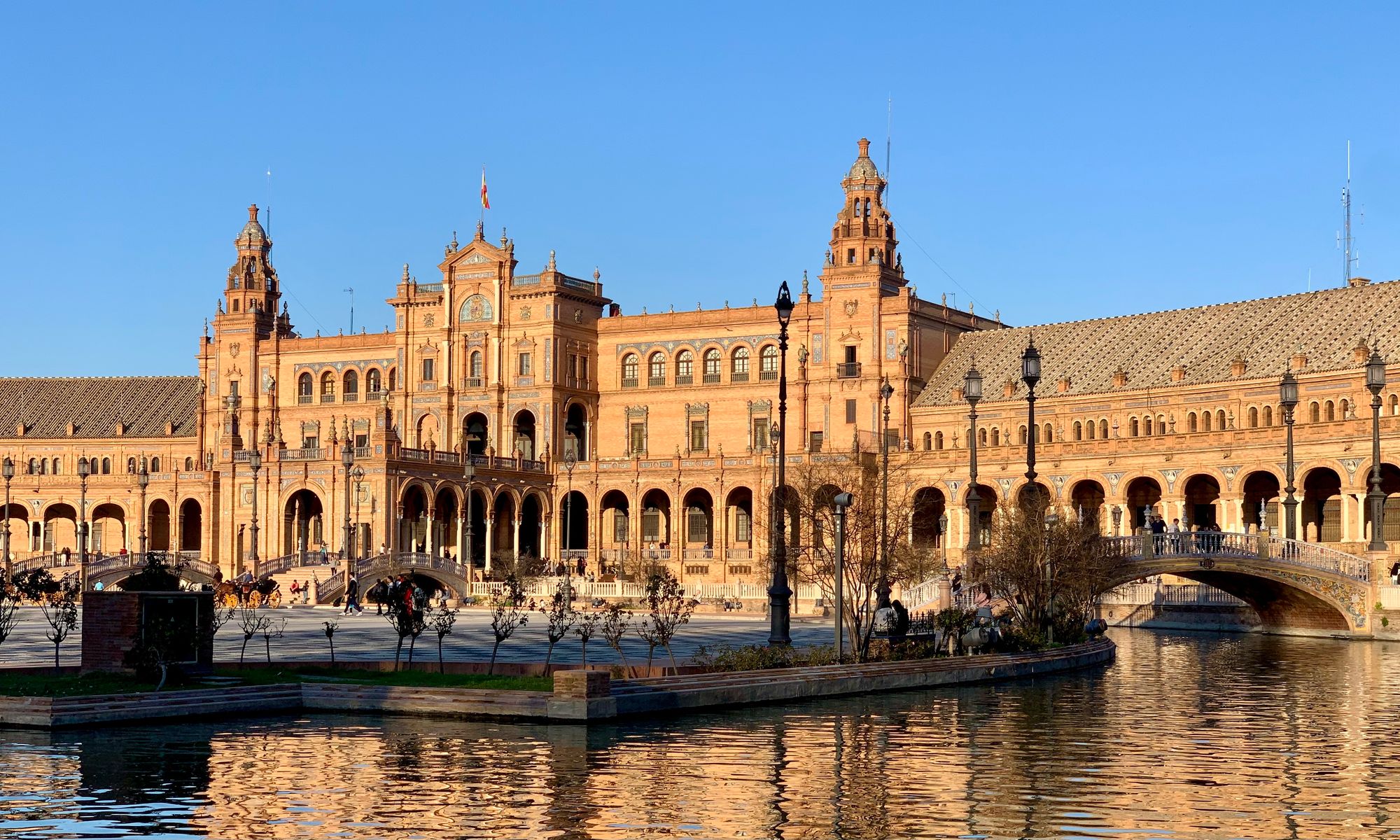
Creating Corner Hubs – The Ultimate Goal
A hub is a multi-layered, multi-use destination. It is a relatively compact area where numerous things are happening at the same time and which therefore attracts people and social activity. A hub can be small area, like a coffee shop next to a book store across from an ice cream truck. Or it can be a larger area like a quadrant of a square or park. The characteristic feature of a hub is a buzzing energy of social and commercial life that draws people in.
Benches by the Farmacy and MozzLab
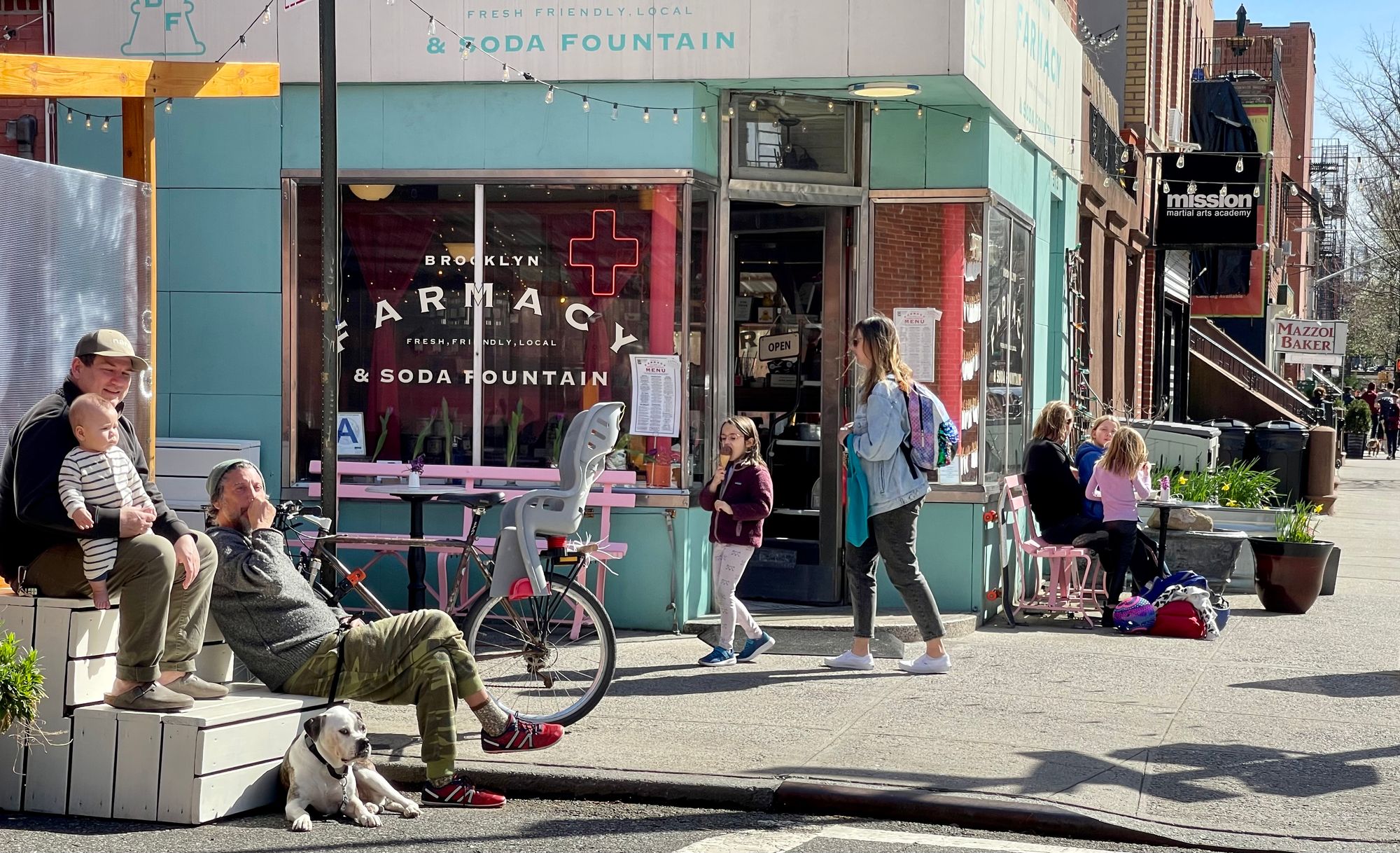
On Henry and Sackett St. there is an example of exceptional seating. The intersection has public seating on three corners. It is a remarkable setting for people to come together, and it's available 24/7. You don't have buy anything to enjoy the benches at this intersection – they welcome everyone in the community. On one corner there is a soda fountain called the Farmacy that draws mostly children and a younger crowd; however, older folks are welcome too and we love to stop by for a root beer float on hot days.
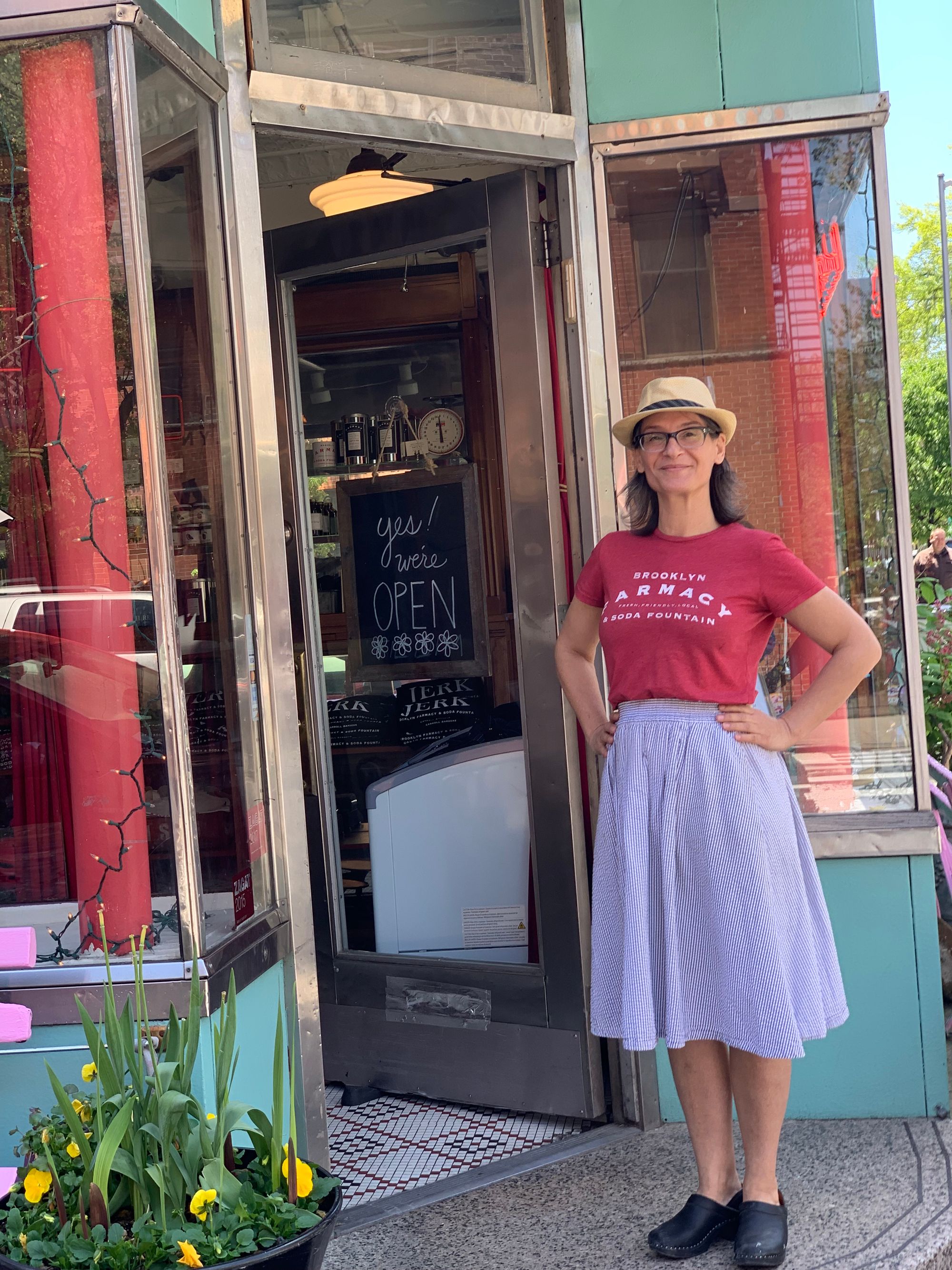
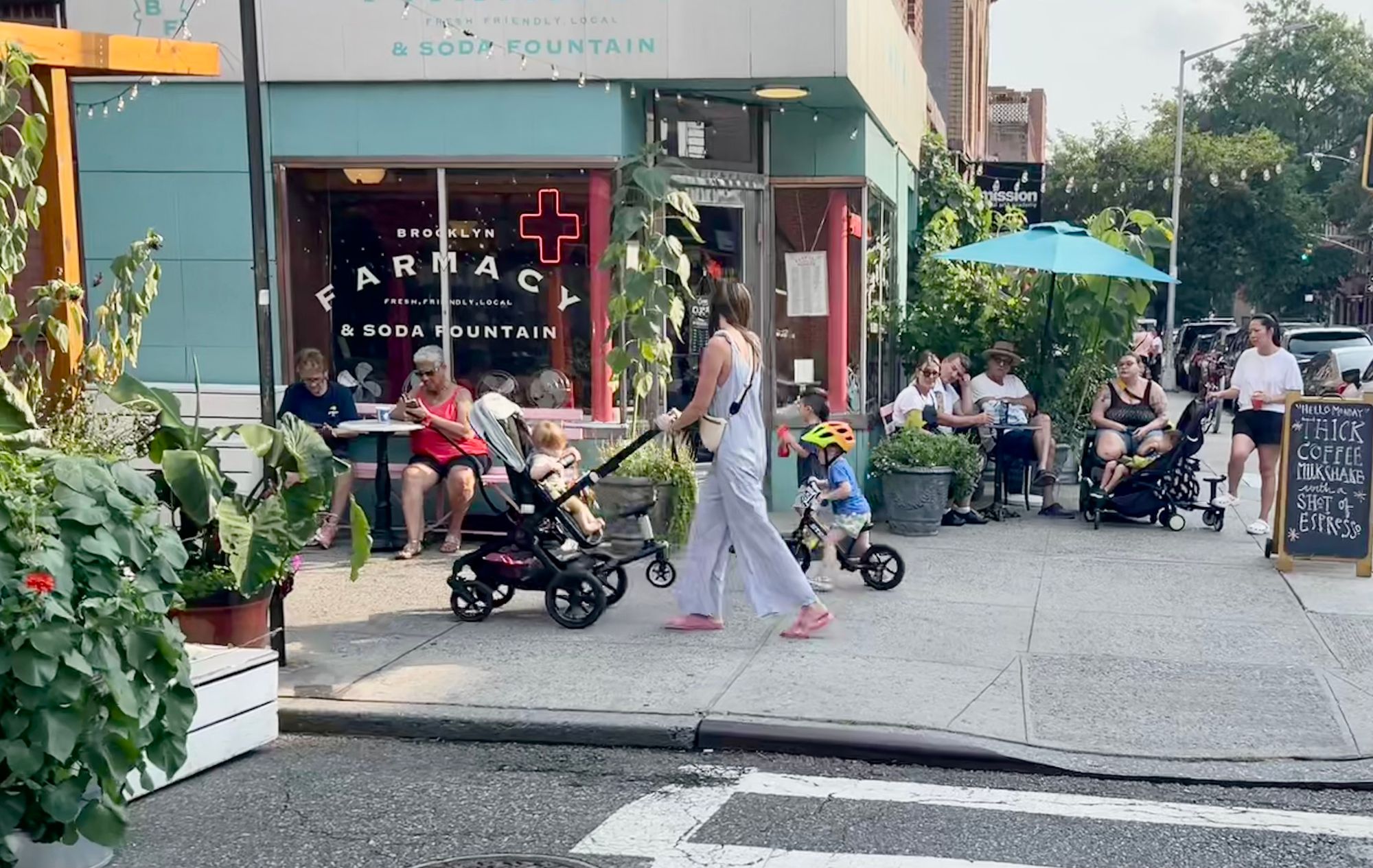
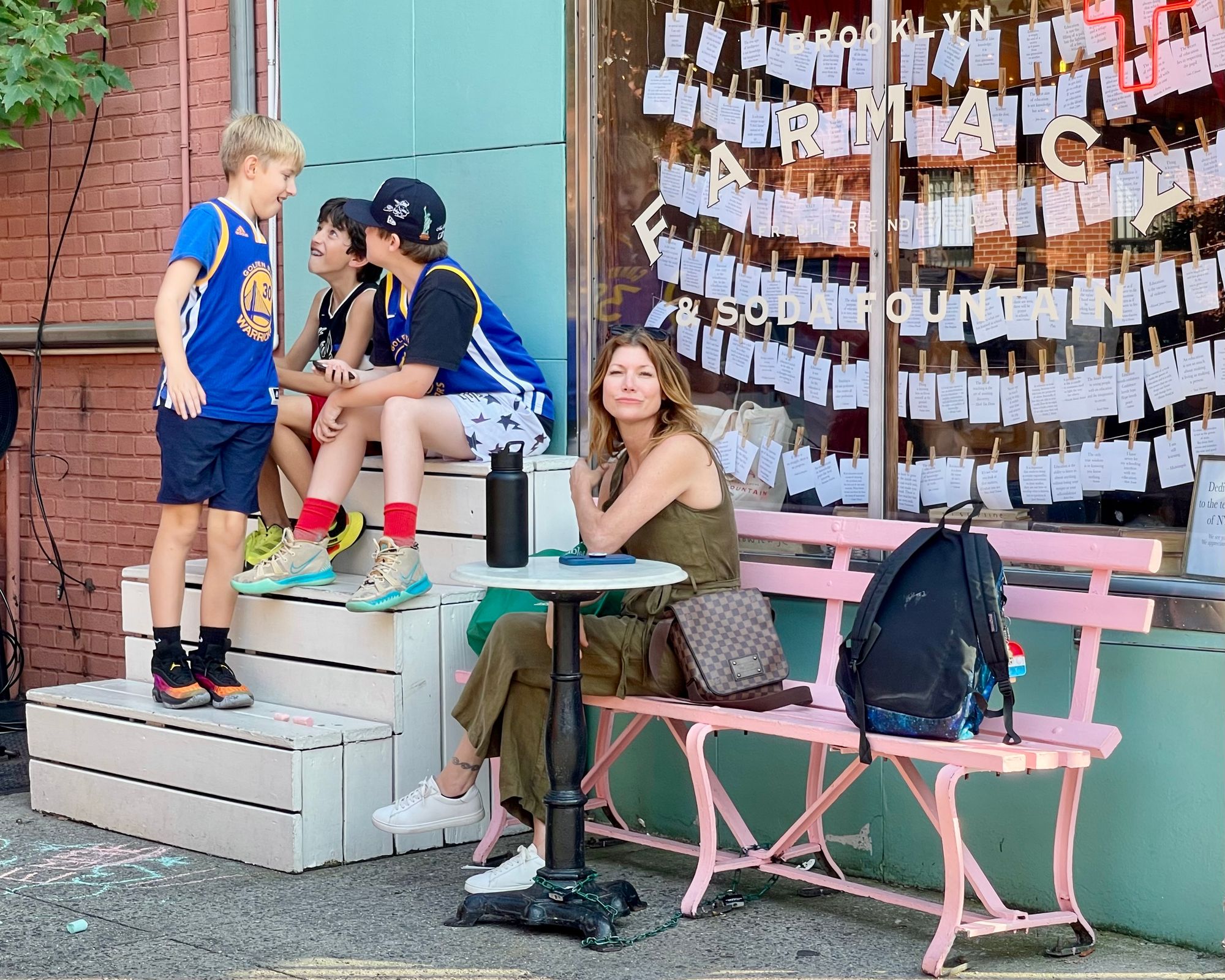
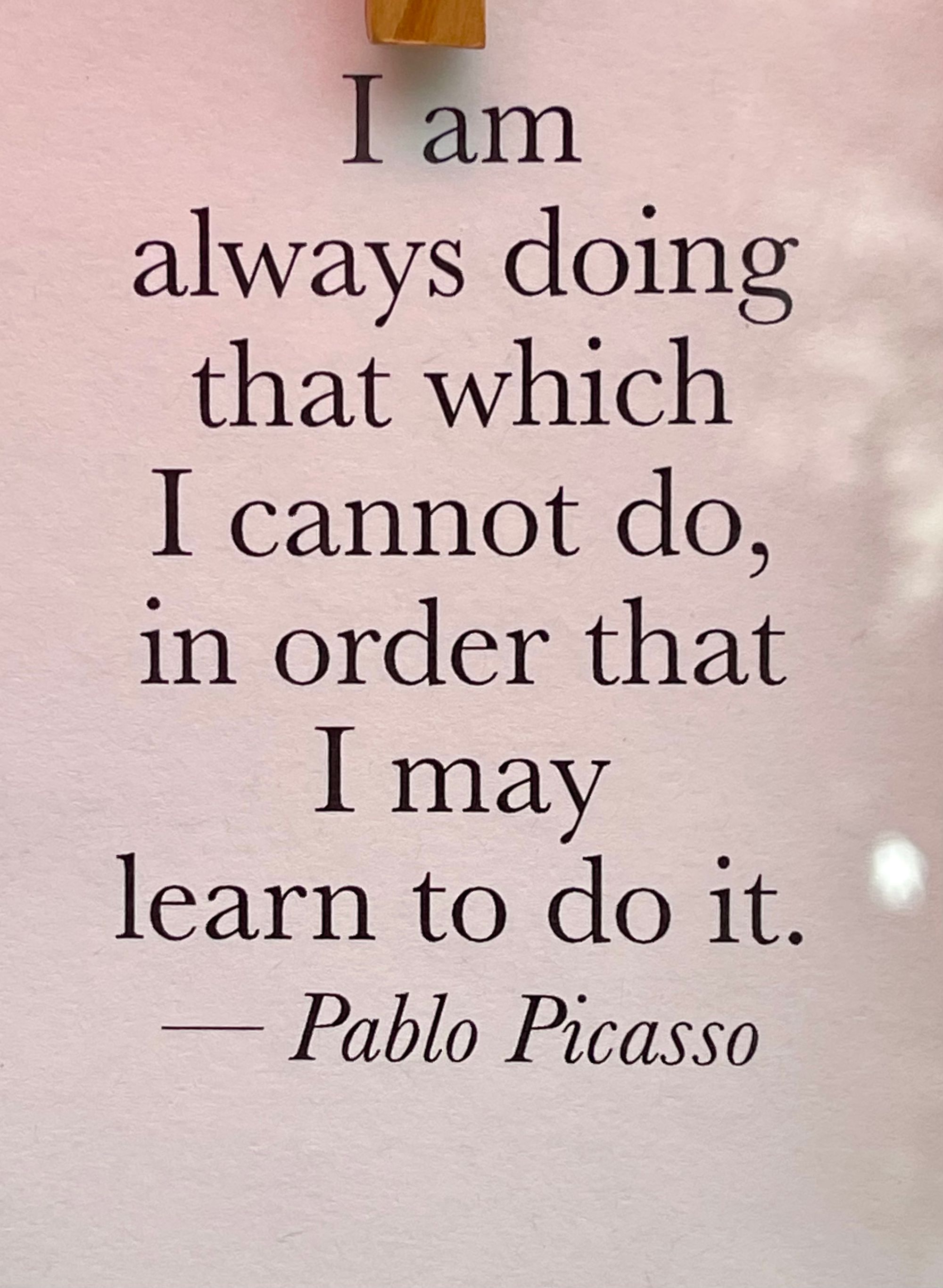
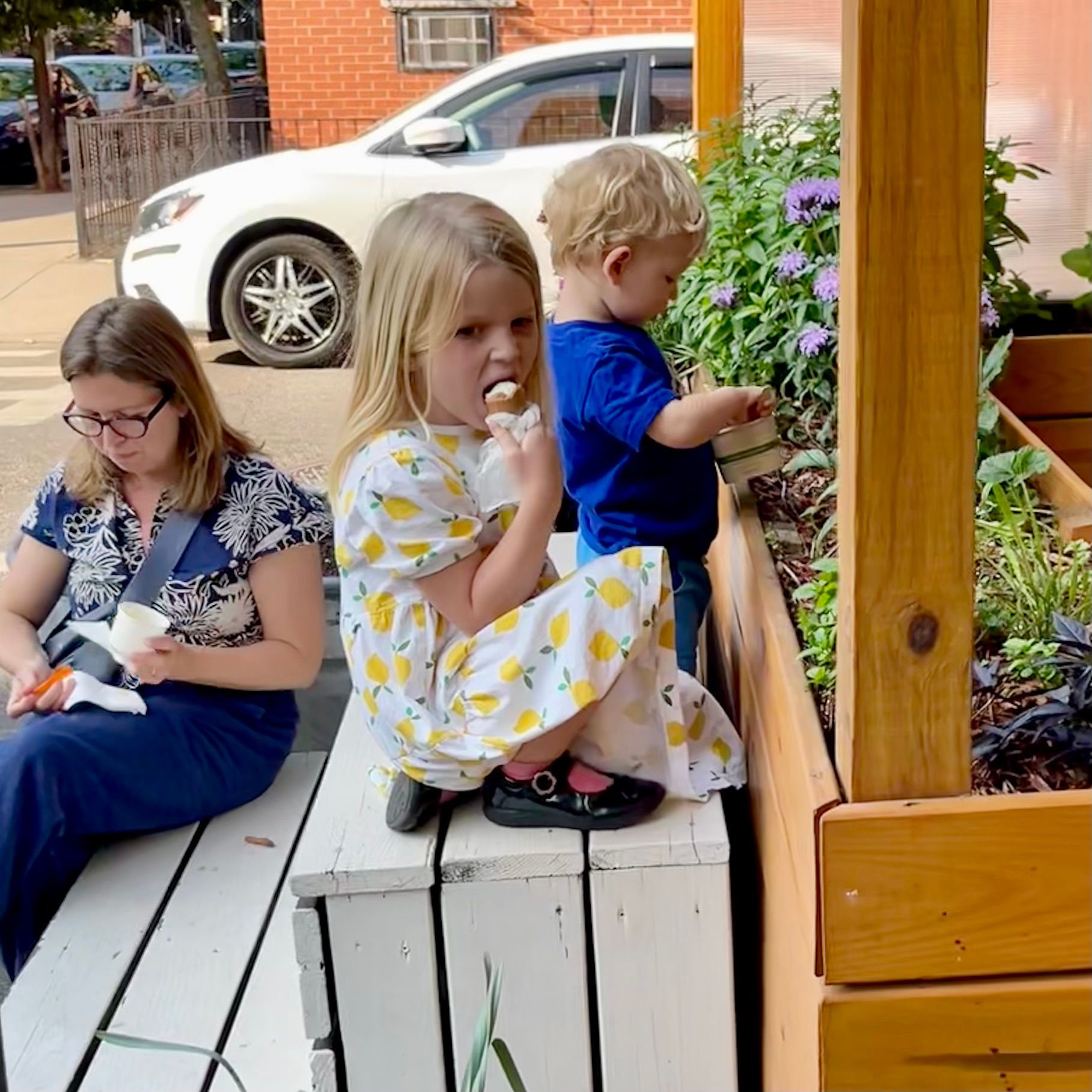
The cards in the window are meant to inspire and that they do
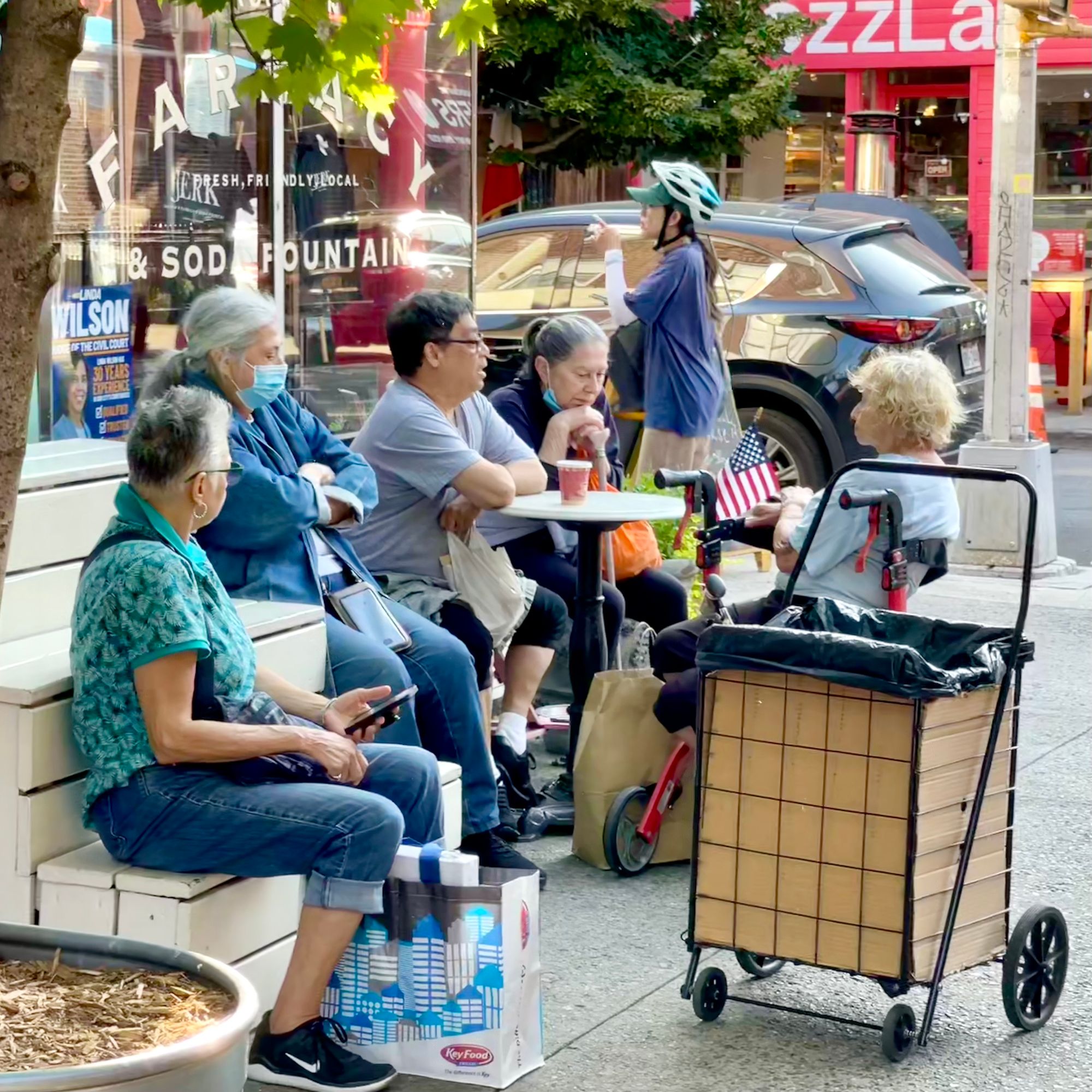
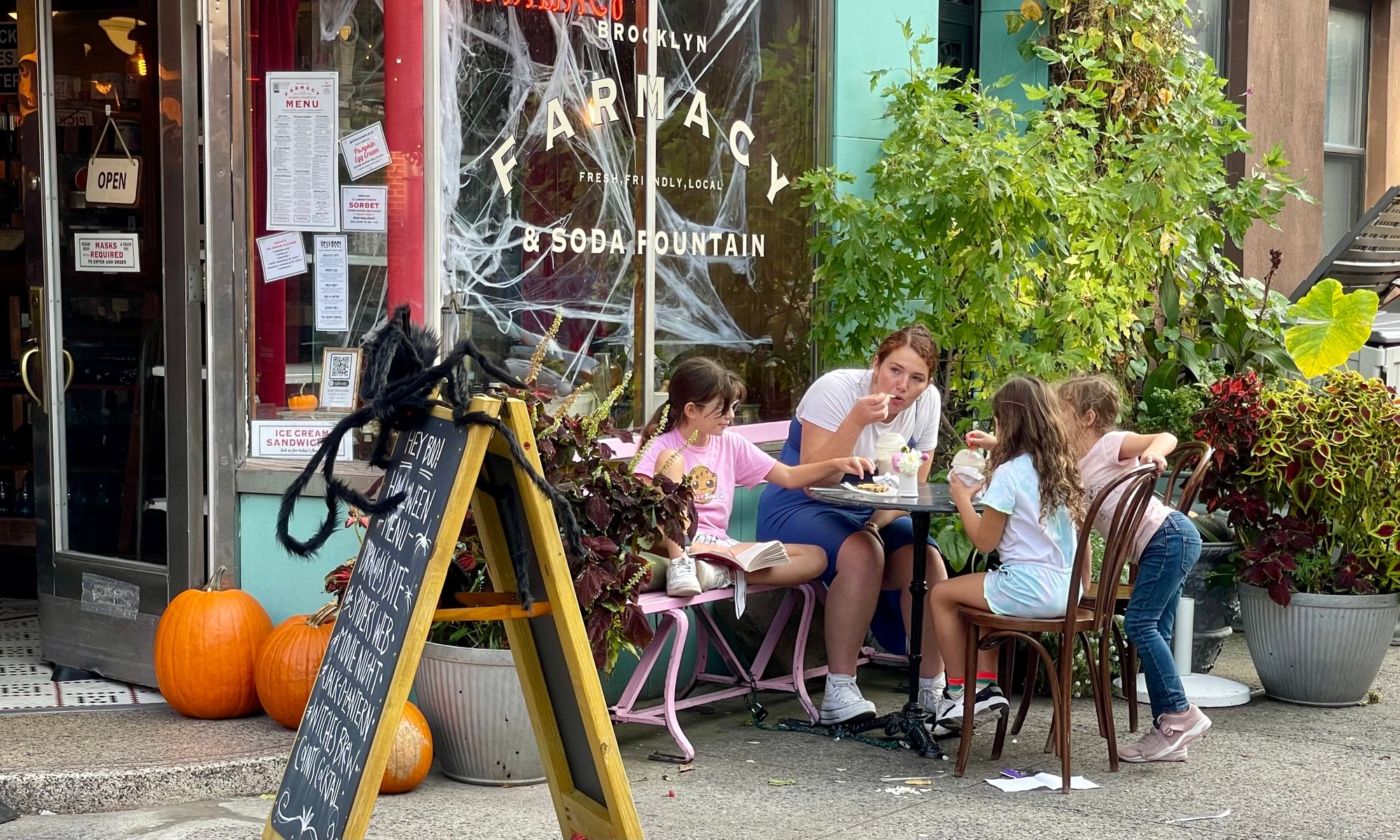
Across the street, a relative newcomer, MozzLab, has created another public gathering place with its great seating options. Both corners provide seating that is available for anyone, day and night, open or not. Both provide food but are not cafes and have no table service.
Reciprocal Gestures
We call the kind of interaction between these two spots "reciprocal gestures." This phrase communicates that when one place does something, like adding seating or fun lights or signage, a place nearby sees it and gets inspired to make a similar change, mirroring the original place's idea and building on it to create even more value. This creative back and forth inspires more and more changes from other places in the neighborhood, until a social and commercial hub is formed. This is how one place taking the leap to make a positive change creates ripple effects that can improve a whole block and even a whole neighborhood. In this way, something as small and simple as a bench can transform a community.
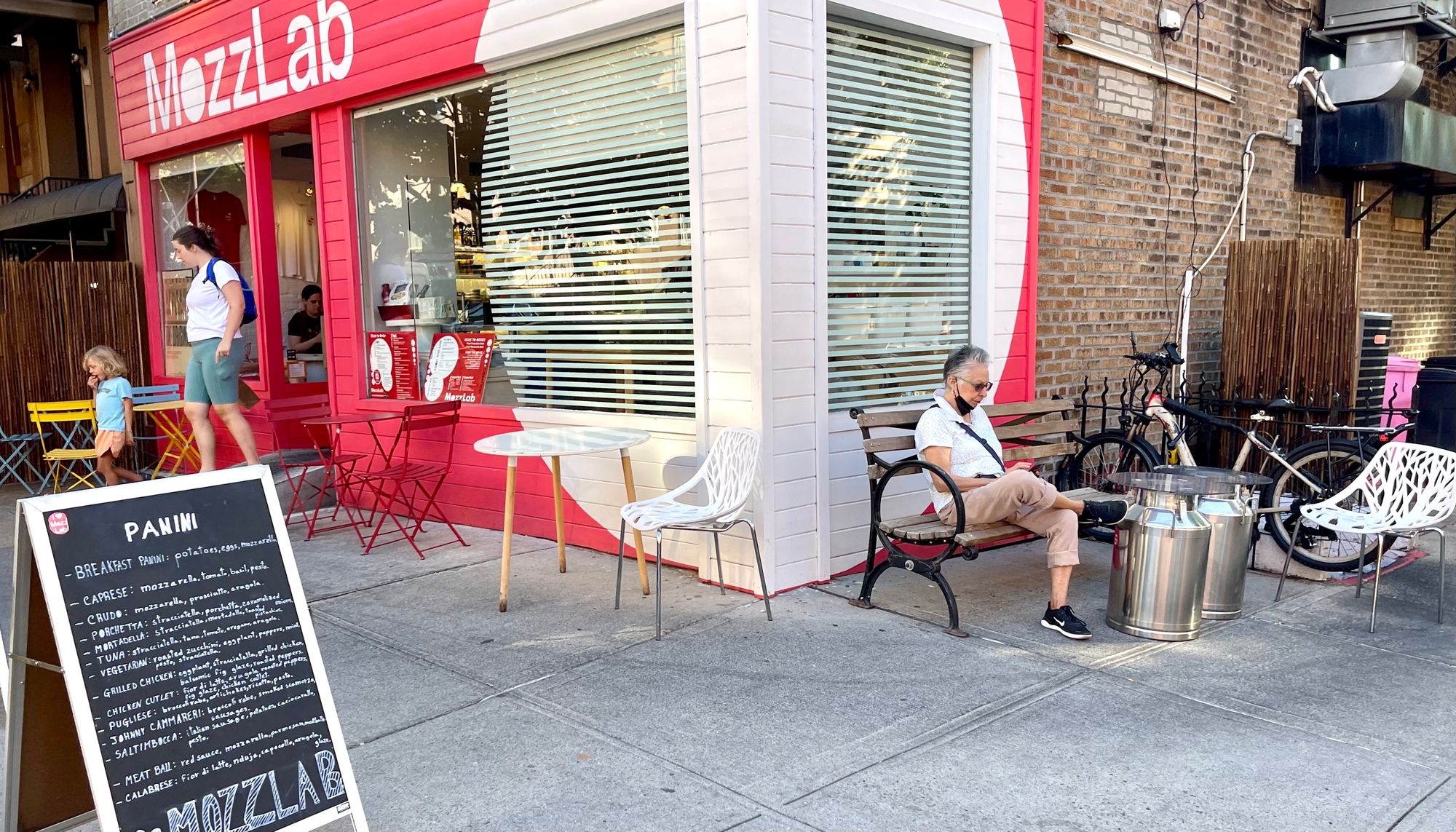
A bench and movable seating with milk cans as tables
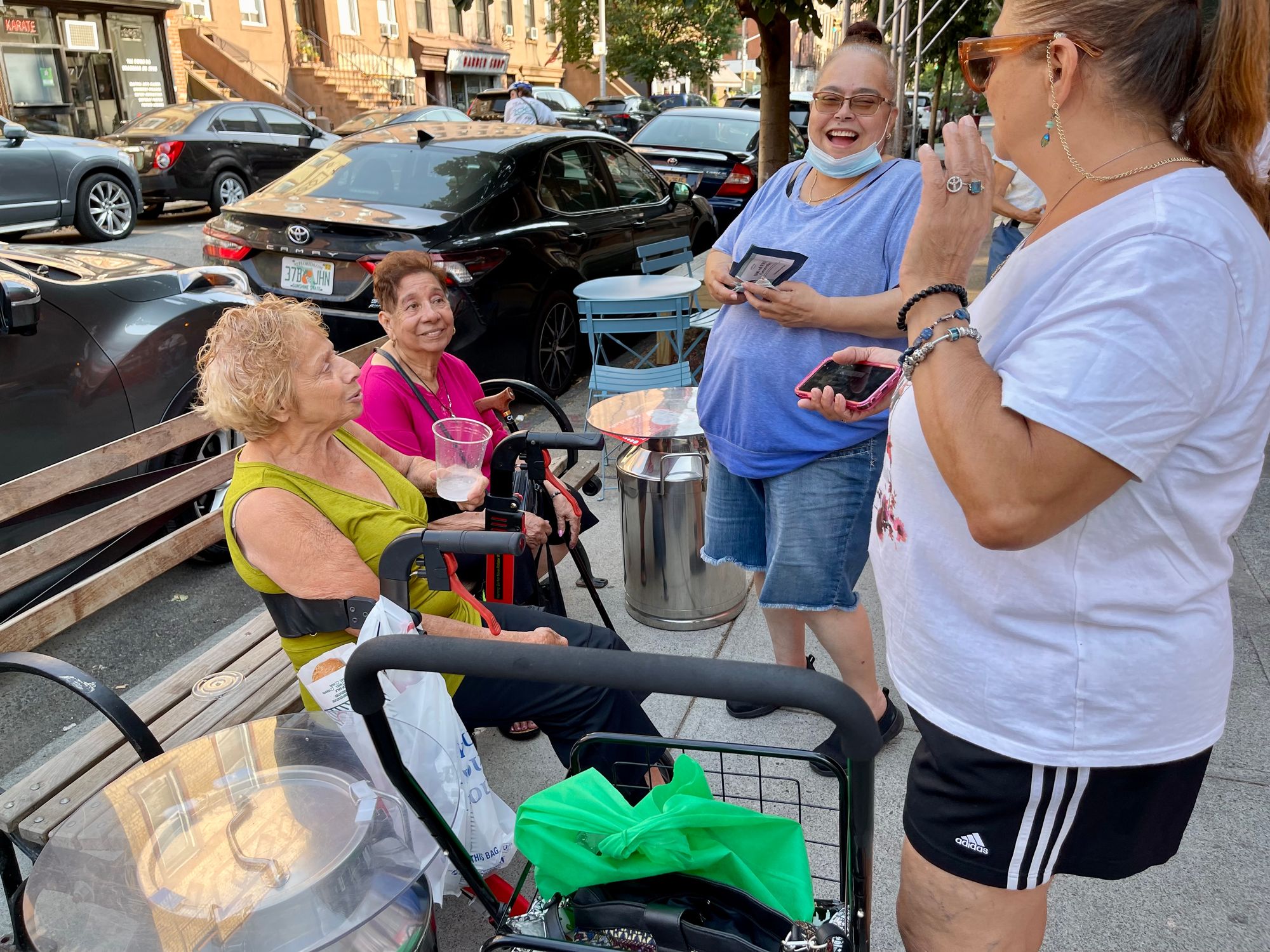
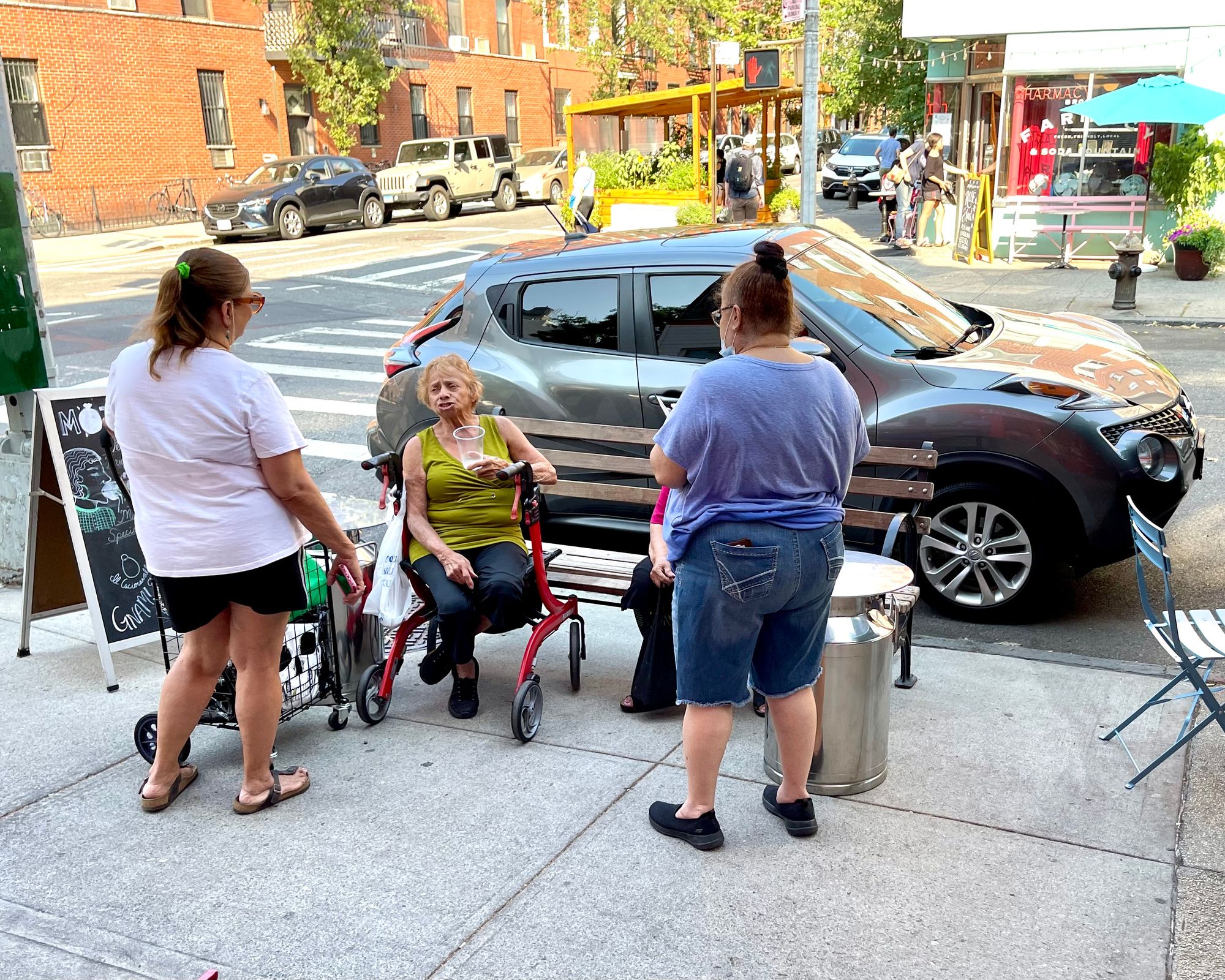
These benches are great gathering places for residents and visitors. This is the building where the movie Moonstruck was shot.
Together, Mozzlab and the Farmacy have made this one of the most social intersections in the area.
The Impacts Travel Down the Block
New Haven
"Reciprocal gestures" is how the bench turns into more than a bench. When the first bench is placed, it attracts activity. That activity inspires changes in the surrounding businesses that want to capitalize on the increased pedestrian presence. They may put a bench out, too, or initiate other changes that make the most of the increased foot traffic. These changes travel down the block, further electrifying it with life and activity.
For example, the square bench in our Brooklyn neighborhood that we talked about earlier lit up the corner with activity, and now, three more just like it have made their home on that same block. That block is now one of the most charming and popular ones in the neighborhood.
New Haven has a similar story that was so inspiring we wrote an article on it. A popular eatery anchored a key New Haven corner, filling it with life. Over time, this beloved corner inspired the city and university to expand sidewalks in the area, which stimulated surrounding business activity. Later, car activity was limited by removing parking and narrowing traffic lanes in order to further support pedestrian life and commerce. What happens on the corner creates a butterfly effect that leads to big, impactful changes rippling through a community.
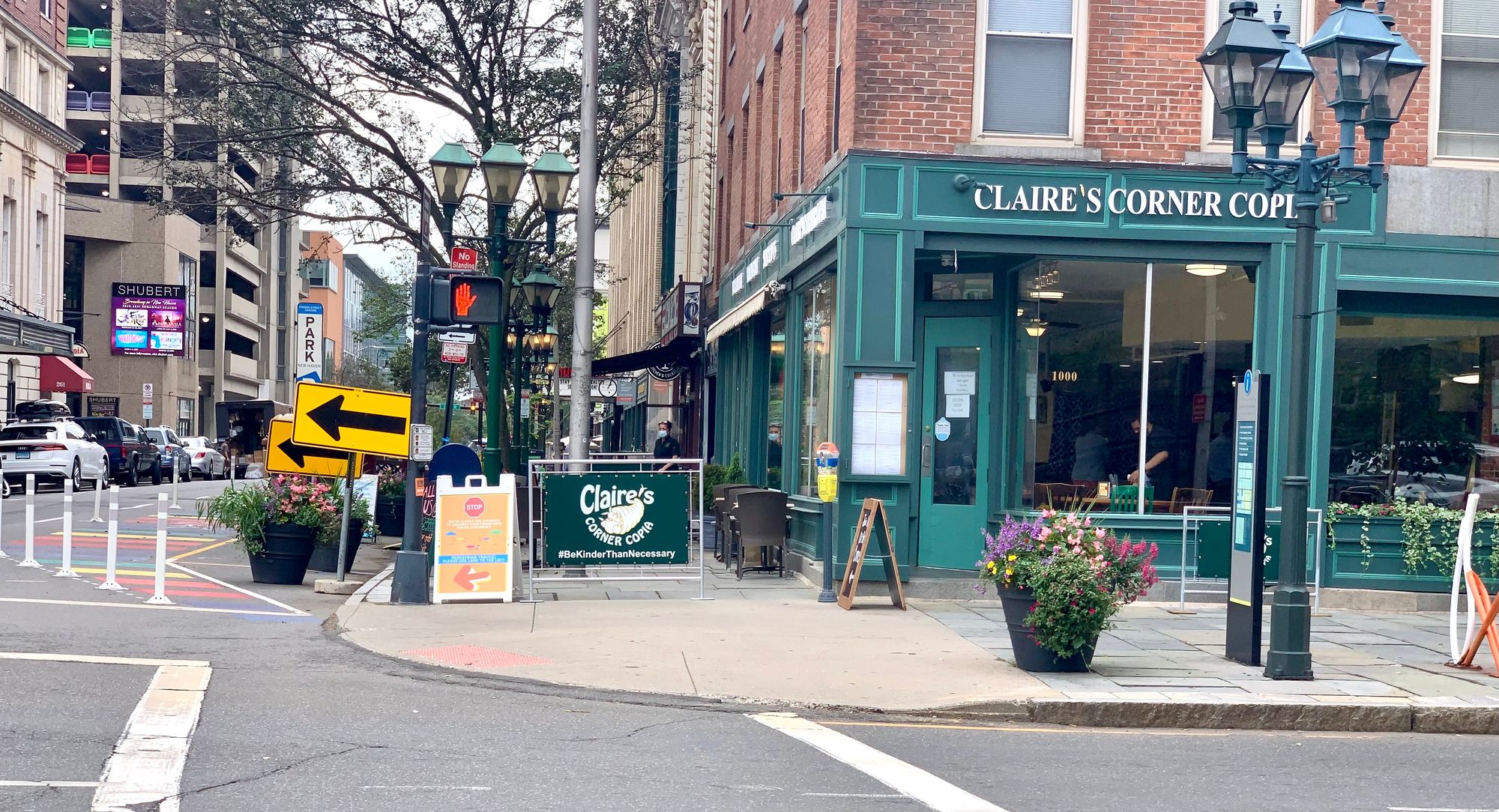
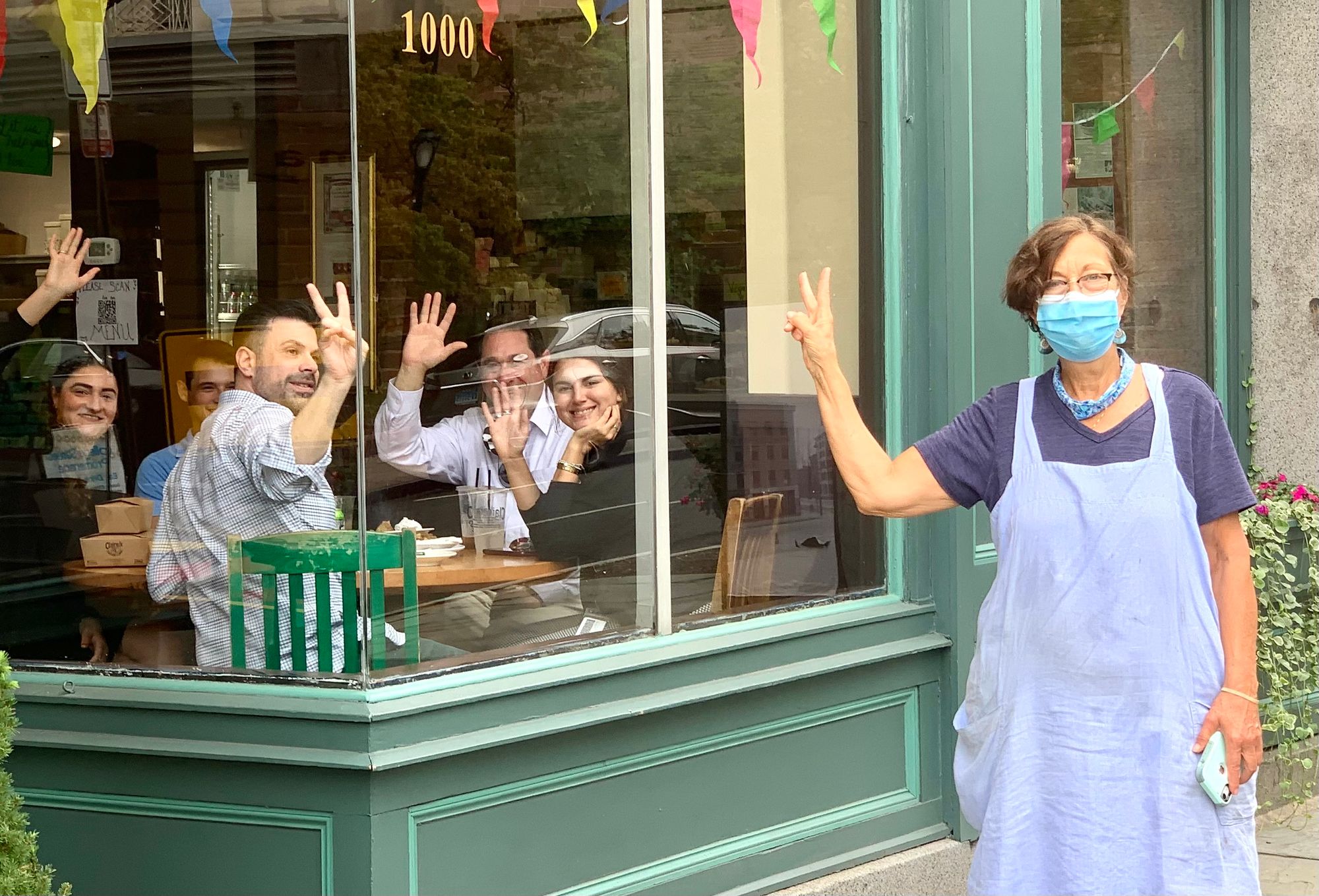
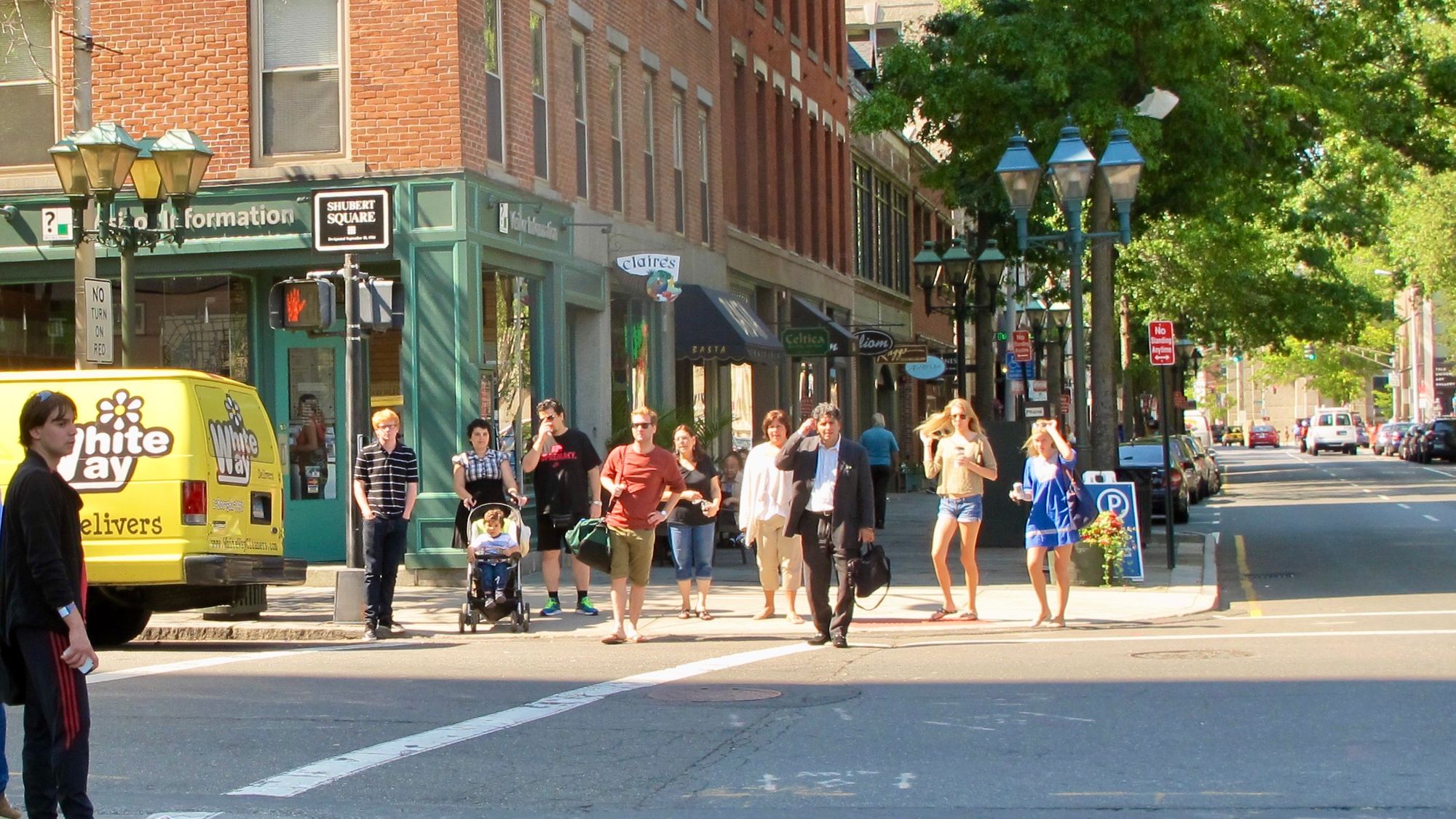
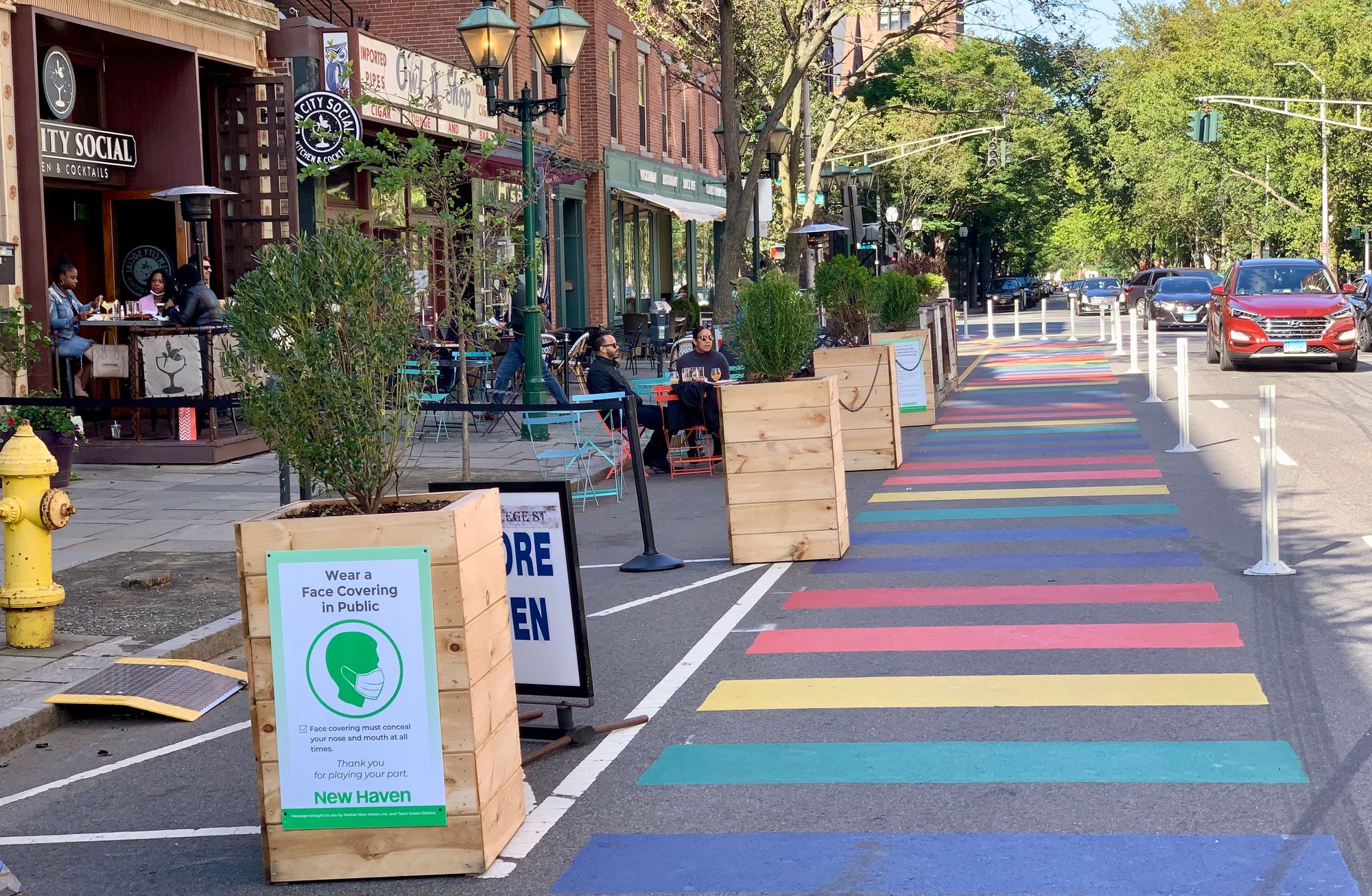
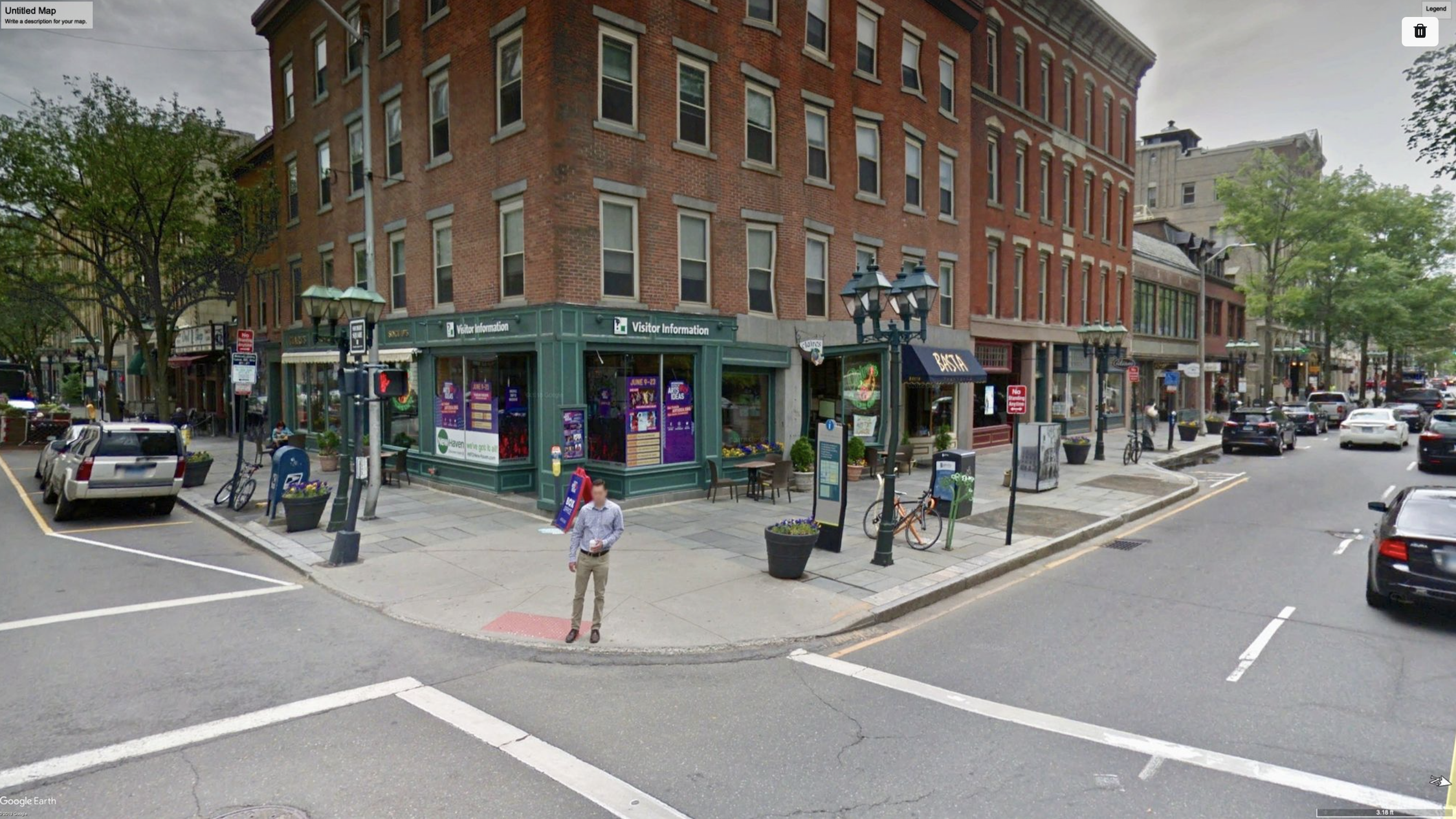
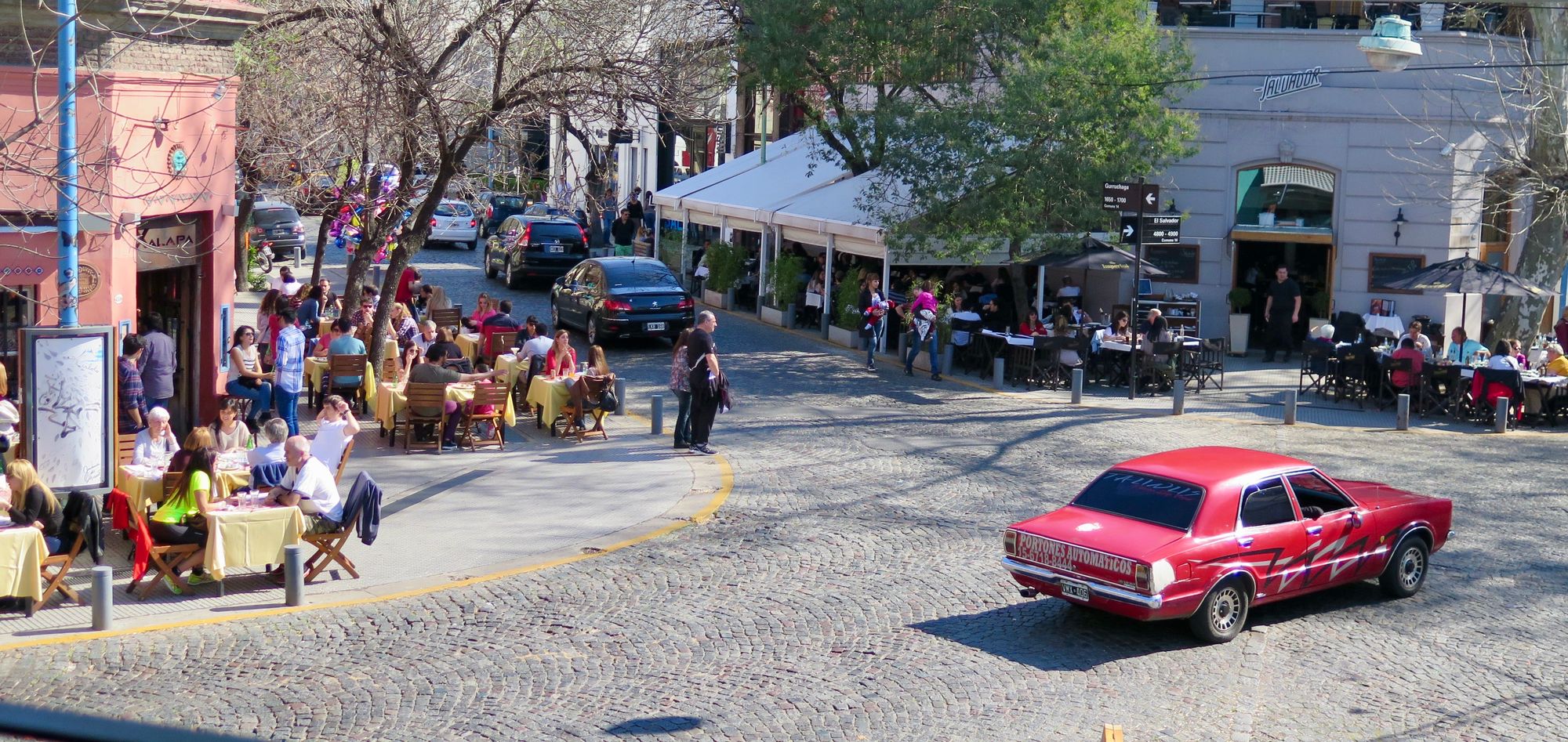
A bench at the center: Kennebunkport, Maine
The bench below is a meeting place that faces the intersection, offering a view in many directions. Active streets around it reach out like an octopus in all directions from this key intersection, making its impact central to the larger town core. It is one of the few benches we've seen where people can enjoy a small but lively center of town where vehicles "share" the space.
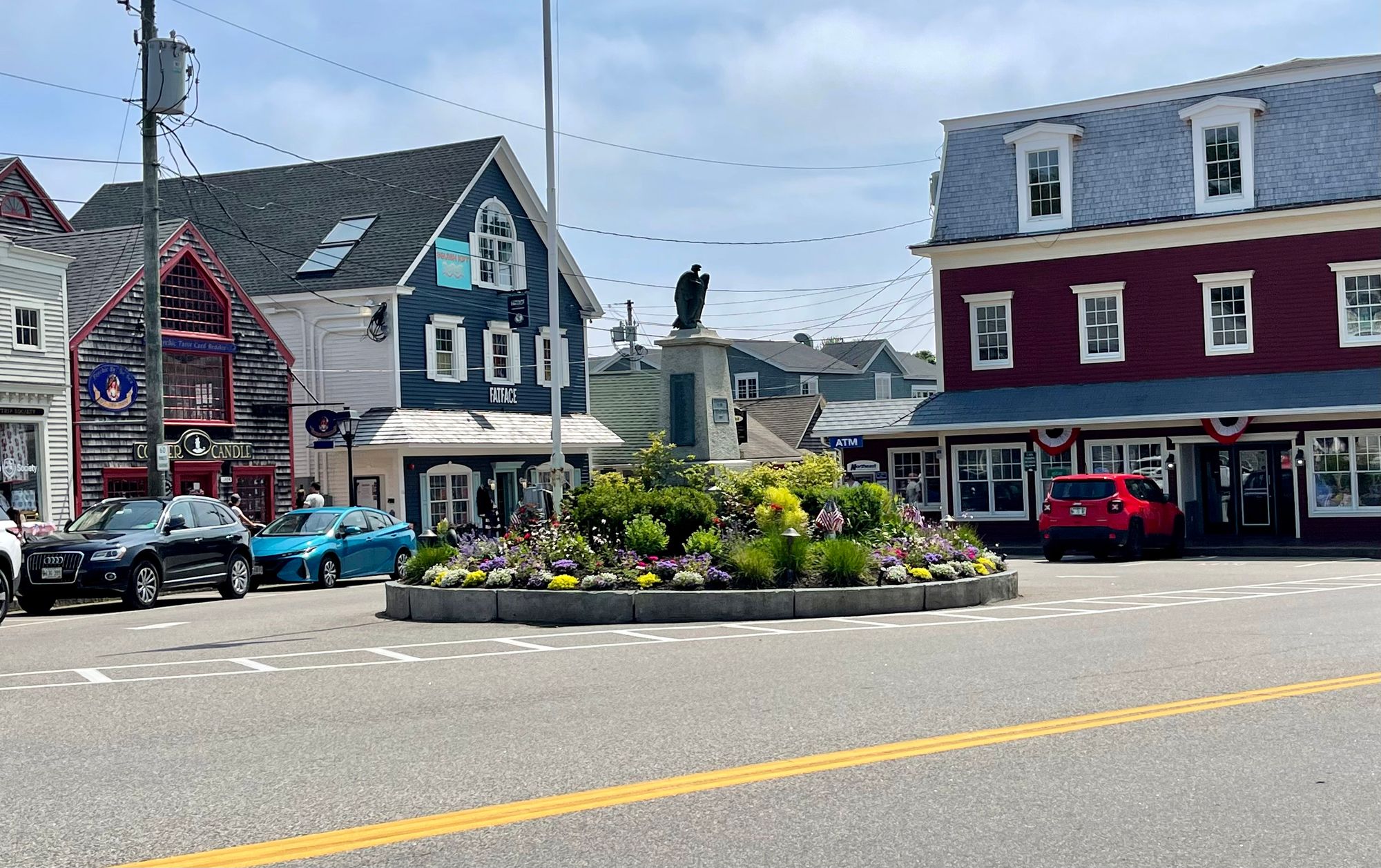
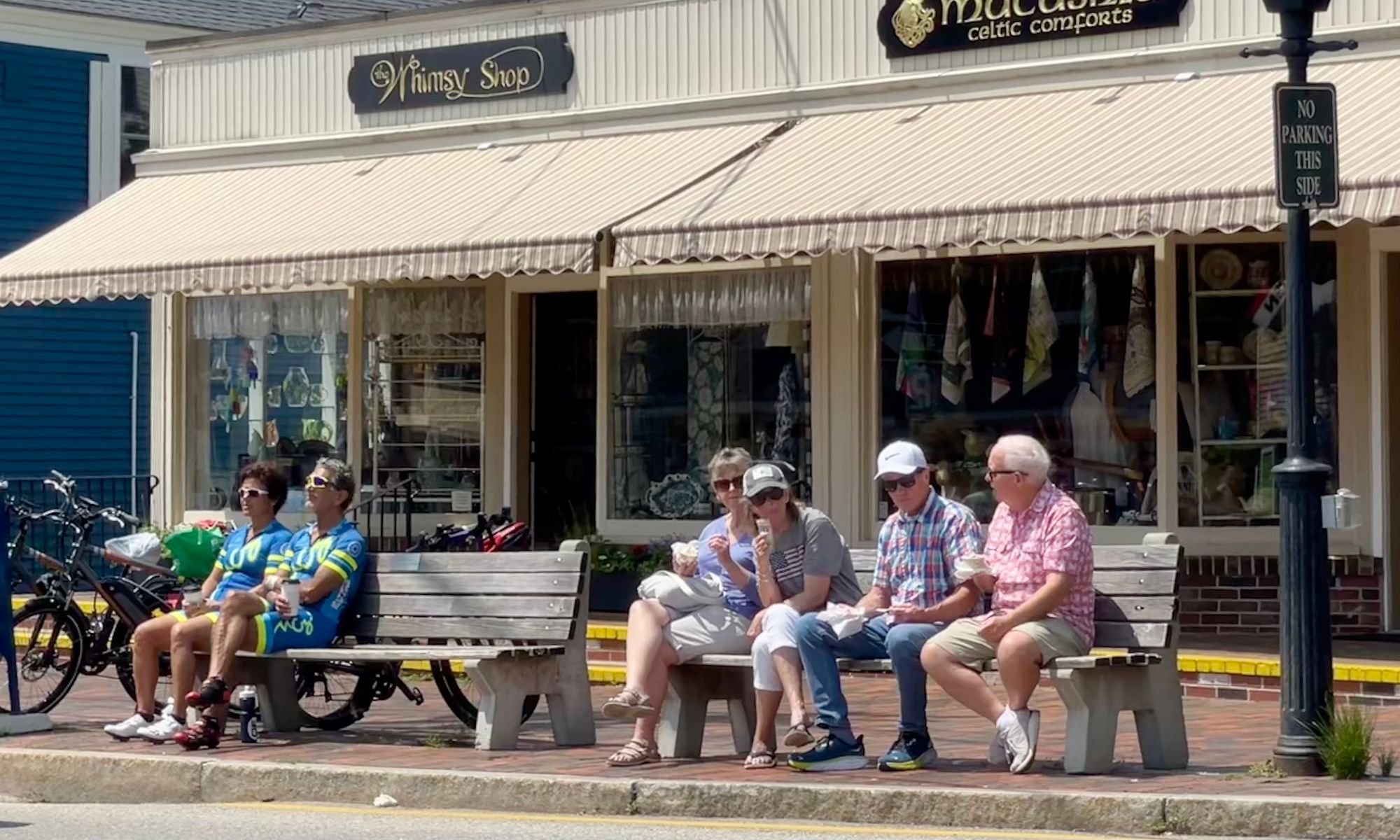
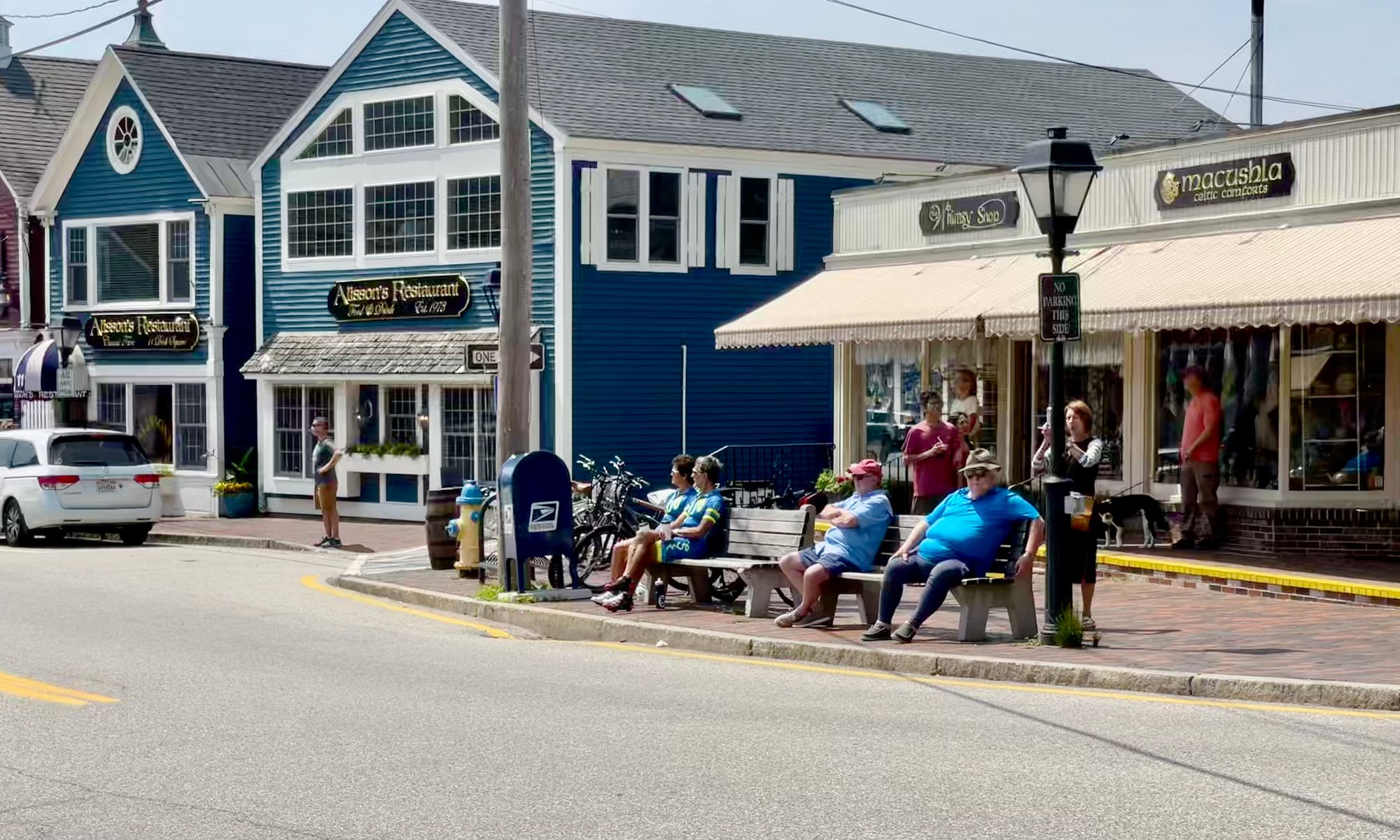
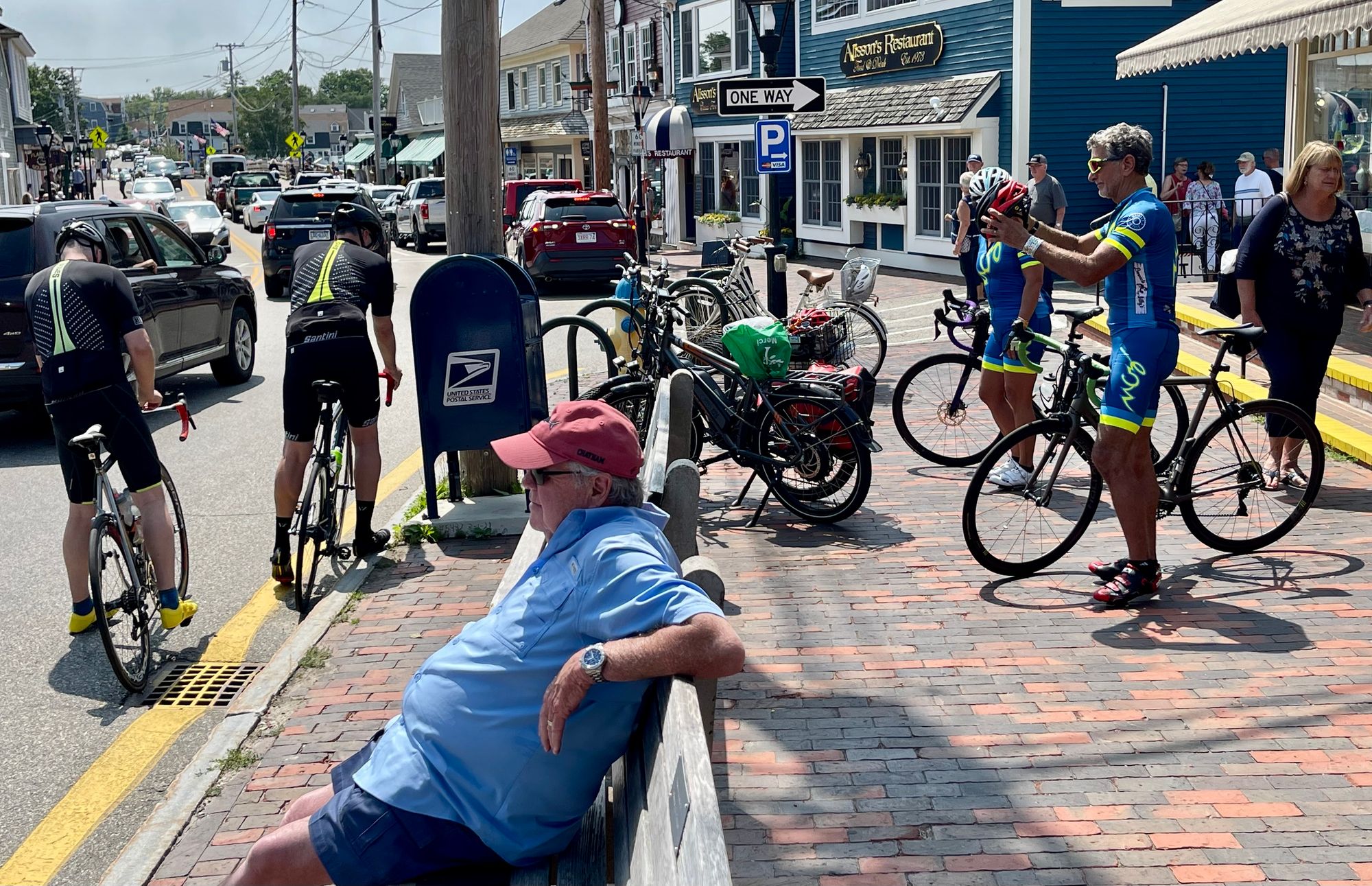
This bench faces out into the main intersection in Kennebunkport, Maine. There is a lot to see and plenty of space behind to gather
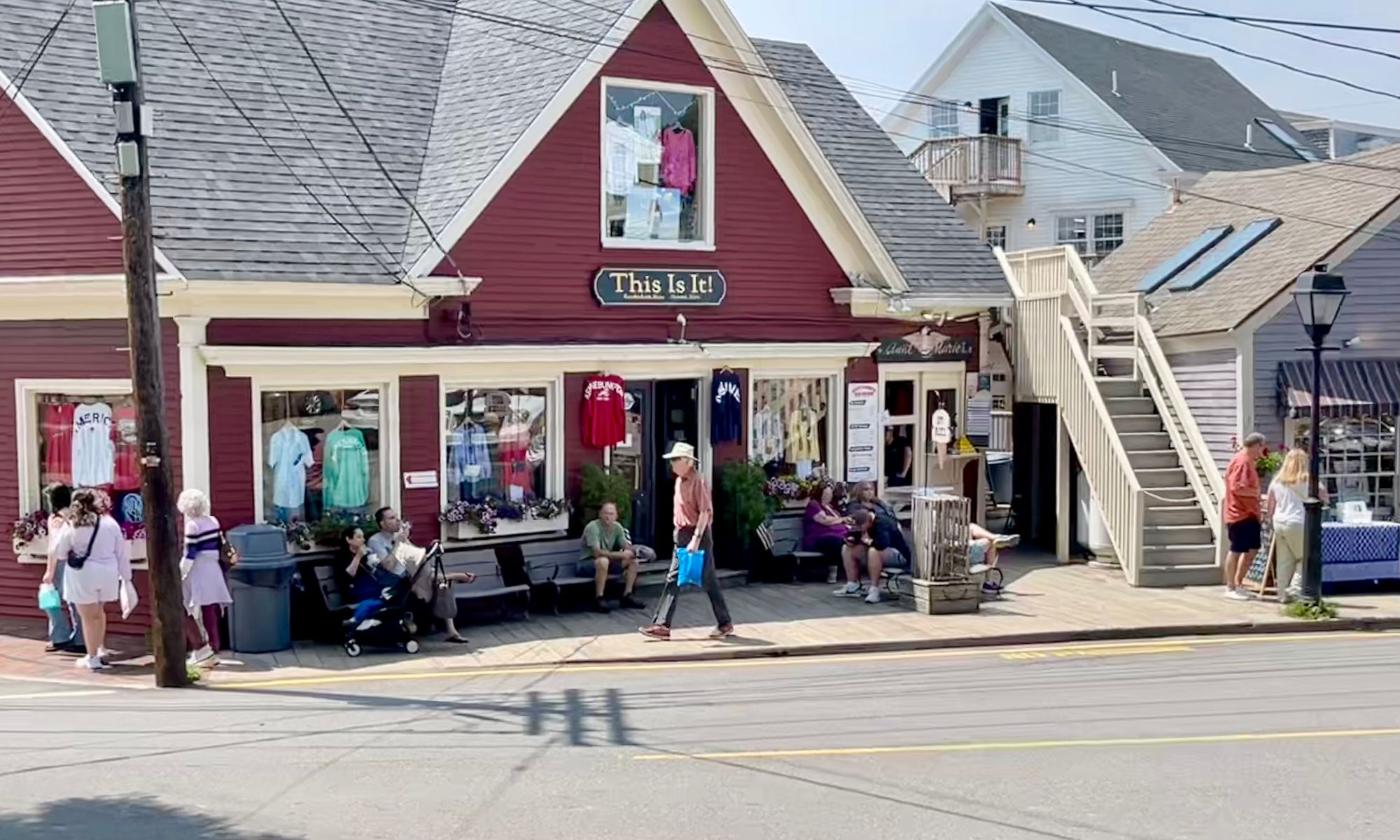

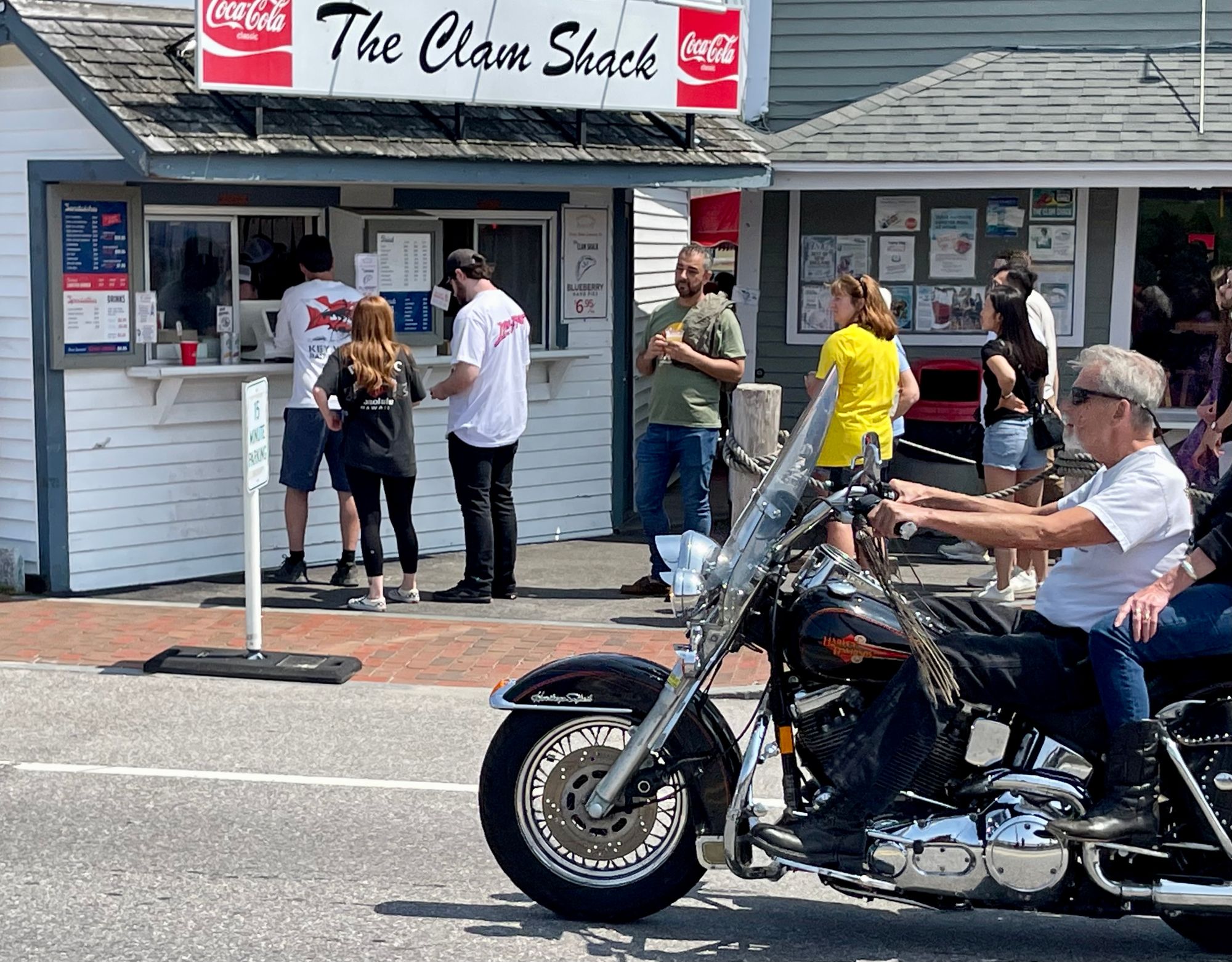
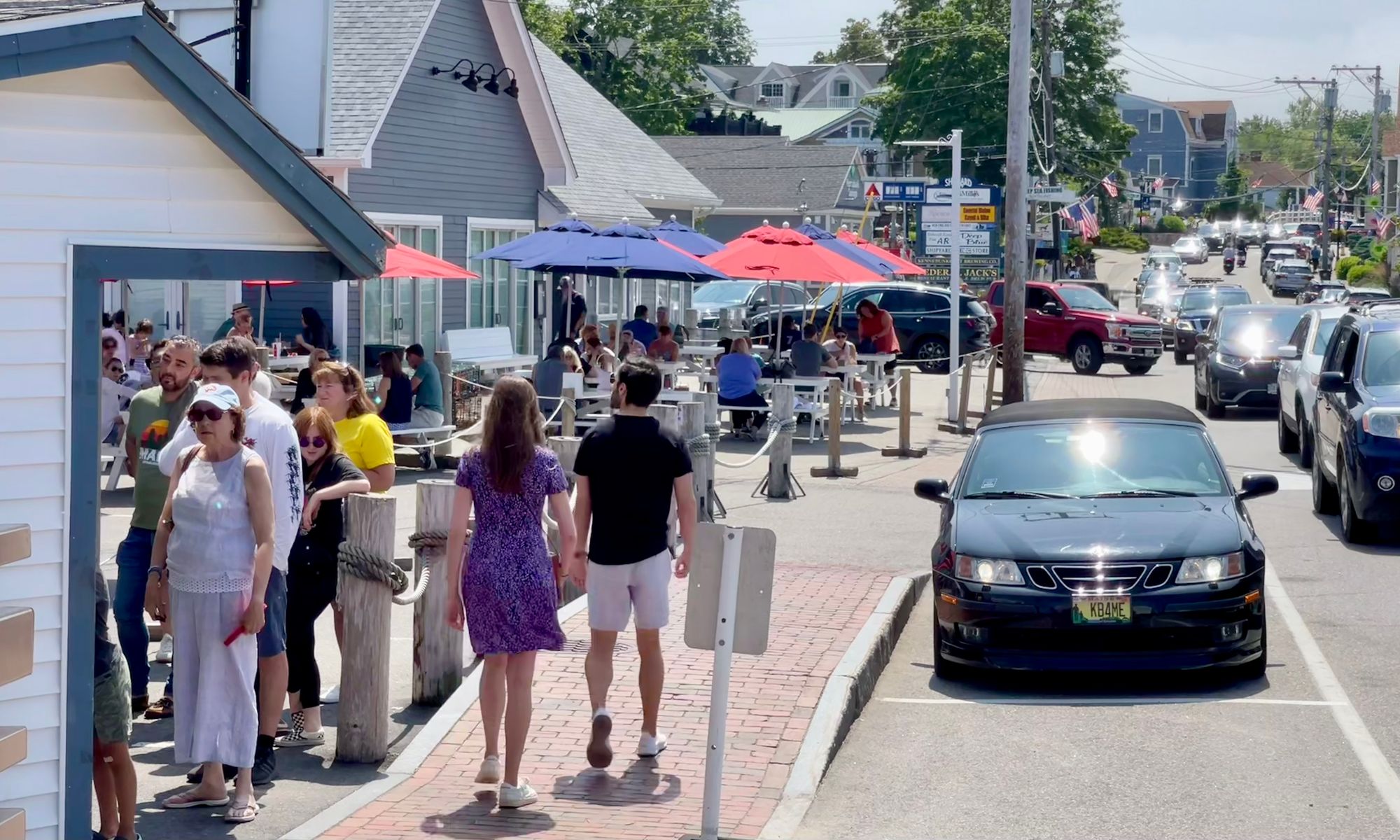
Bench-Based Plazas: Los Altos, California
Some of the corners in Los Altos, California create small, almost plaza-like spaces, similar to what we found in more historic communities. They invite people to stop and gather in a relaxed way.
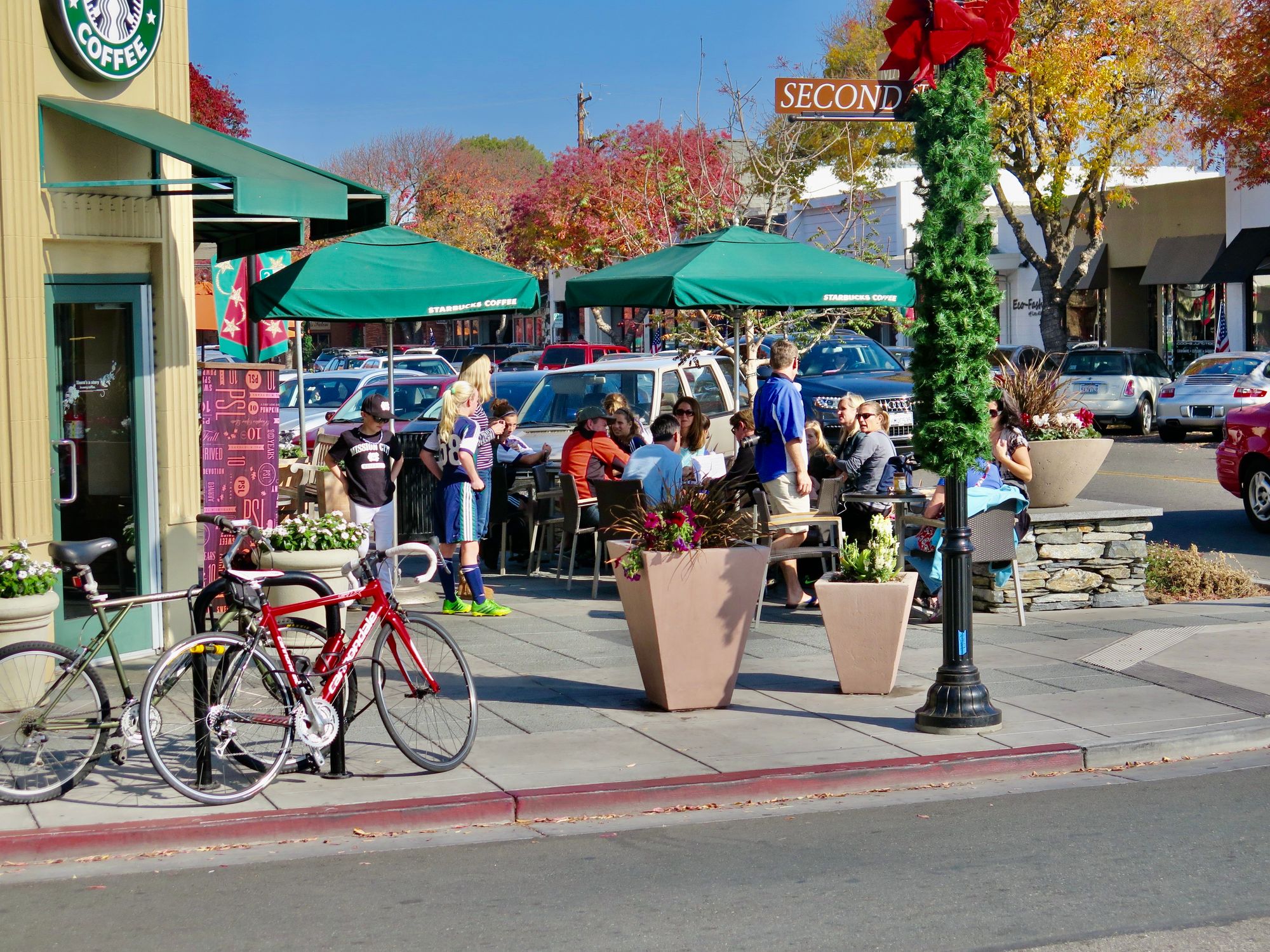
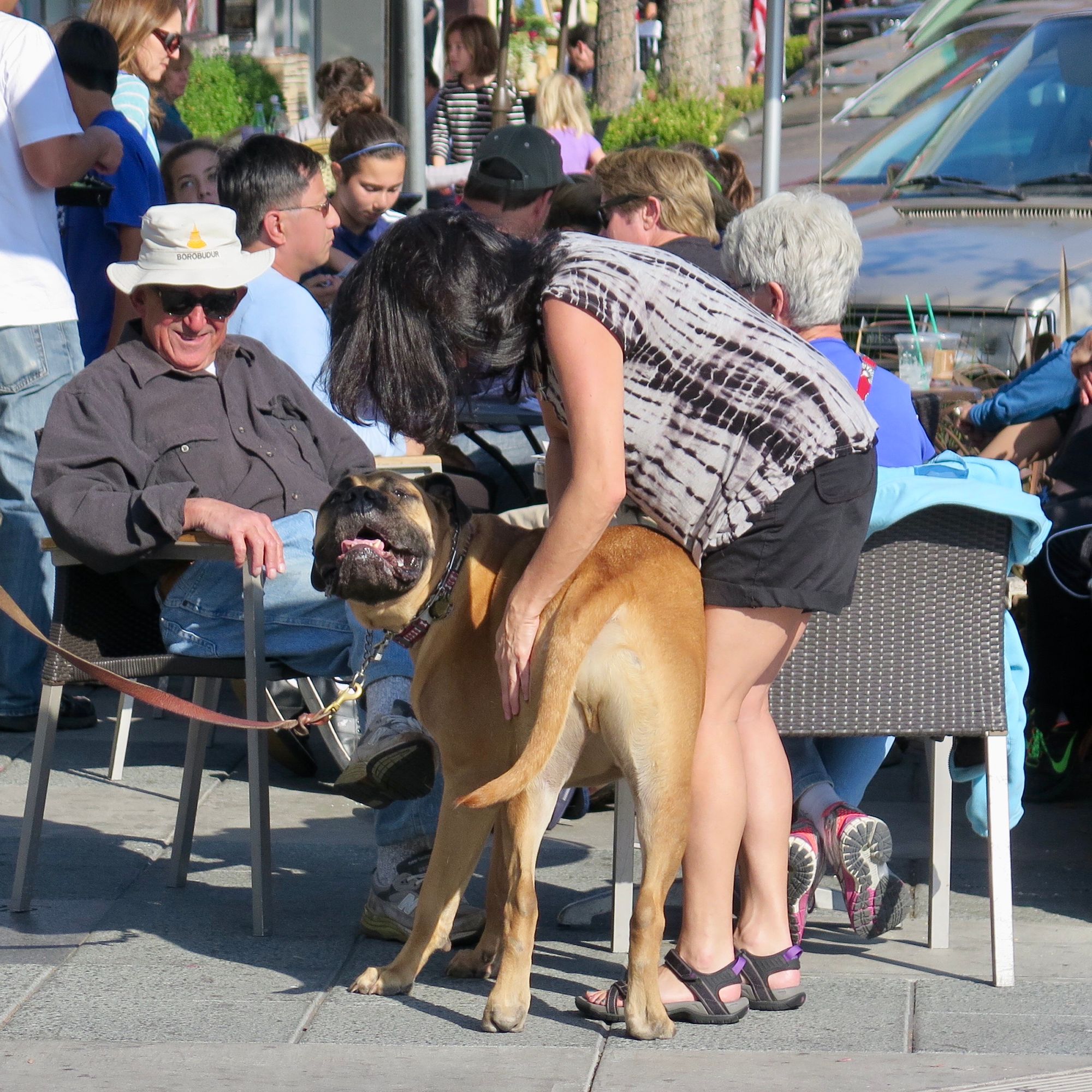
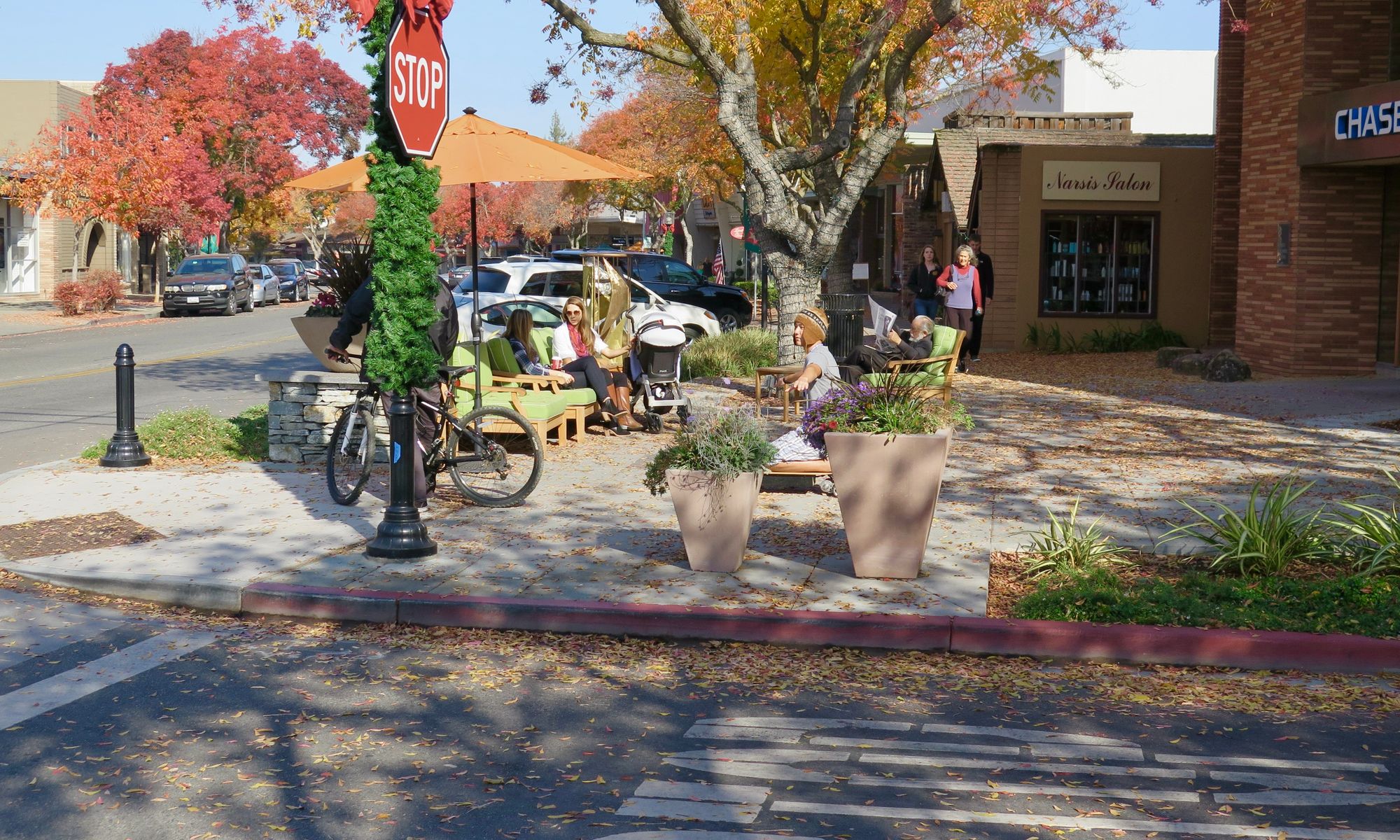
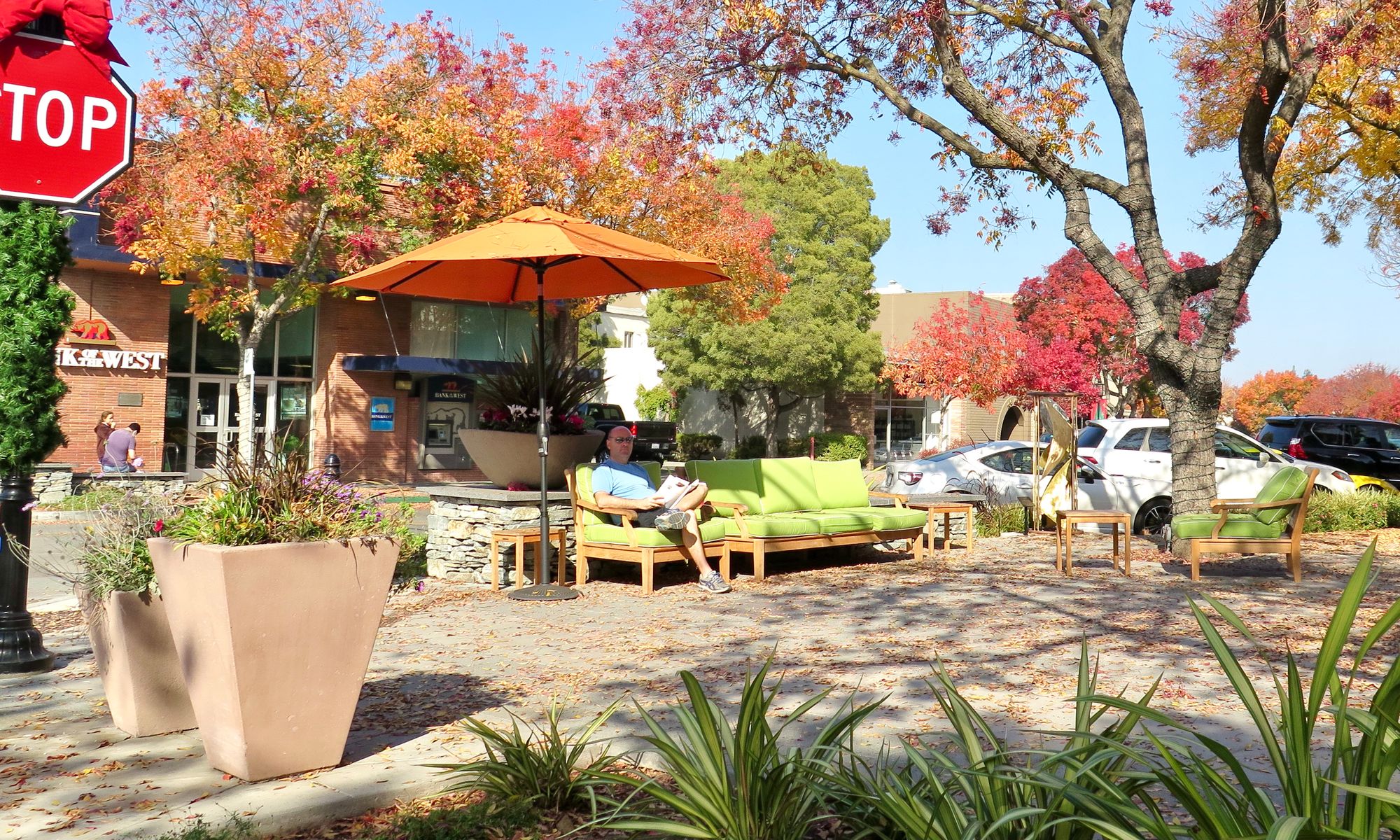
Corner street vendors and seating
A bench isn't the only thing that can activate a corner and turn it into a hub. In many countries, that role is filled by a food carts or refreshments kiosks. In Mexico City, corners are often bustling with activity because it is common practice to set up food carts there and people gather.
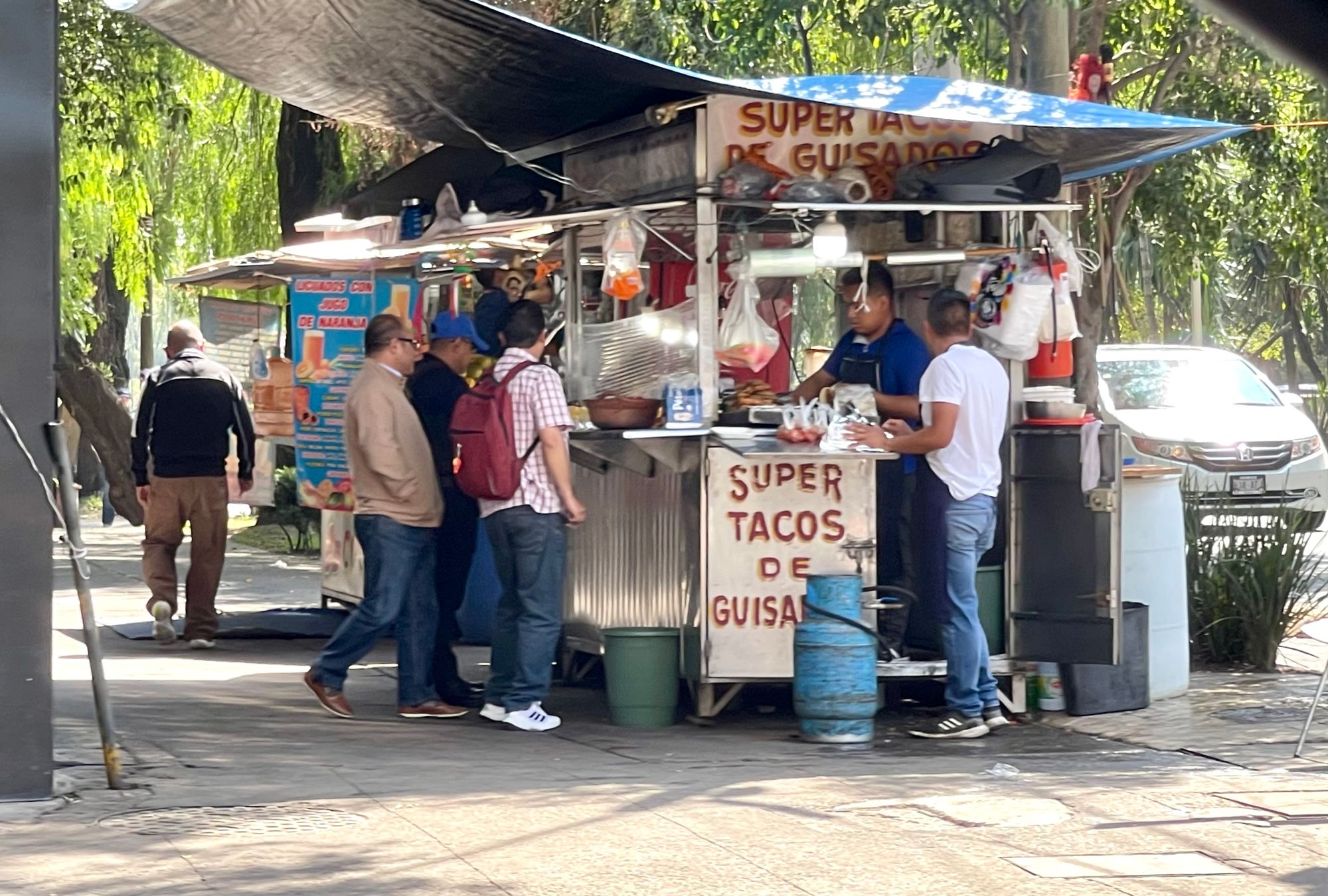
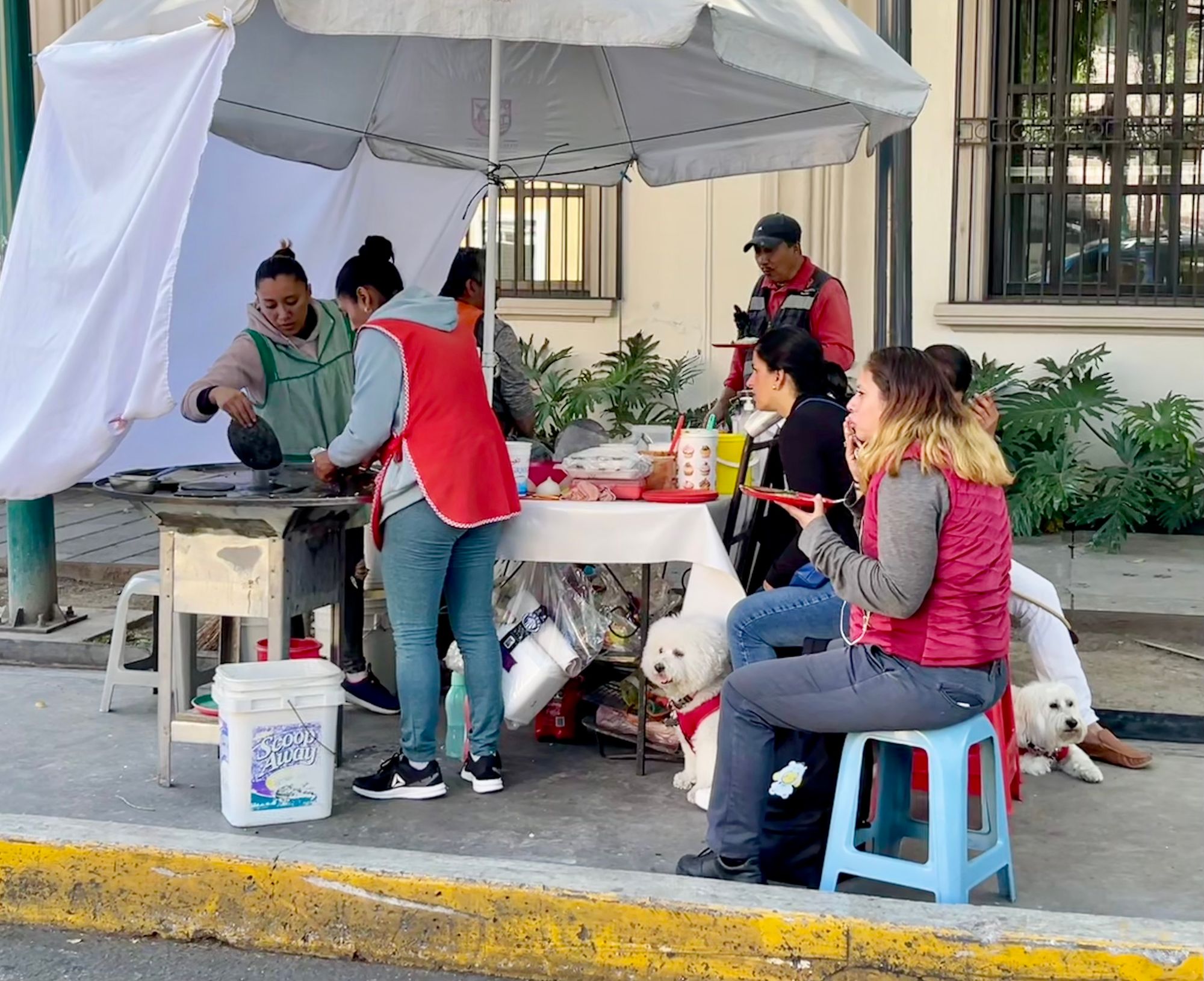
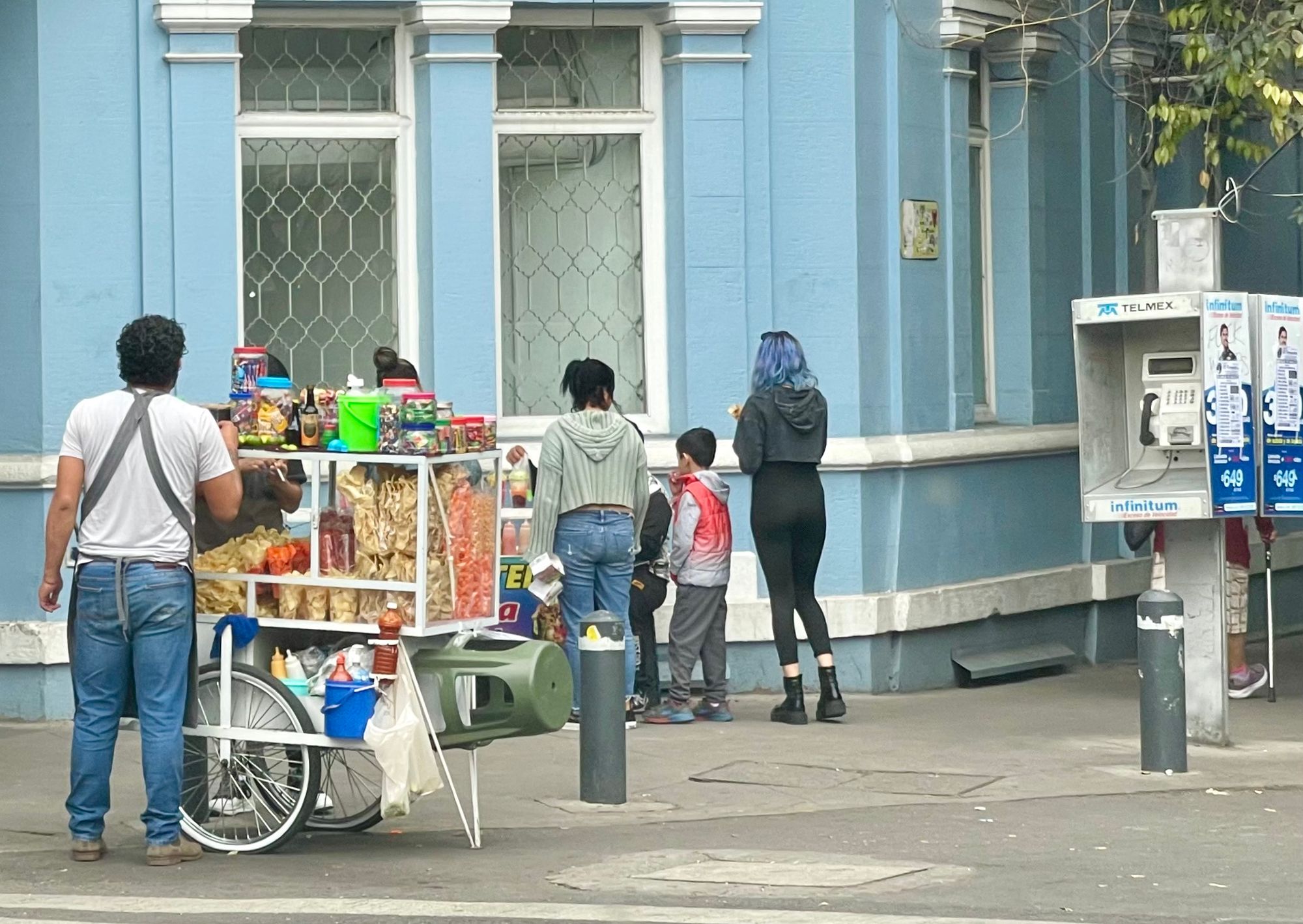
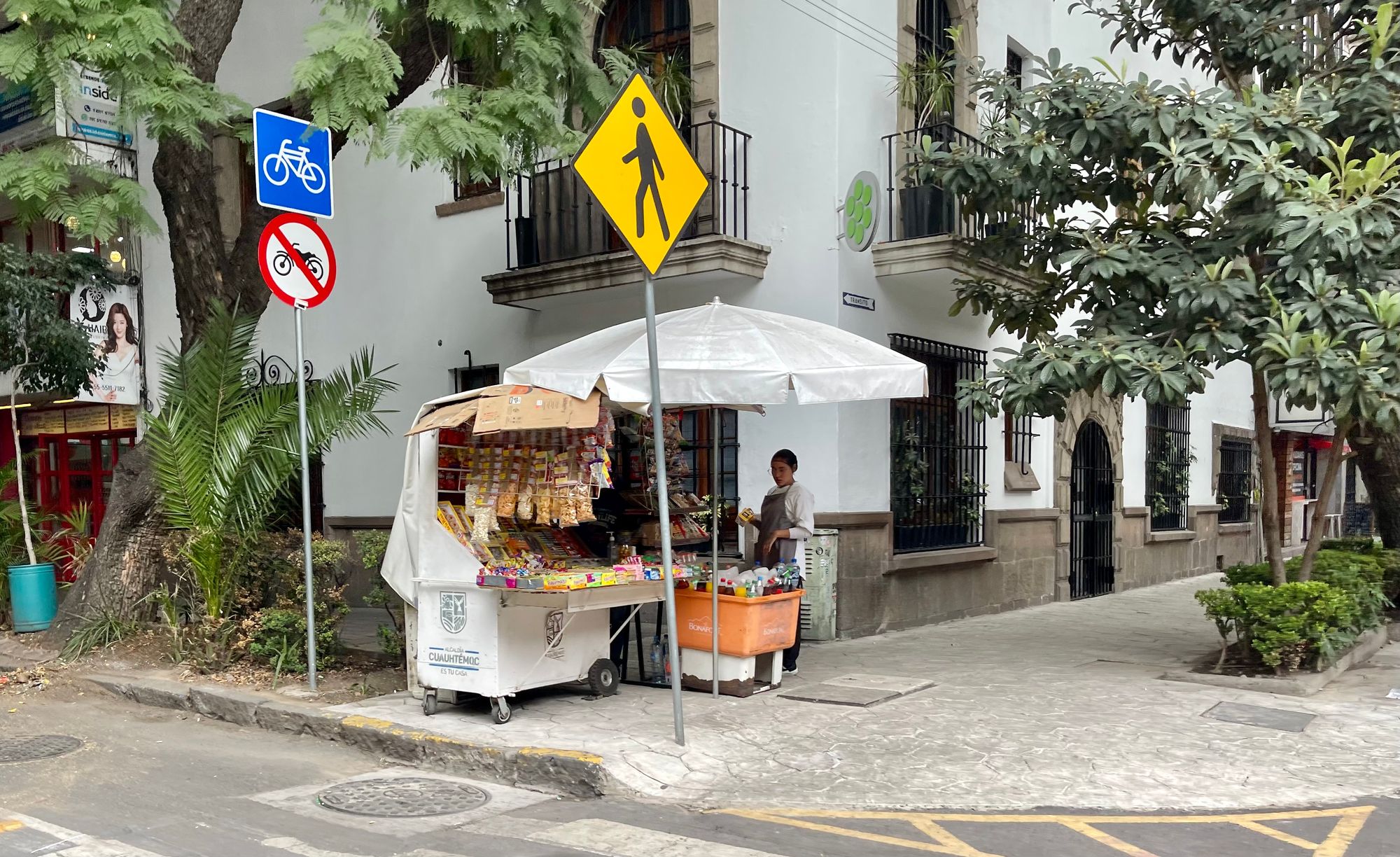
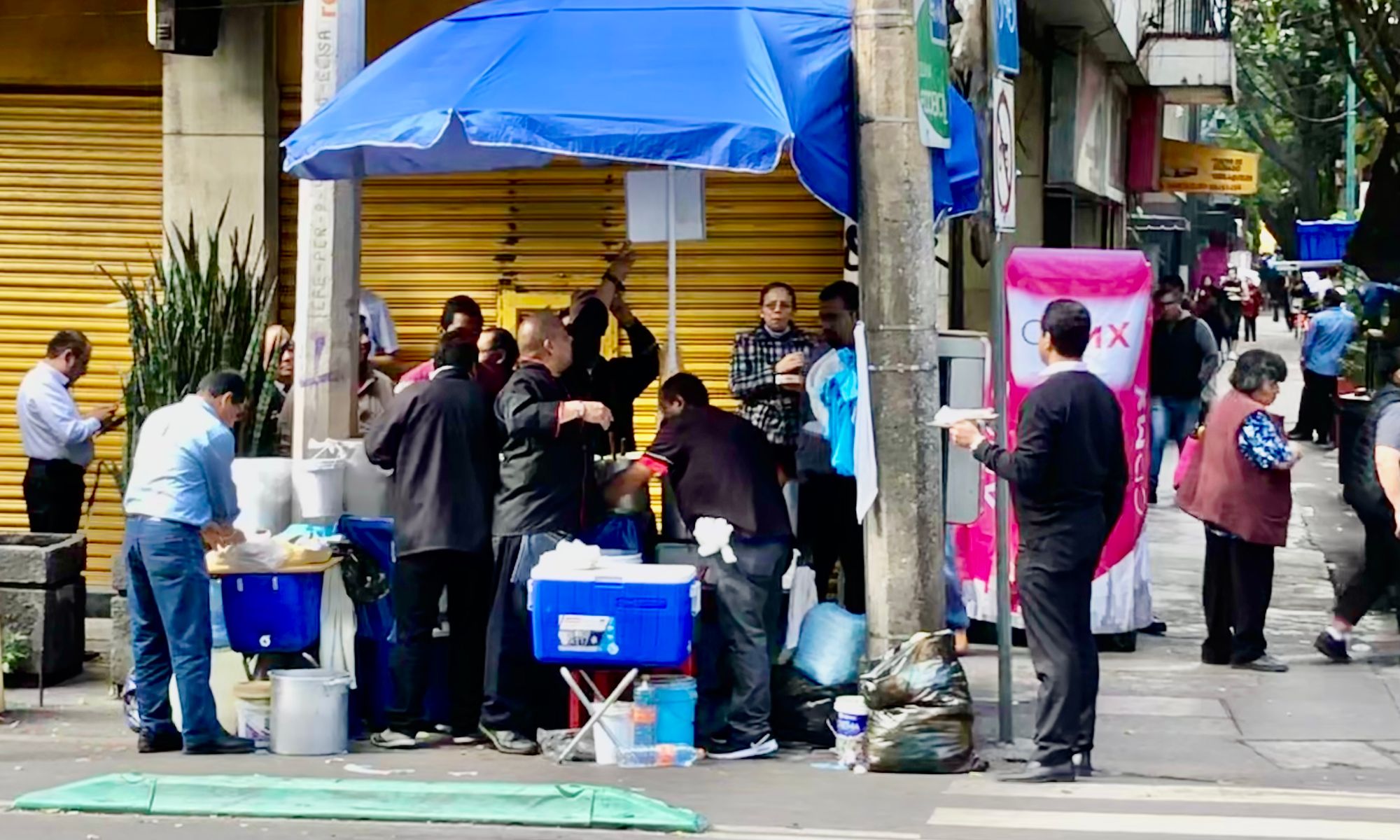
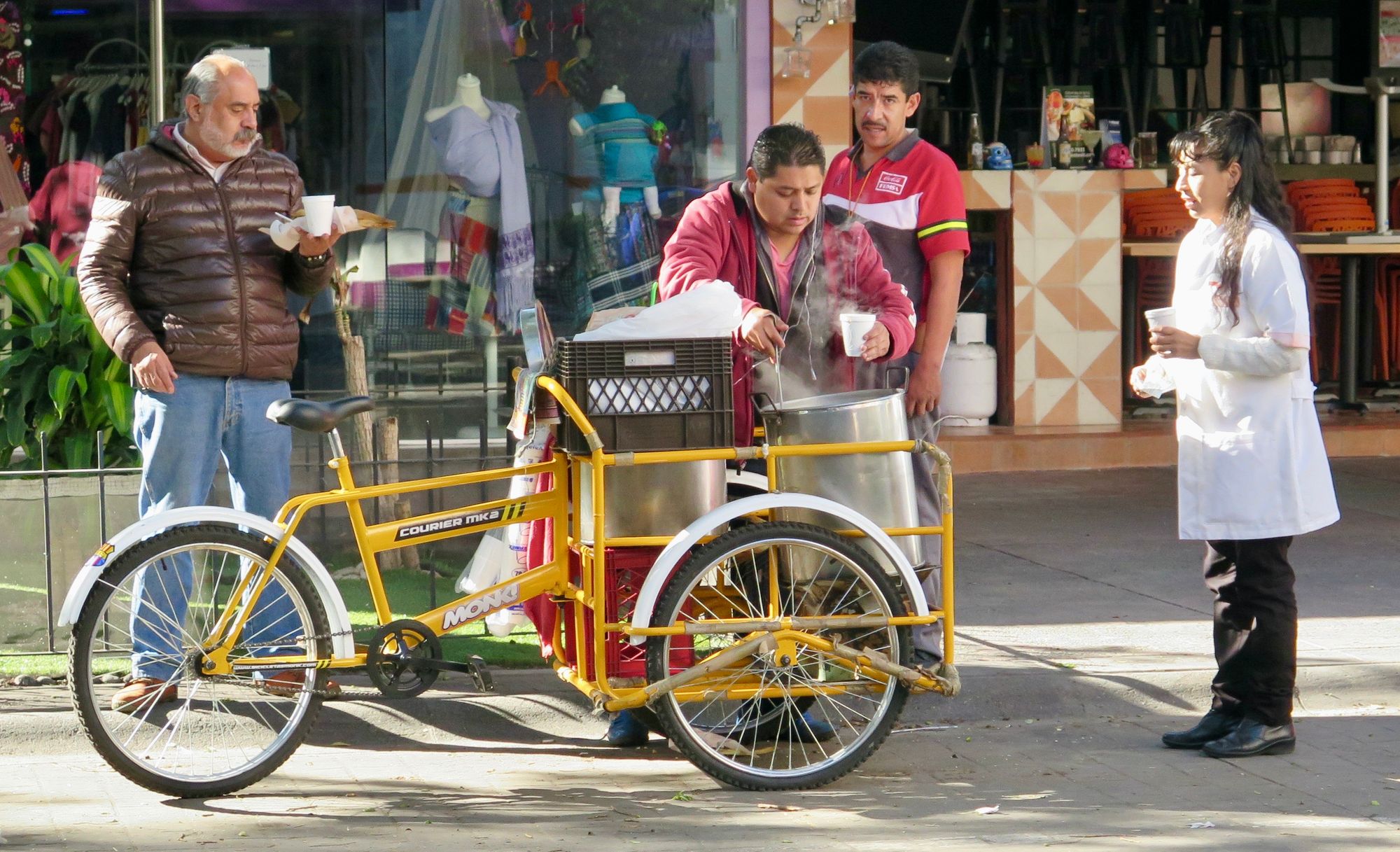
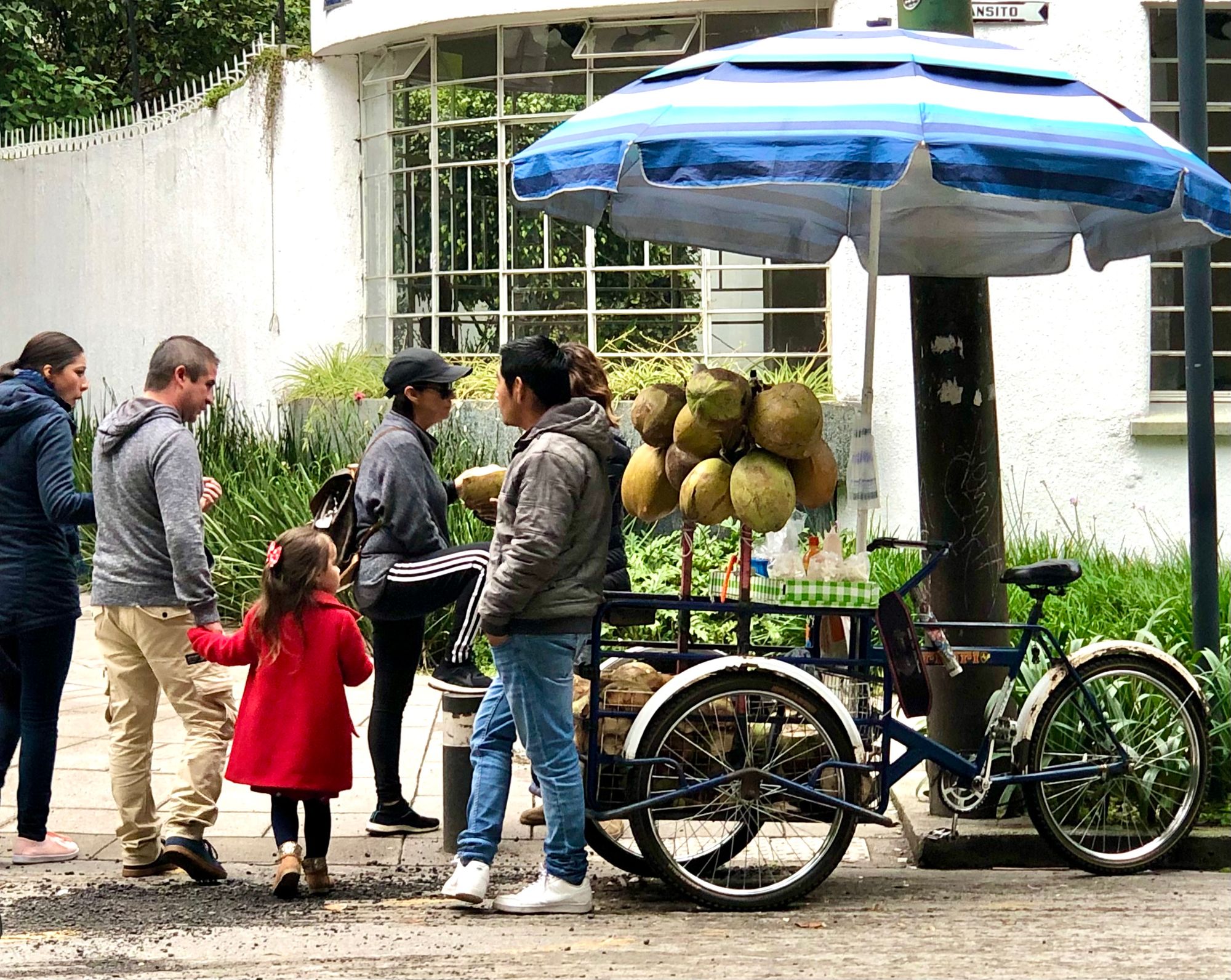
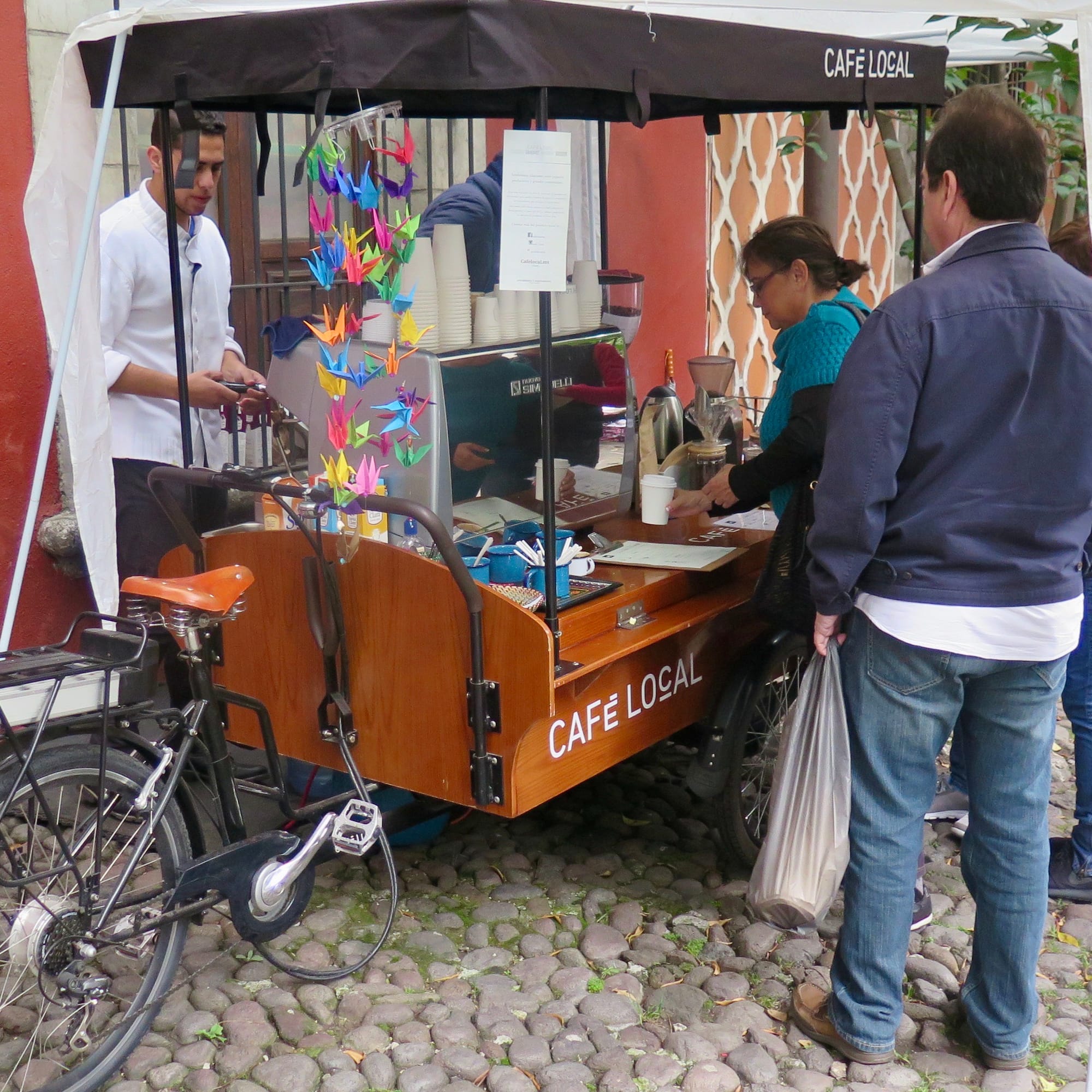
Great Corner Hubs Around the World
Buenos Aires
Because many of the intersections in Buenos Aires have "canted" corners where there's much more space for gathering, at those corners, the exposure for individual stores, cafés and restaurants is significantly enhanced.
In Buenos Aires' Palermo neighborhood, the intersection has no separation between street and sidewalk. There is plentiful seating at the corners, and entrances to corner buildings are canted. Together, these features make the intersection feel like a town square with a focus on social life rather than traffic throughput. What's more, this people-centered design causes drivers to slow down, even come to a stop, as they take in all the activity on the corner. This approach encourages impromptu socializing and helps sidewalk cafés and other local businesses to flourish.
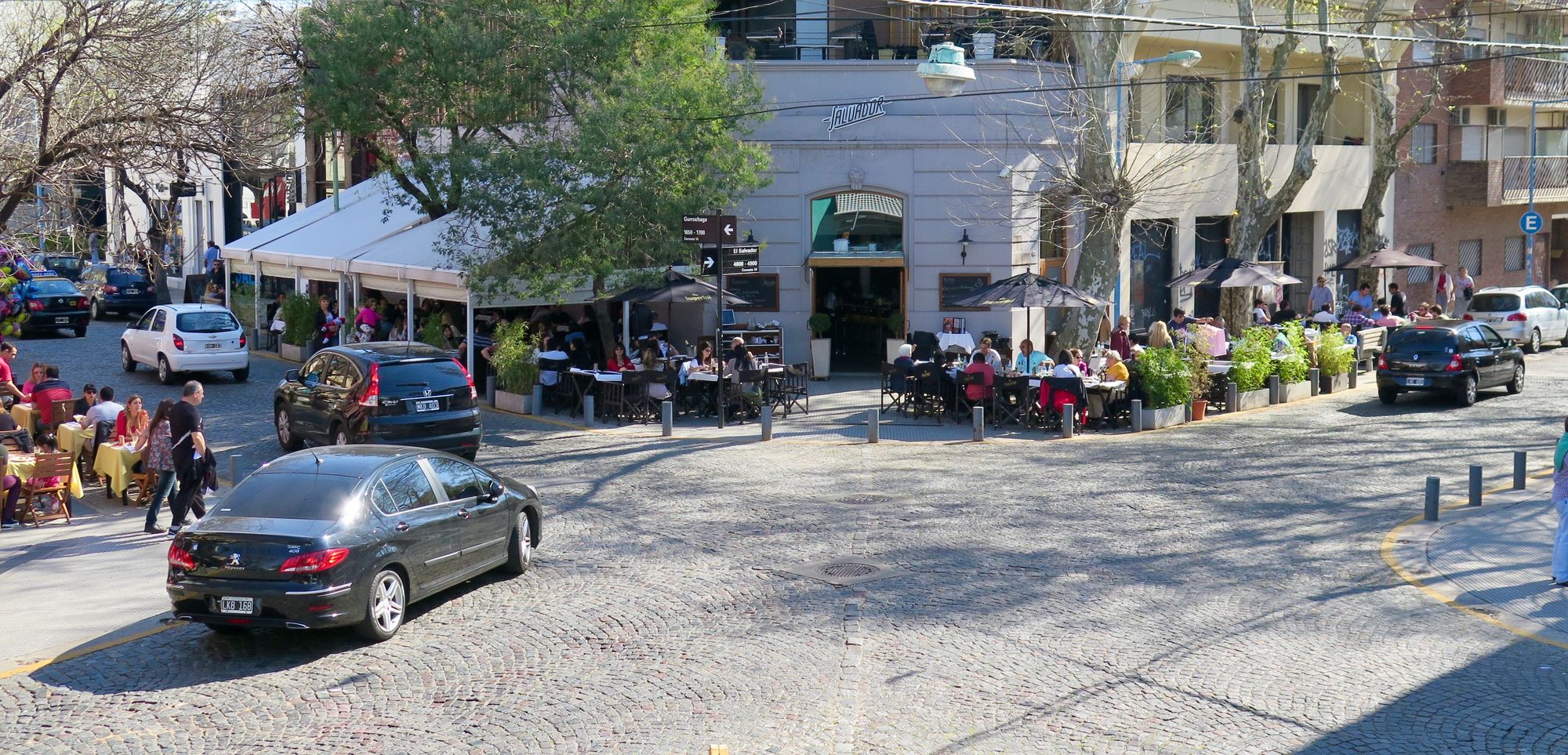
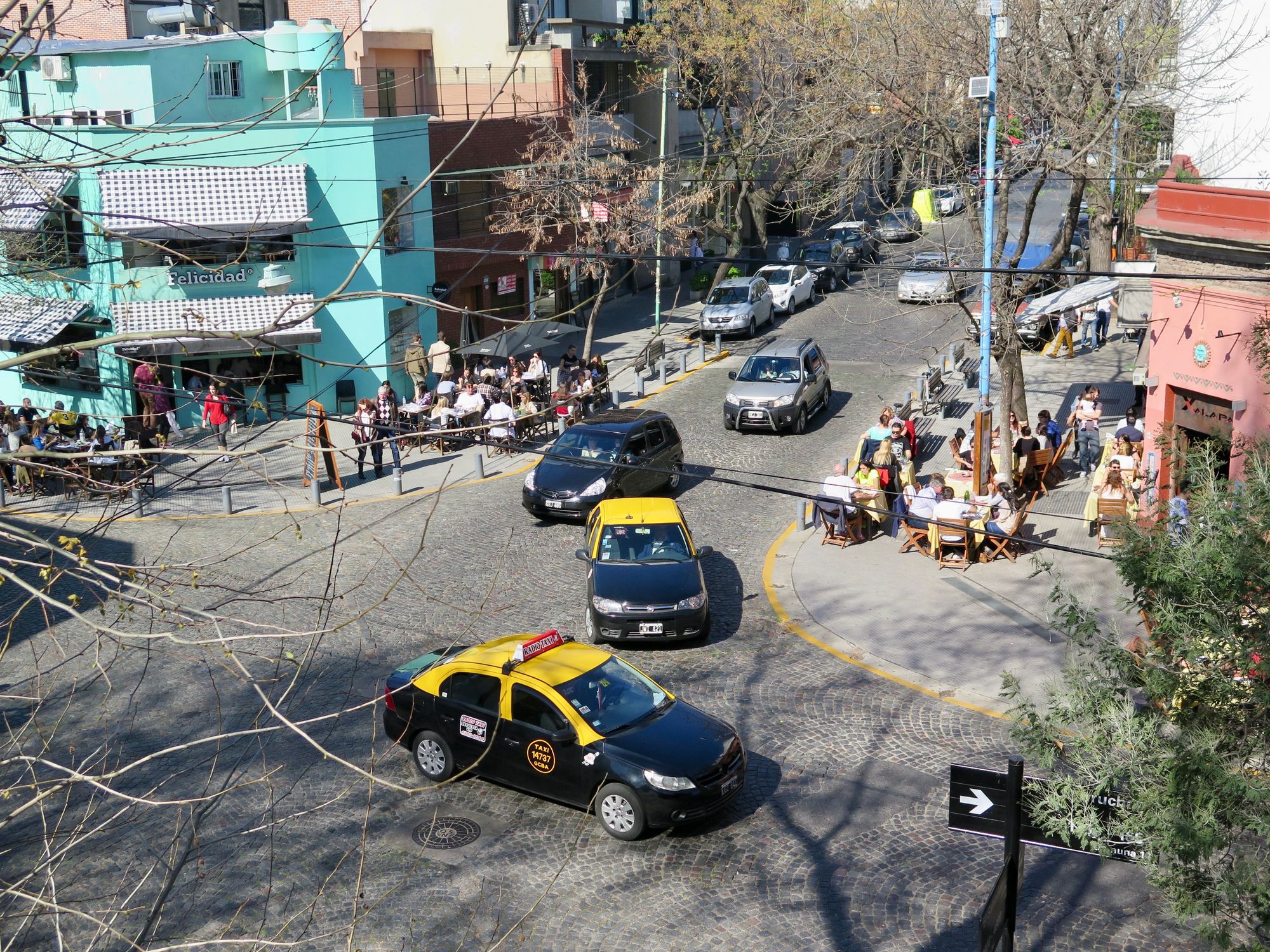
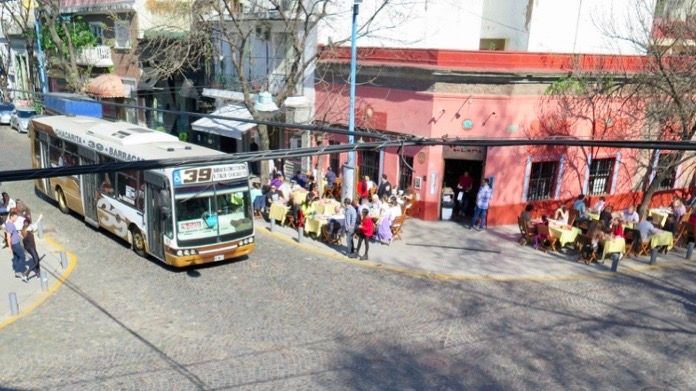
Street corners in the neighborhood foster a lively social scene through their ample outside seating. This corner, in particular, is one of the best.
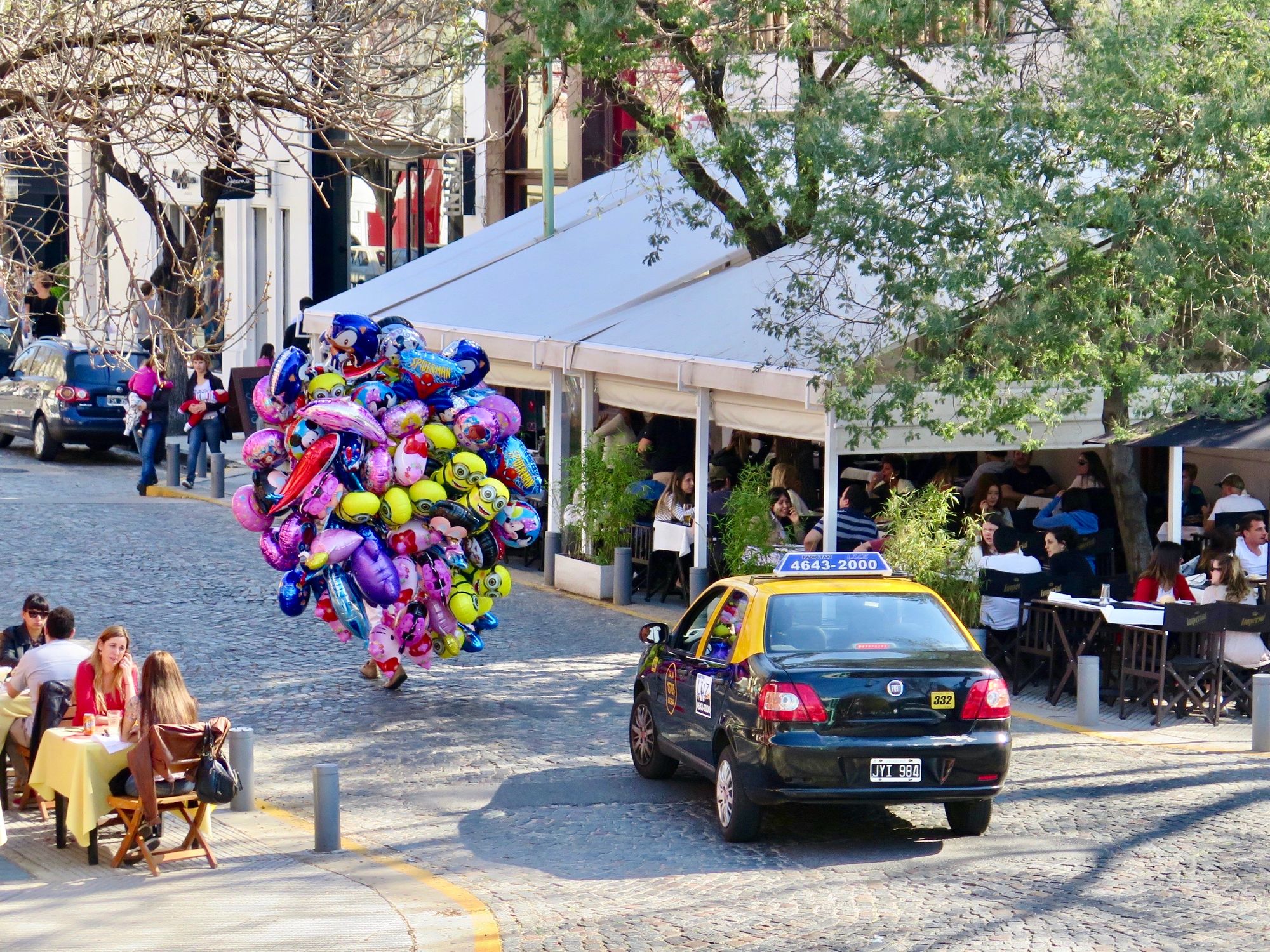
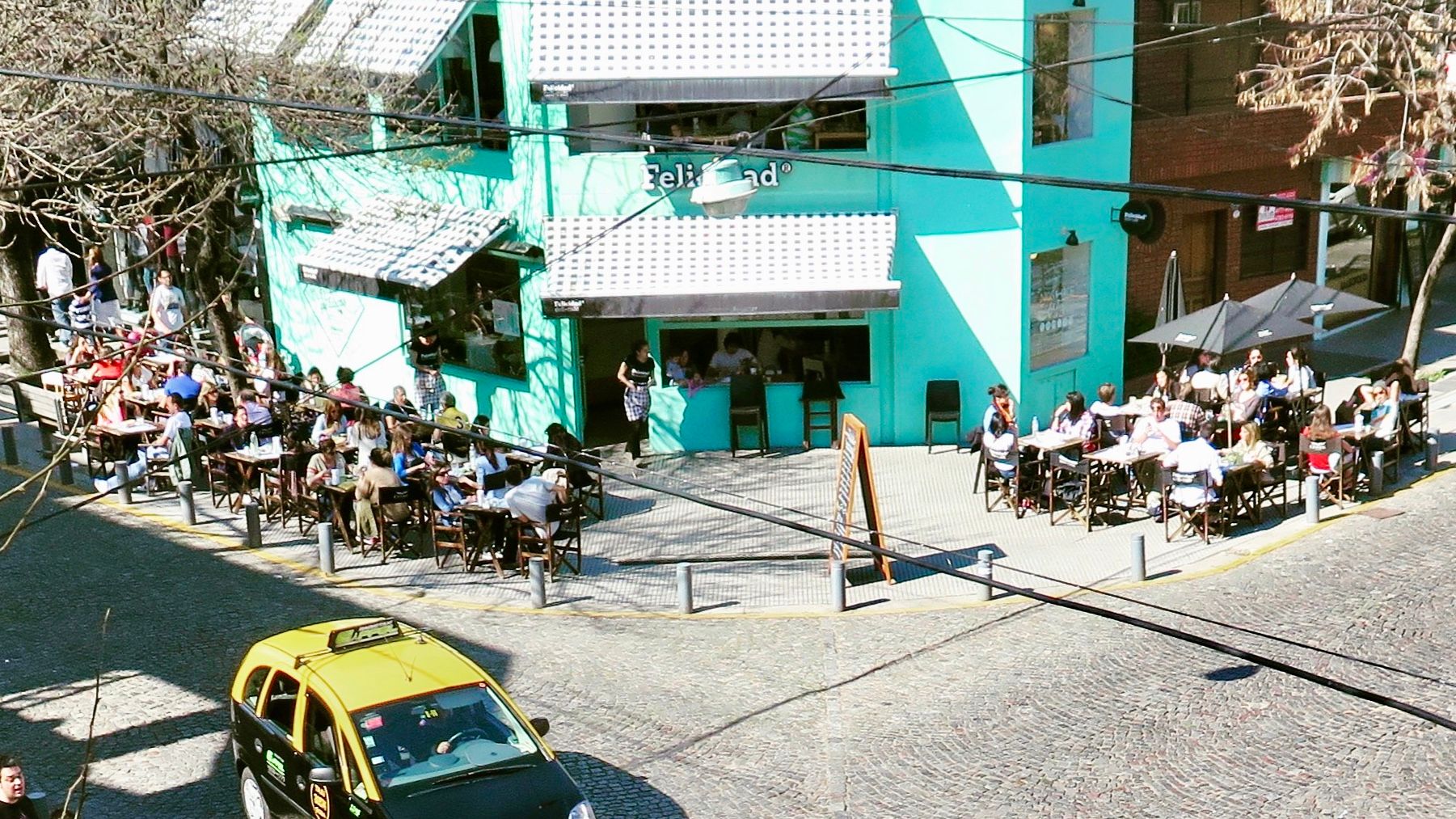
Istanbul
In Istanbul, the corners are often narrow, but that doesn't stop people from using them to their utmost potential. Through compact tables and stools, plenty of seating is set up wherever it can fit, especially close to displays of goods and eateries. There is a clear message that corners are for people, businesses, and social life.
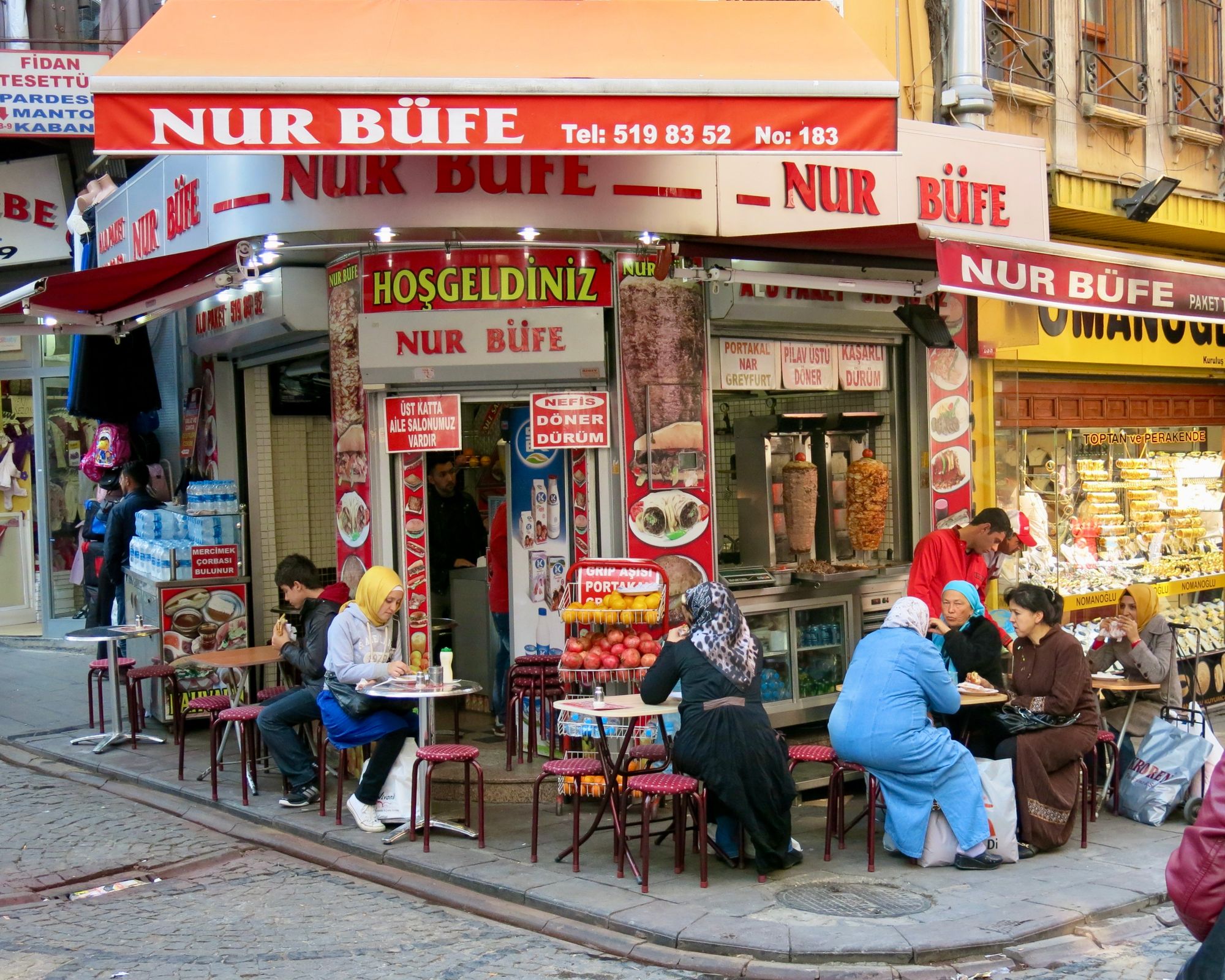
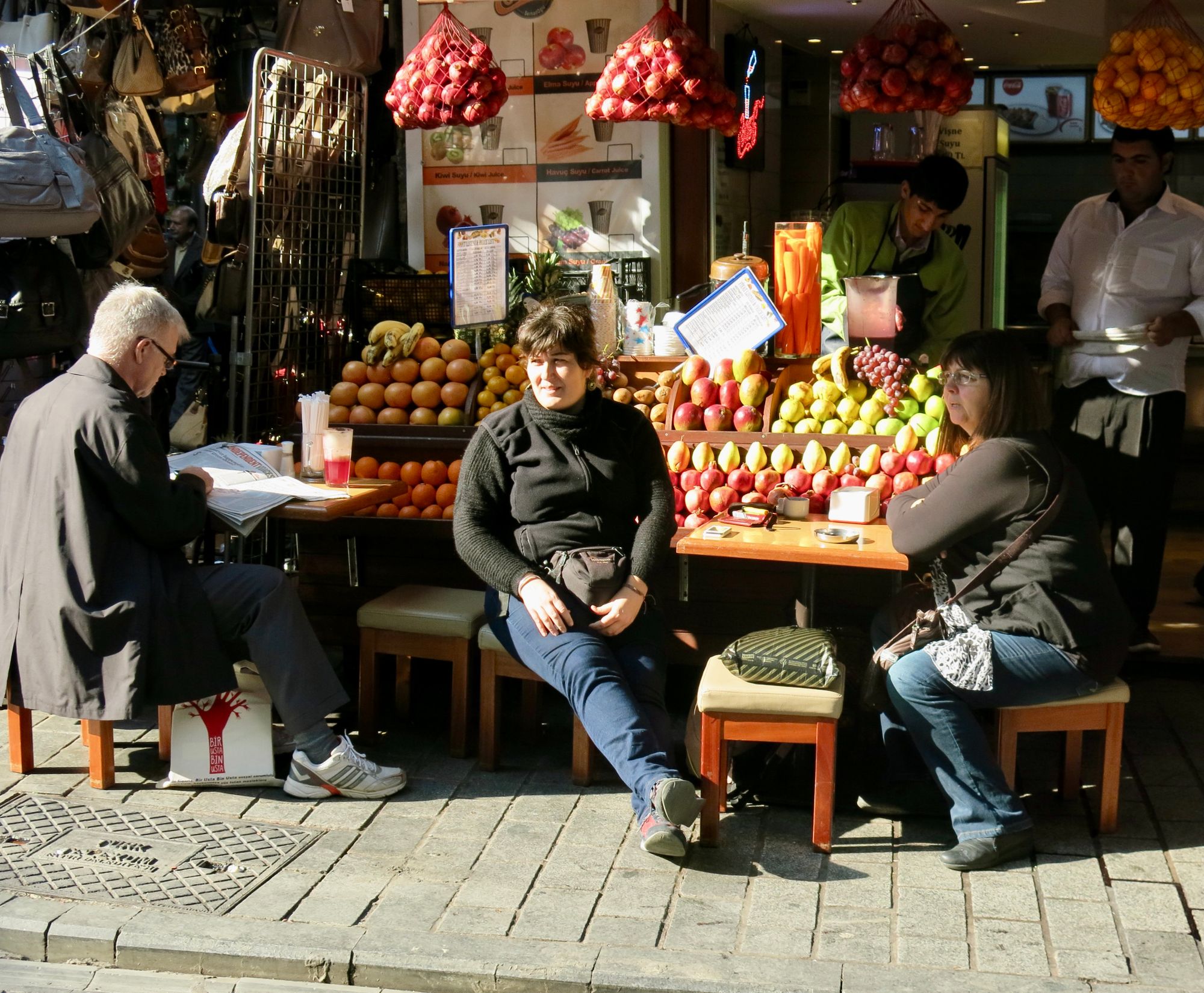
Paris – capital of corner cafés
Paris is one of the best cities we know of when it comes to maximizing the potential of their corners. Their corner cafés are iconic and recognizable across the world – an example to follow for those wishing to take back their intersections.
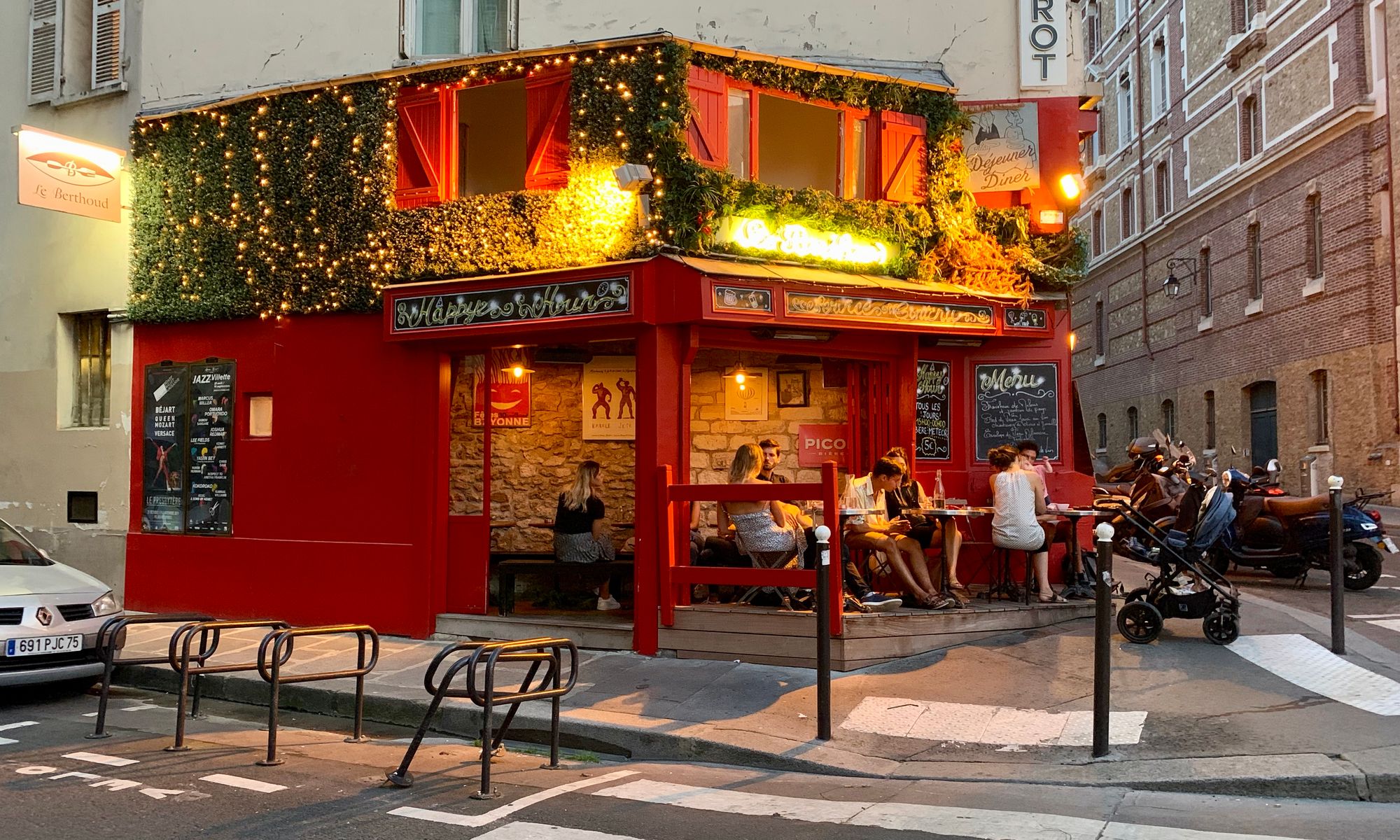
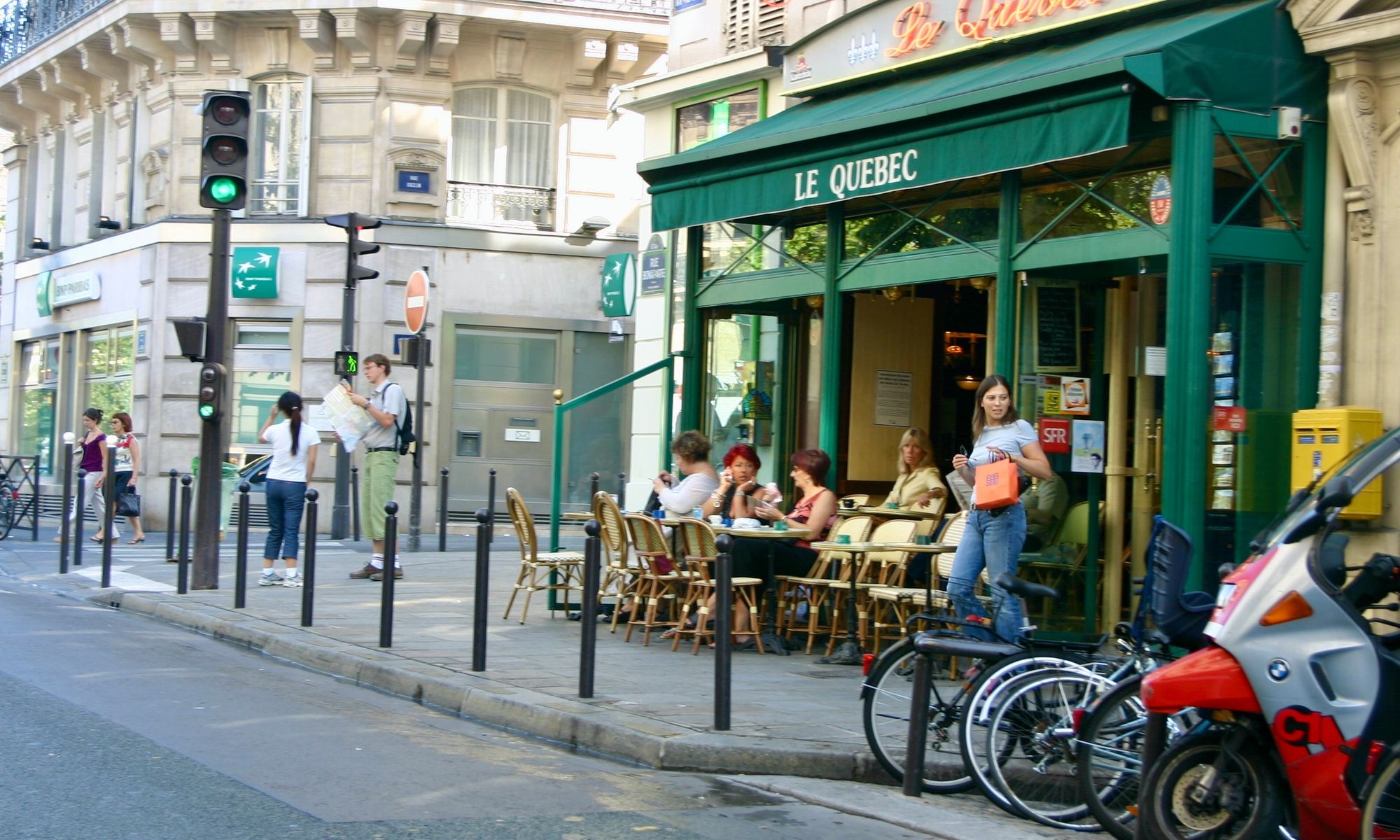
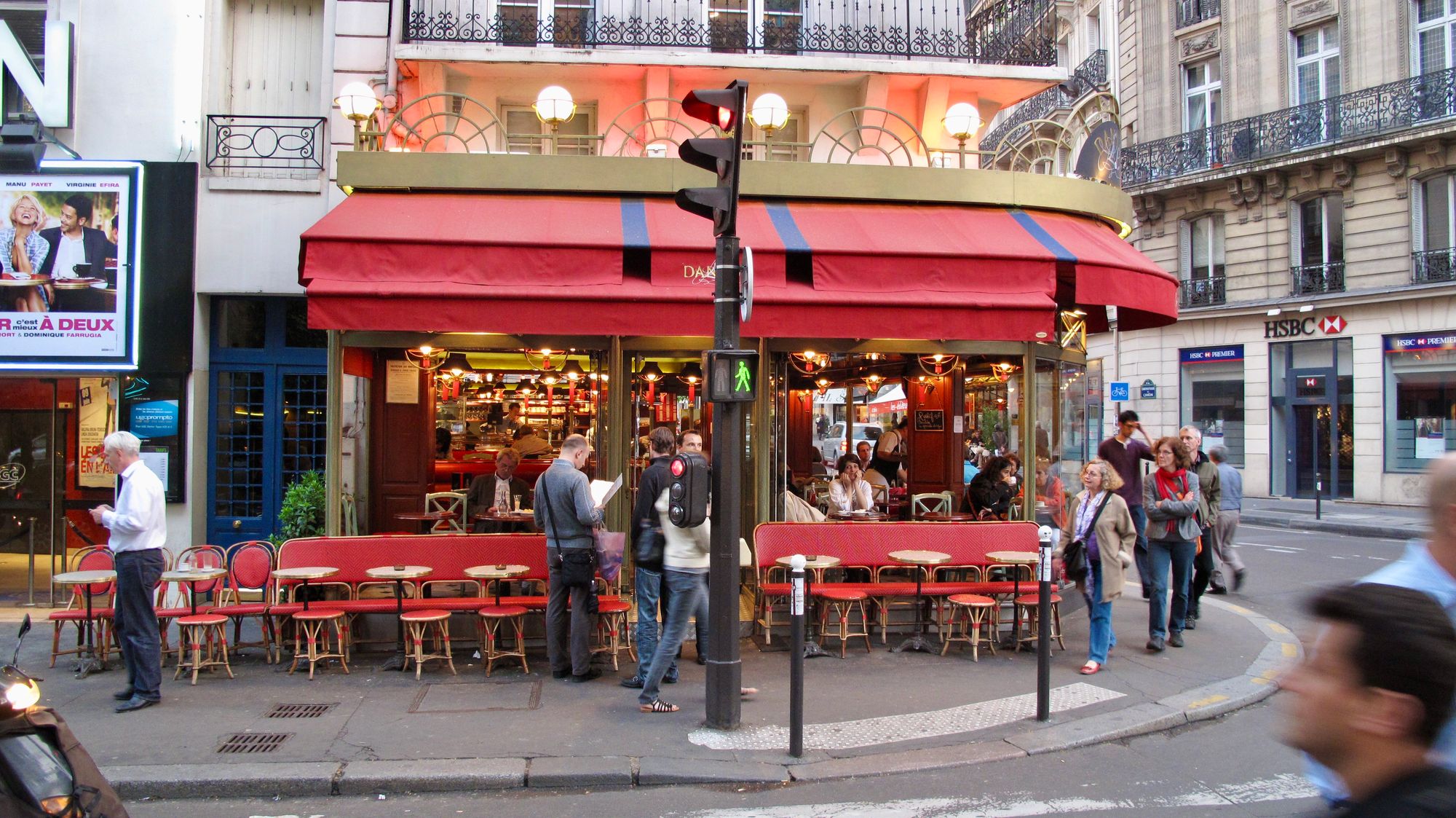
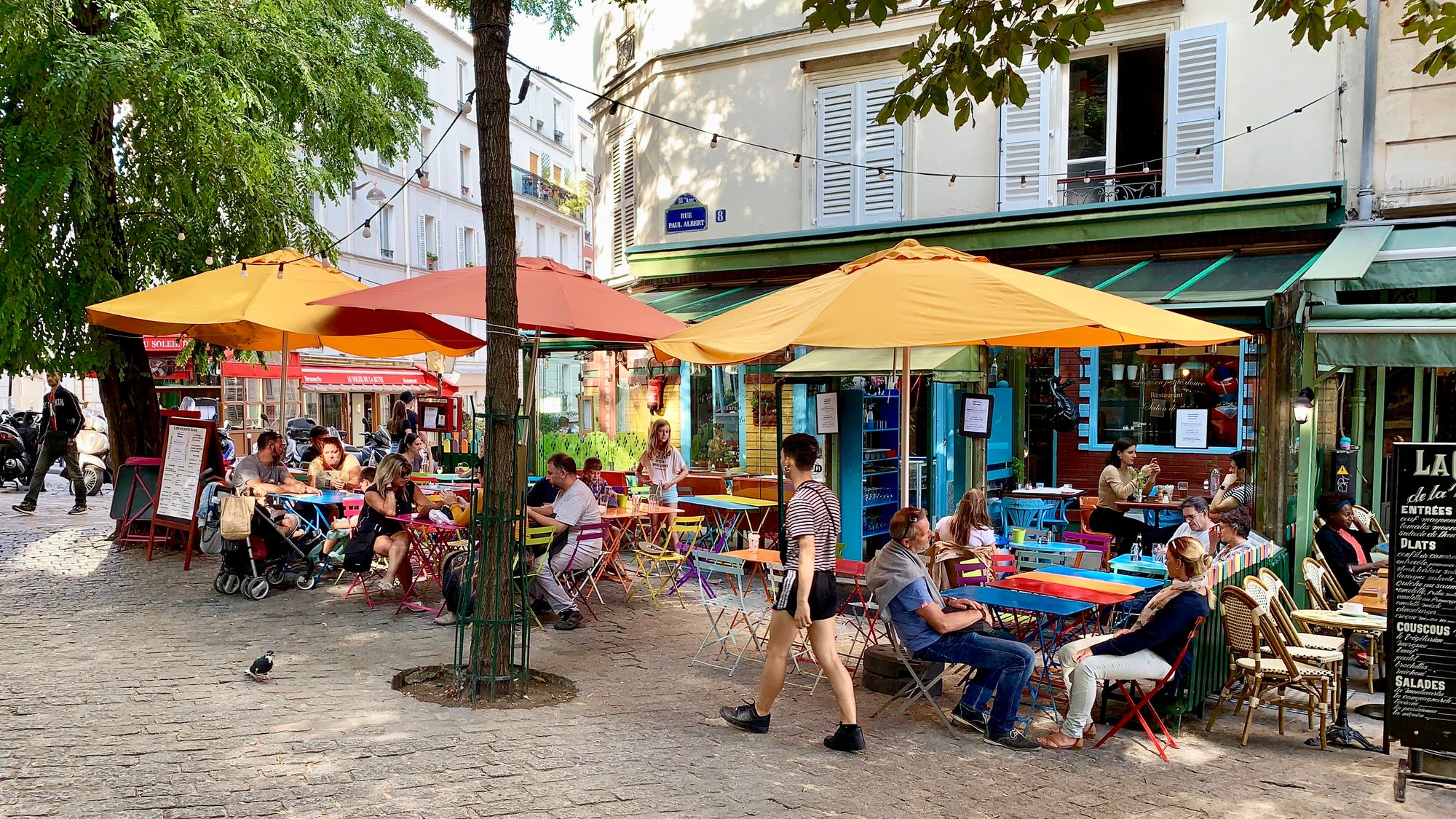
Amsterdam
Amsterdam, a city of corner cafés and book stores, has numerous corners with outdoor seating like rows of chairs for restaurants and great benches. Cafés and restaurants pay a tax to the city per meter squared of sidewalk terrace they use for seating because it greatly benefits their businesses.
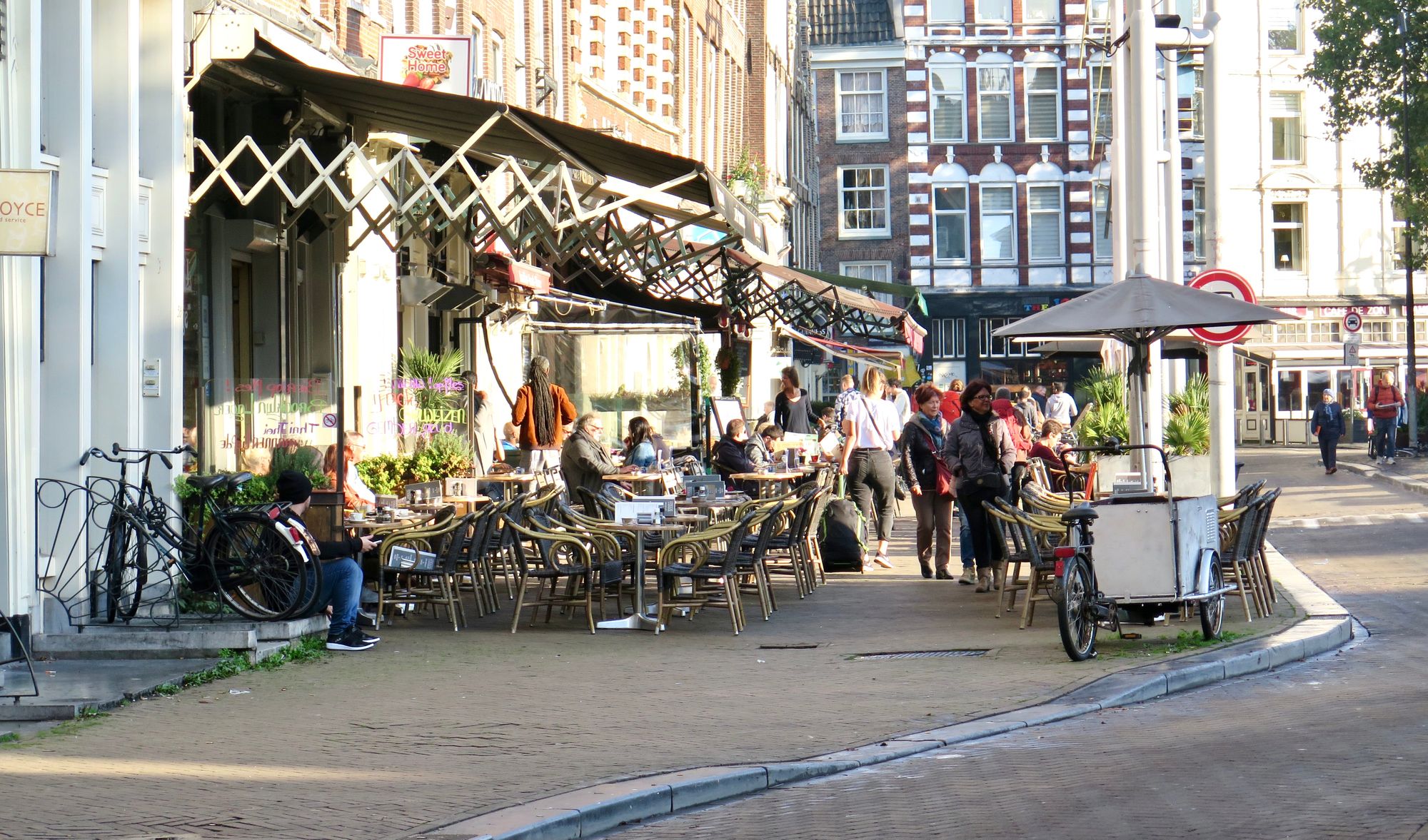
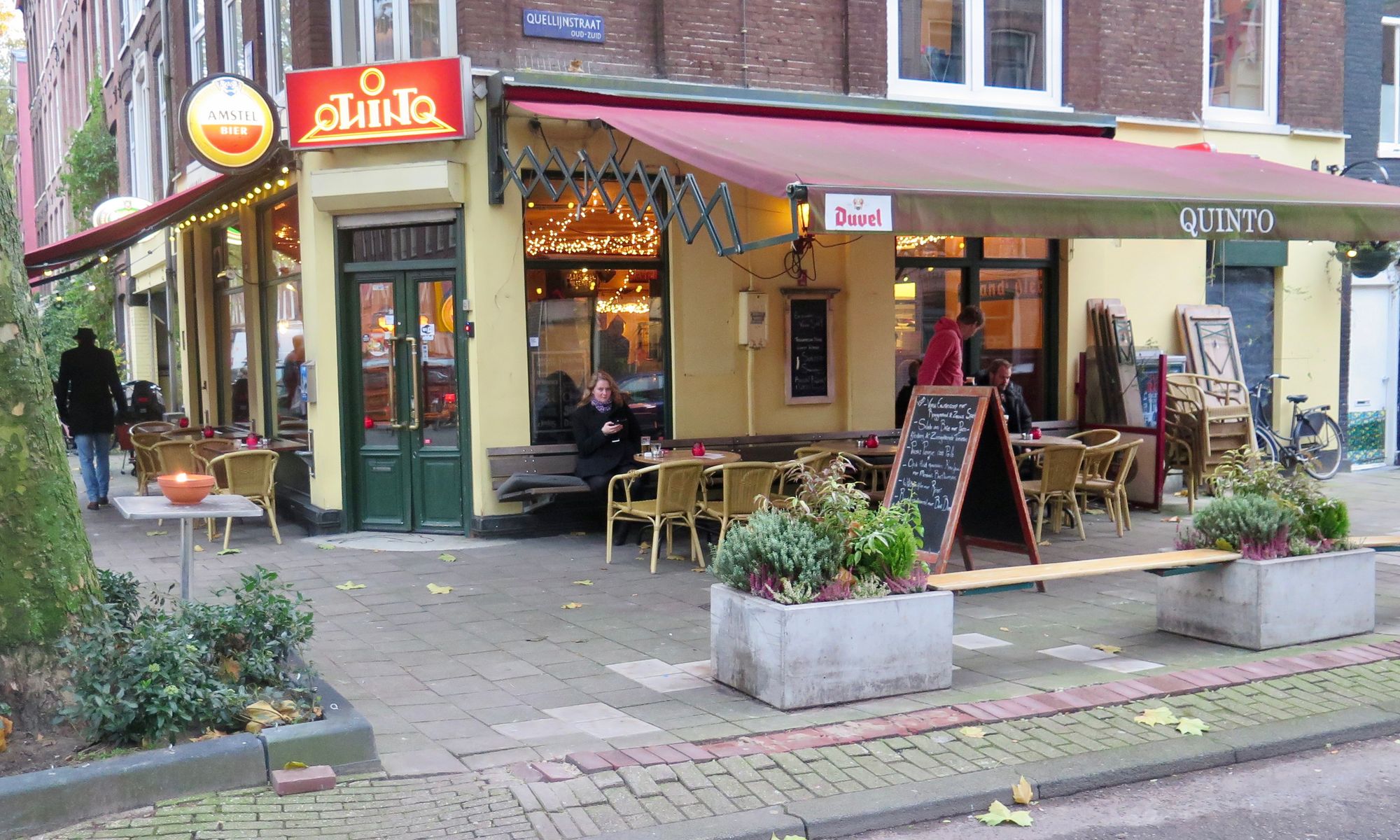
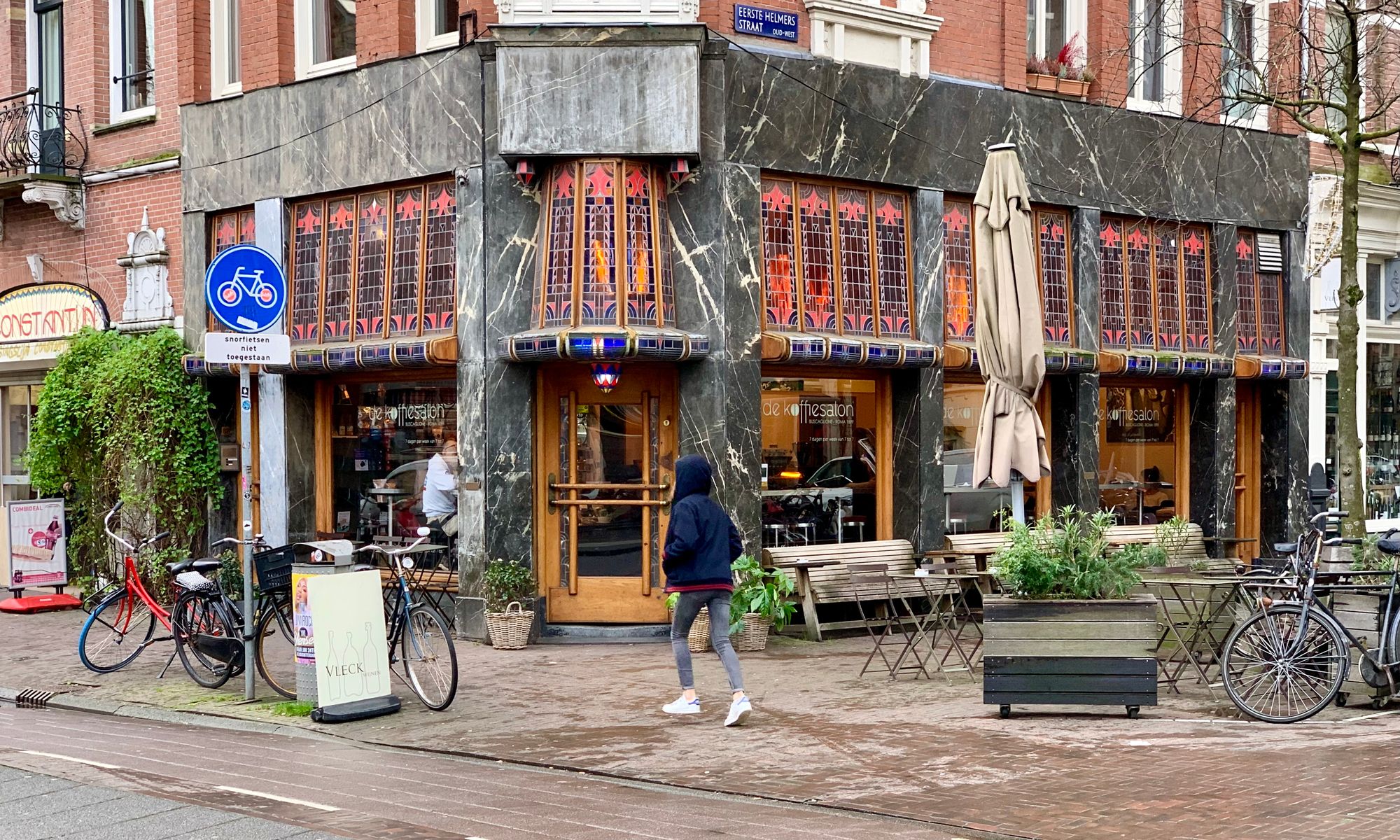
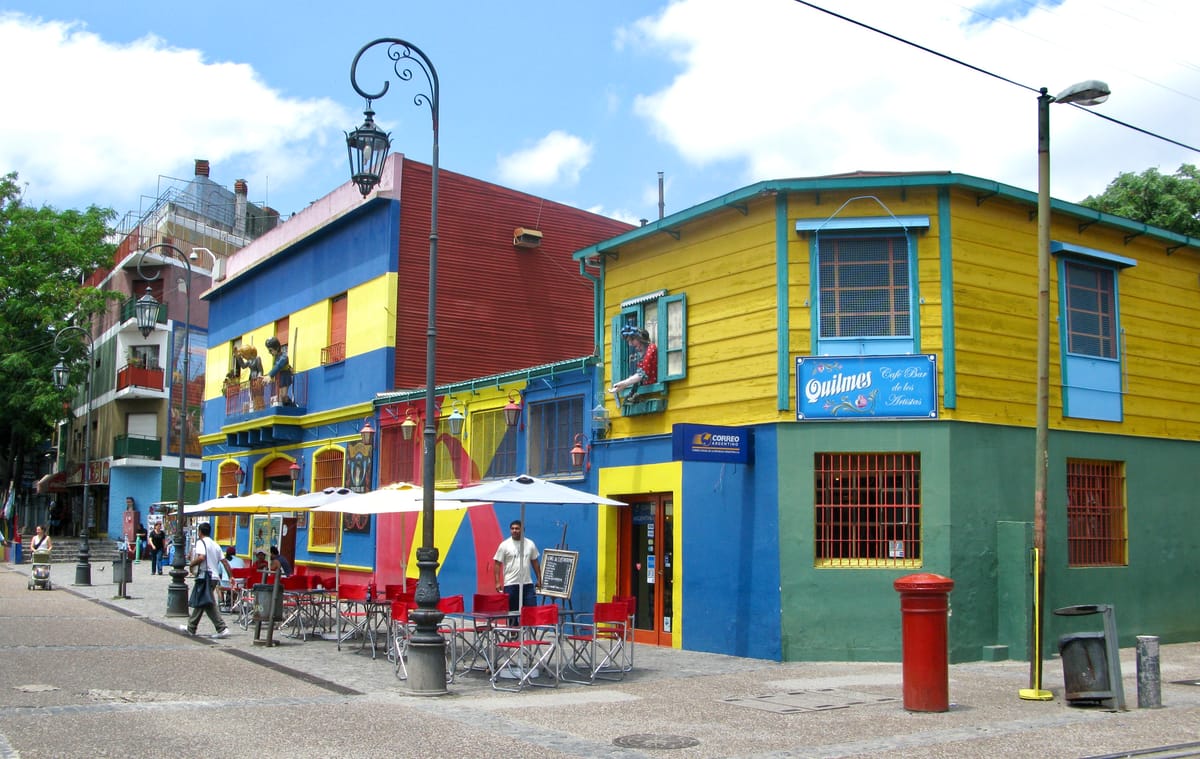
Takeaways for Global Impact
From Intersections for Cars to Corners for People
Transportation agencies prioritize improving traffic flow above all else, and the intersections are where they apply their expertise, mainly by getting rid of any "obstacle" that stands in the way. Unfortunately, those "obstacles" are often people and human-friendly amenities like benches.
The transportation playbook involves adding turn lanes, widening lanes, enlarging the radius to help flow, and limiting pedestrian walk times to keep them out of the intersections. The result is what we call "Killer Intersections" because they kill all social or commercial life in the vicinity while becoming significantly more dangerous places for pedestrians.
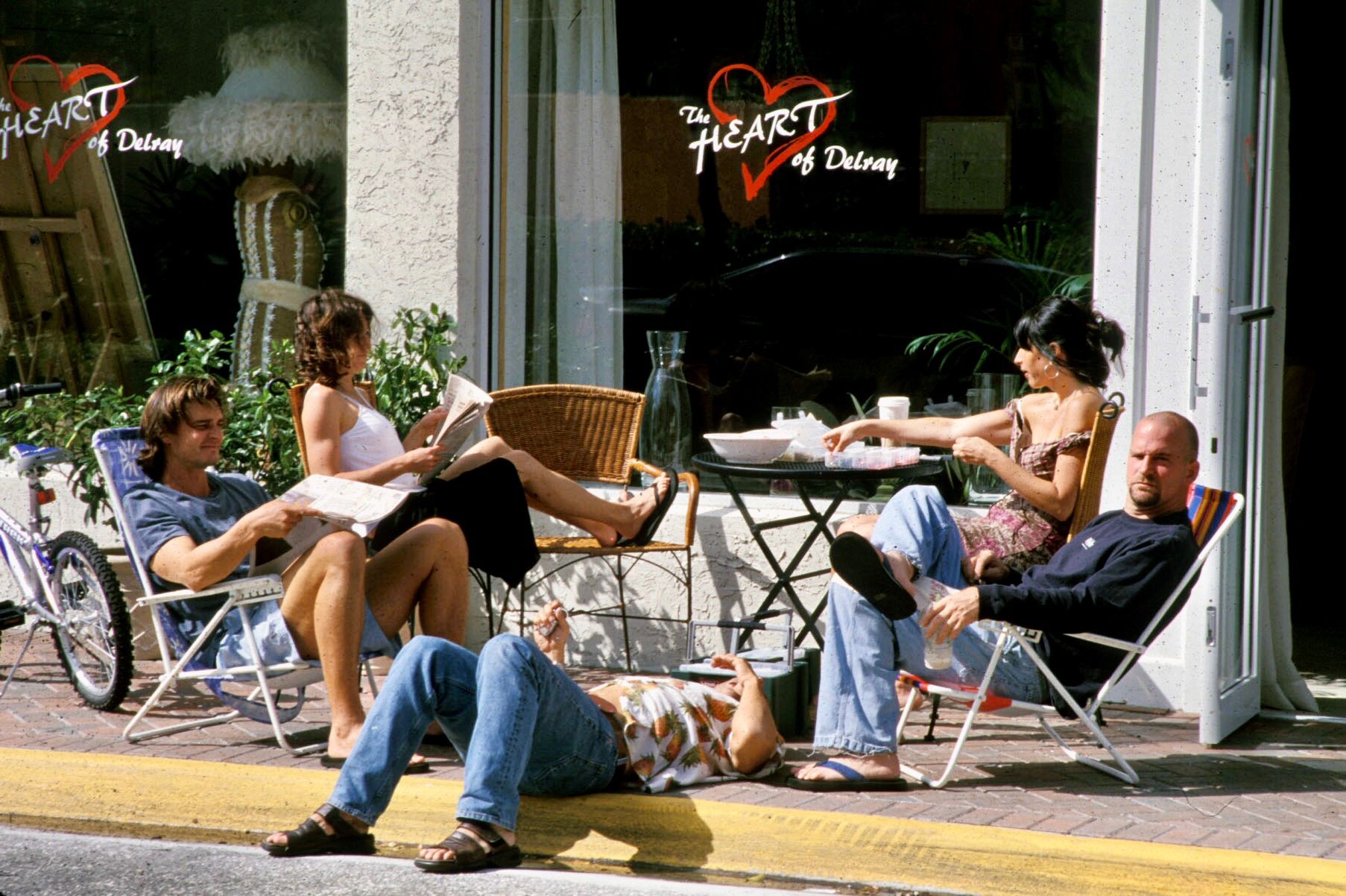
Changing the emphasis from the car culture we have embraced for the last 75 years to a culture where communities and social life are prioritized is a big shift but one that is very important to make if we want a brighter future. However, doing so goes against the goals of the powerful transportation and mobility industry which controls land use and development in most communities, making billions off of the gradual erosion of the country's social and community fabric. But we can't back down. Our health, happiness, and prosperity are at stake.
This shift from cars to people may seem like a daunting undertaking, but the catalytic first step is simple. Just put a "bench" on the corner. Take back the intersection. This one small change will have ripple effects that spread down the block and through the neighborhood. It will be a natural process, because as we have always said – seen below being quoted by the head of Volkswagen – "if you plan cities for cars and traffic, you get cars and traffic. If you plan for people and places, you get people and places."
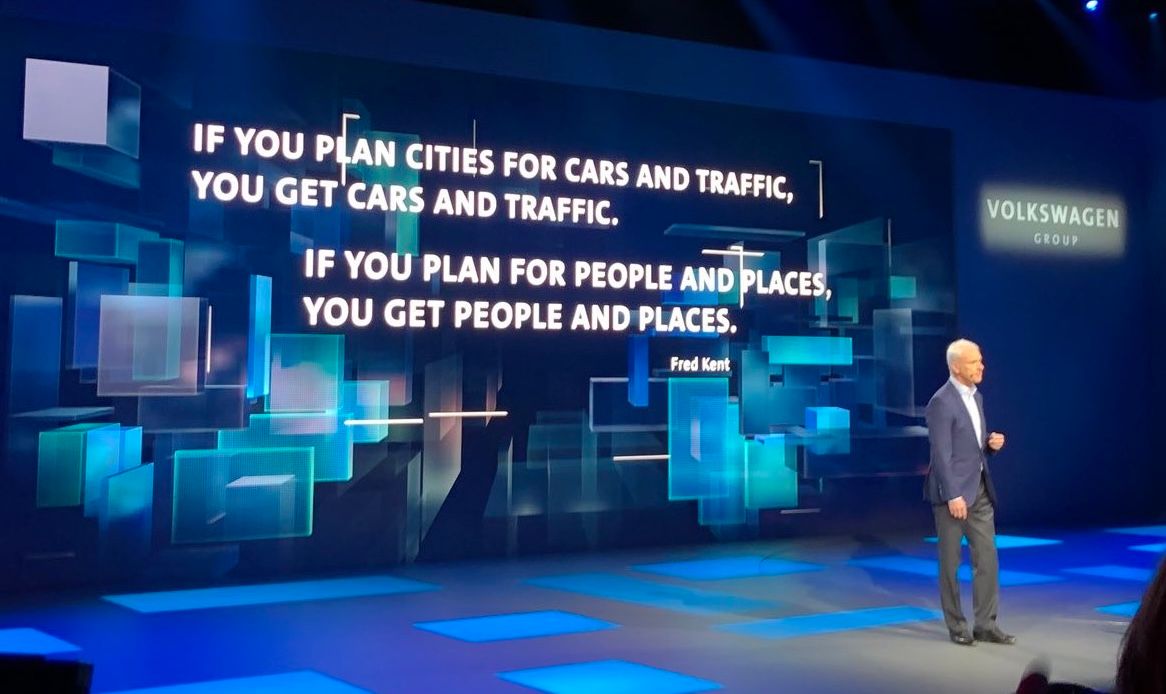
Detroit did it. Detroit is famous for being the car capital of America and maybe even the world. Yet it is also the poster child for the Unimaginable Actually Happening – they transformed a huge, central Killer Intersection into what is now widely hailed as the best public square in the United States. They showed us how we can move away from car-centrism and take back space for people. If they can do it, any place can.
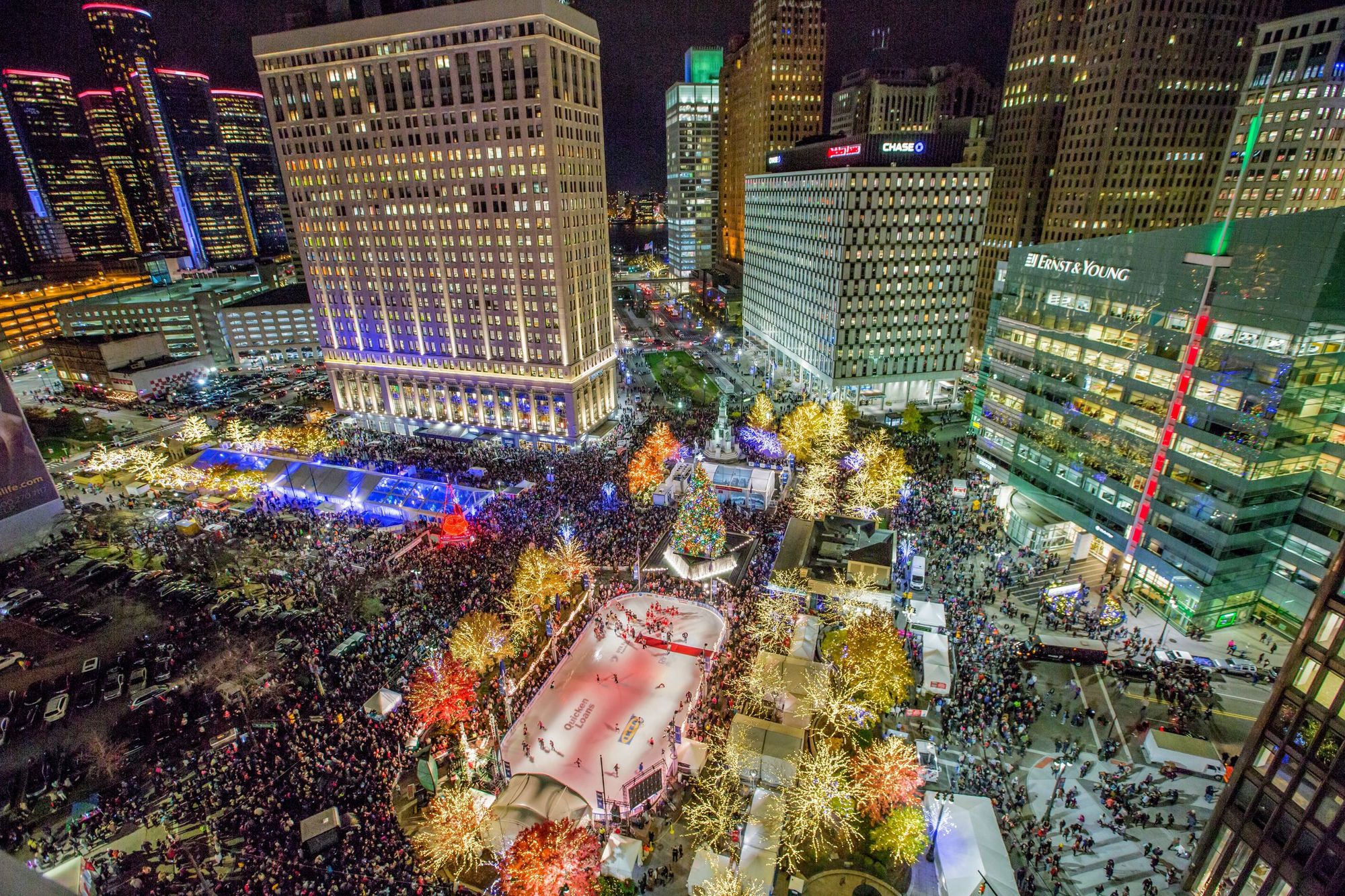
Improvisation and Reciprocal Gestures
Creating systematic change feels like an enormous undertaking, but it doesn't have to take a big investment or come from one top-down power — small changes sprouting up from the ground level are catalytic and can have widespread impacts when planted in the right place. A bench on the corner is the perfect way to seed change. Additionally, improvisation is a great way to implement new ideas. It is infectious. We use the term reciprocal gestures to explain how when one resident or business does something new and creative, others are inspired and follow suit, trying to do it better. Placemaking of this sort builds both relationships and unique places that benefit everyone.
Applying this kind of improvisational placemaking to public seating is invaluable. In communities where corners are gathering points rather than soulless intersections, drivers realize that they are guests on the street and act accordingly by slowing down; thus, the neighborhood becomes safer for everyone. People feel more comfortable lingering and chatting outside with friends, chance encounters become the norm, families feel more secure about their children playing outdoors, and there are many eyes on the street that look out for each other around the clock. Additionally, when there are more people out and about, there are customers for businesses and patrons for restaurants.
A Bench-Led Renaissance of Social Life
Active corners are the seeds of a renaissance for social and commercial life. If we make street corners more welcoming and comfortable by starting with something like a bench that evolves further, creating ripples of social life that travel down the block, we can make our streets and consequently our neighborhoods, towns and cities safer, happier, and more prosperous places to be.
More on Seating
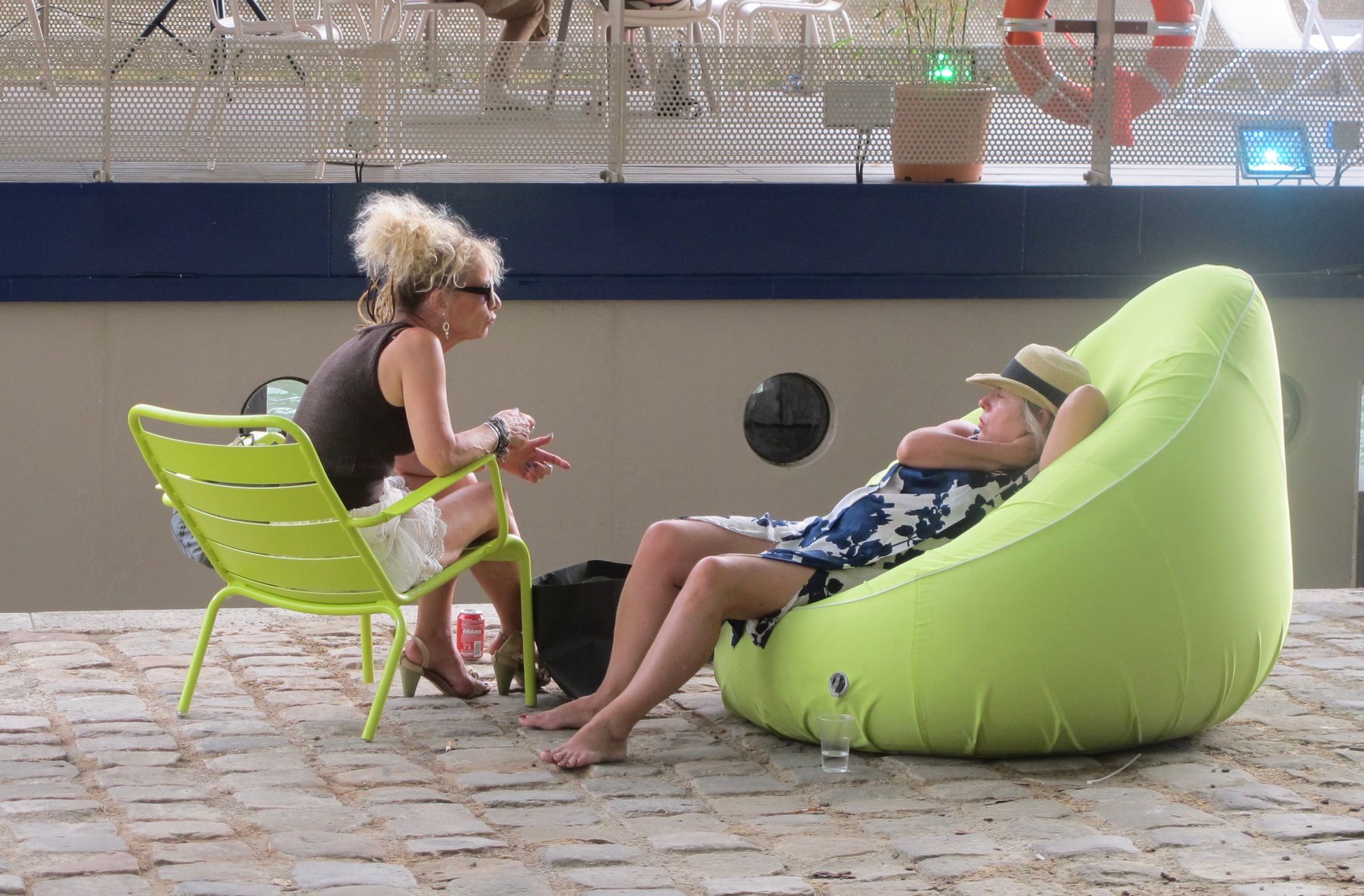
More on Amenities
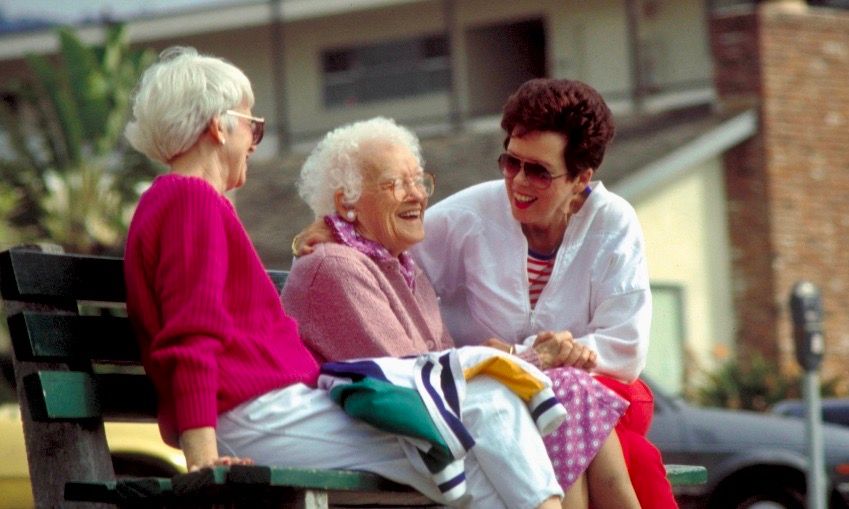
Who We Are
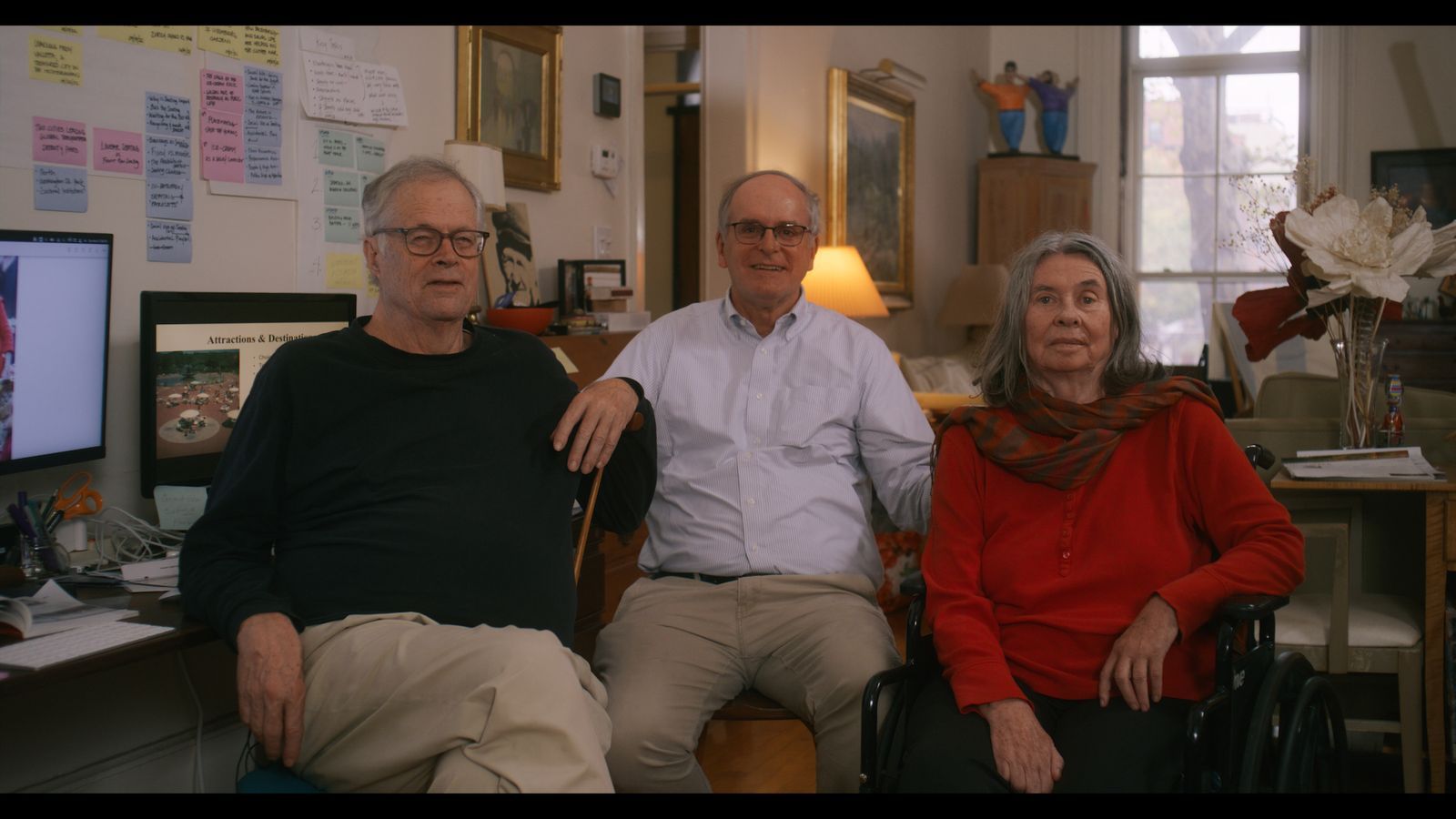
If you are interested in our helping to build a community-wide campaign or catalytic interventions, presentations, exhibits, and more or supporting the cause contact us.
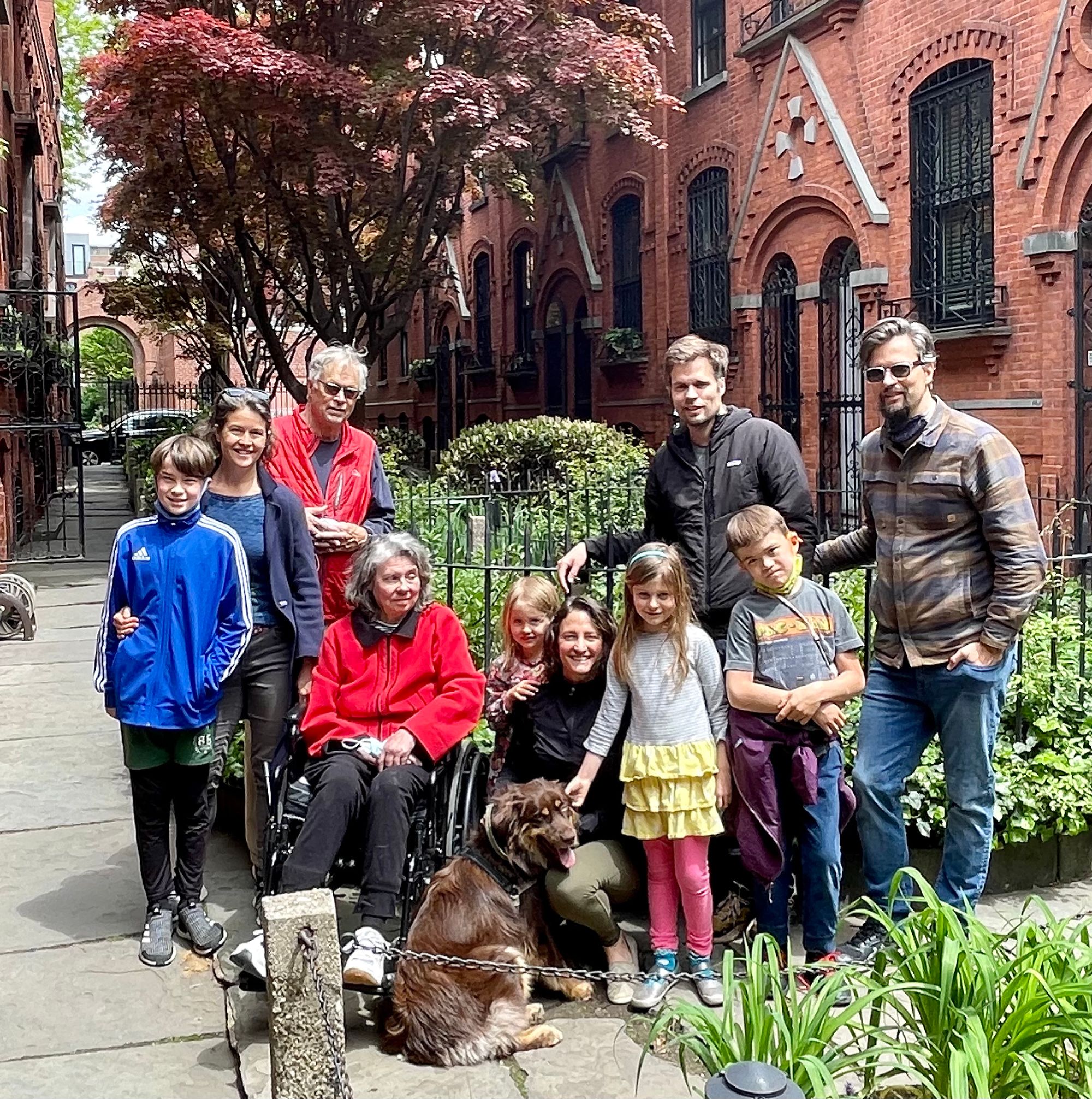
"There are more and more of us fighting for a different vision of the world—a world that takes care of our most precious resources: the air we breathe, the water we drink and the places we share." - Anne Hidalgo, Mayor of Paris, France





